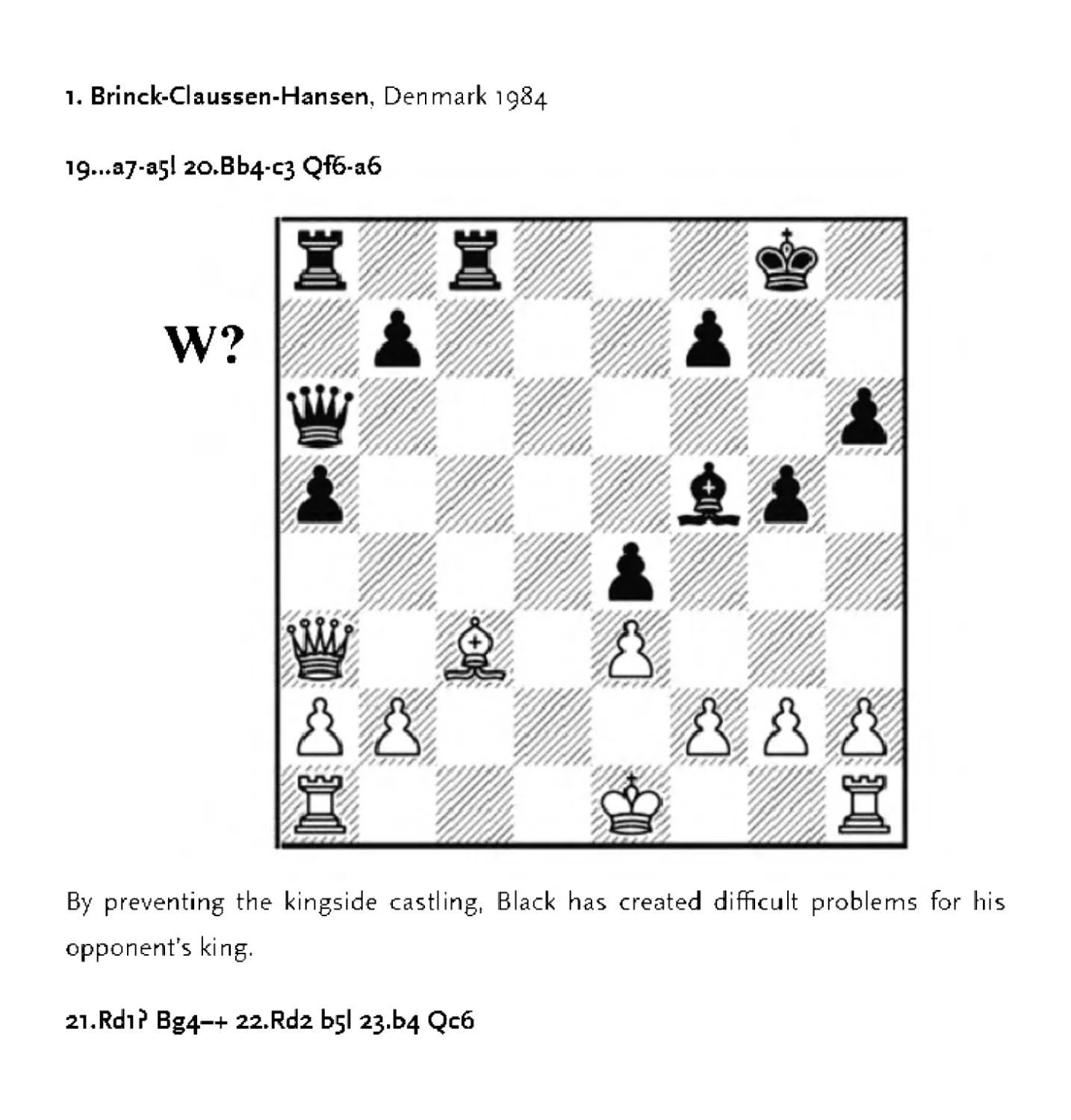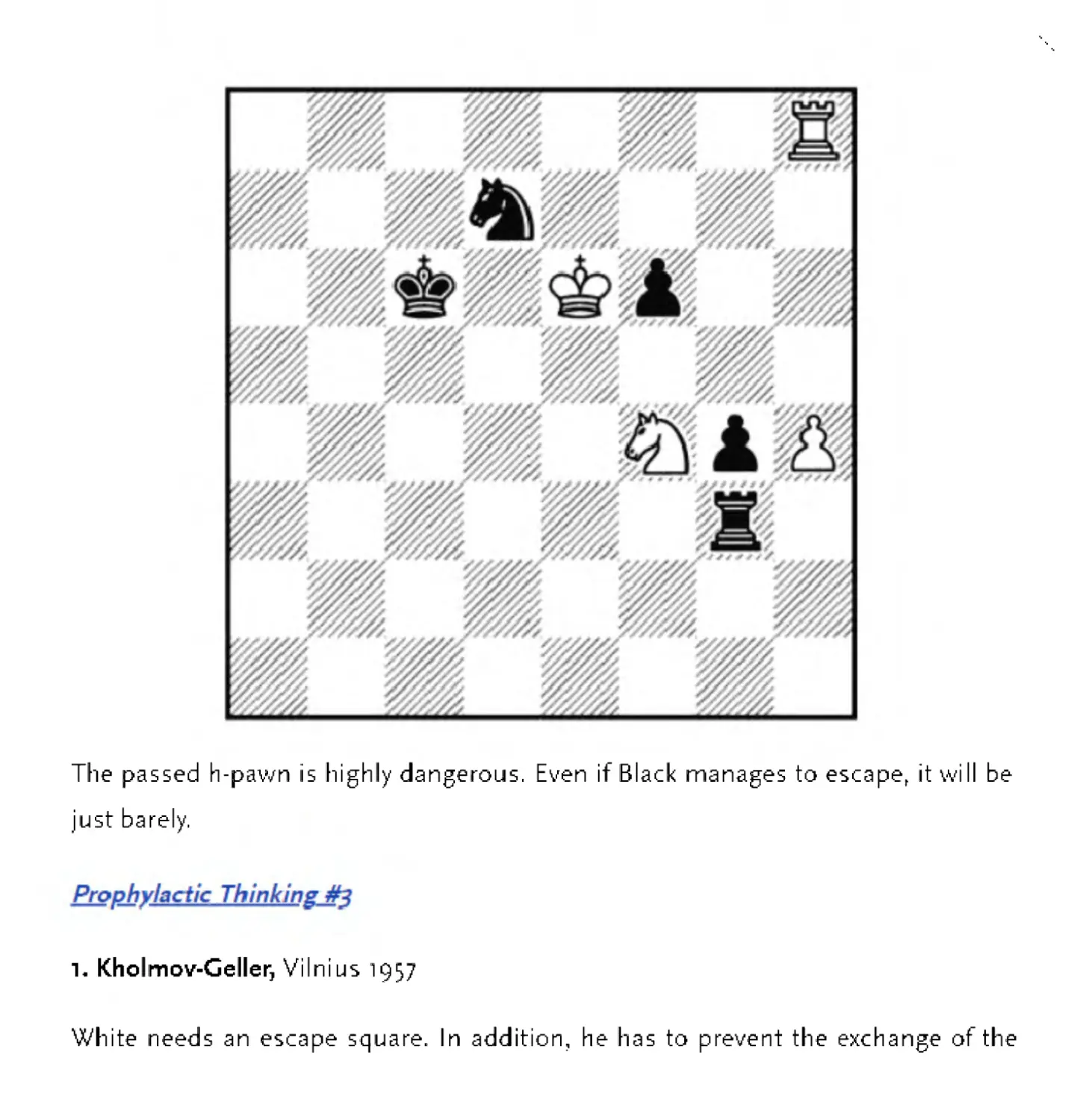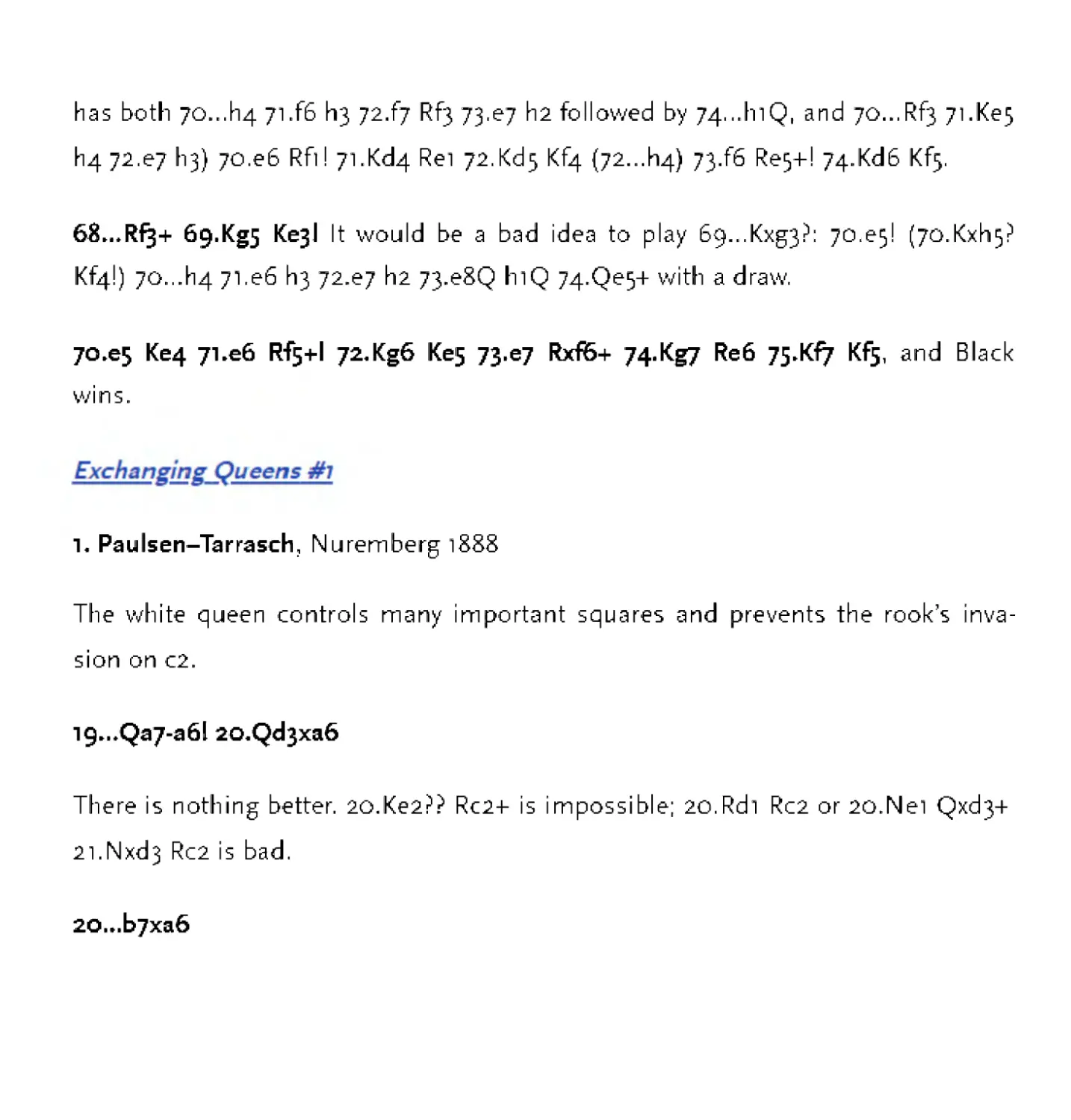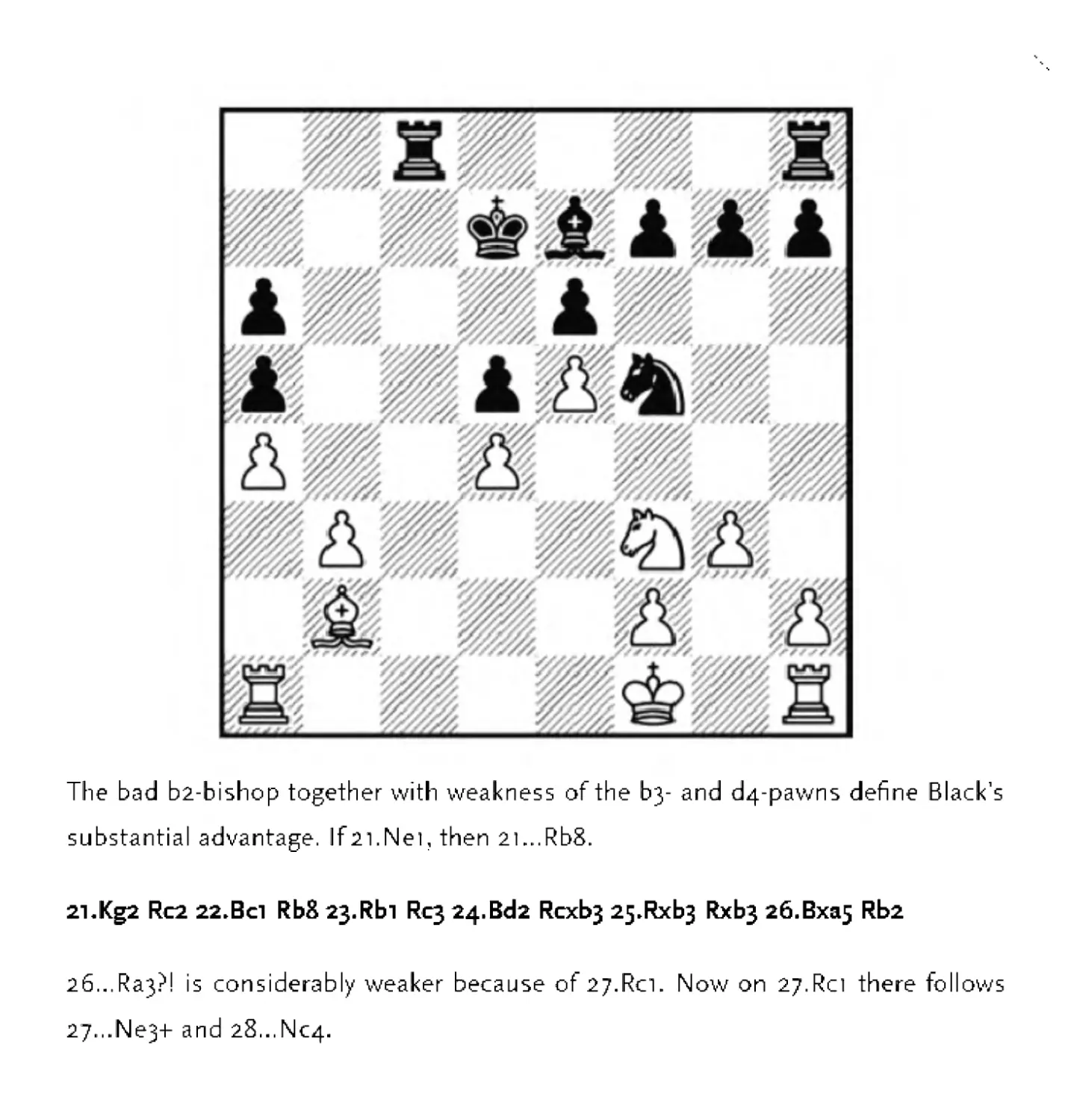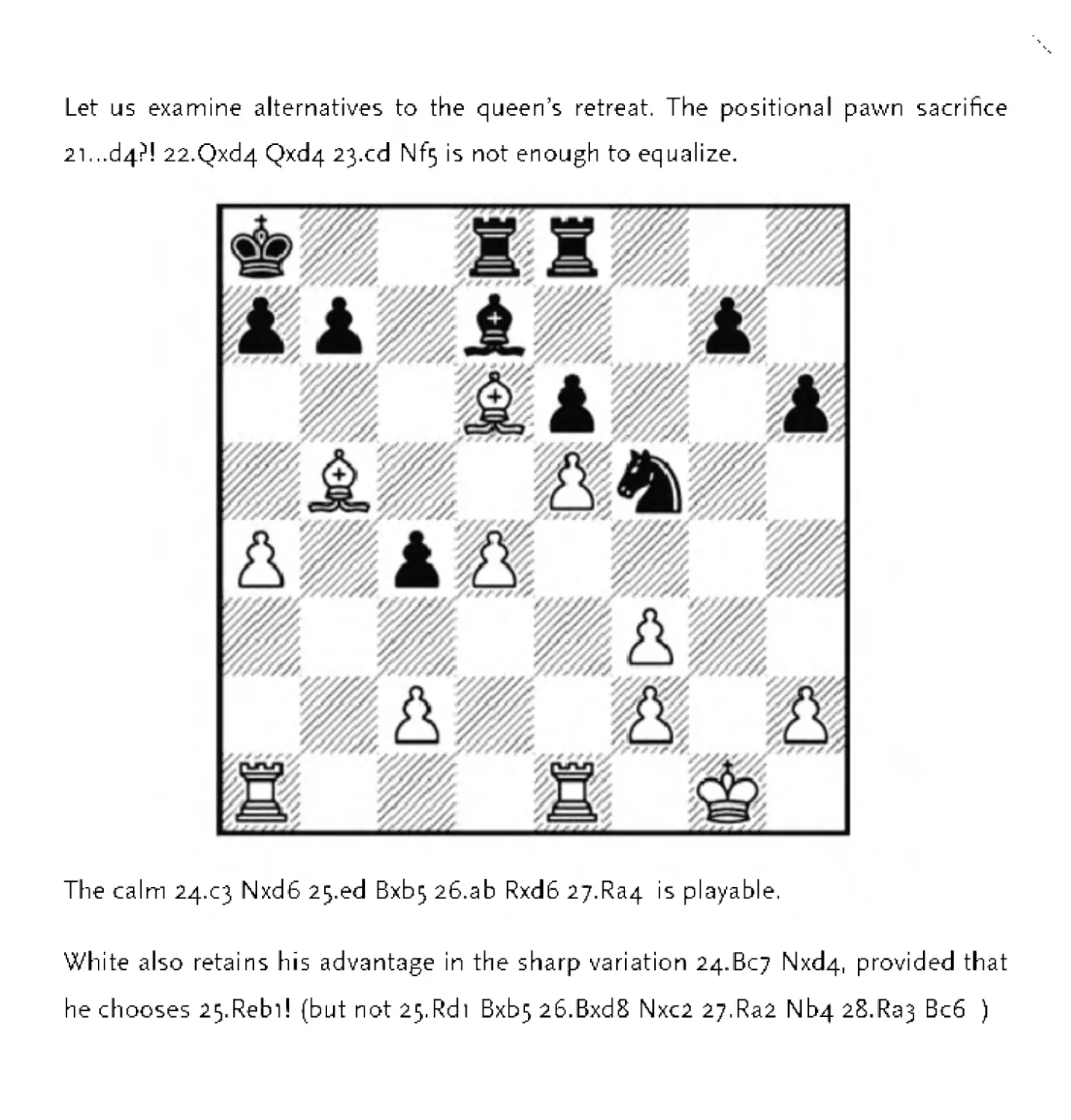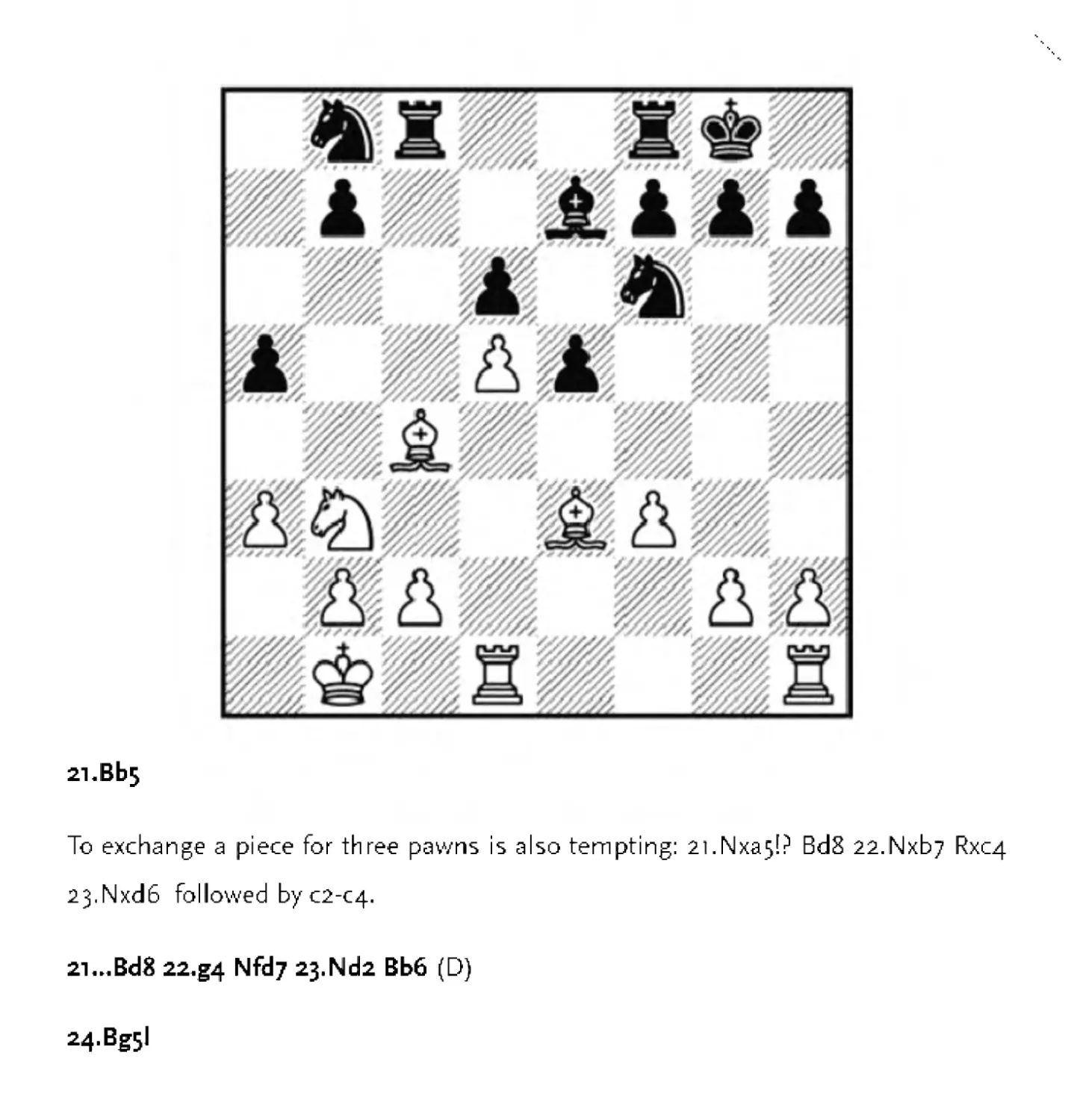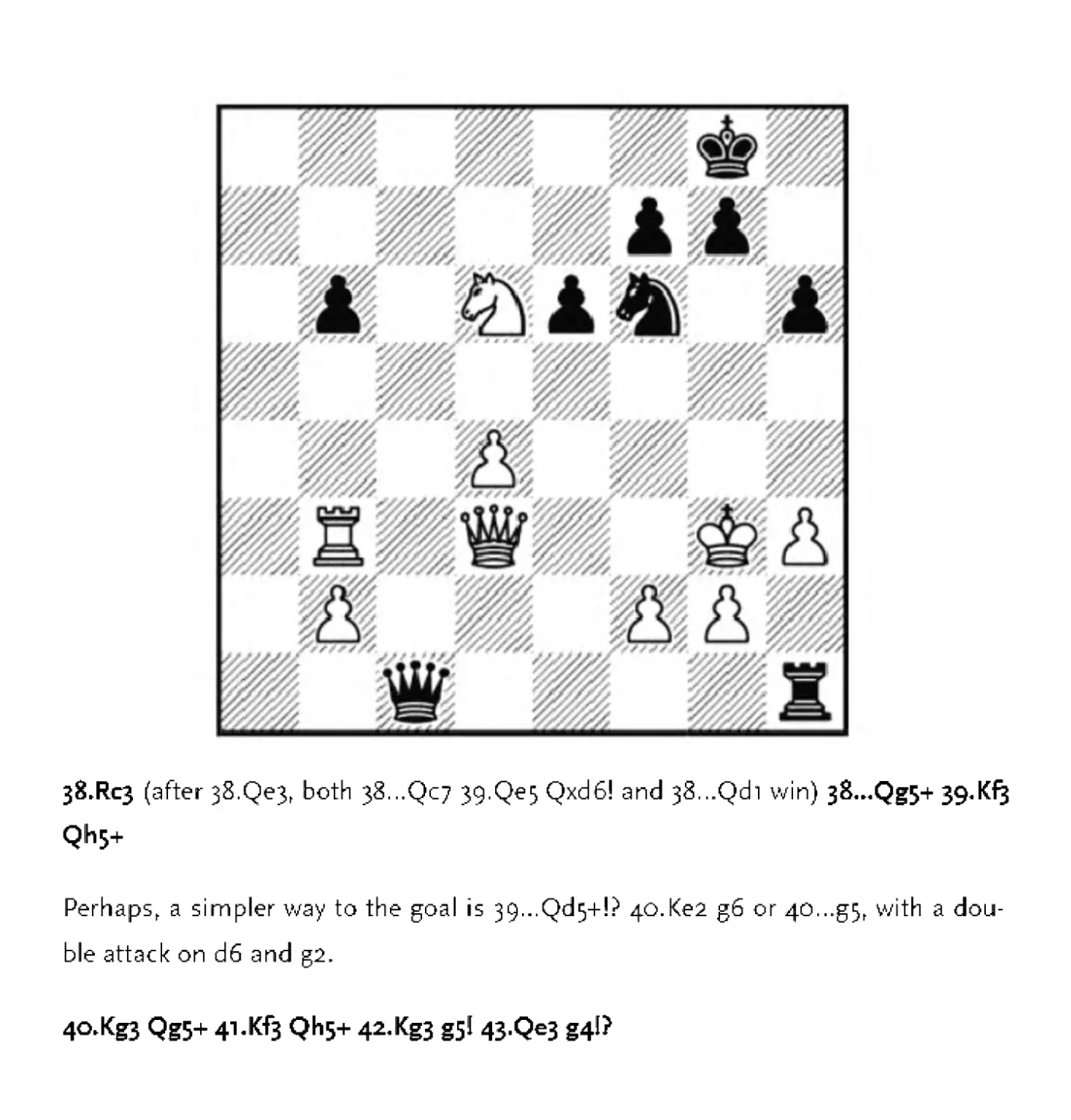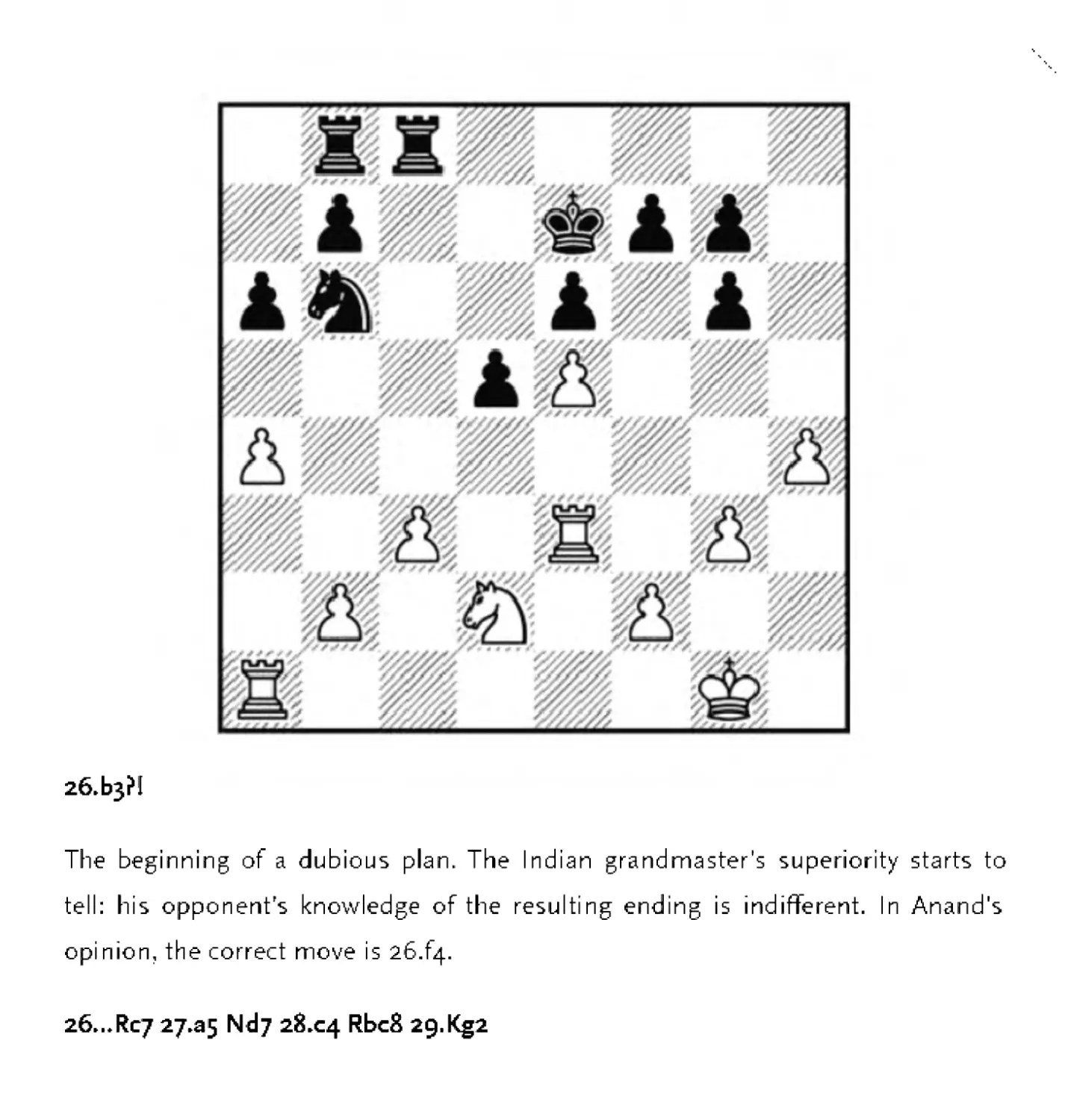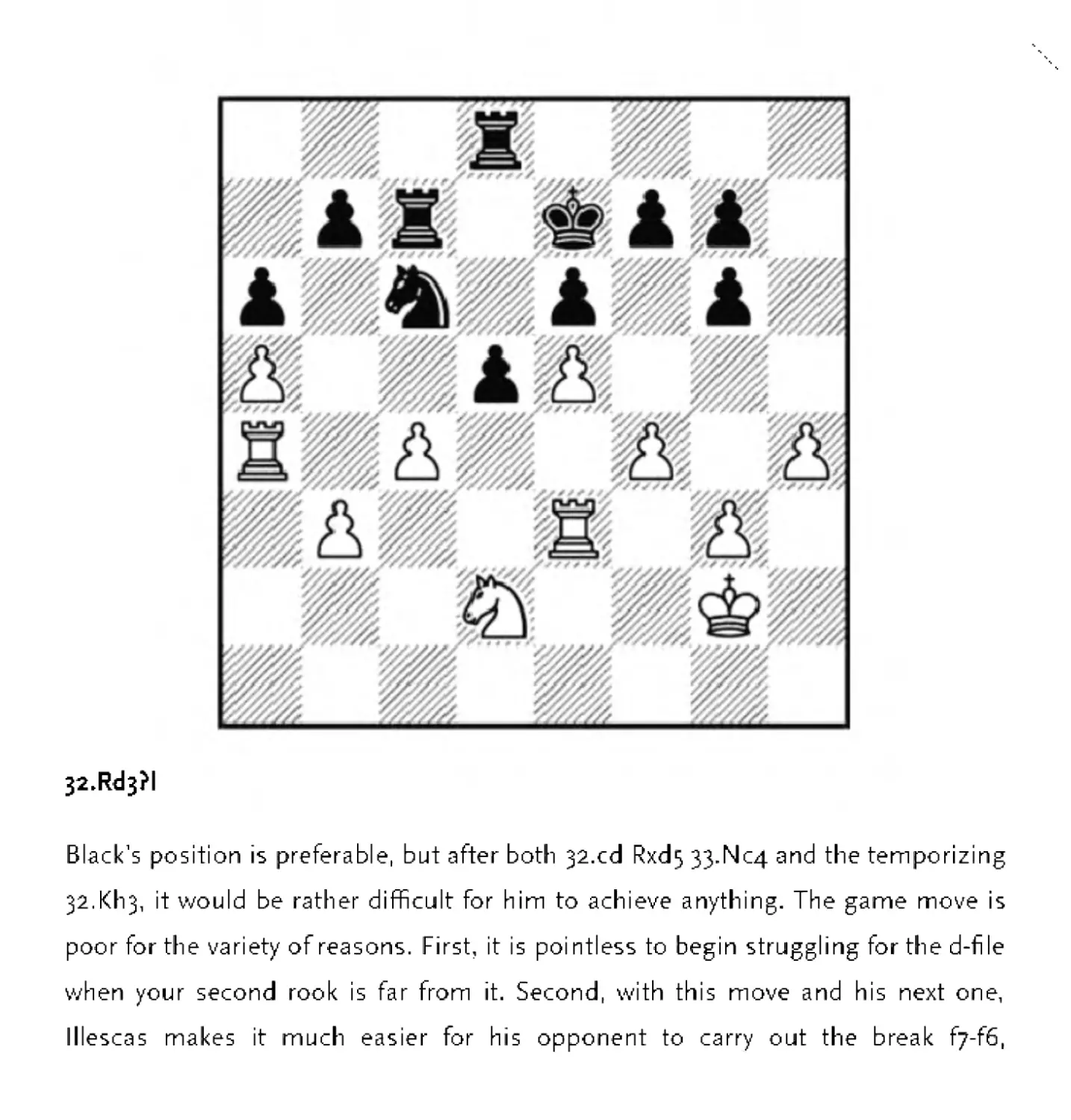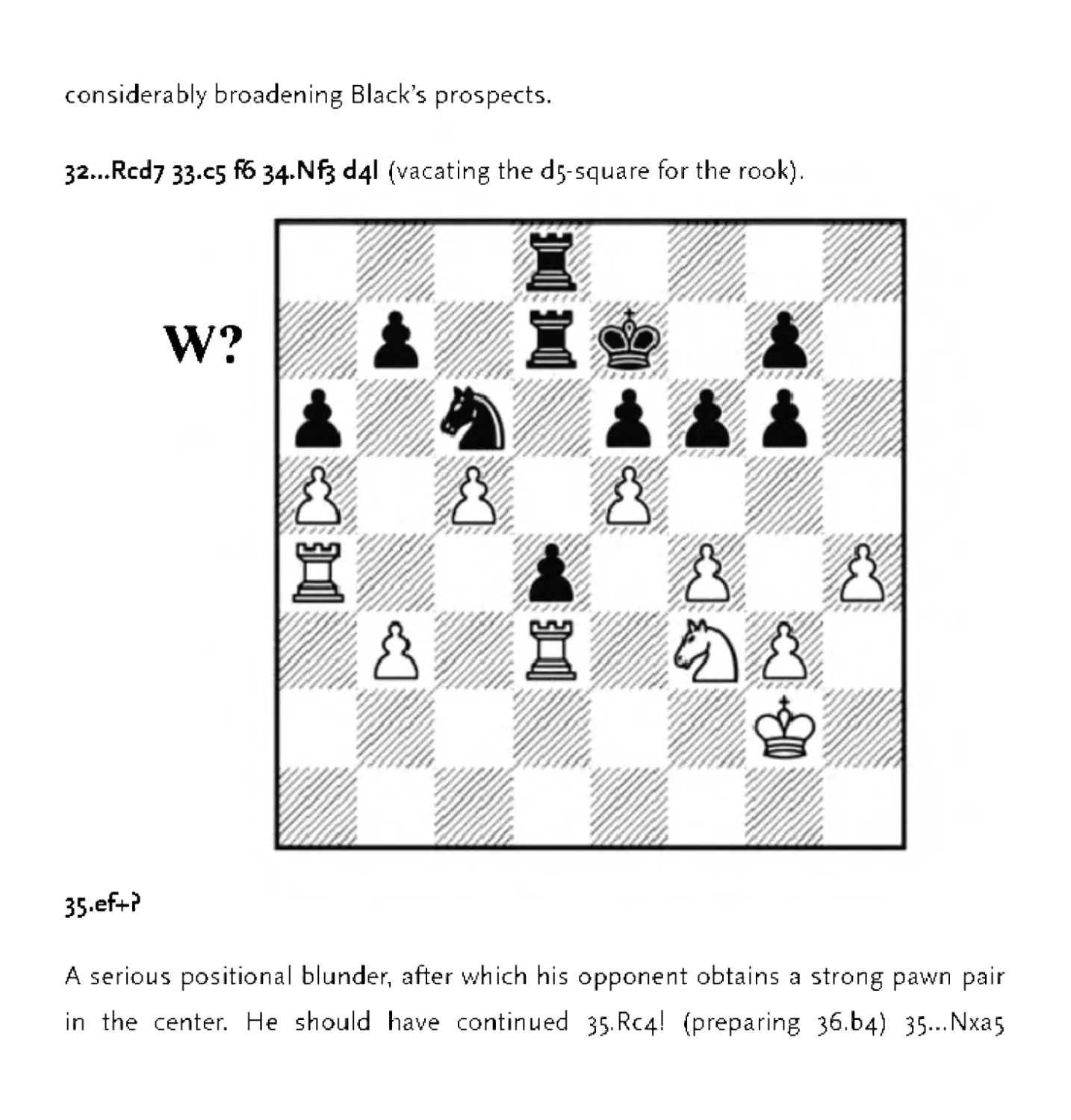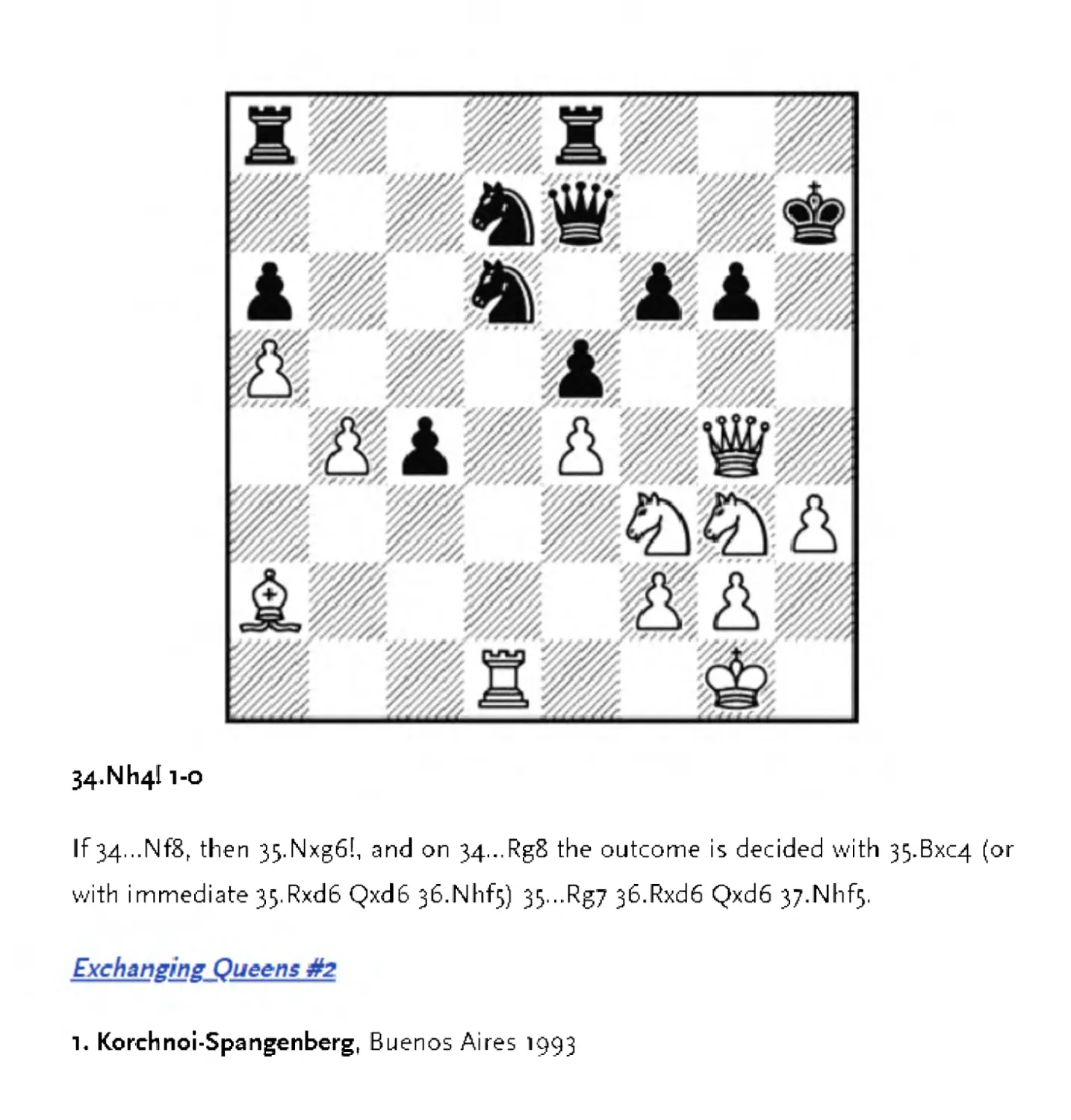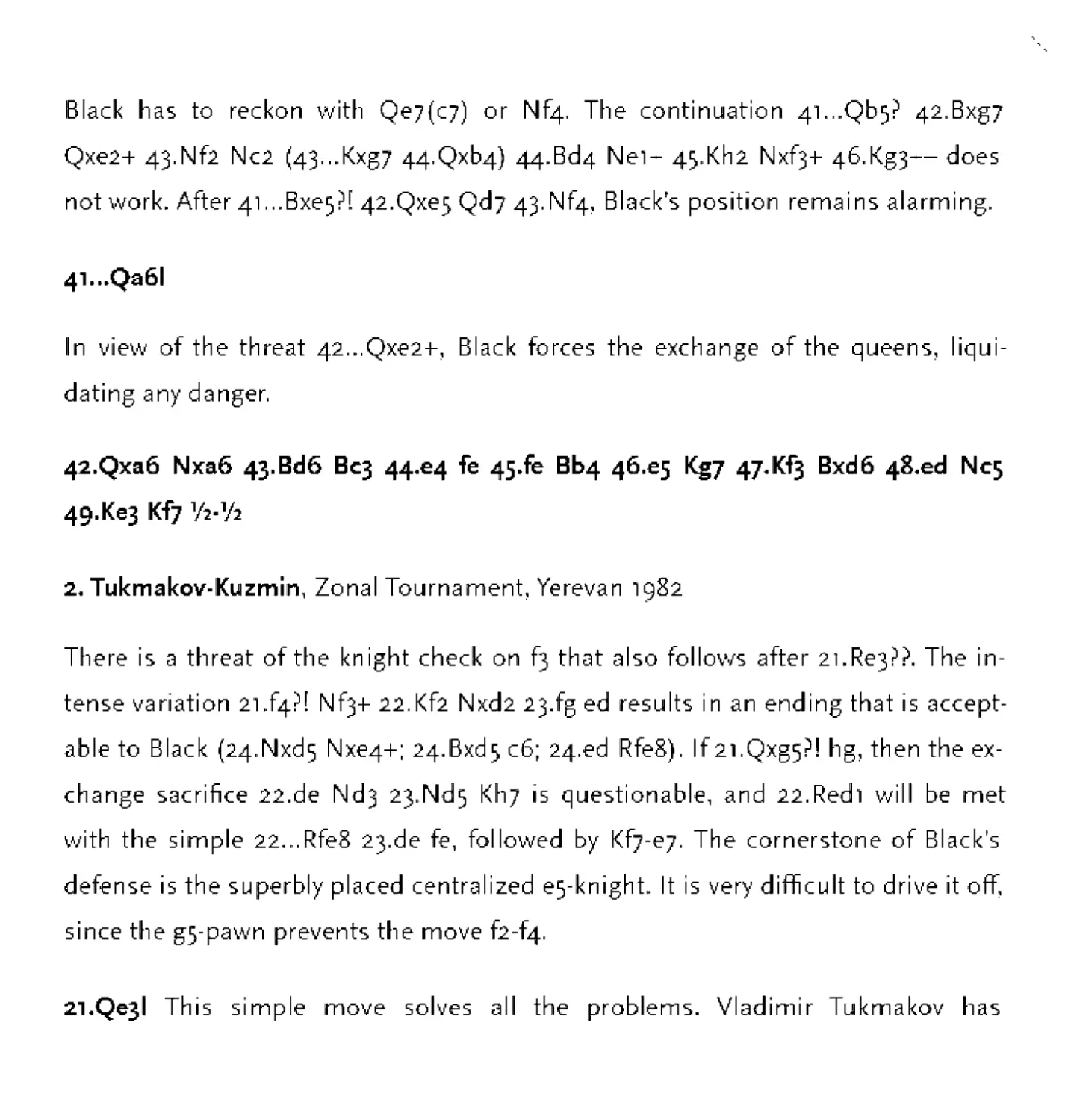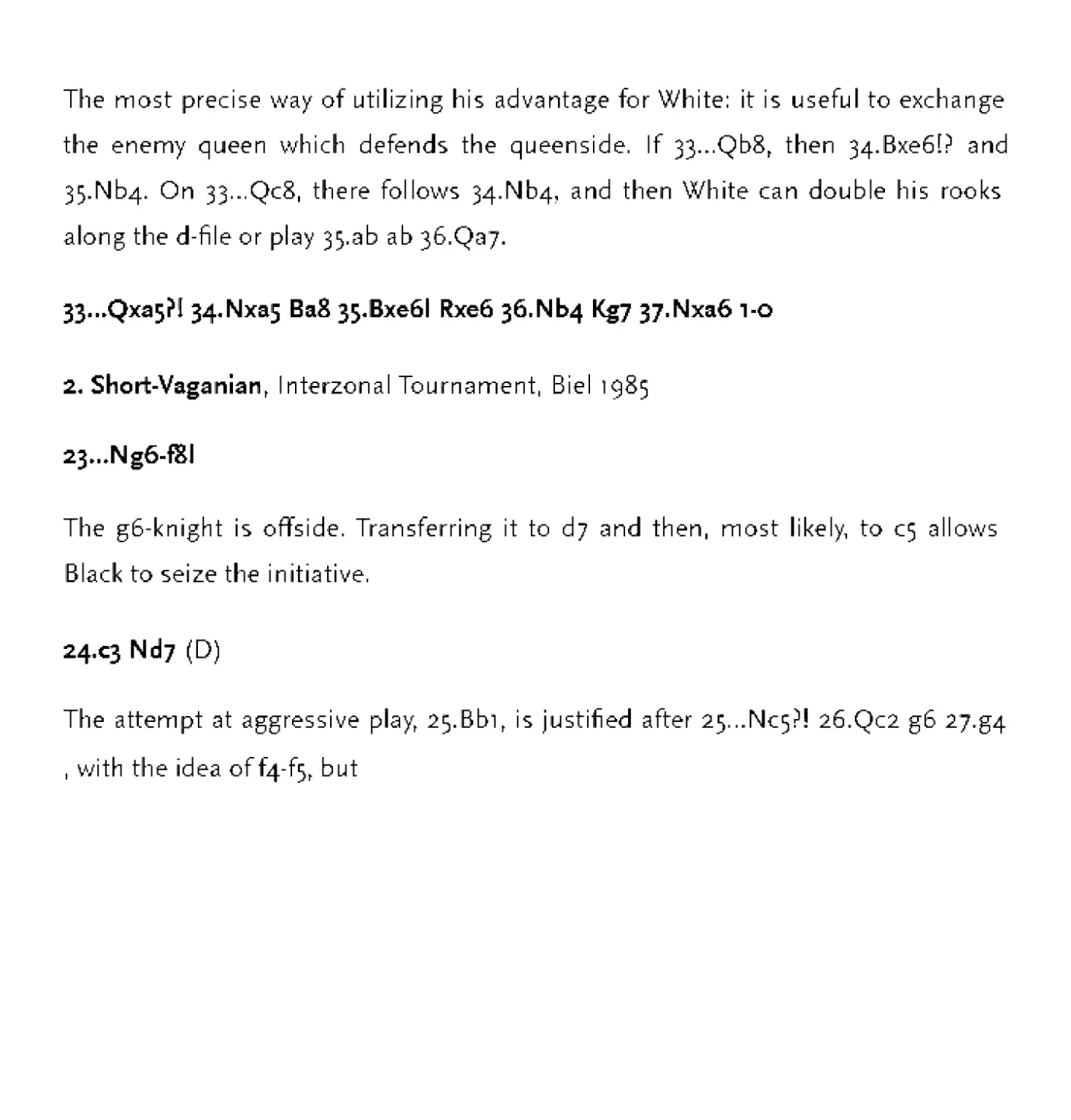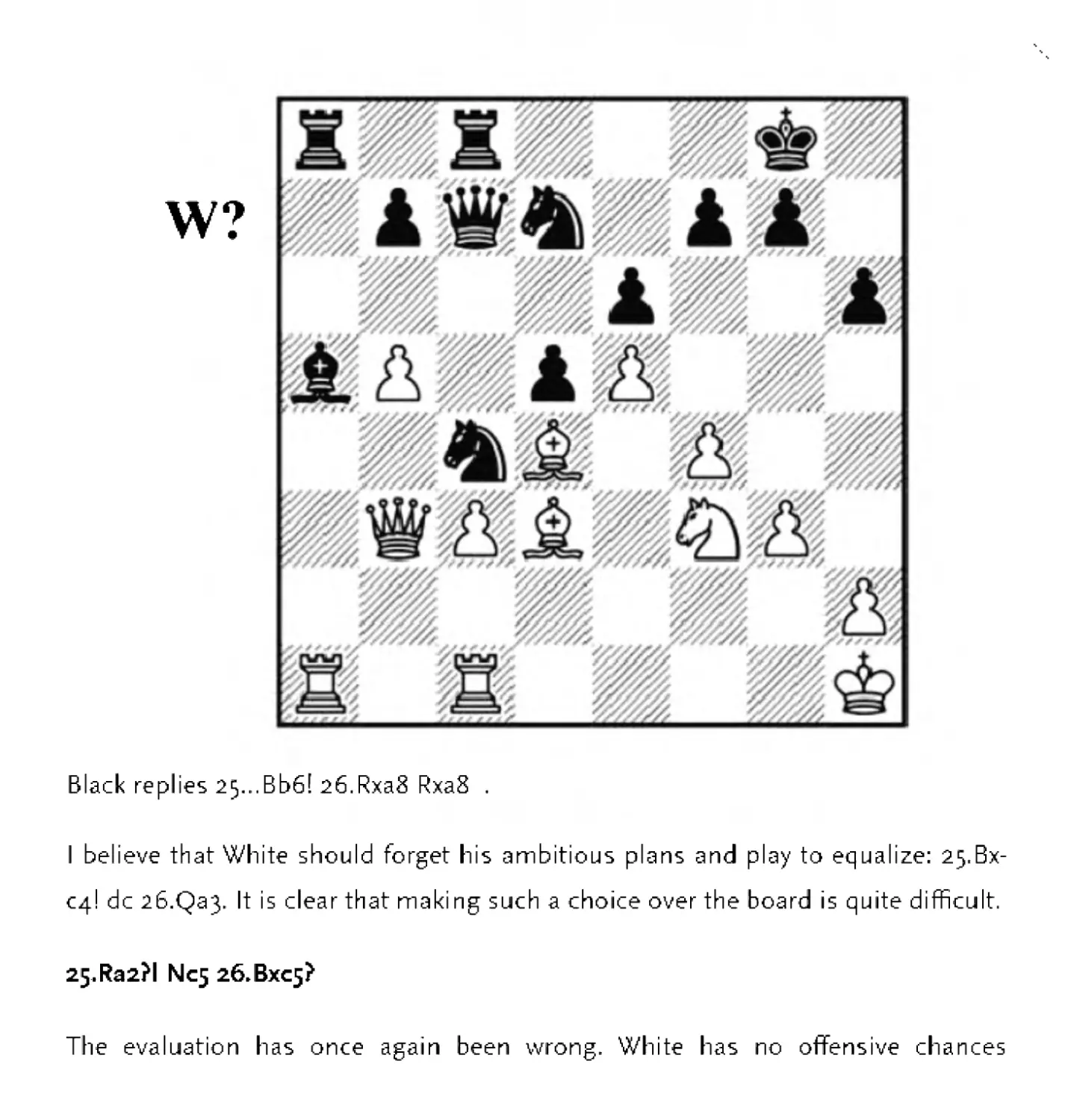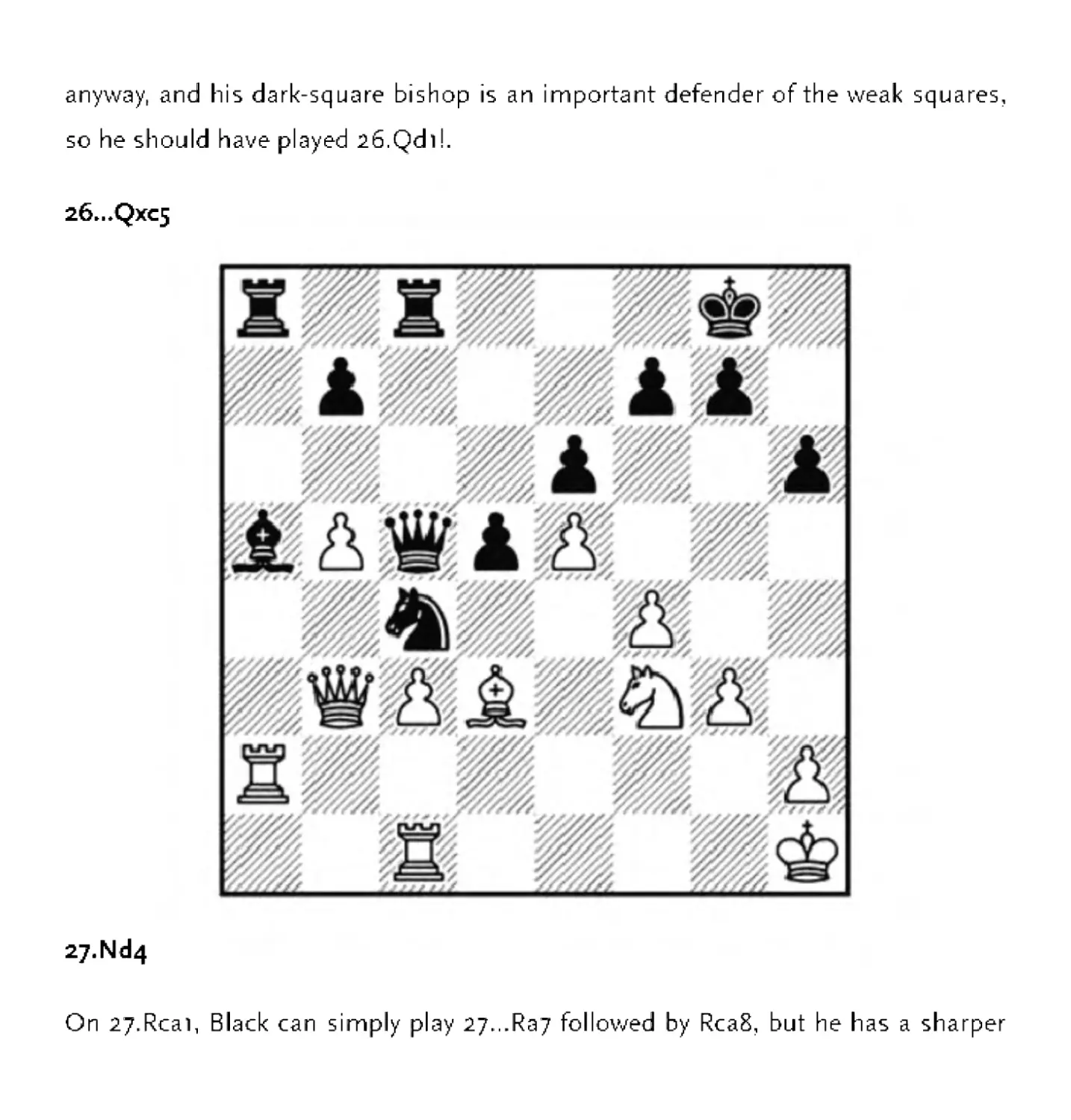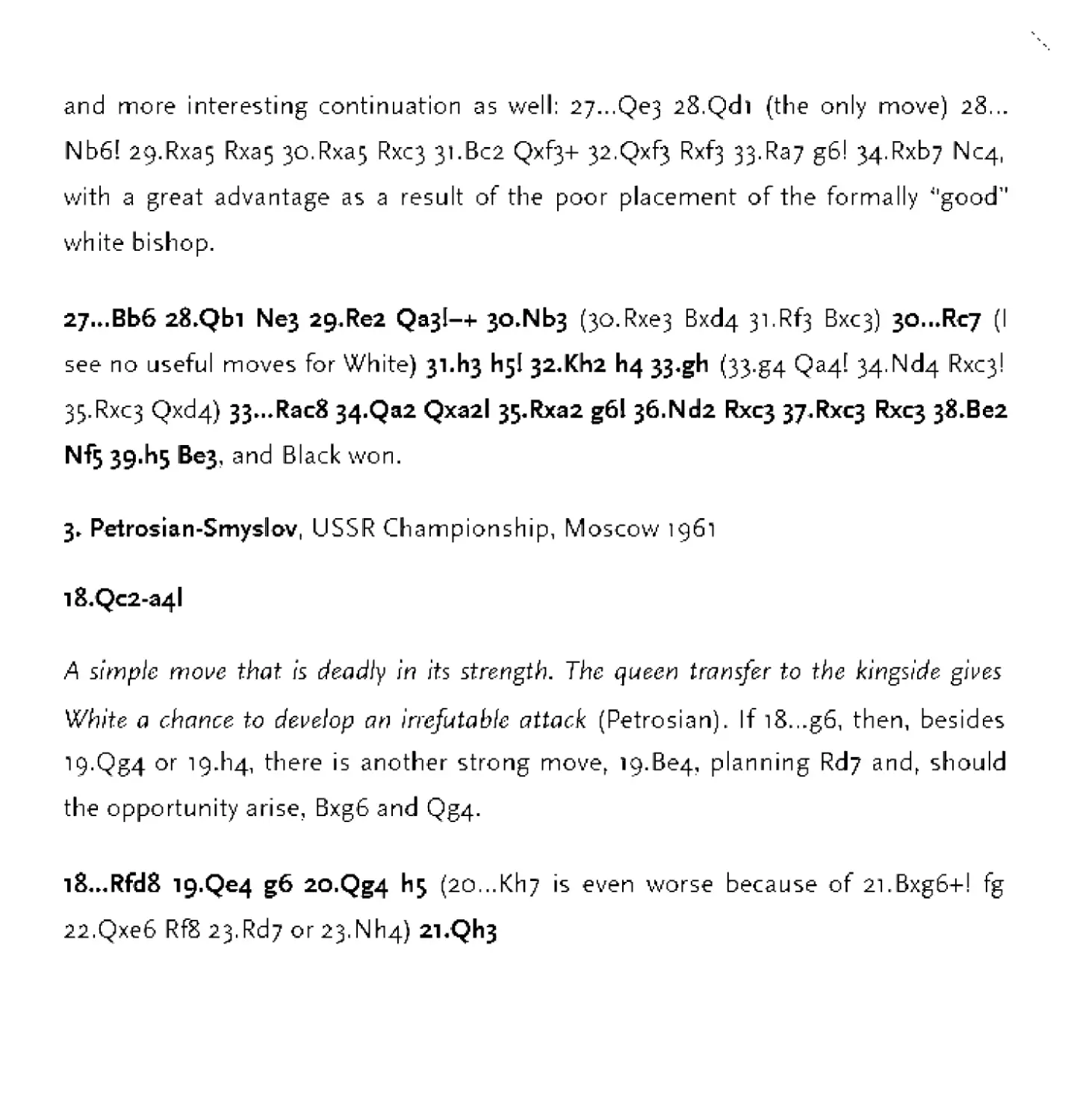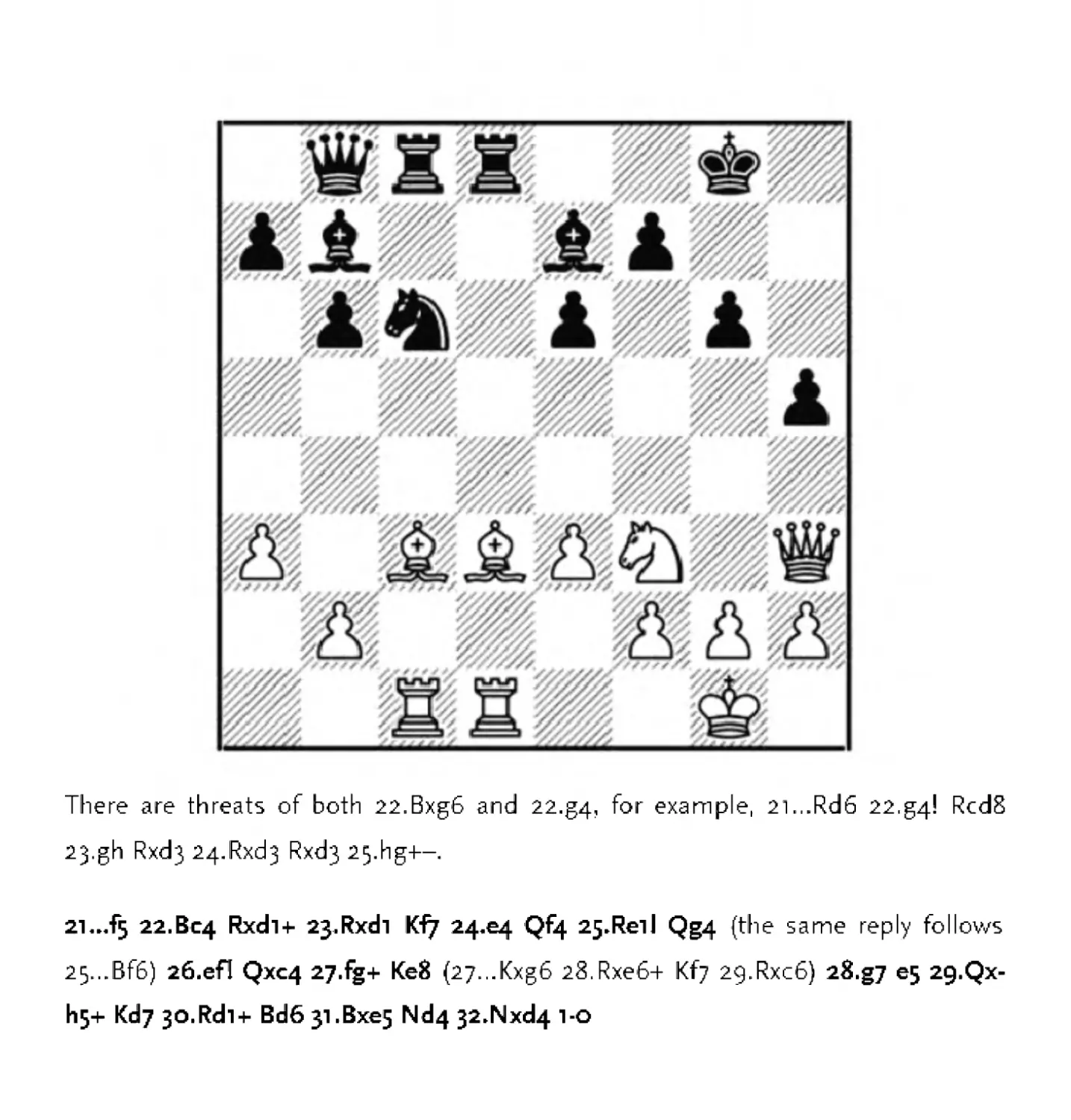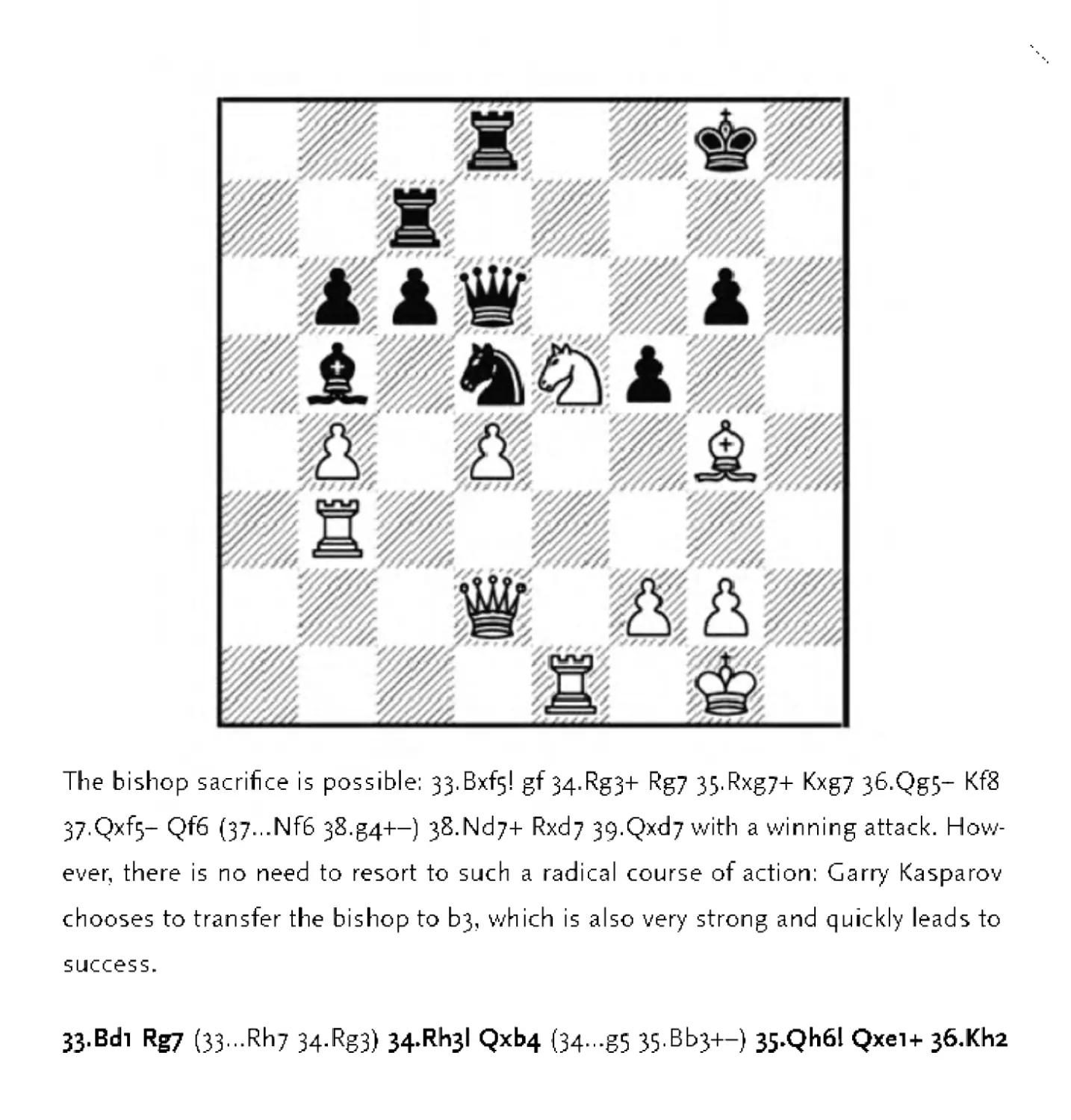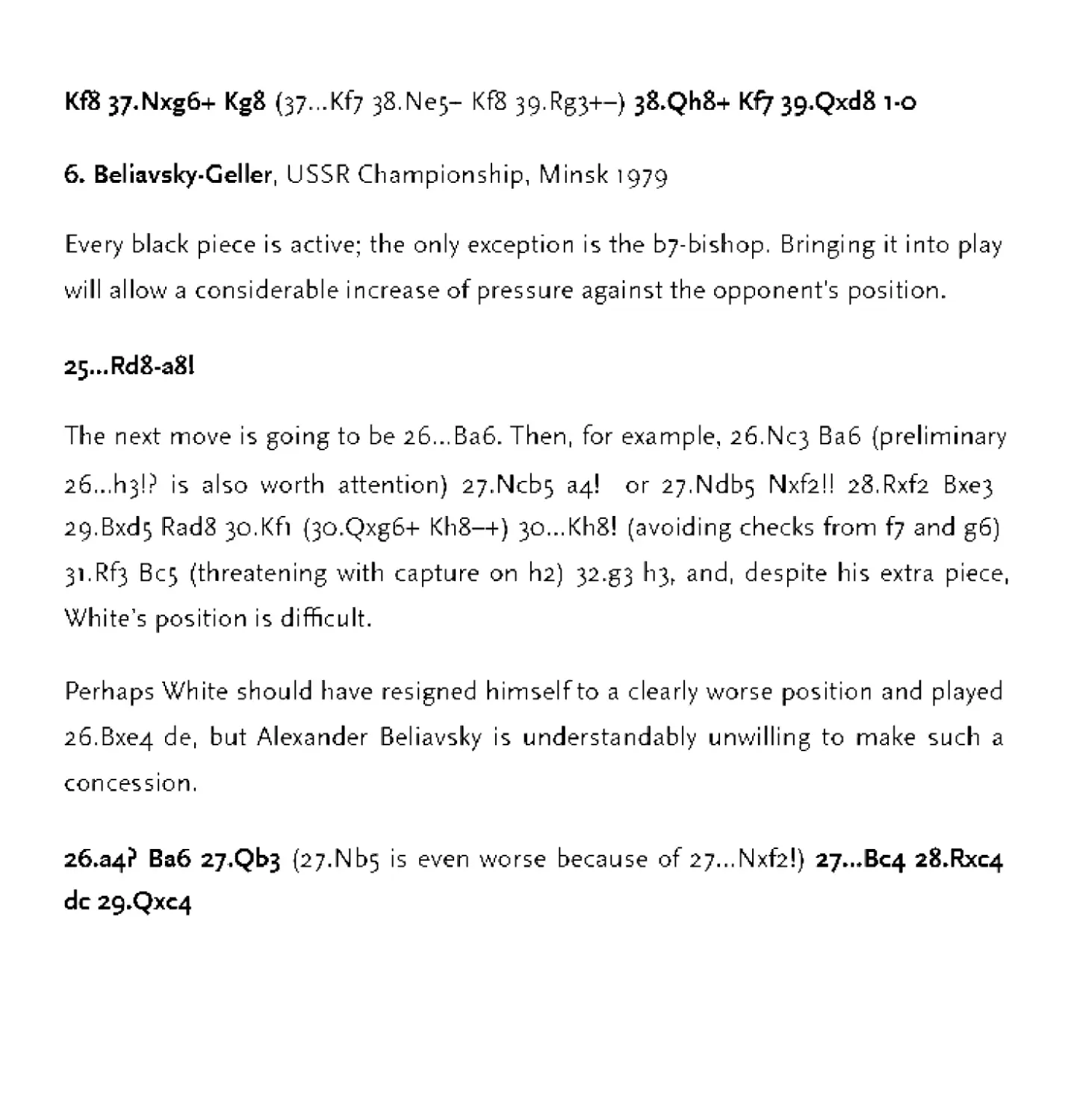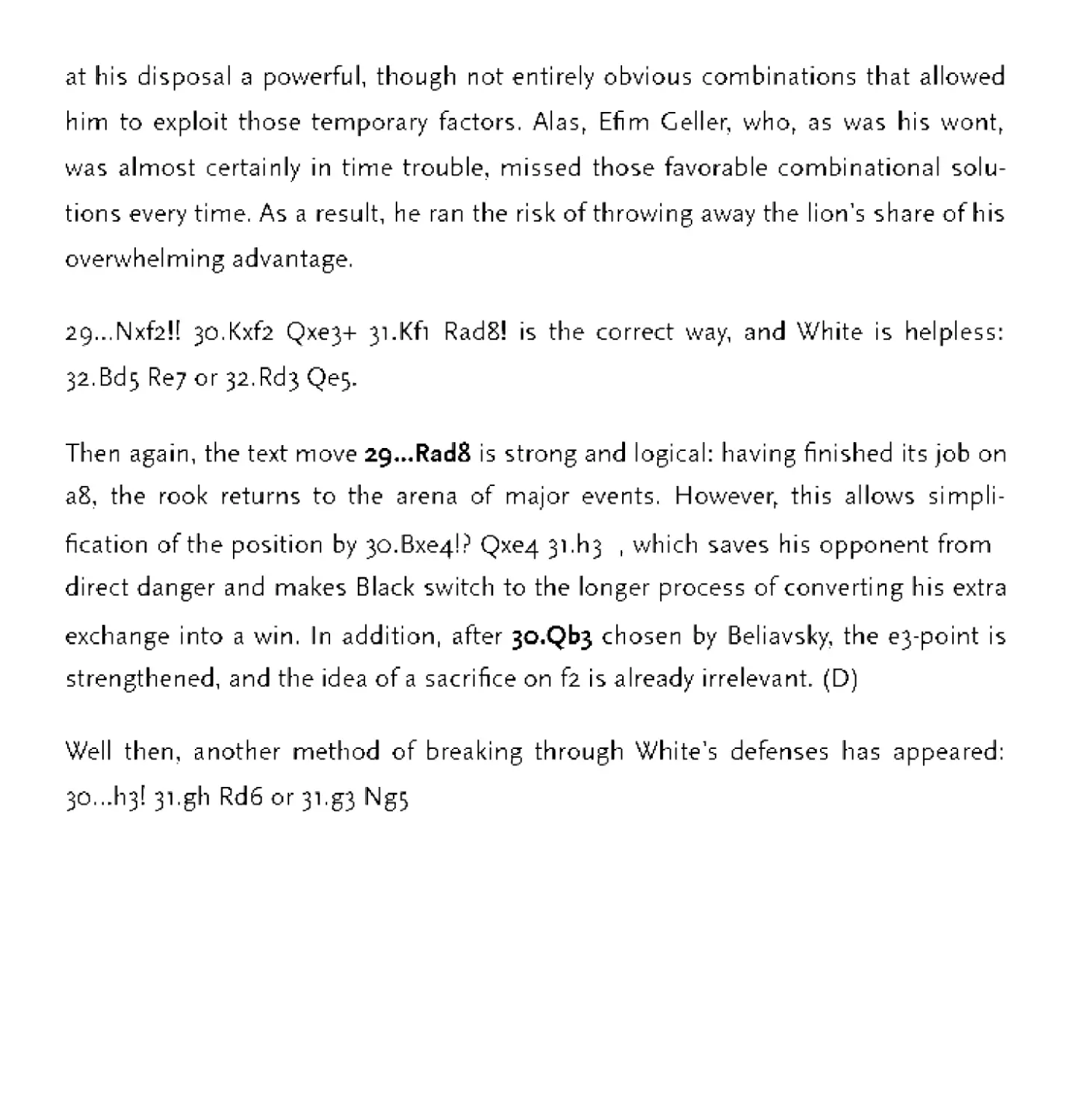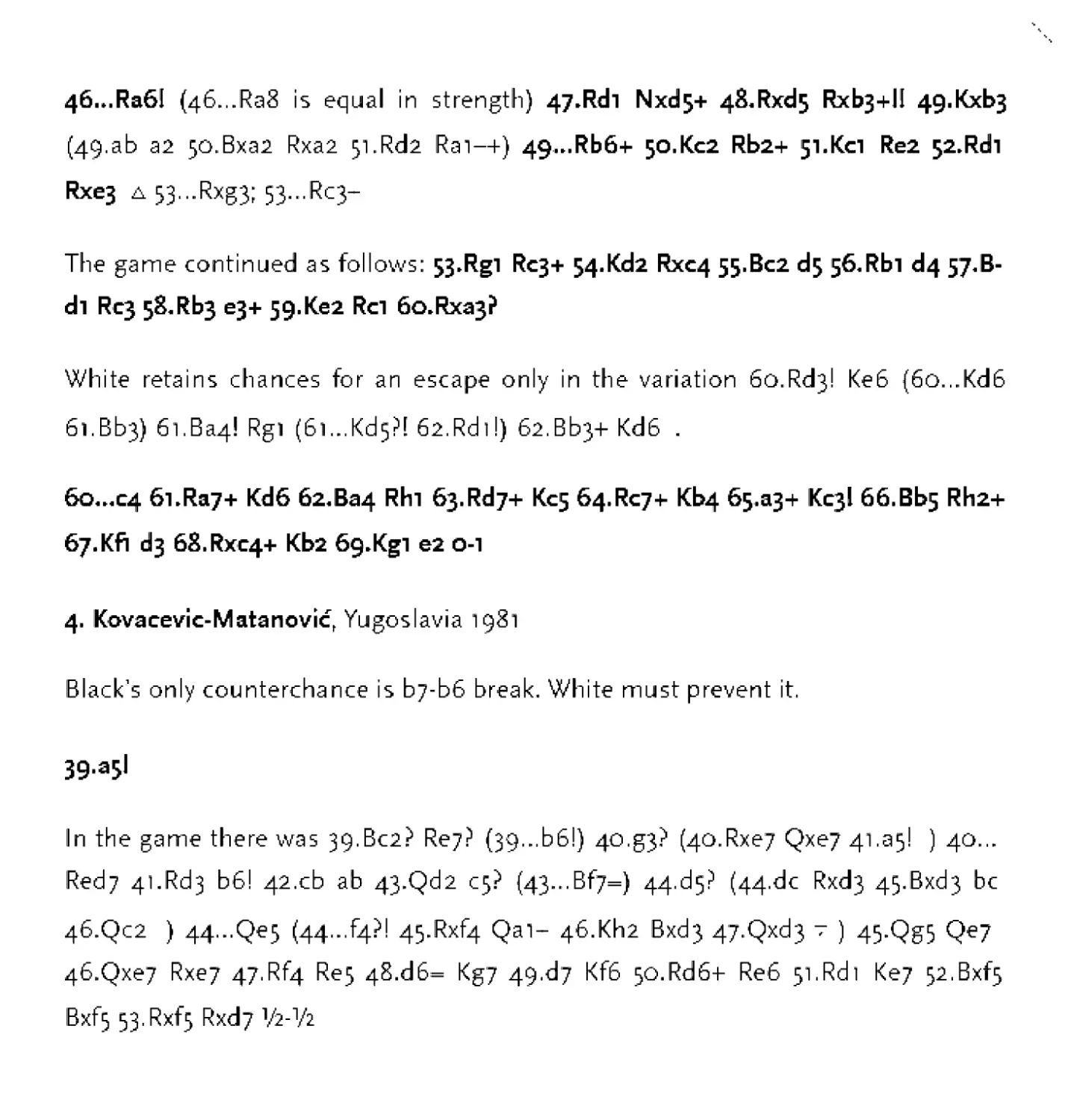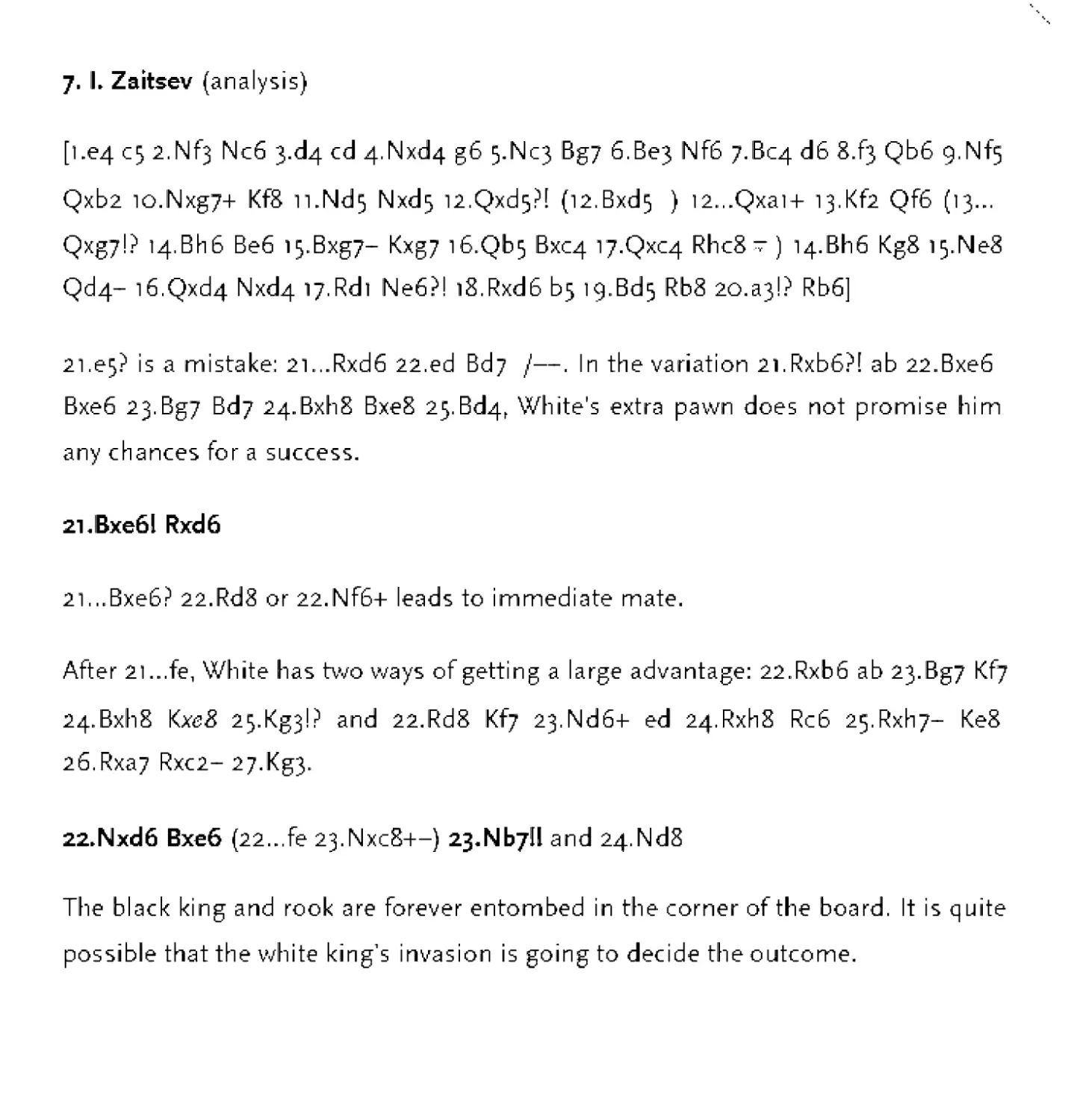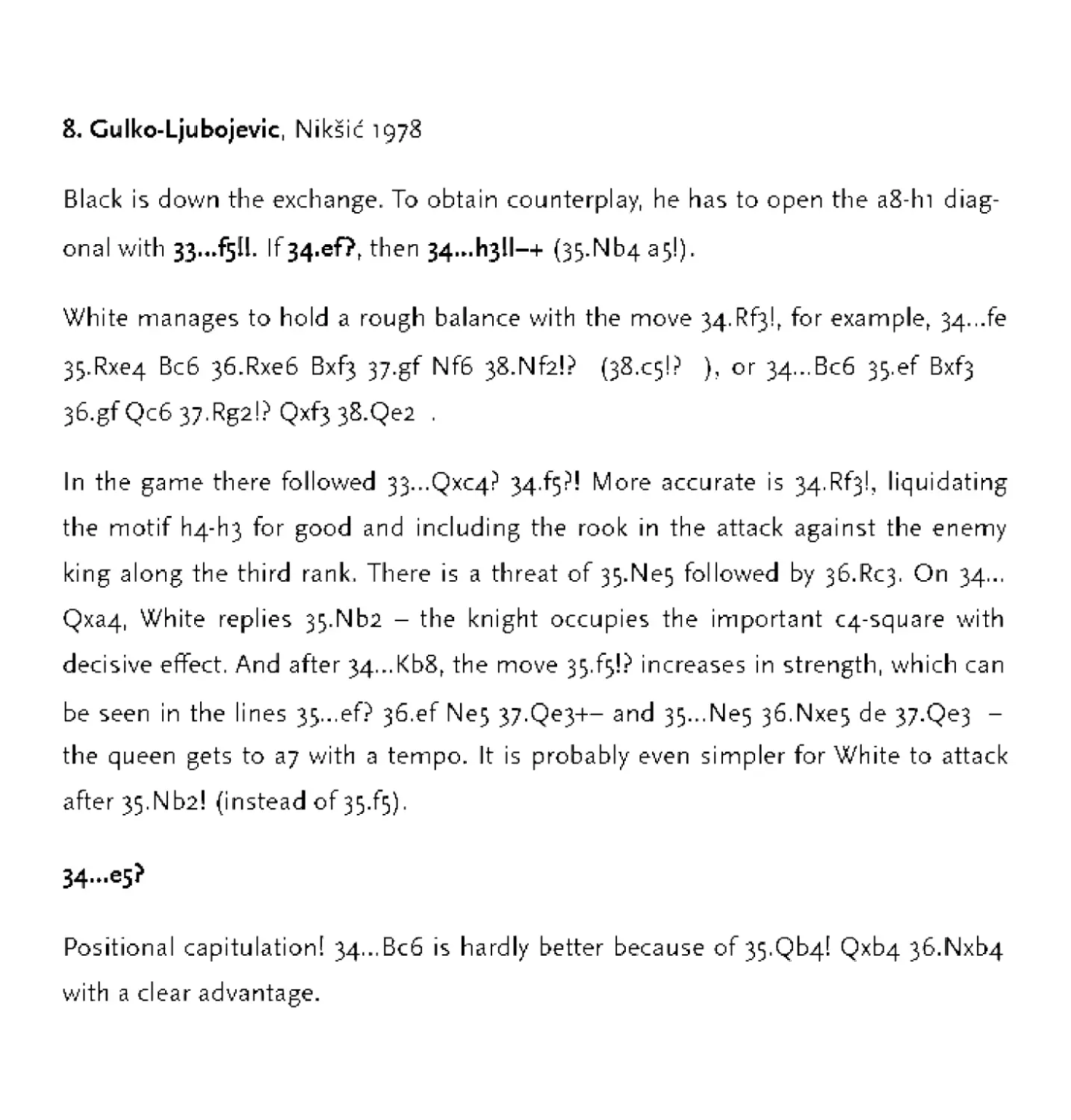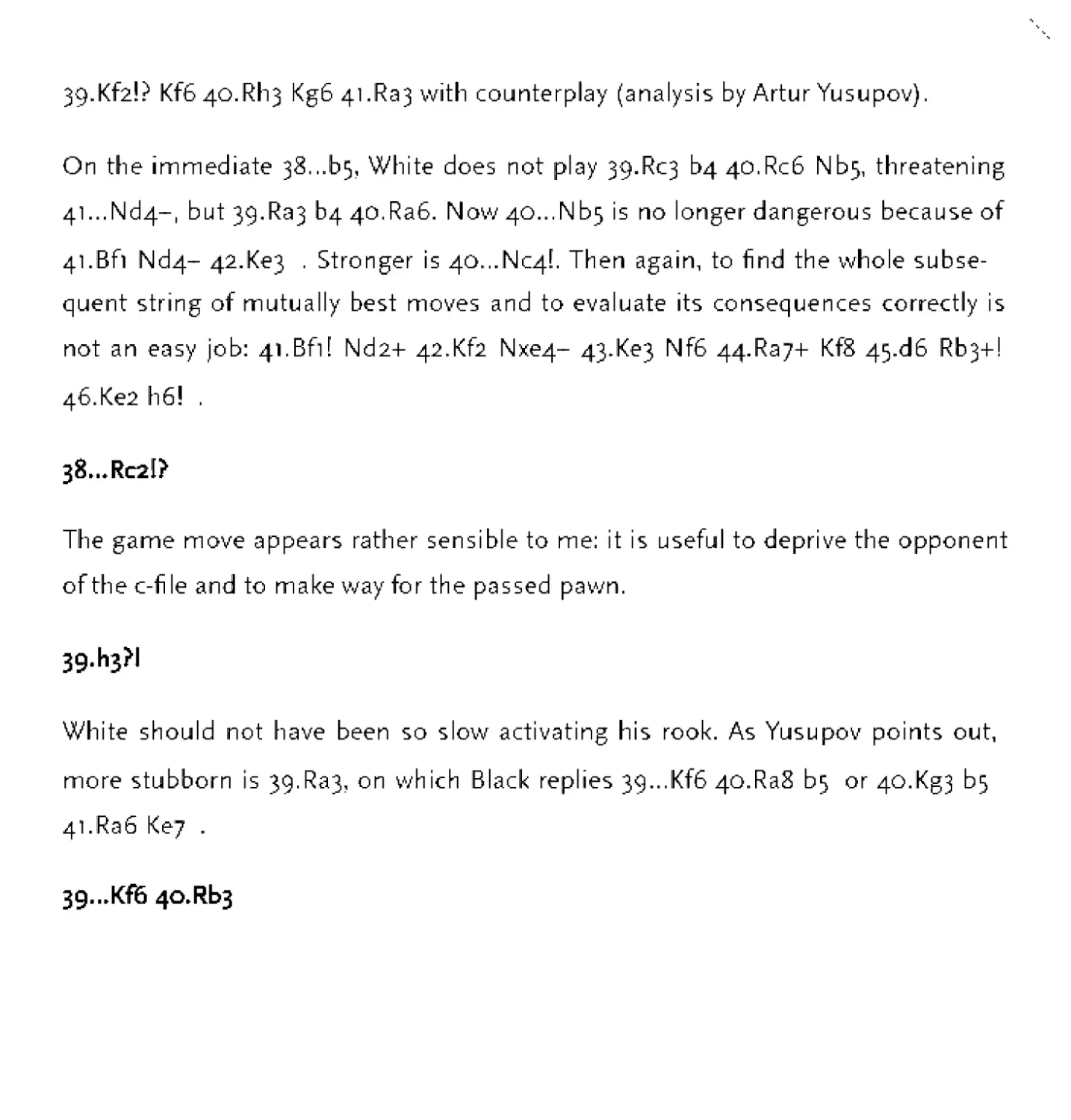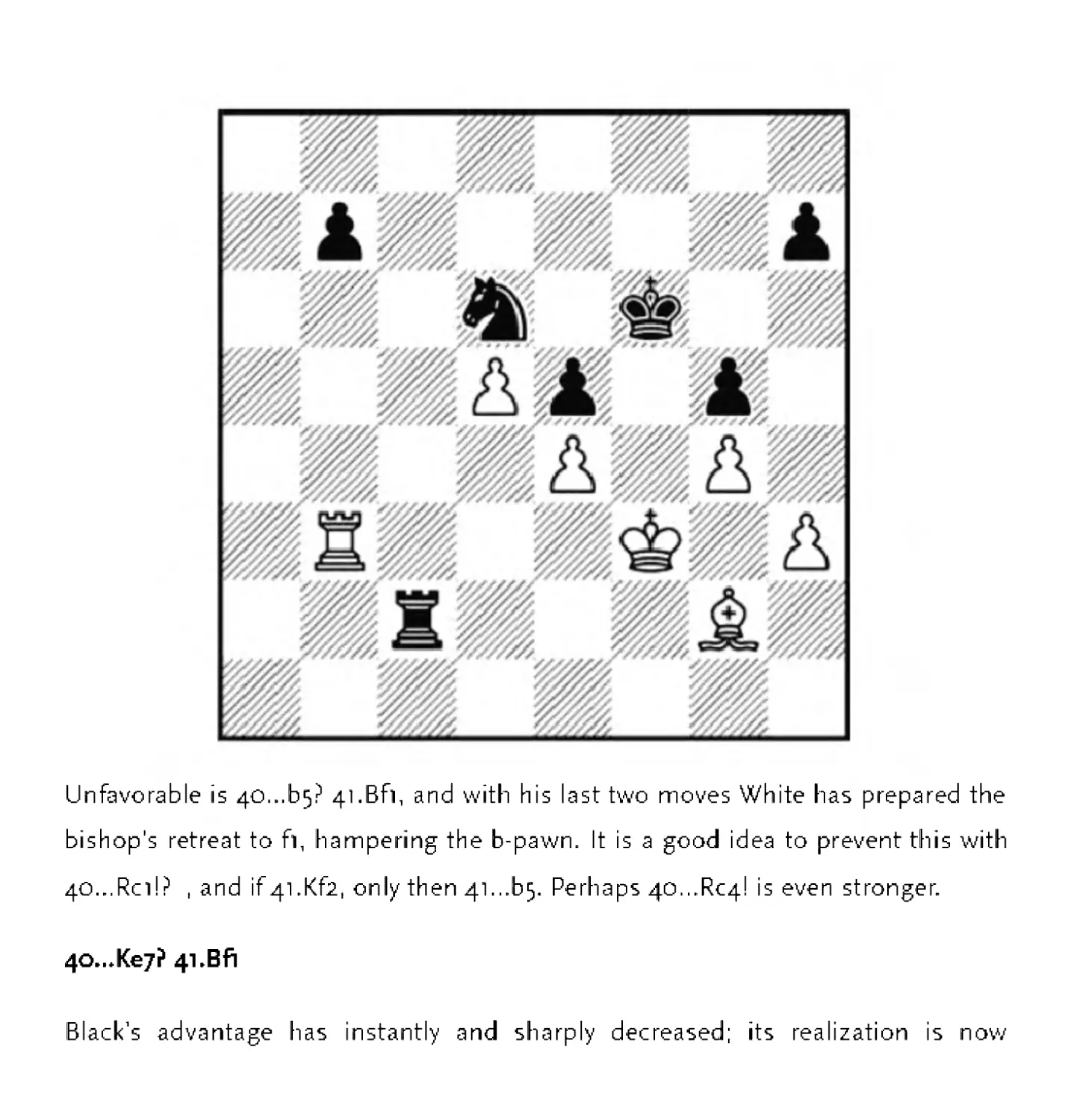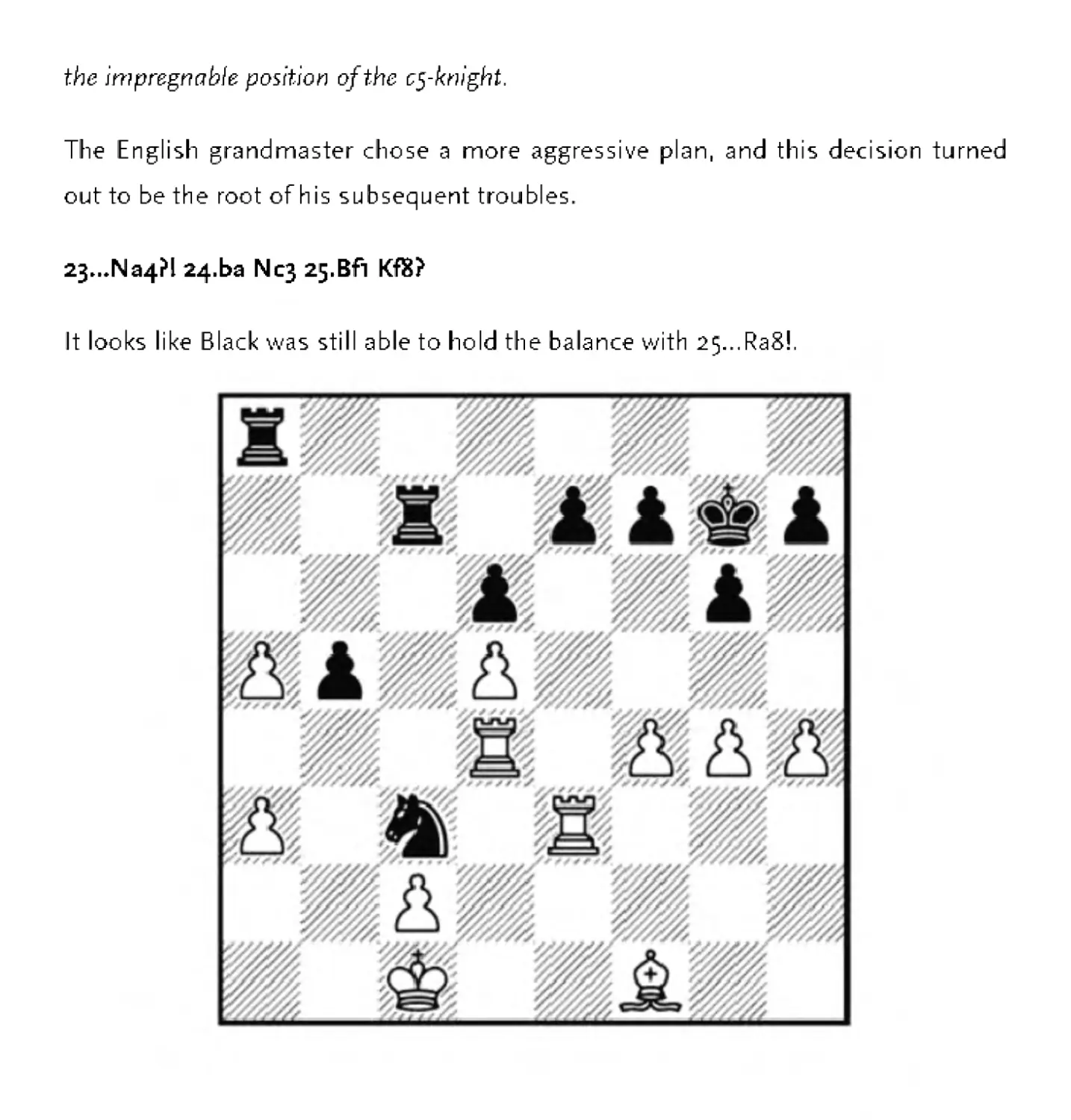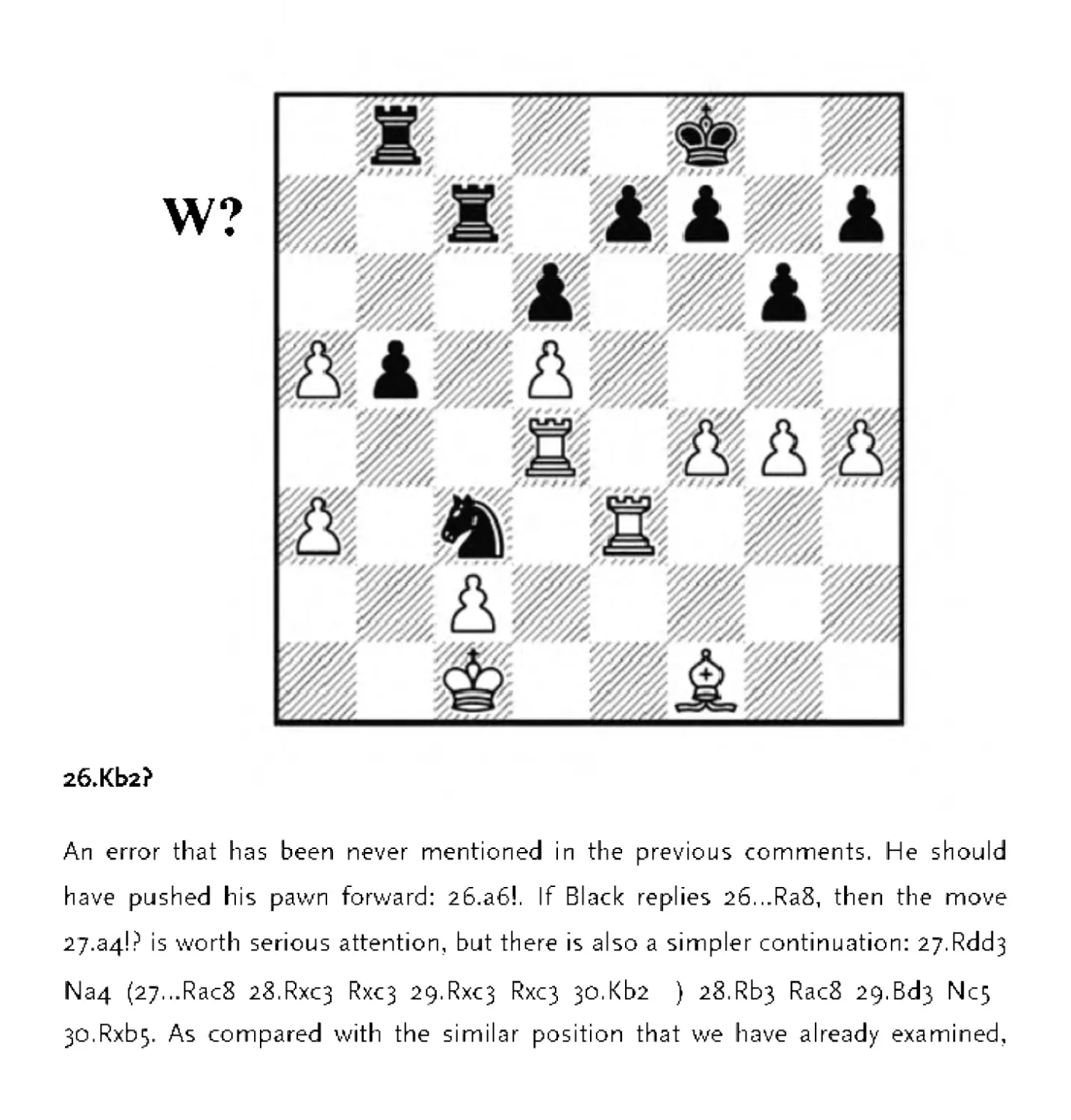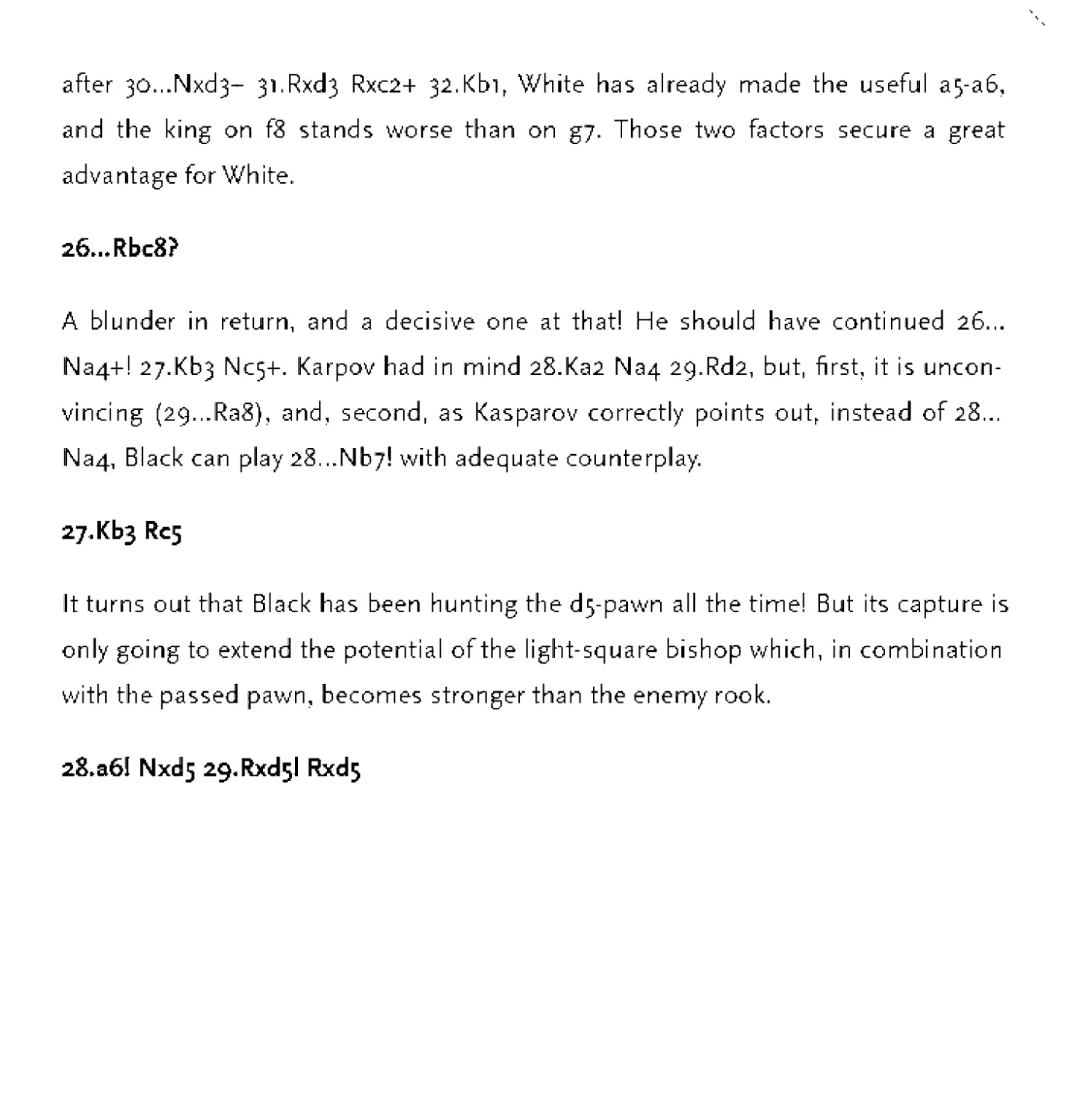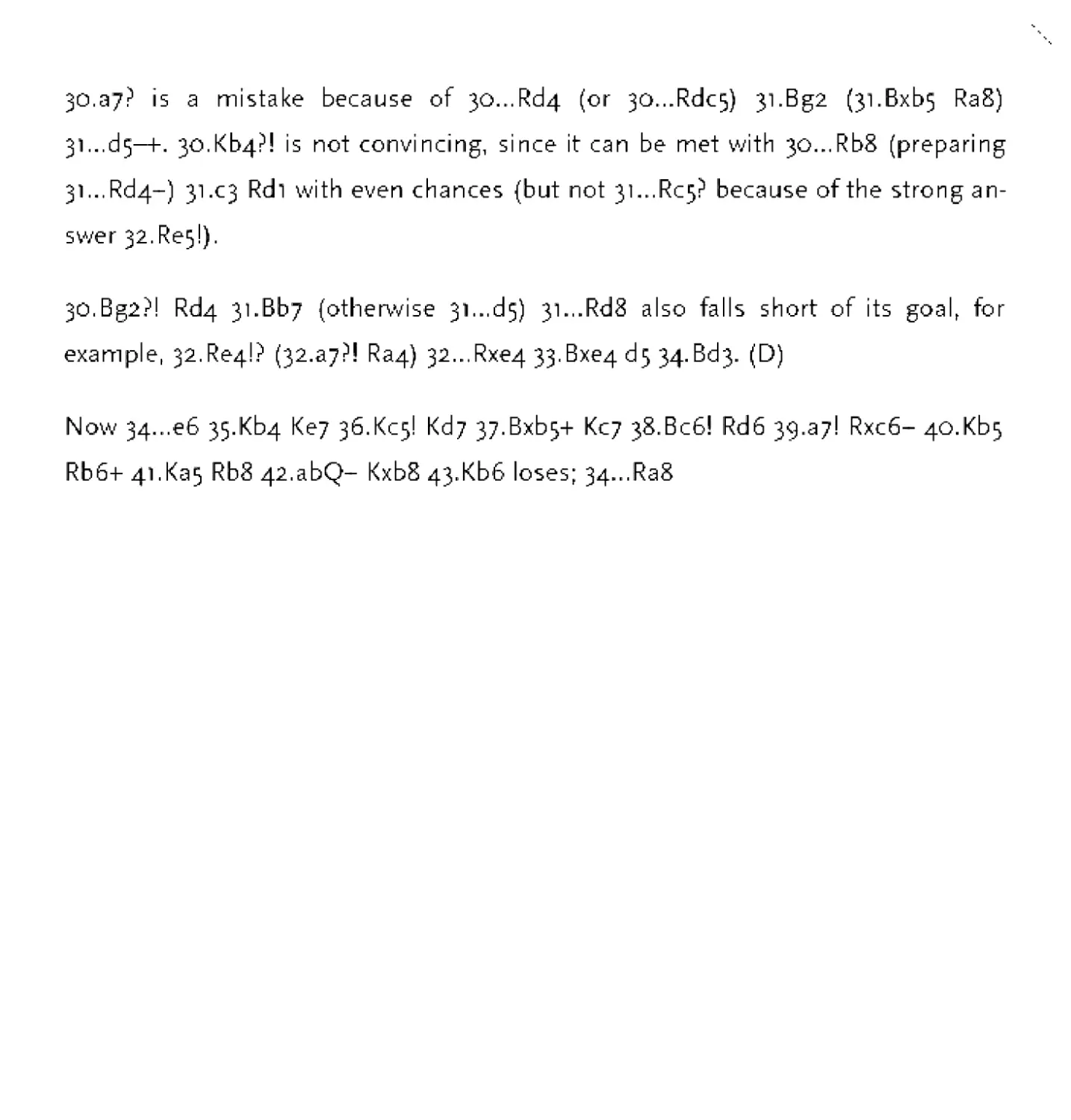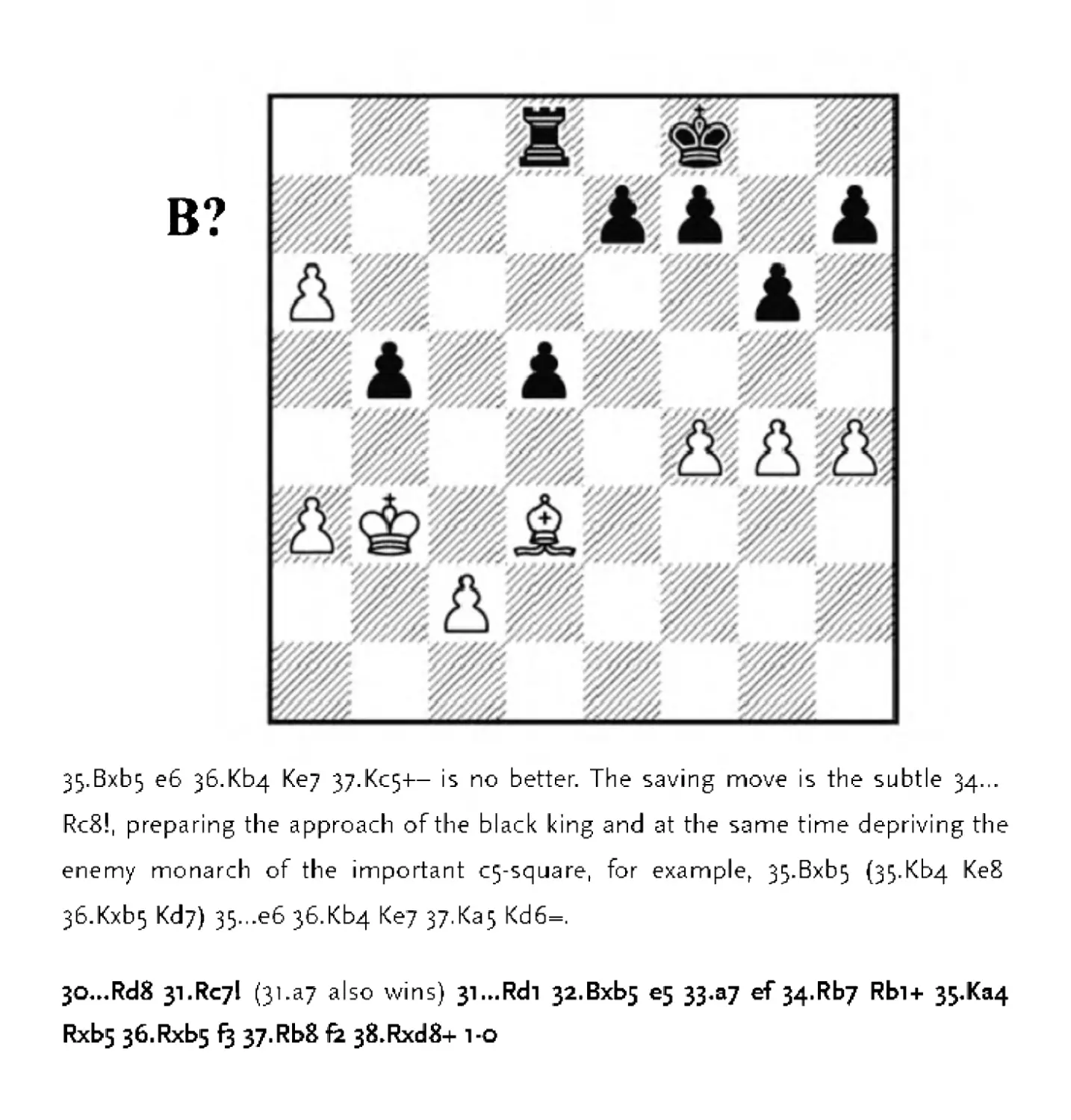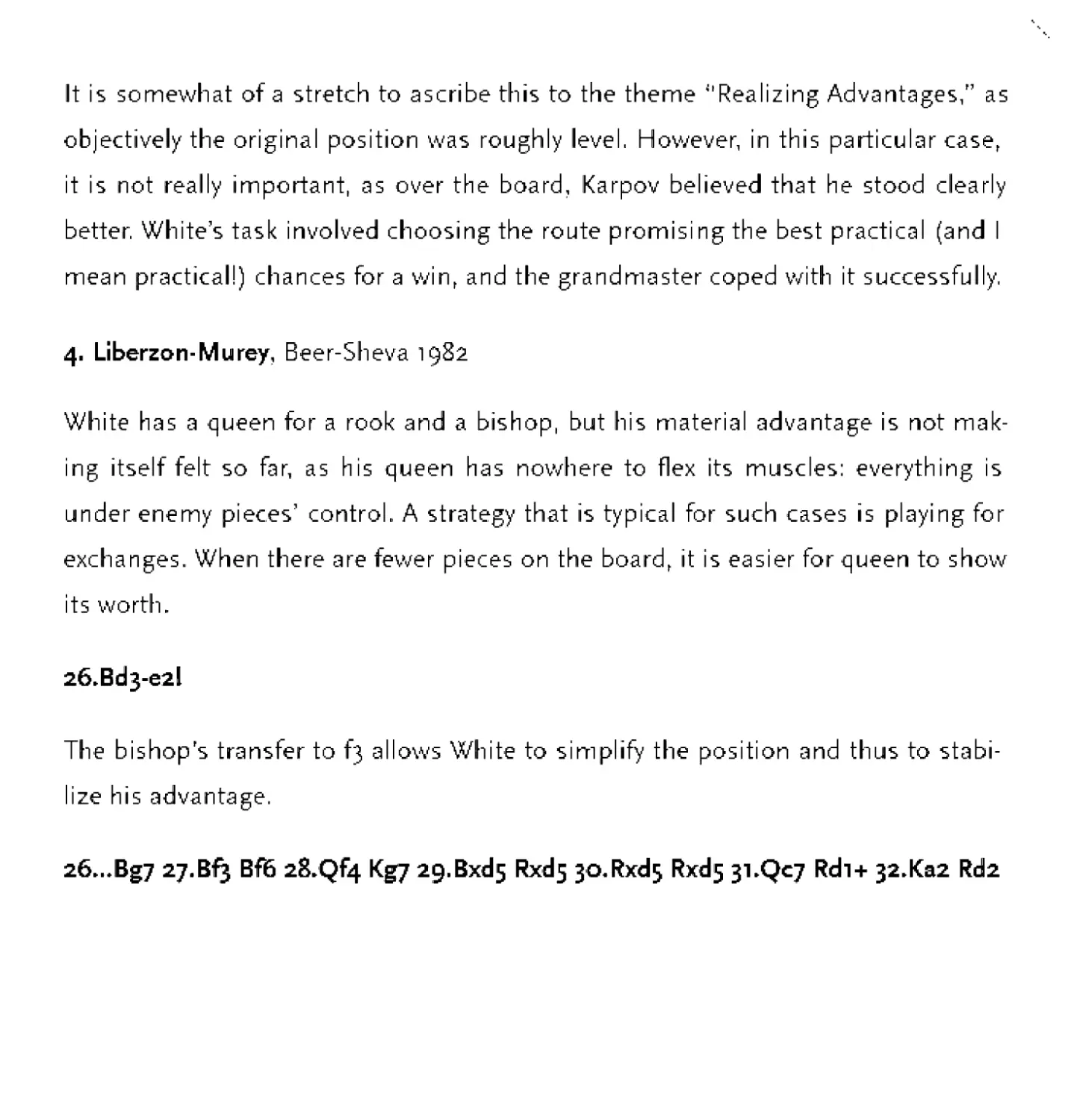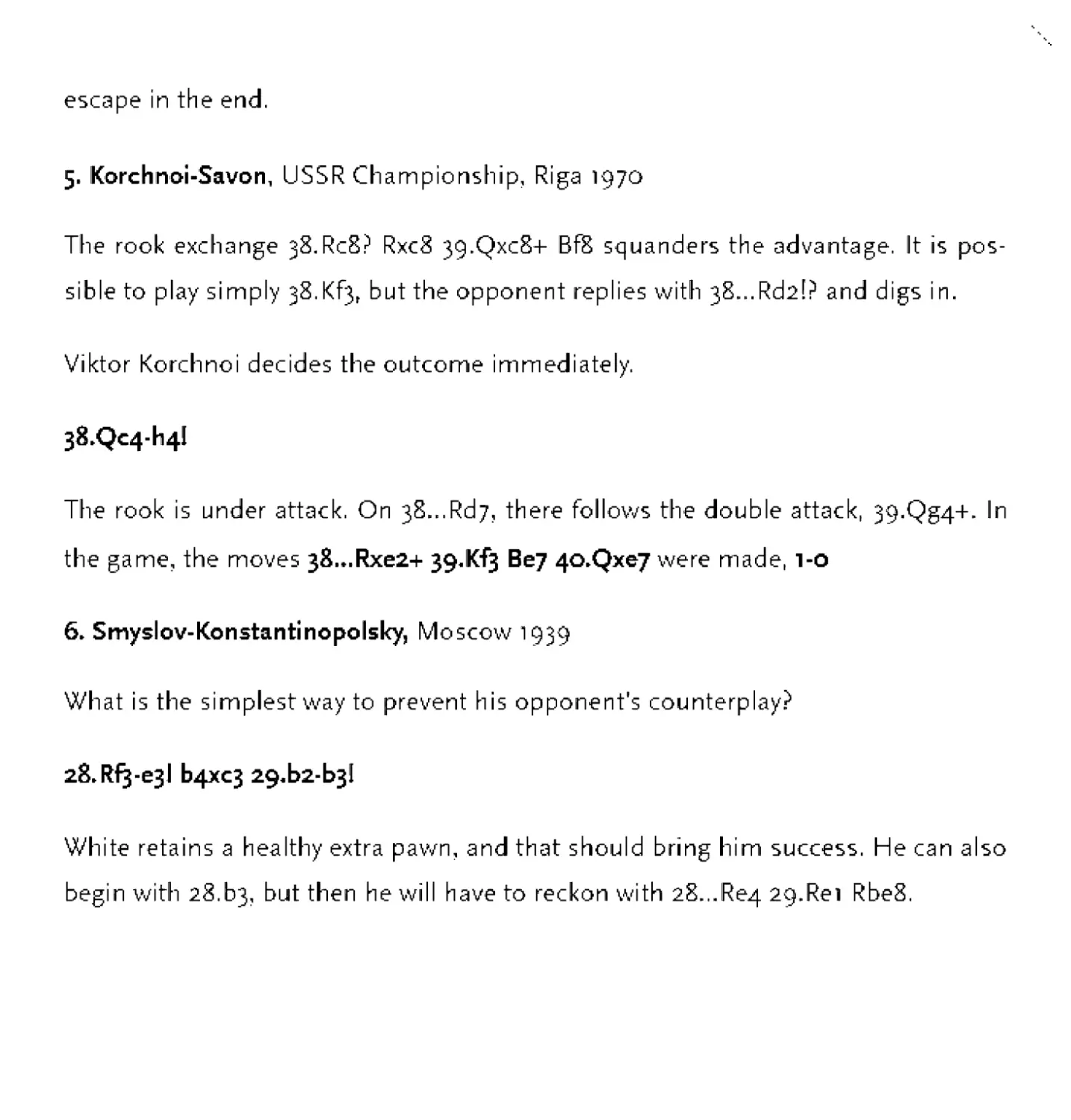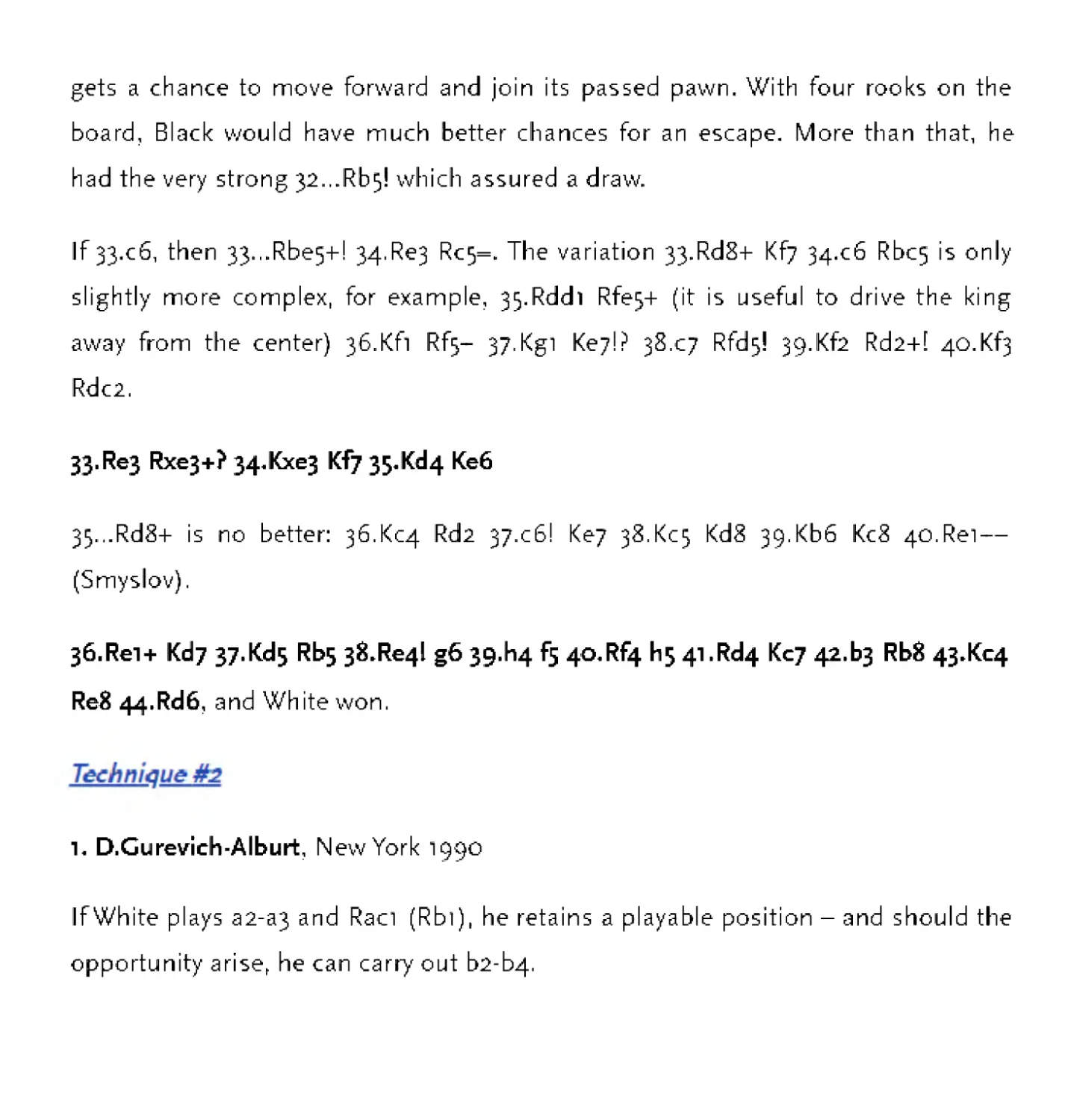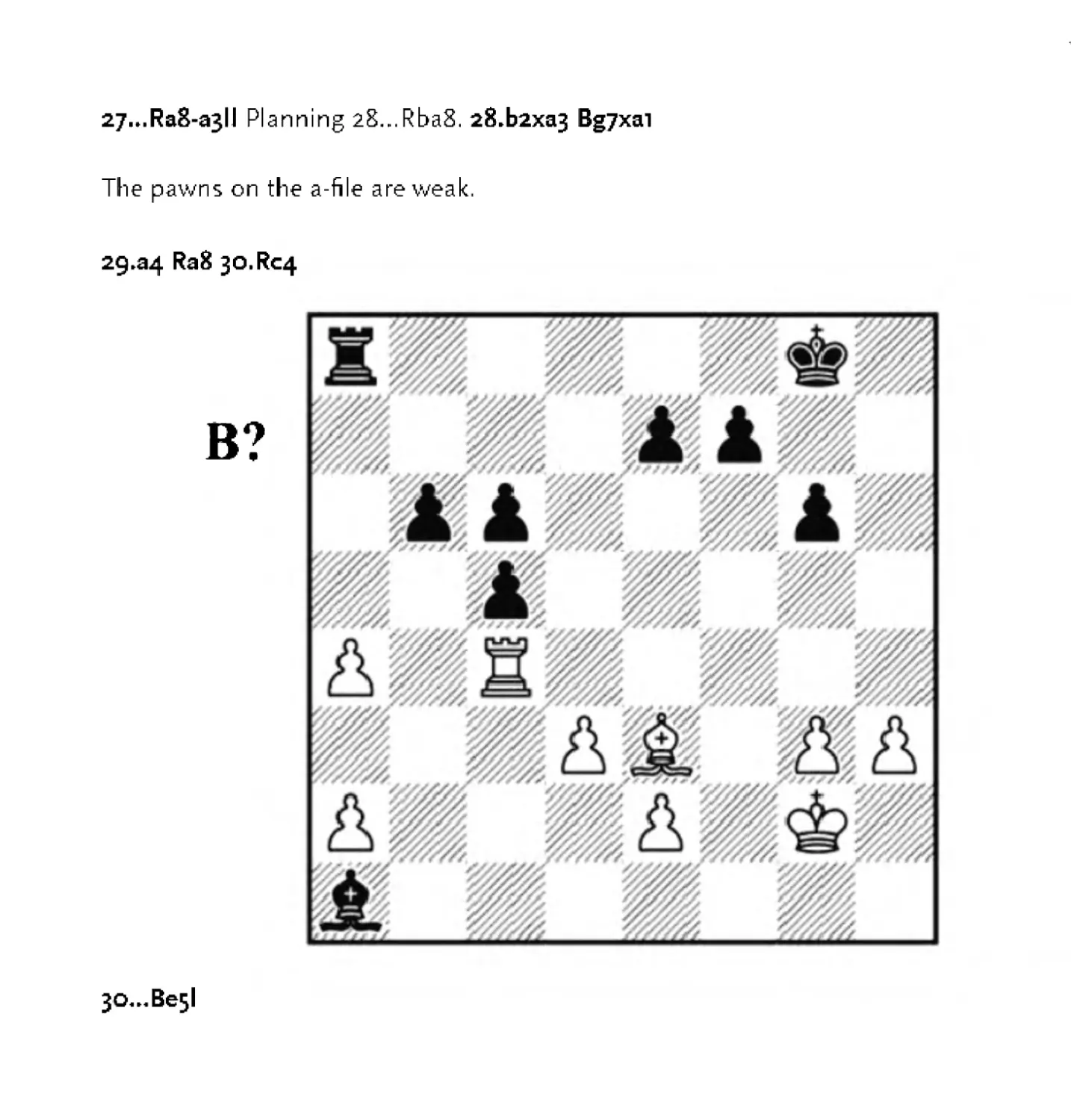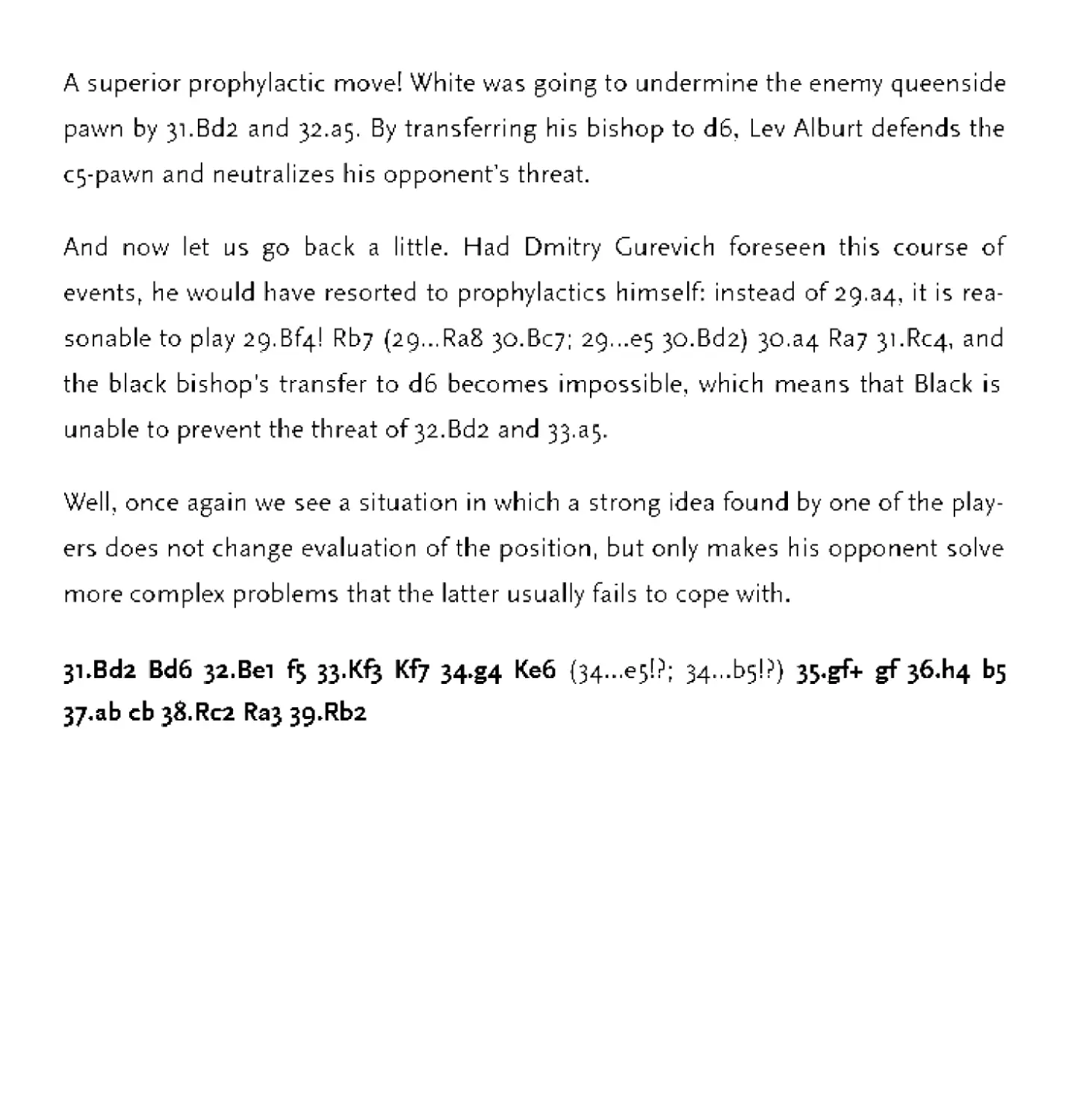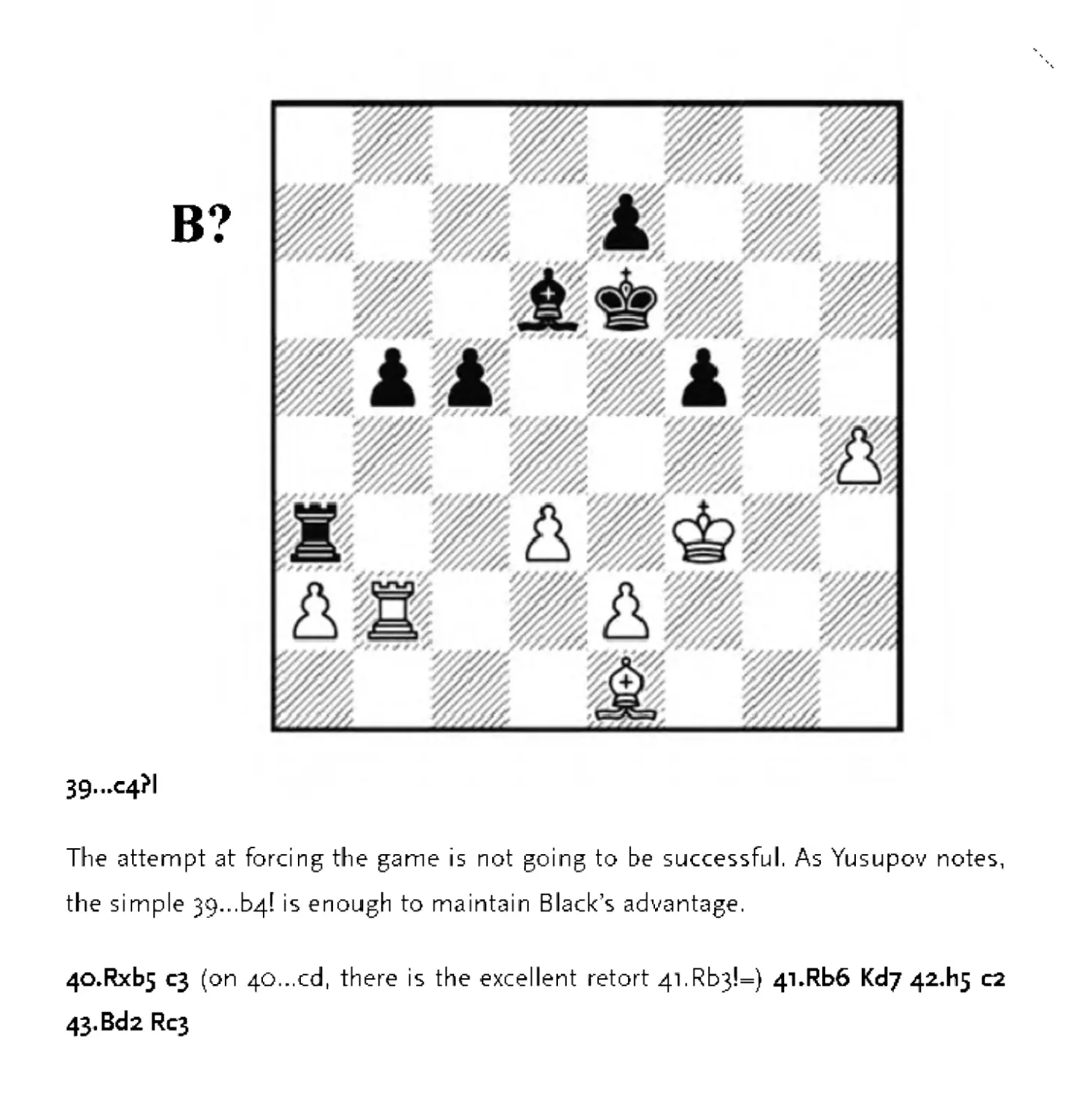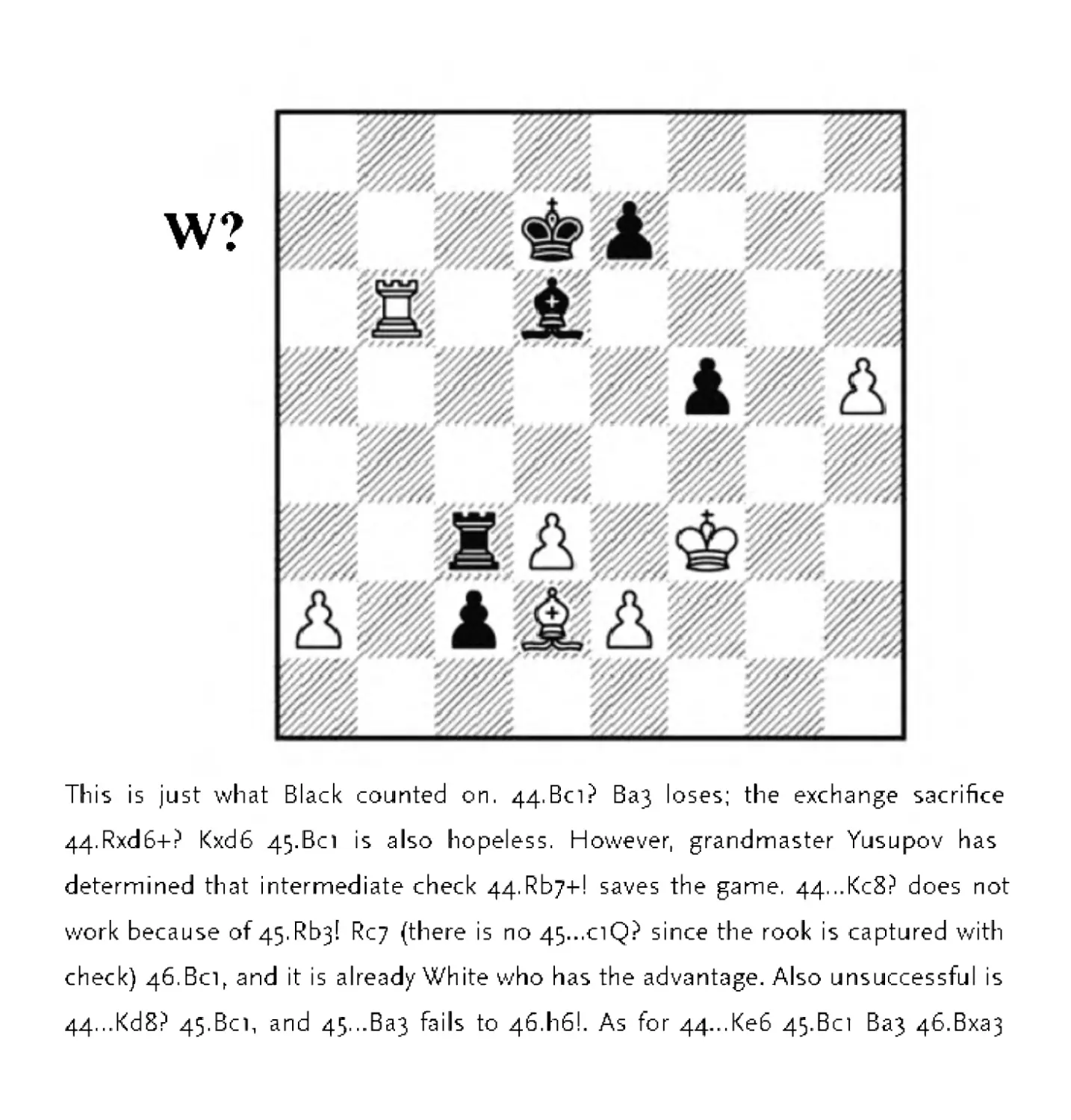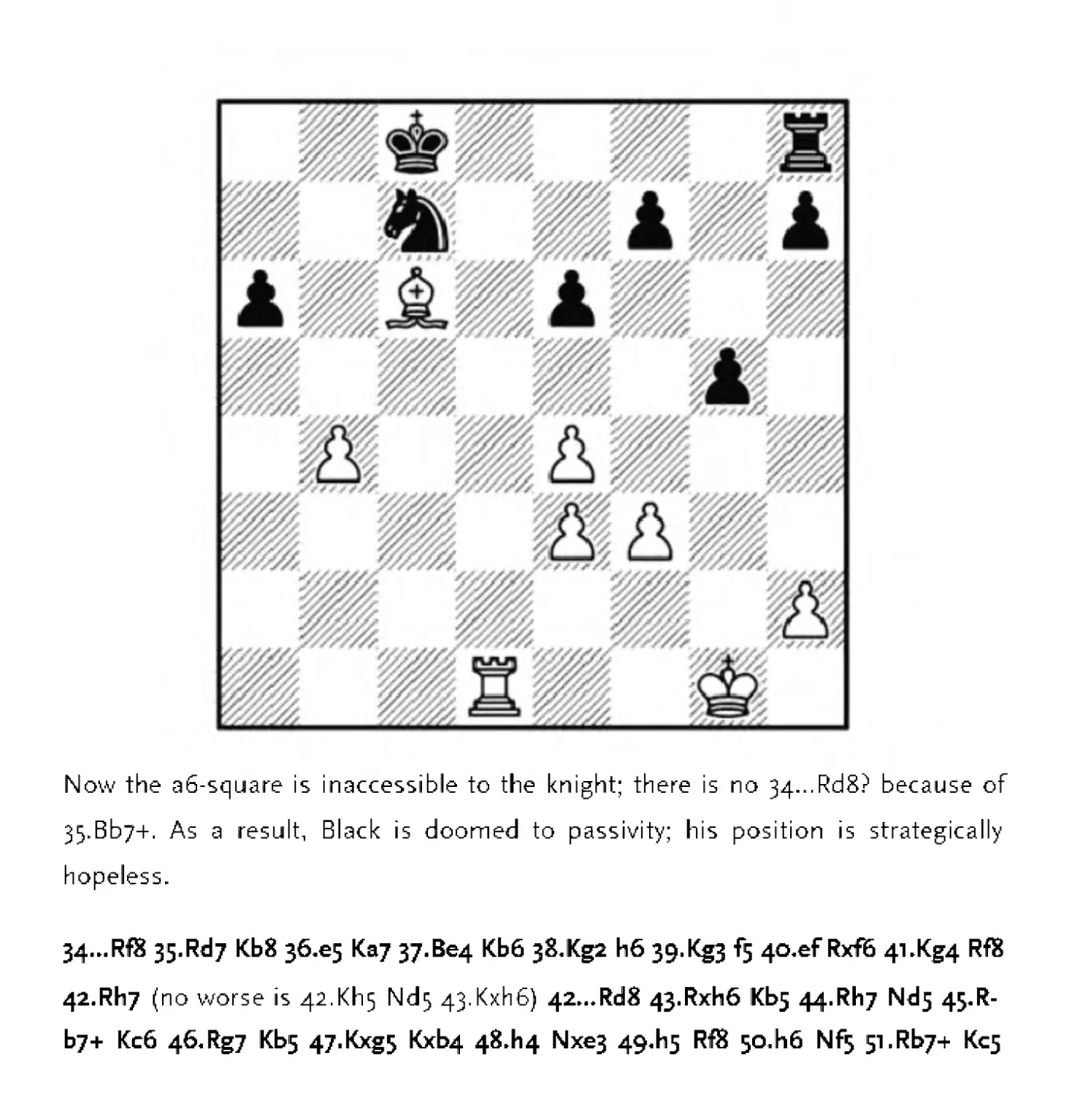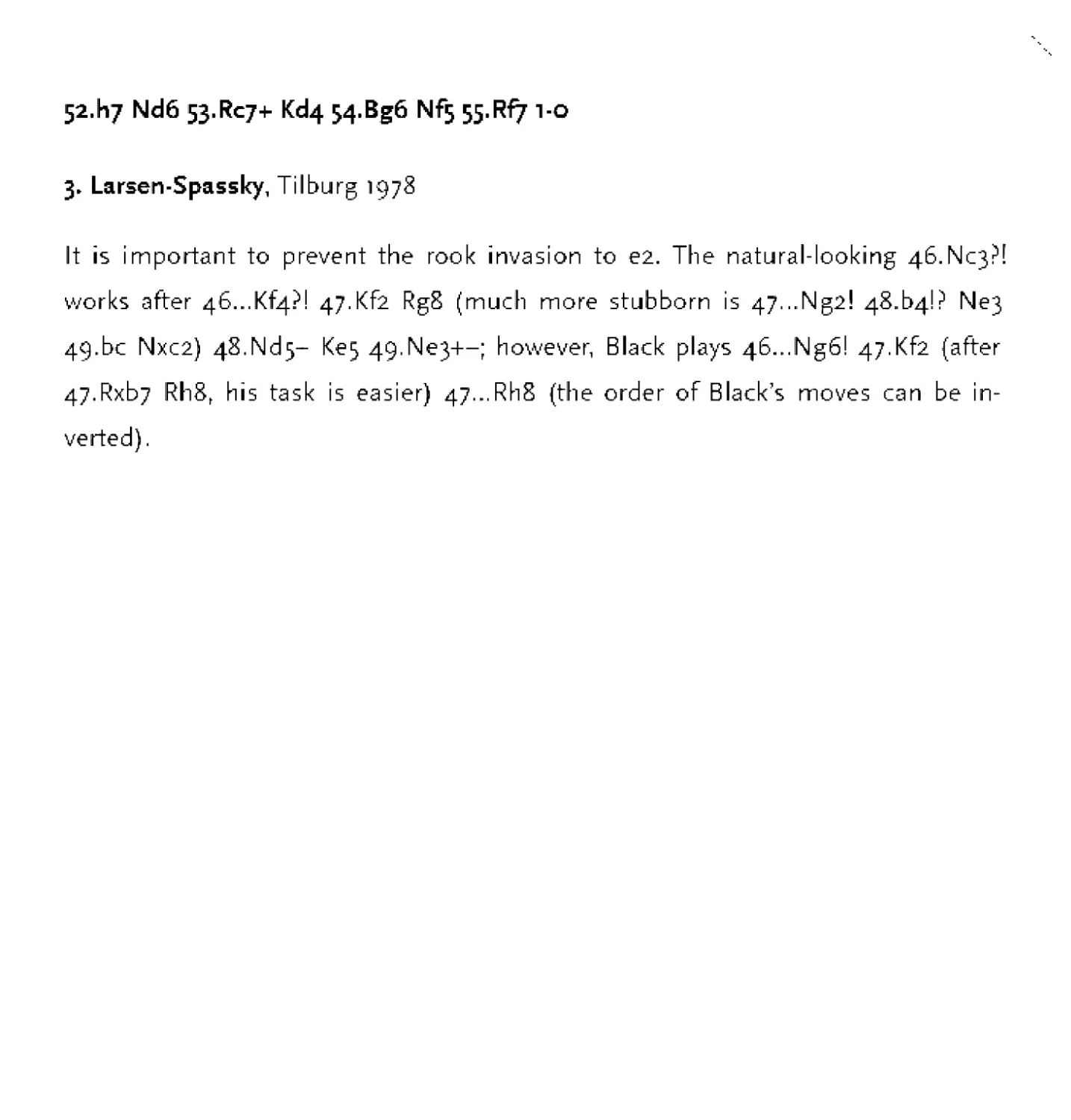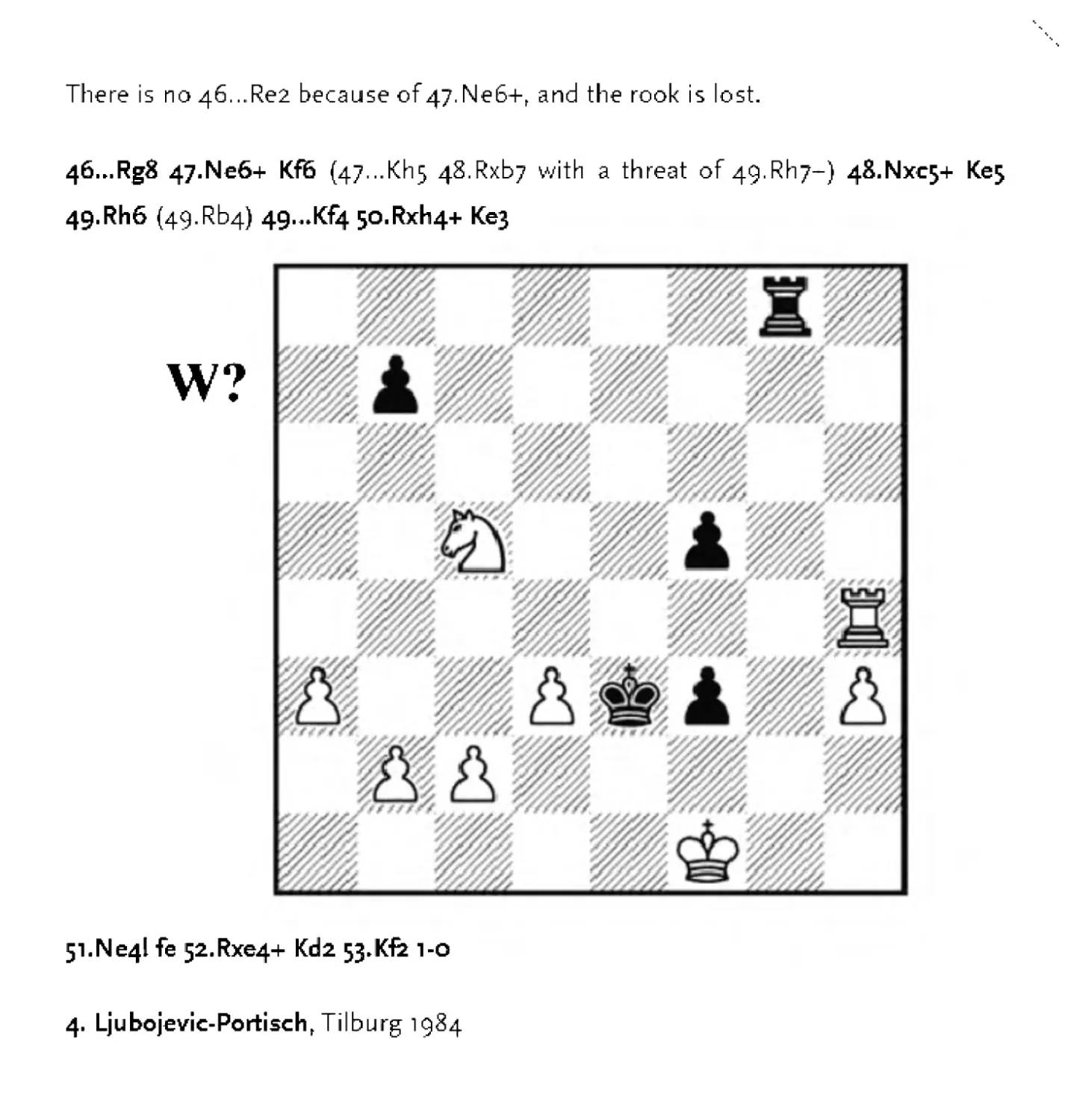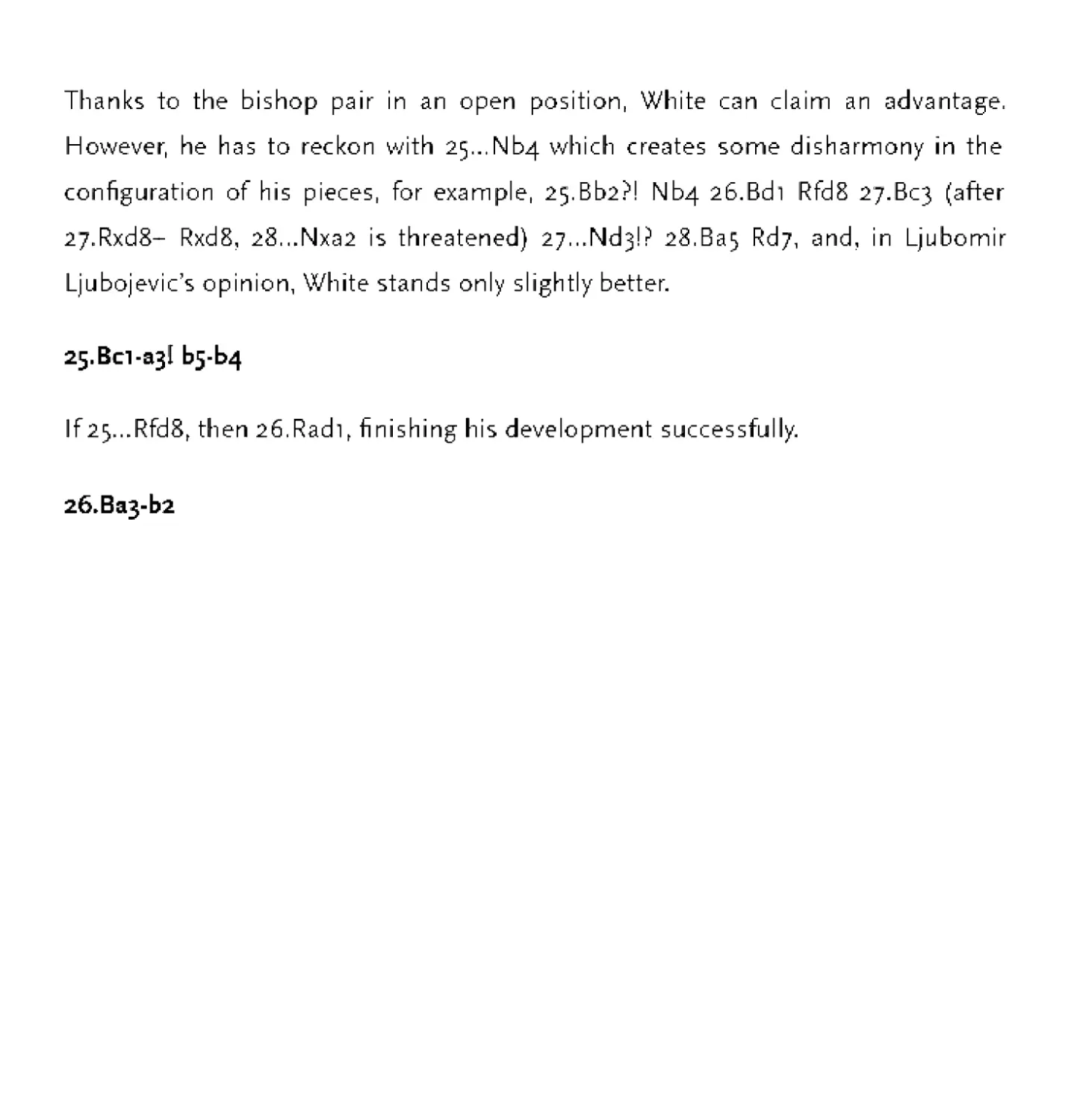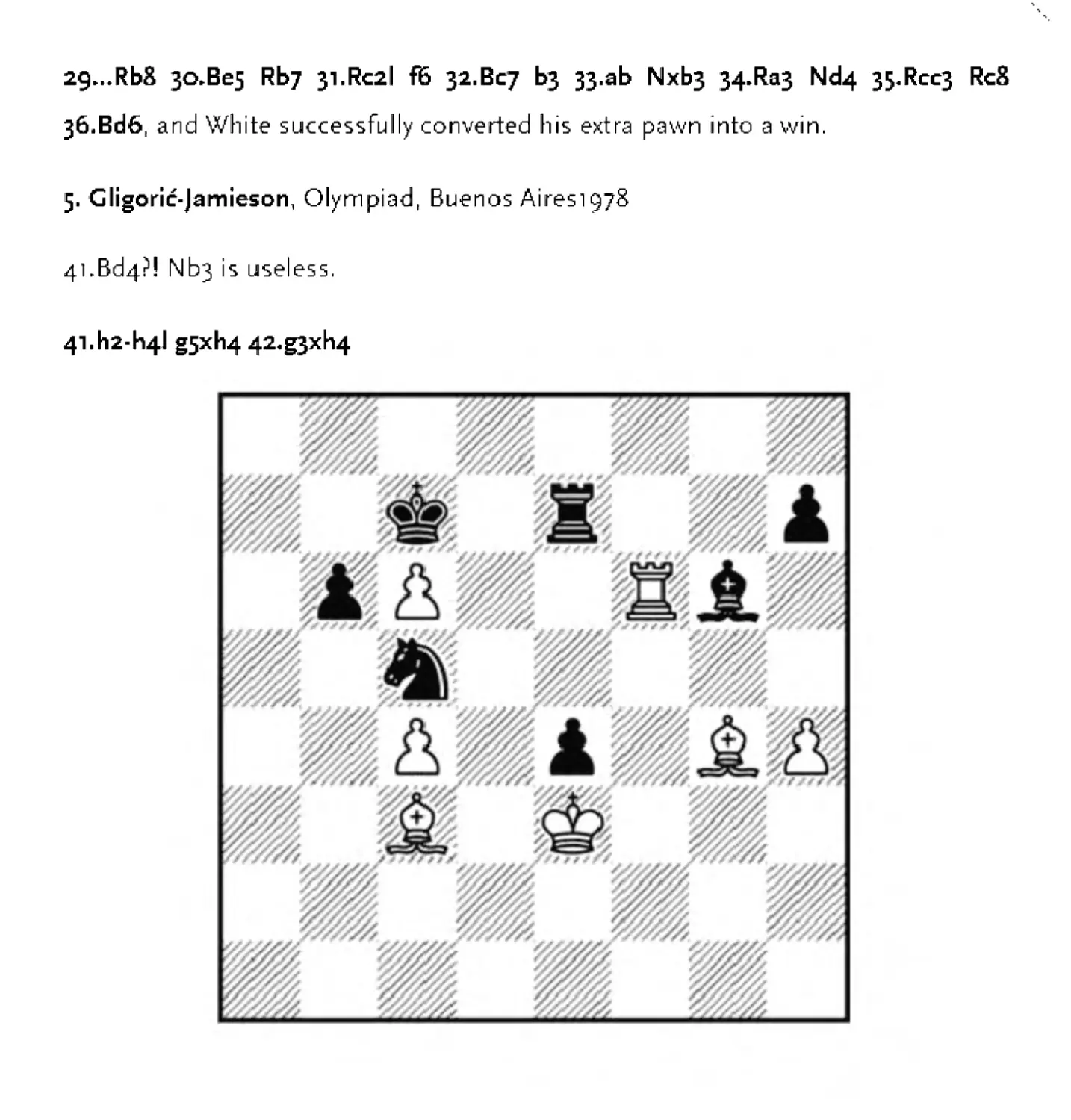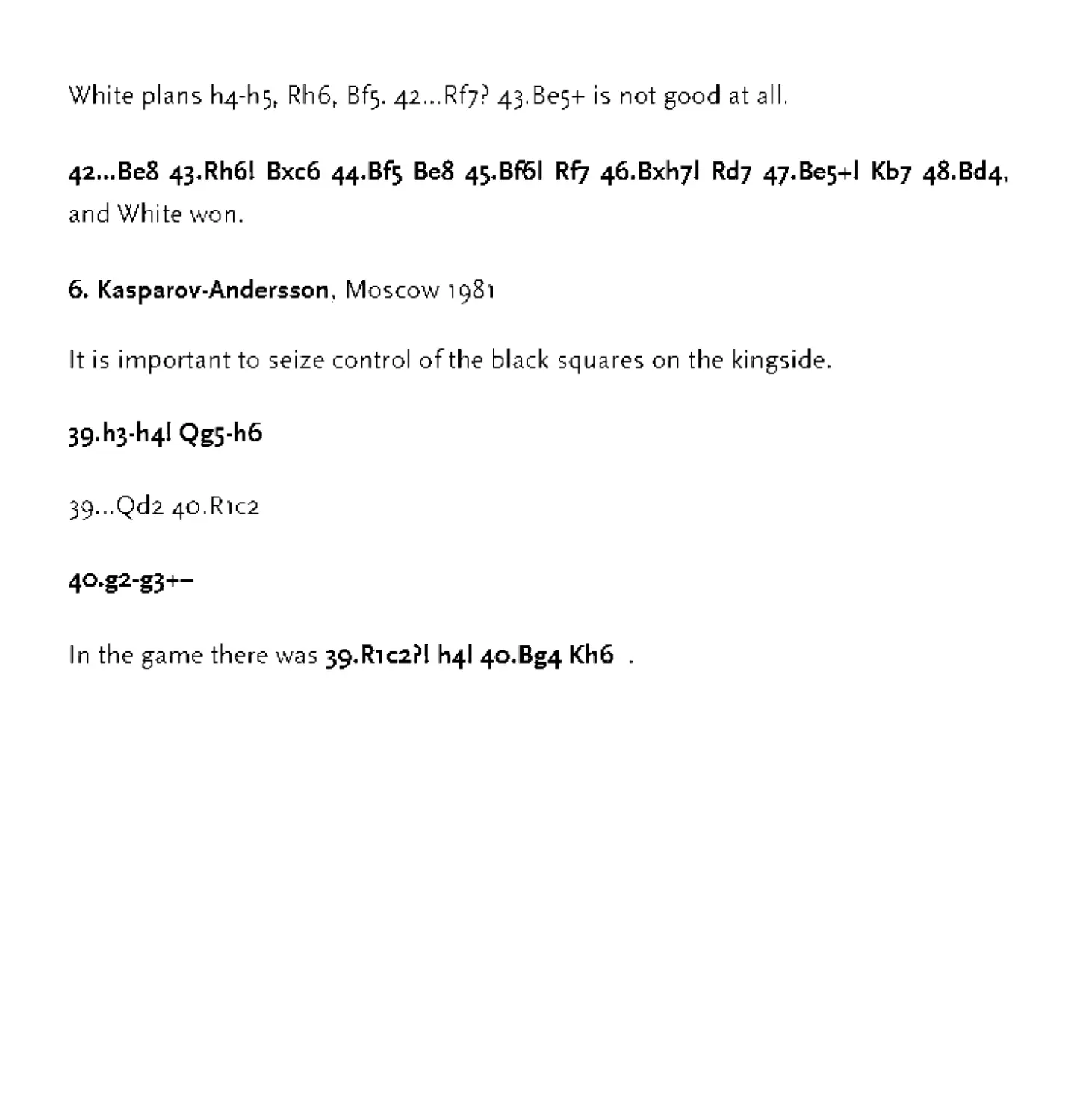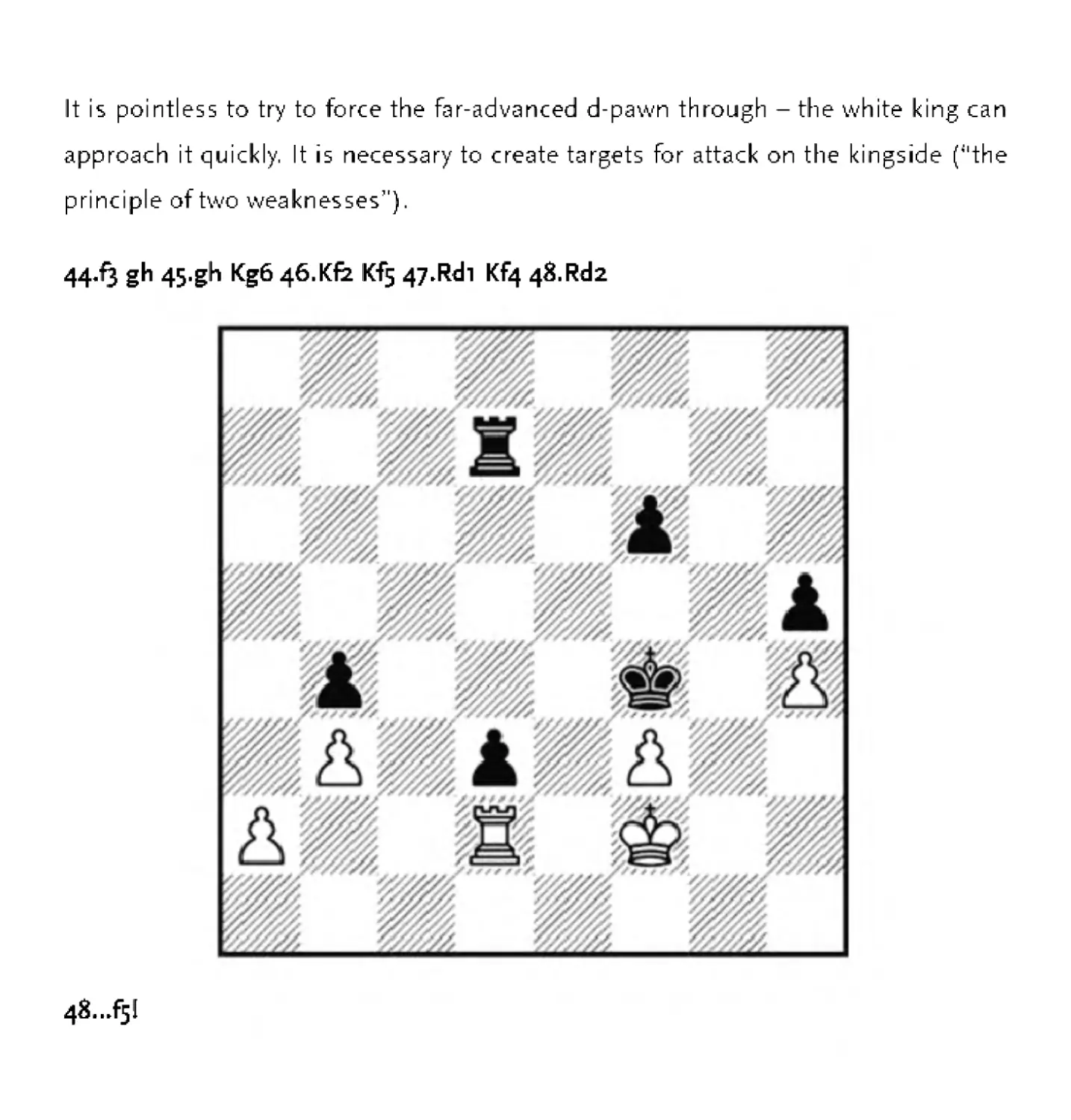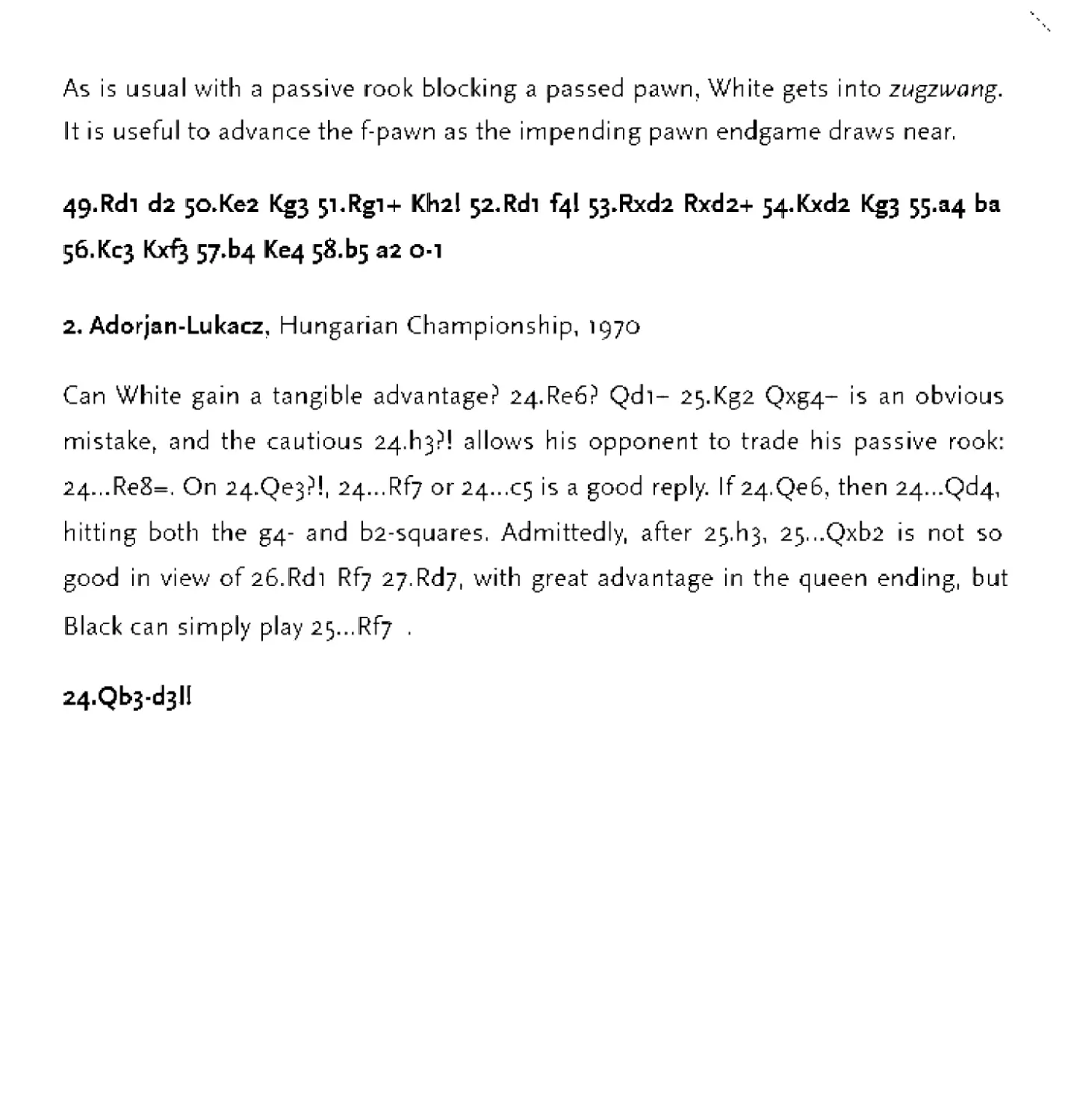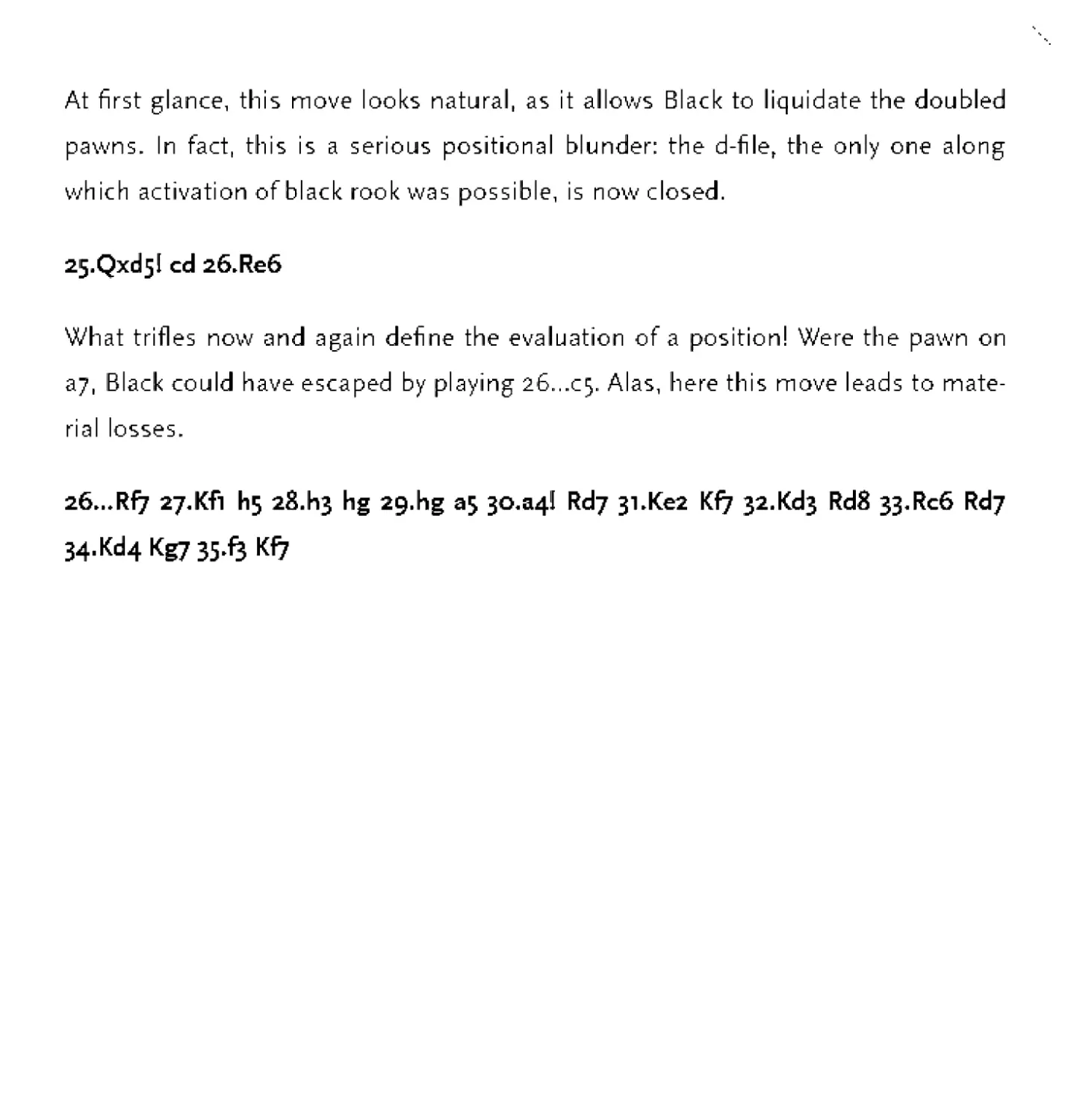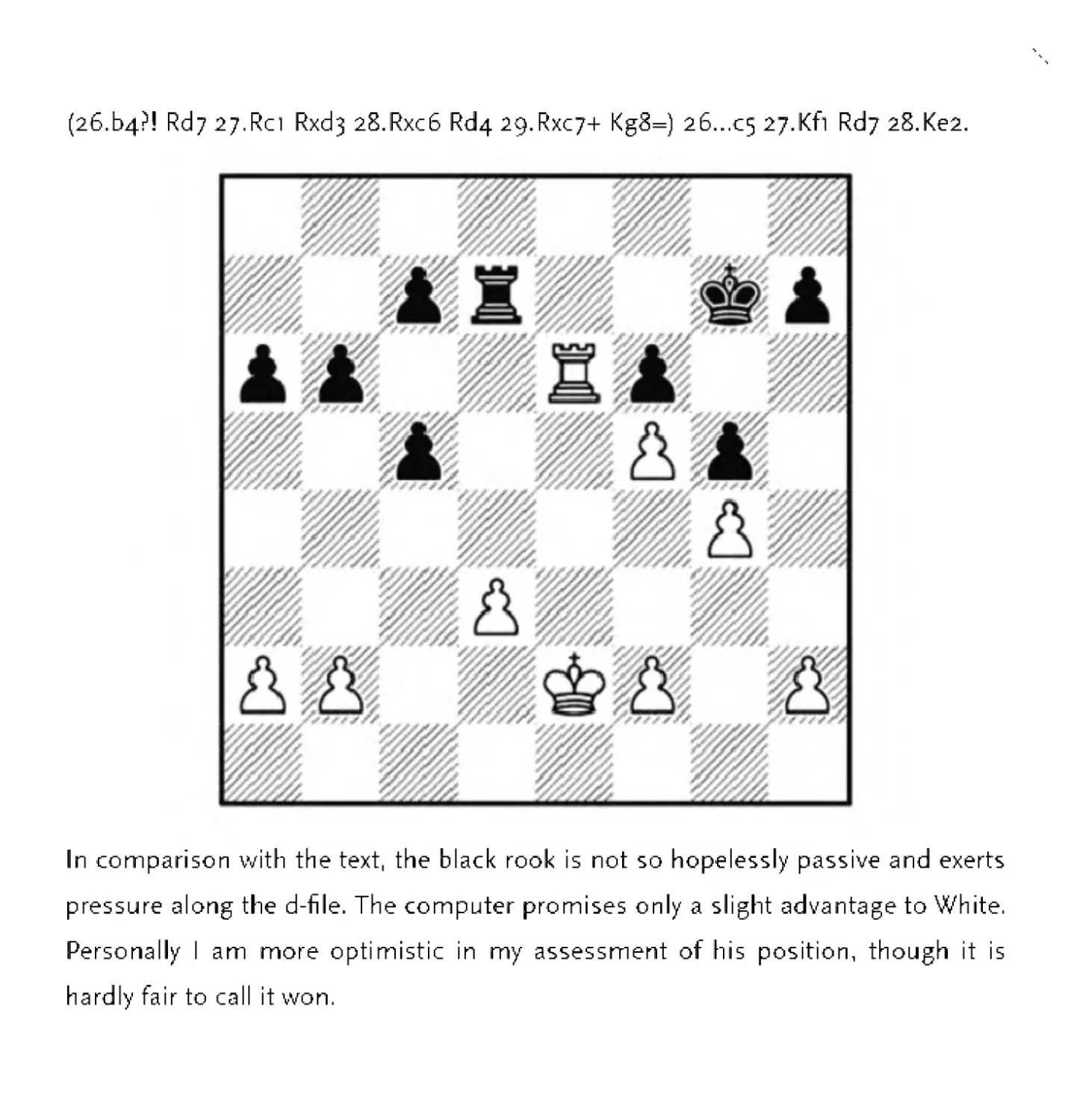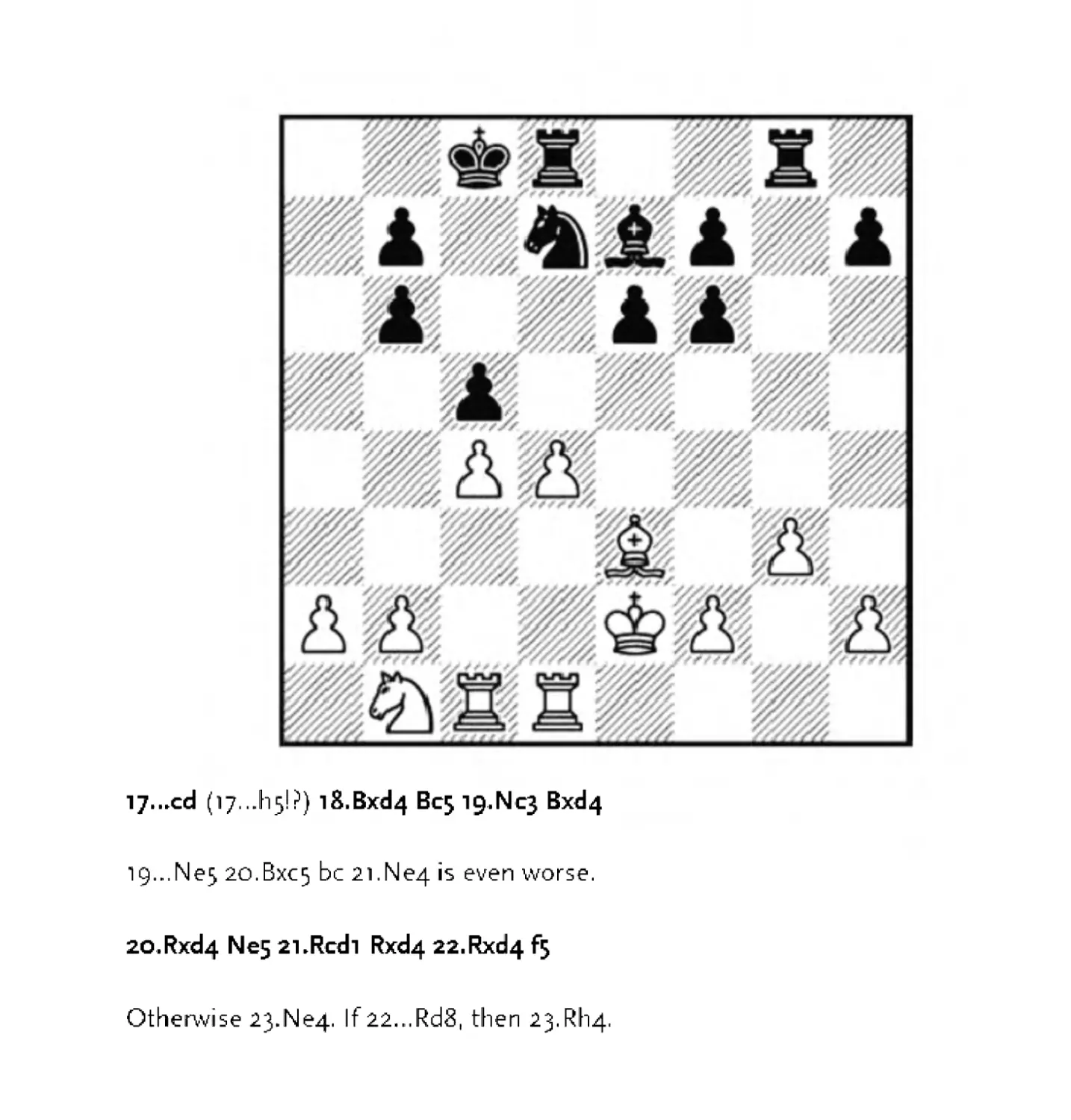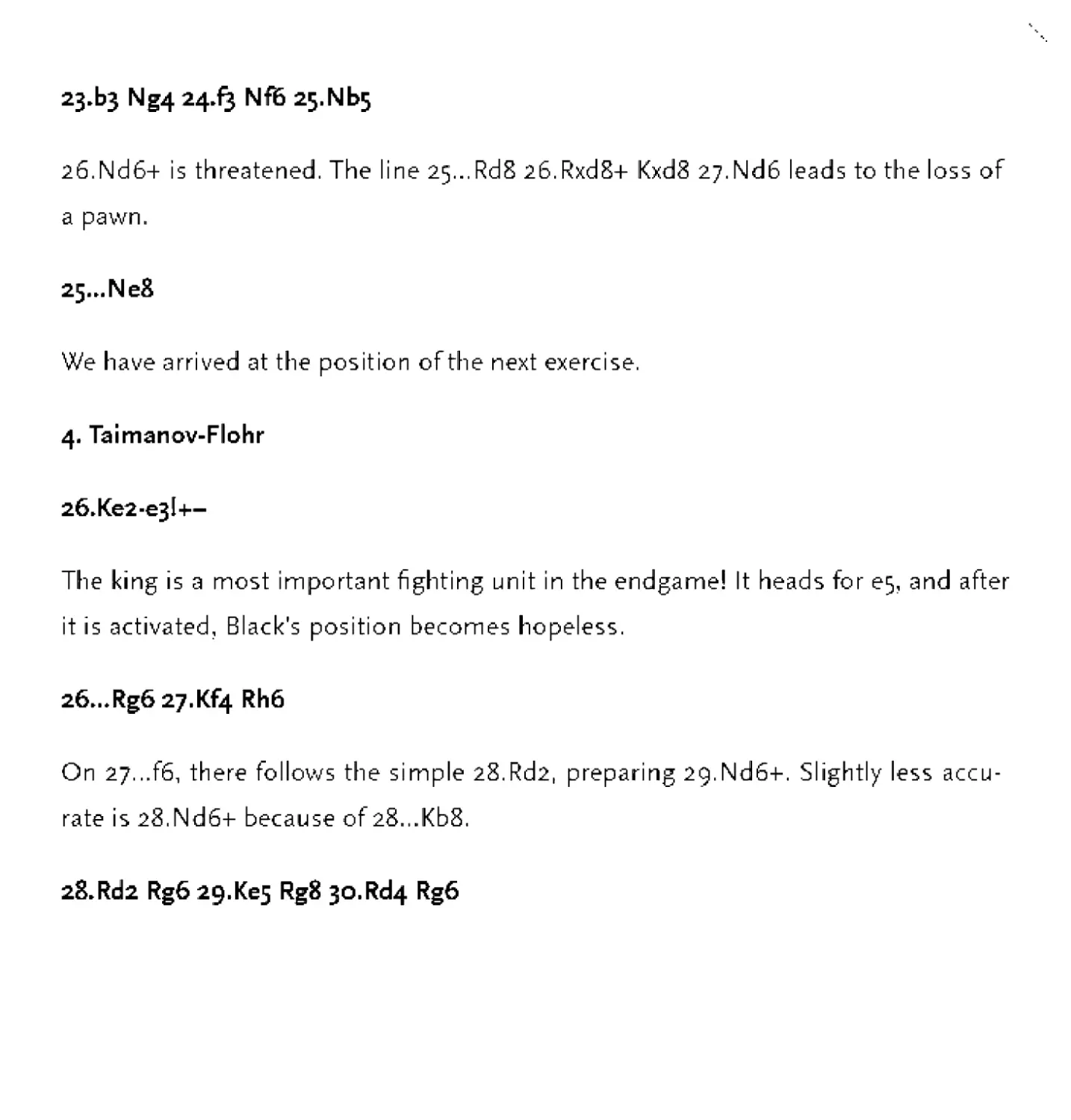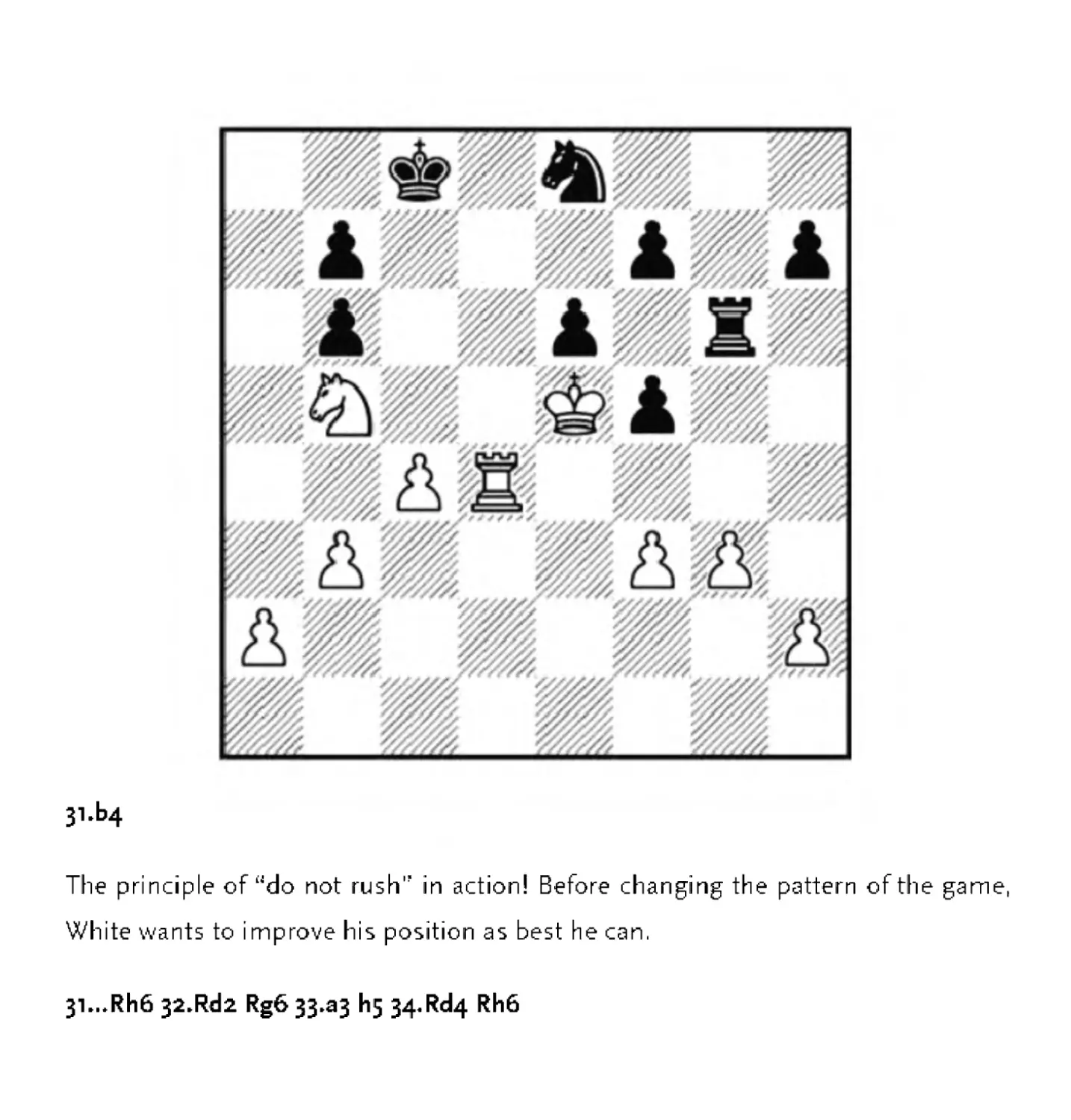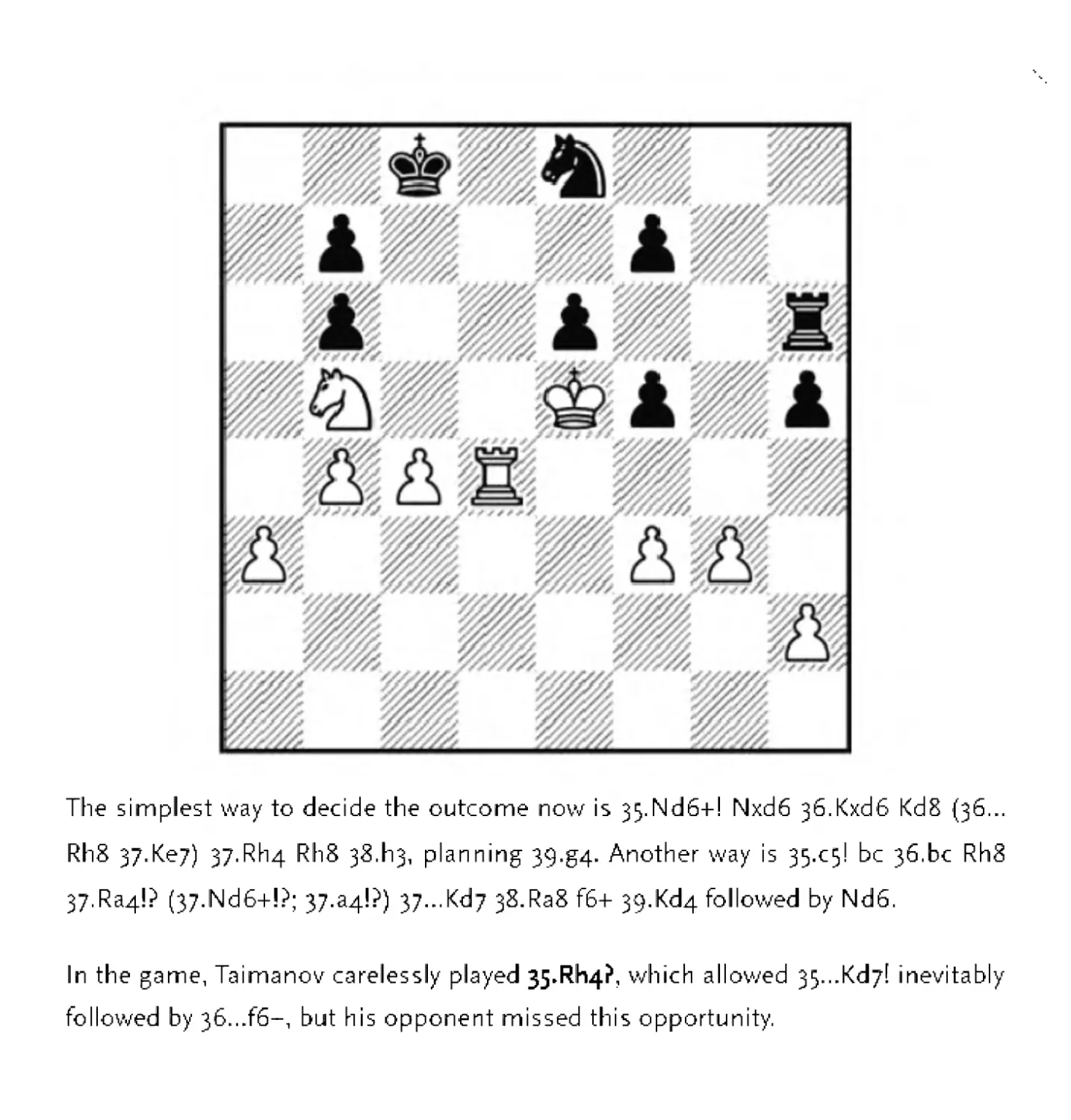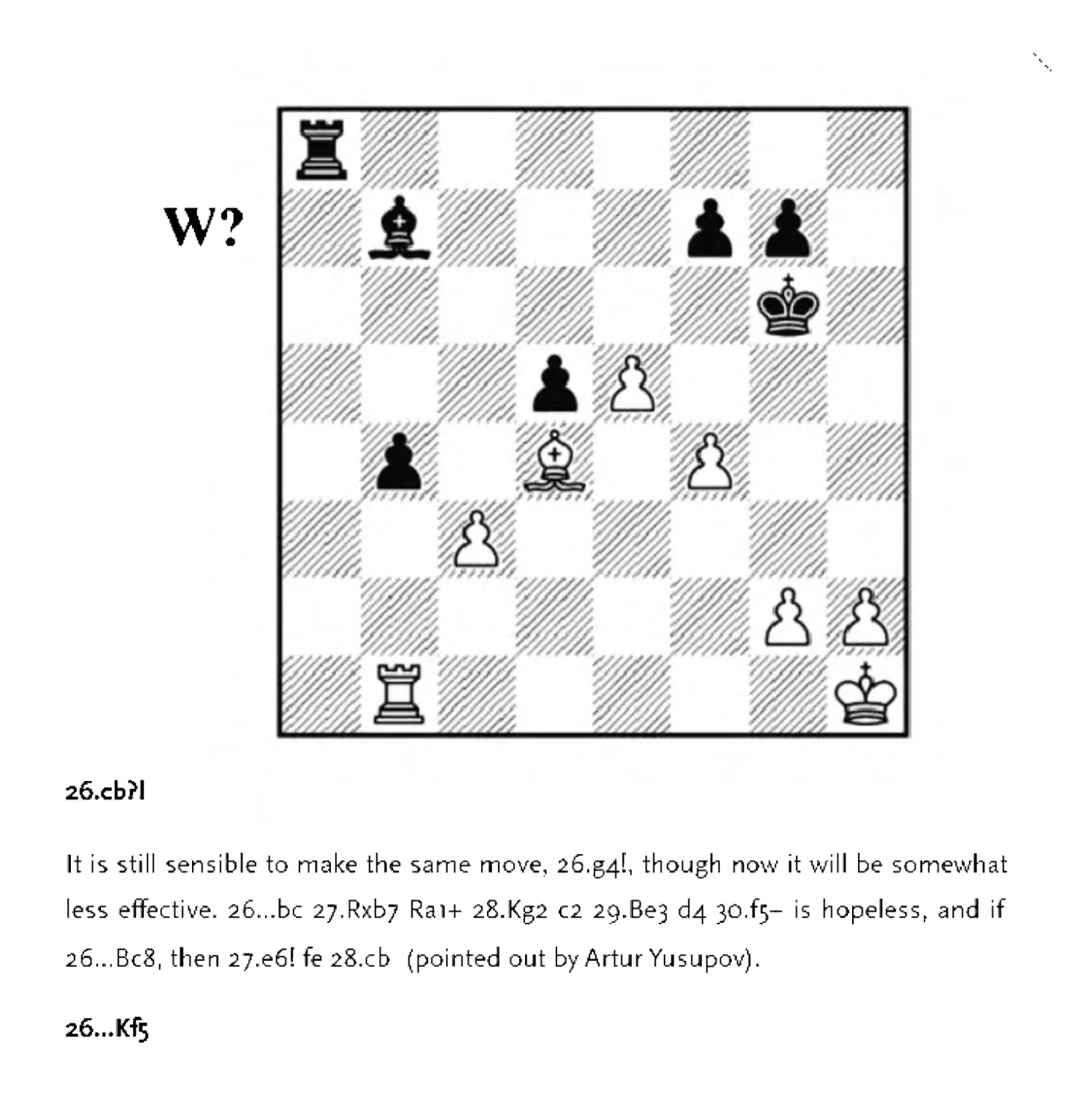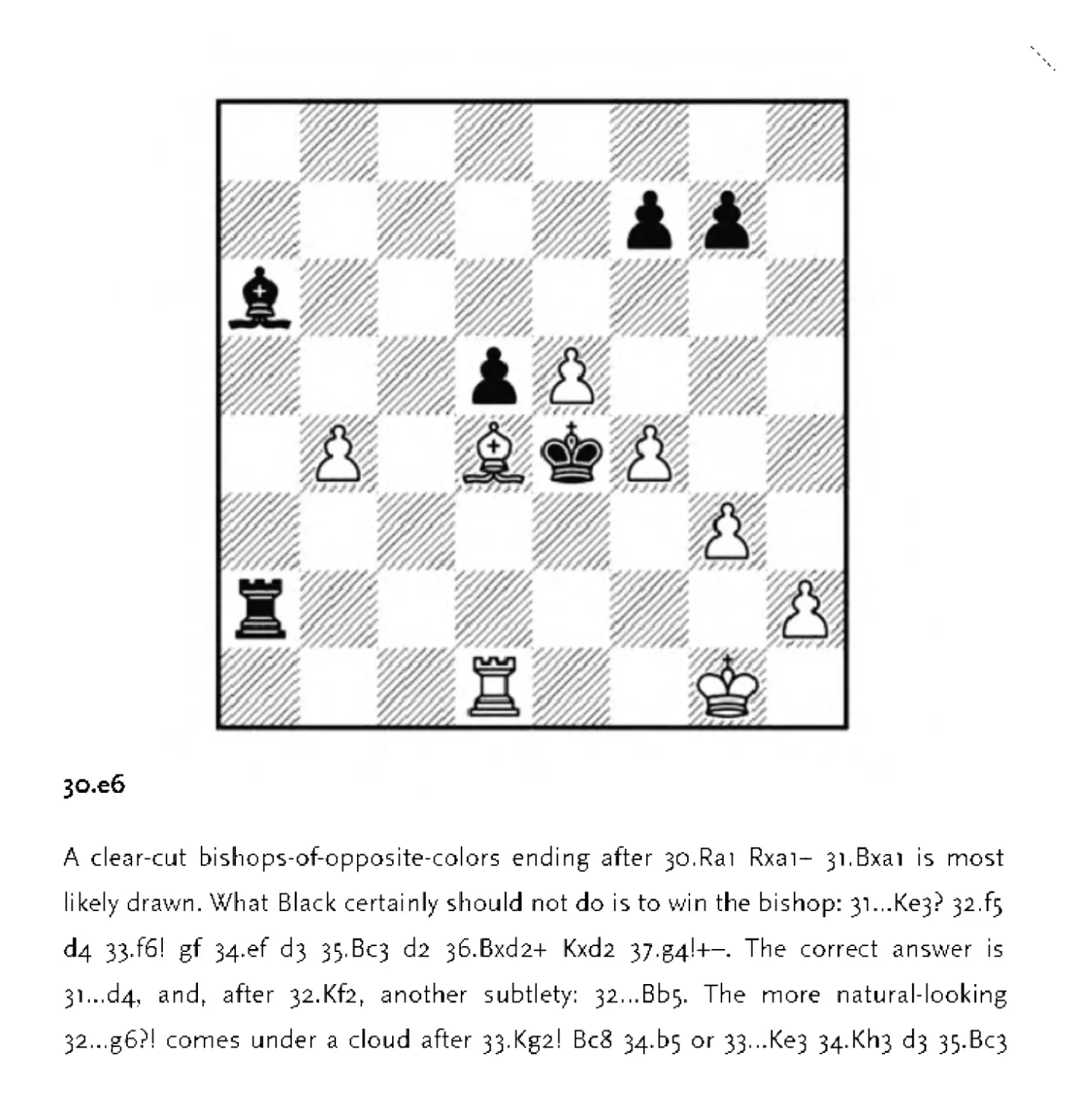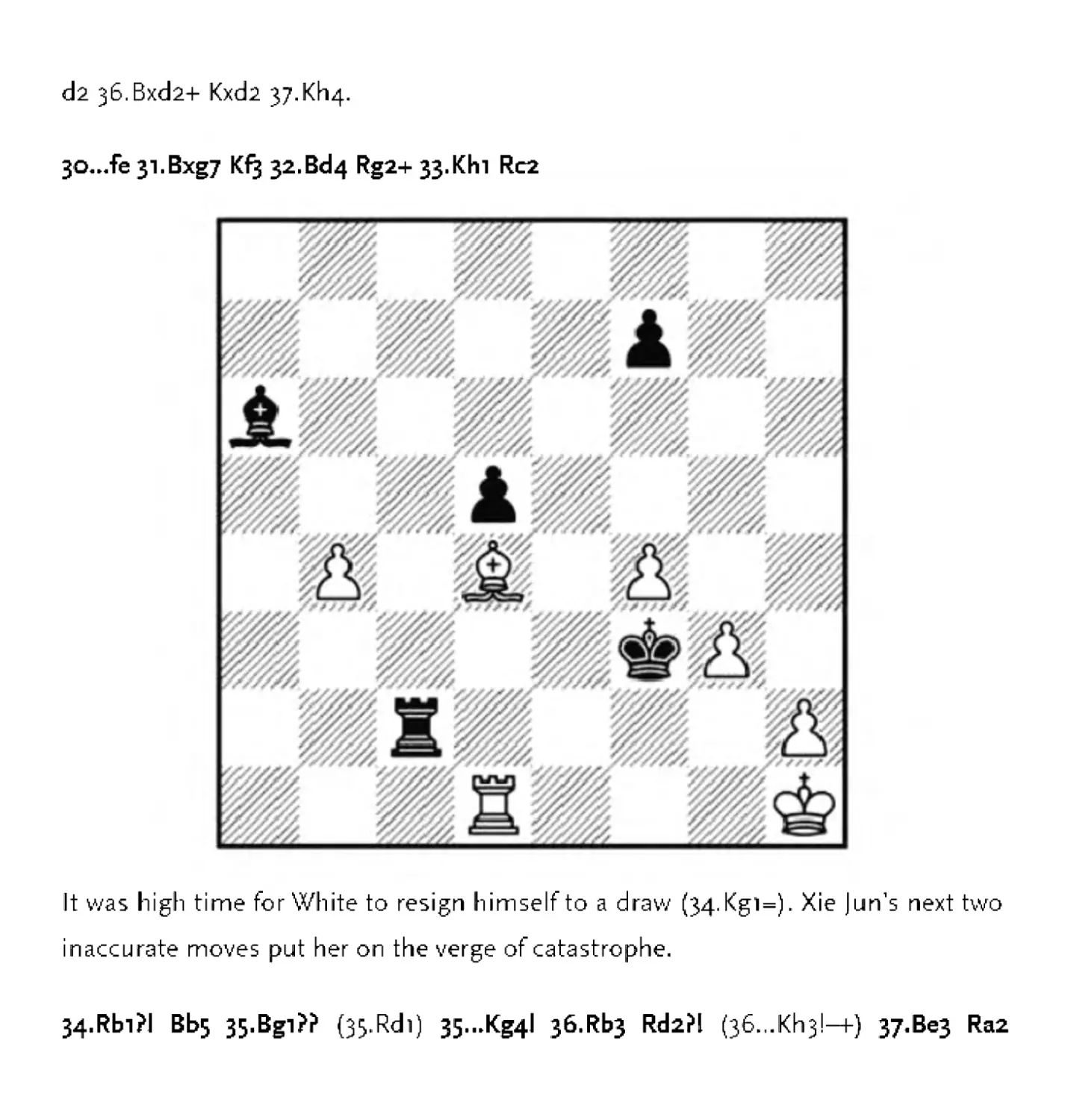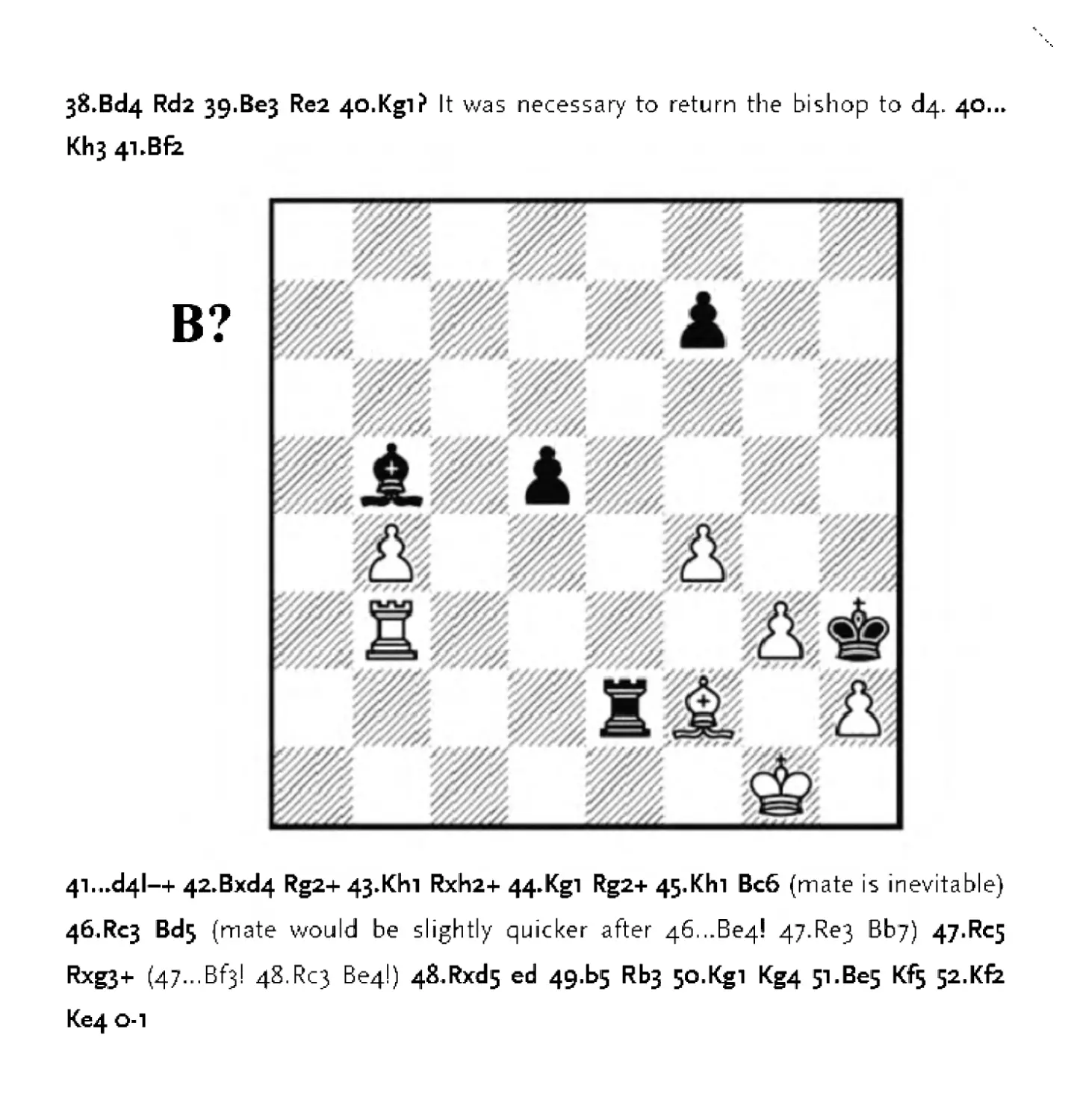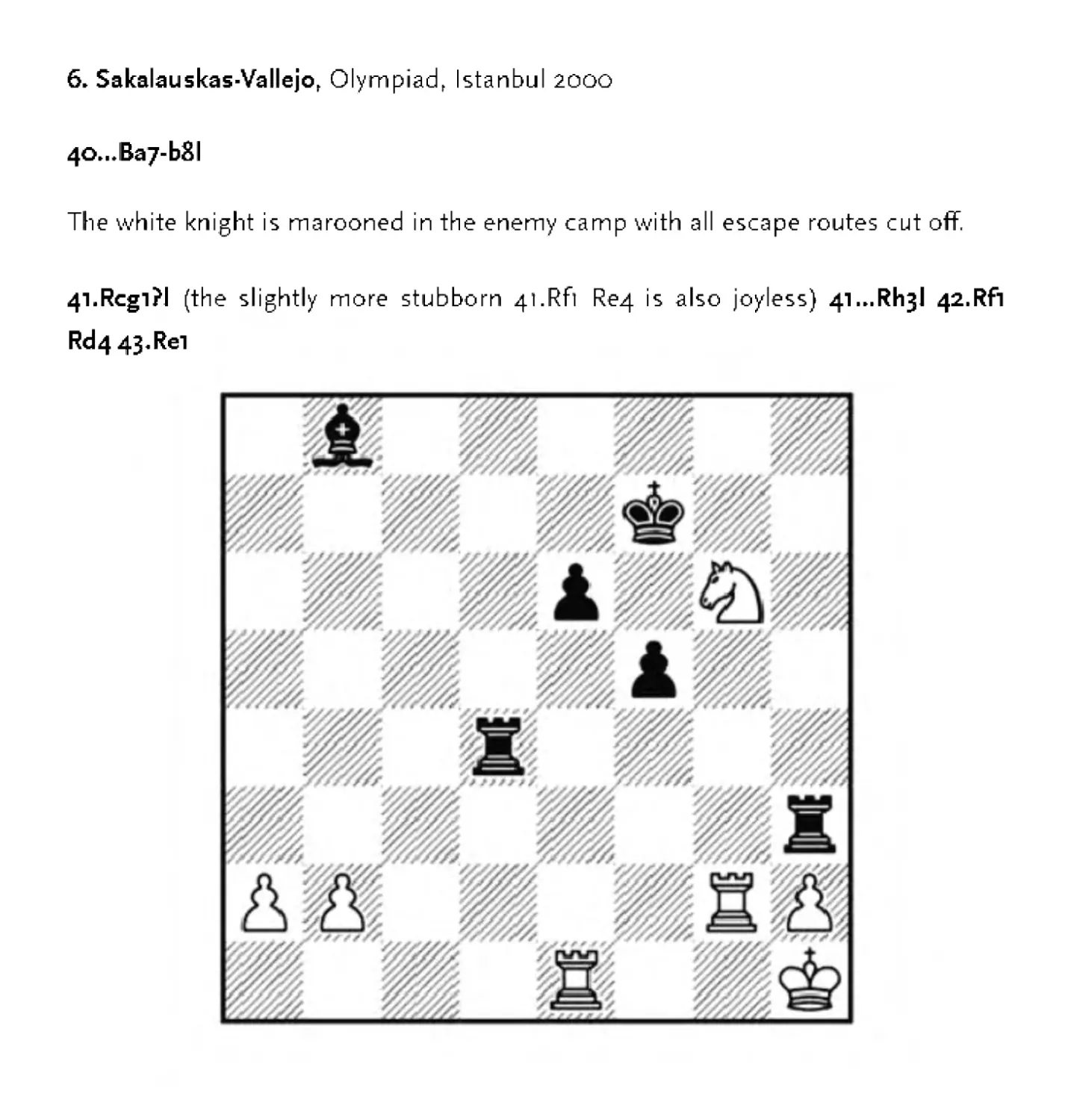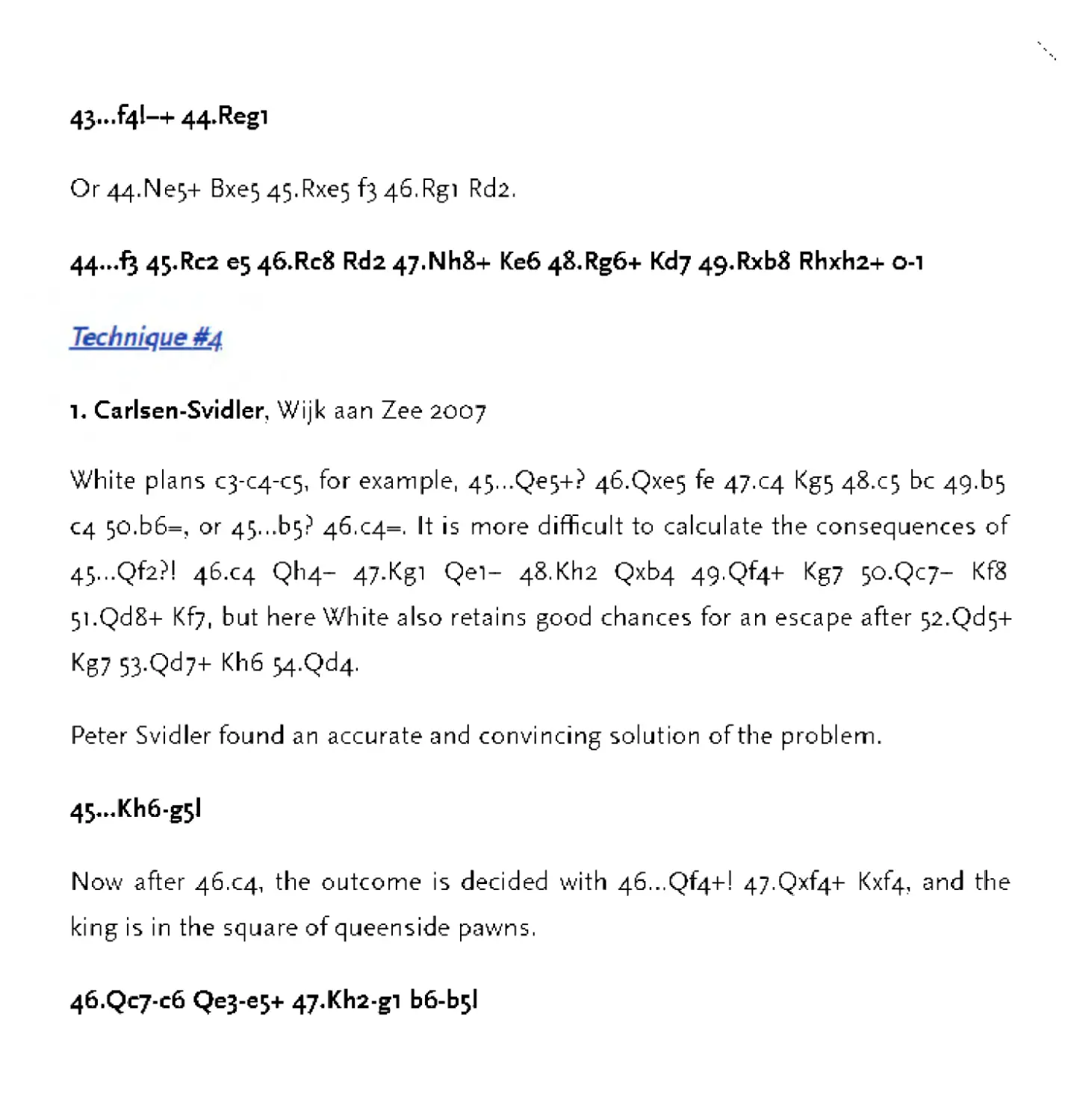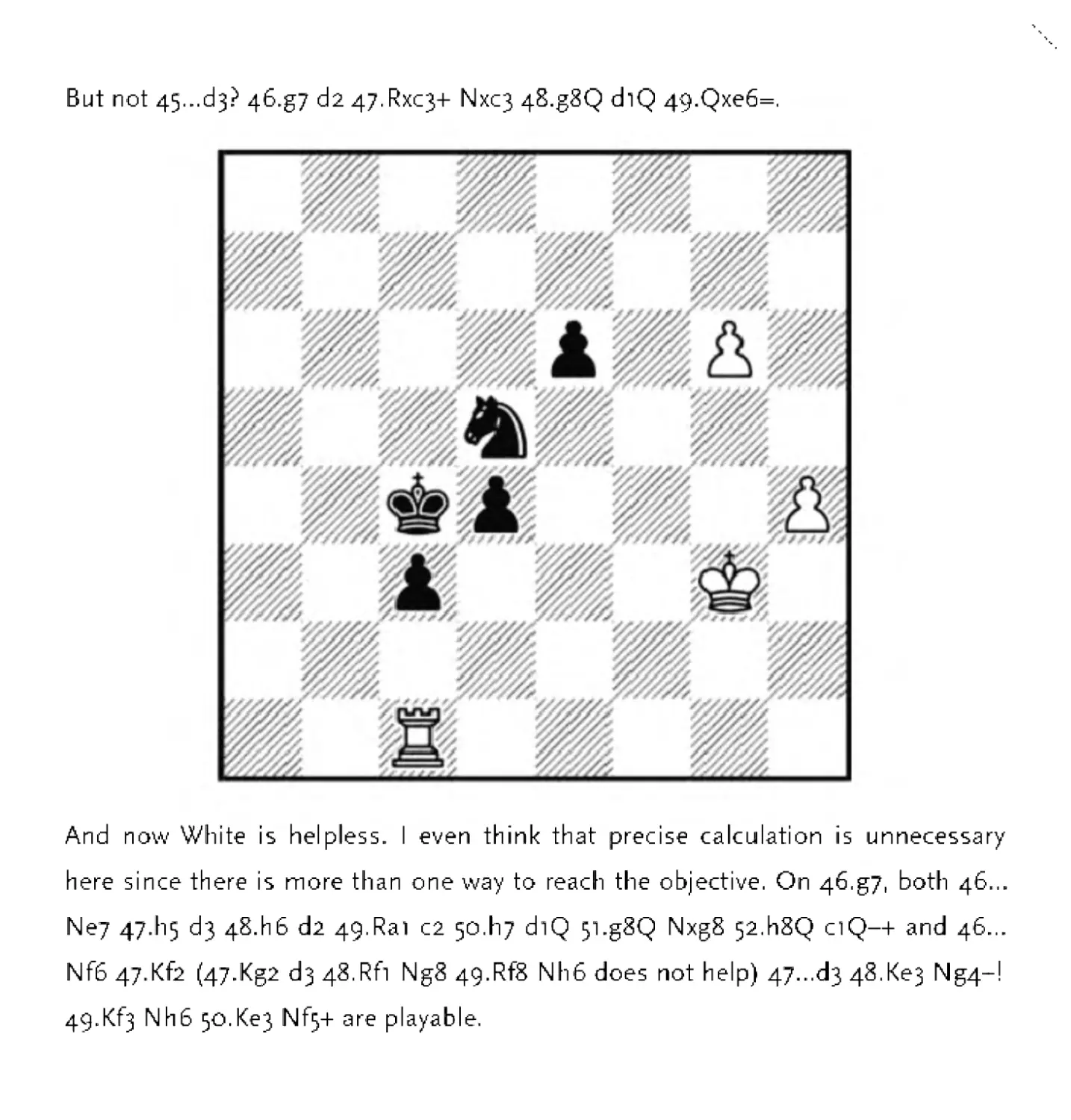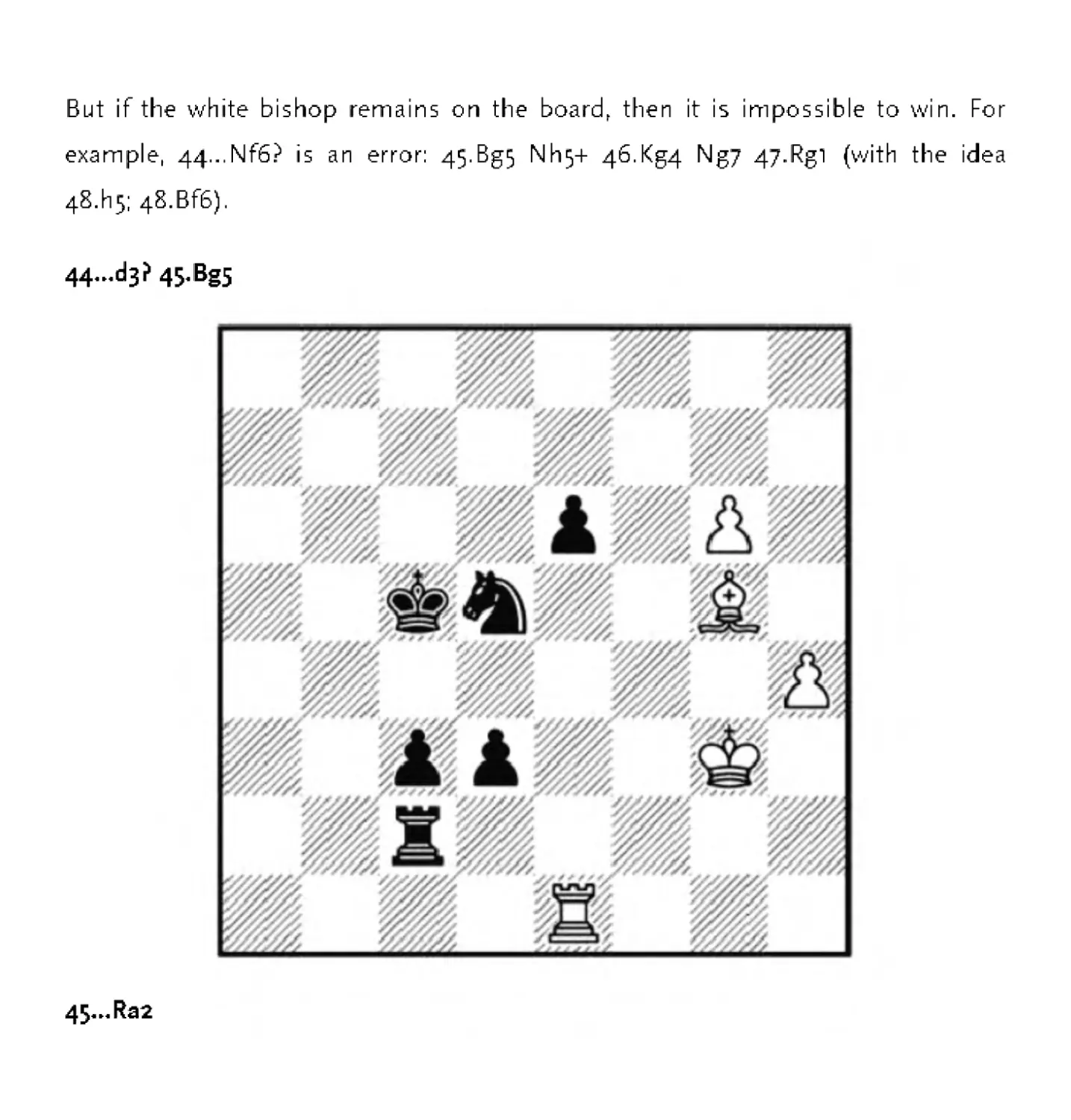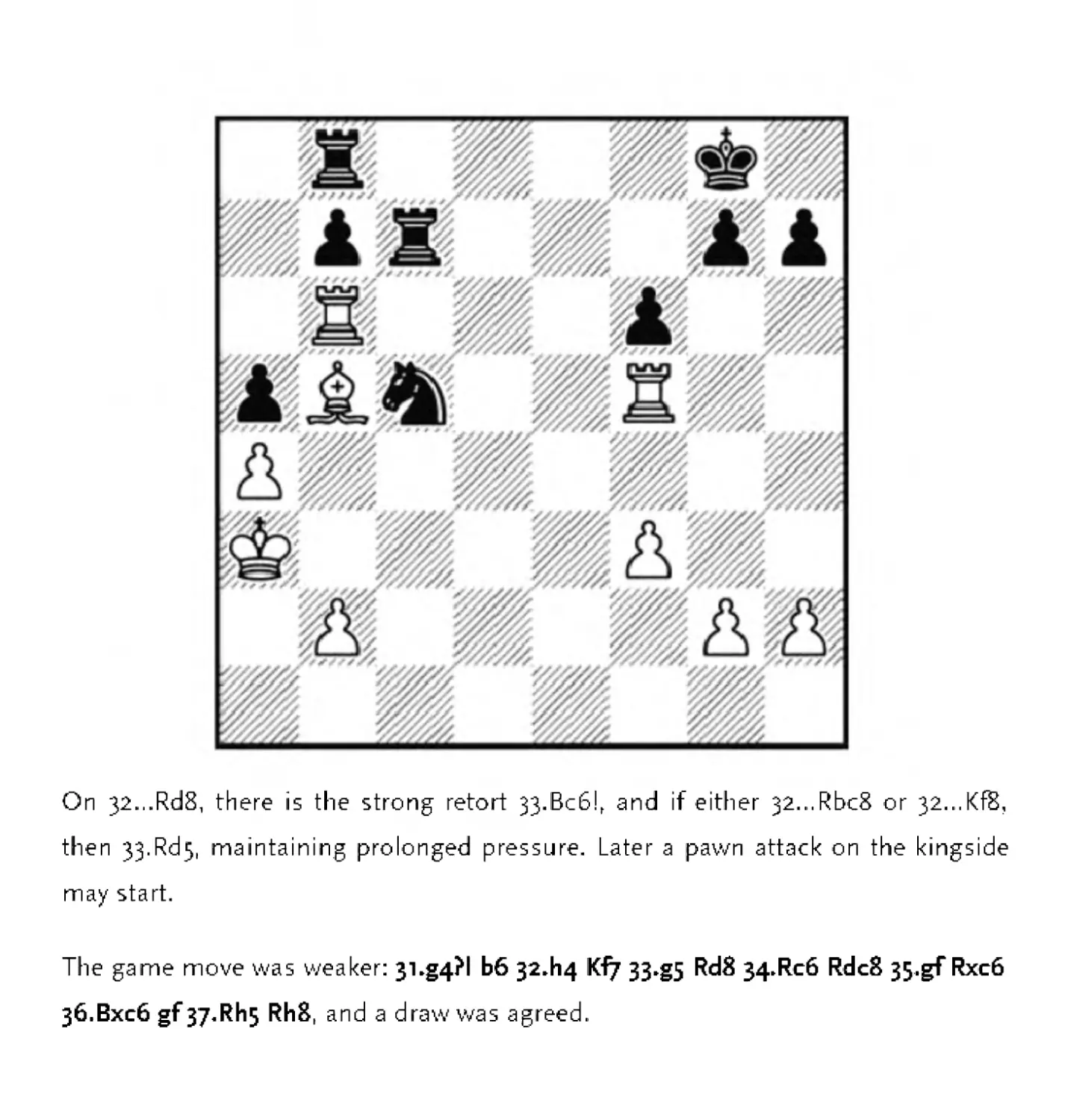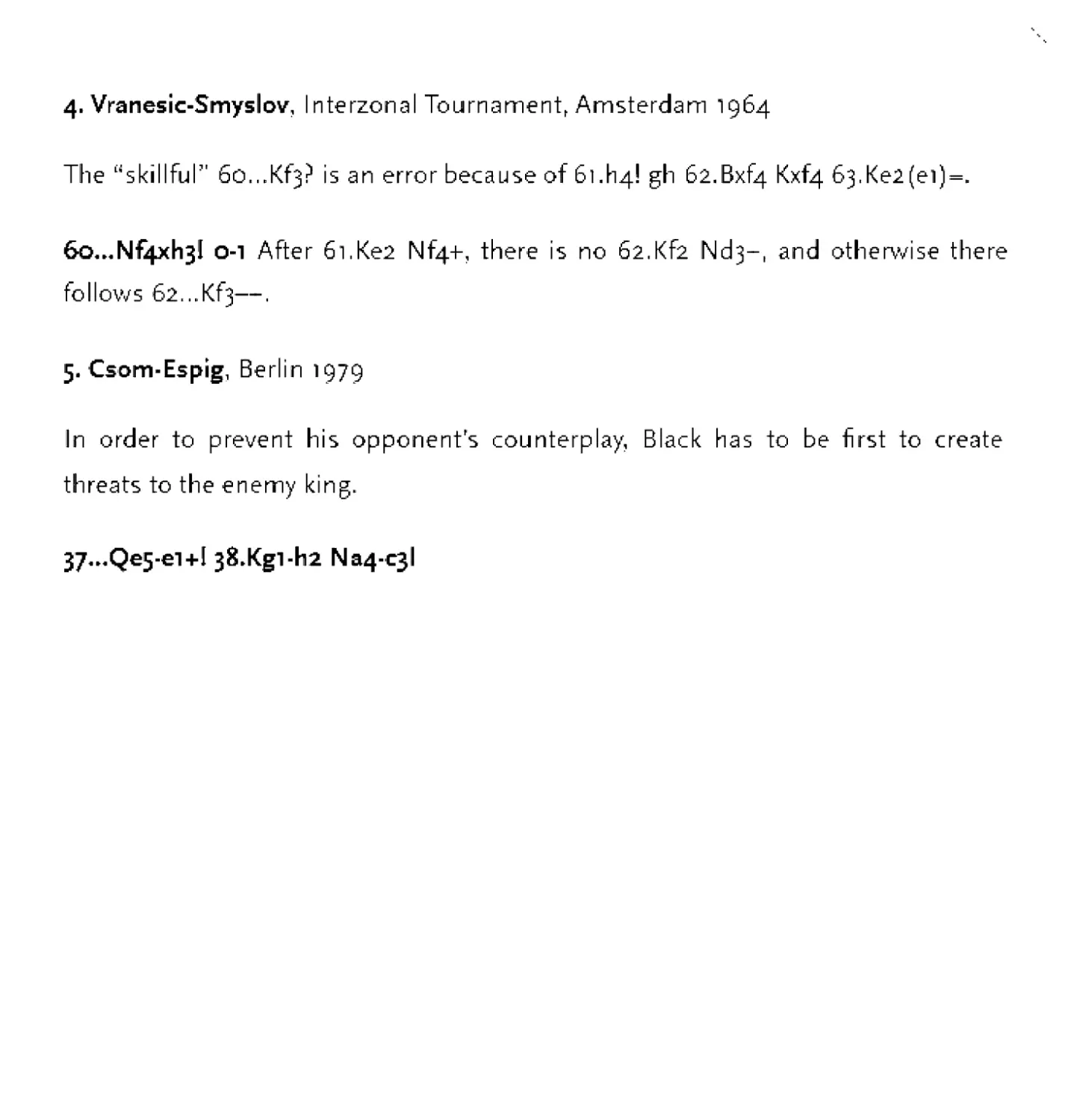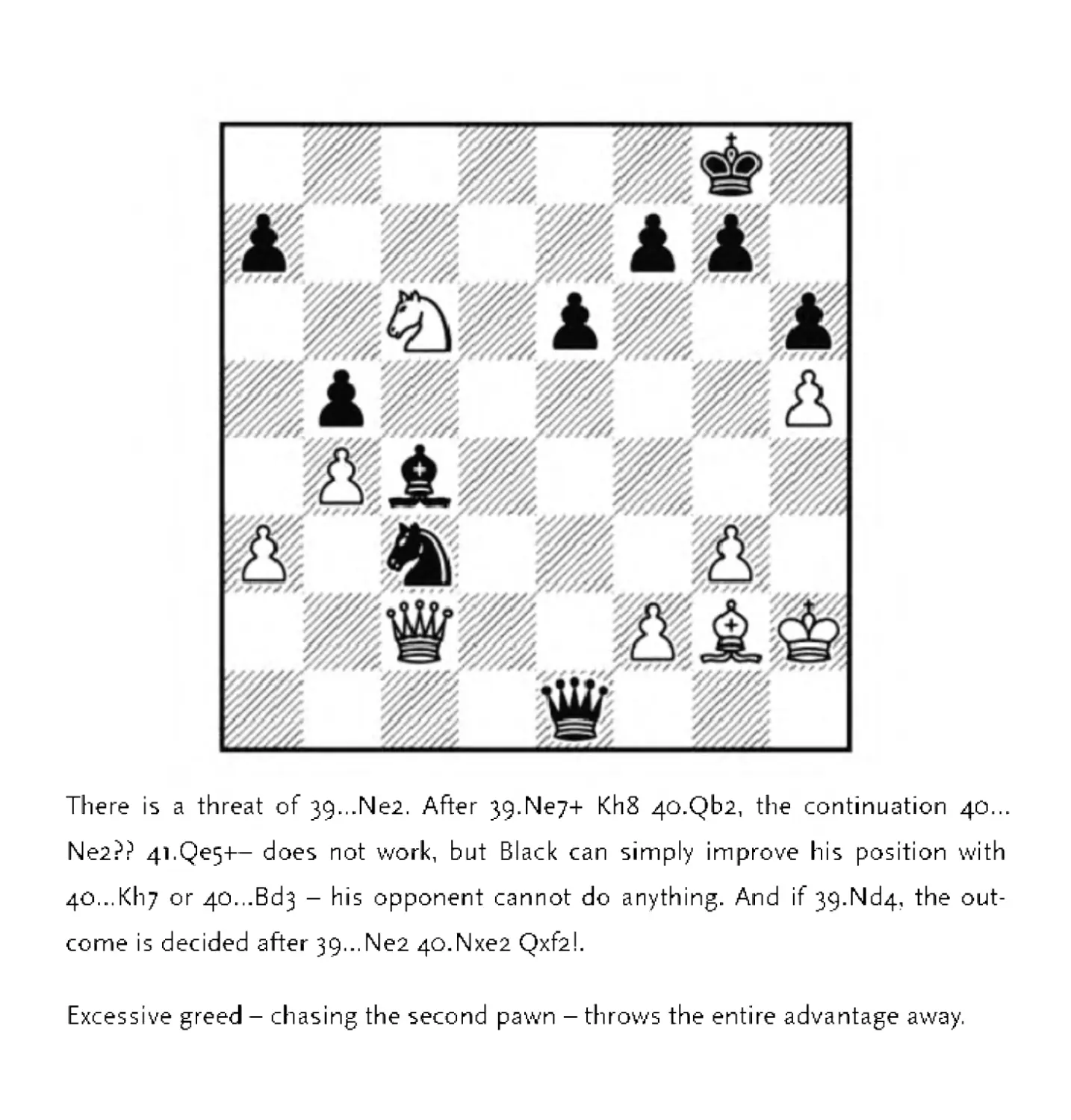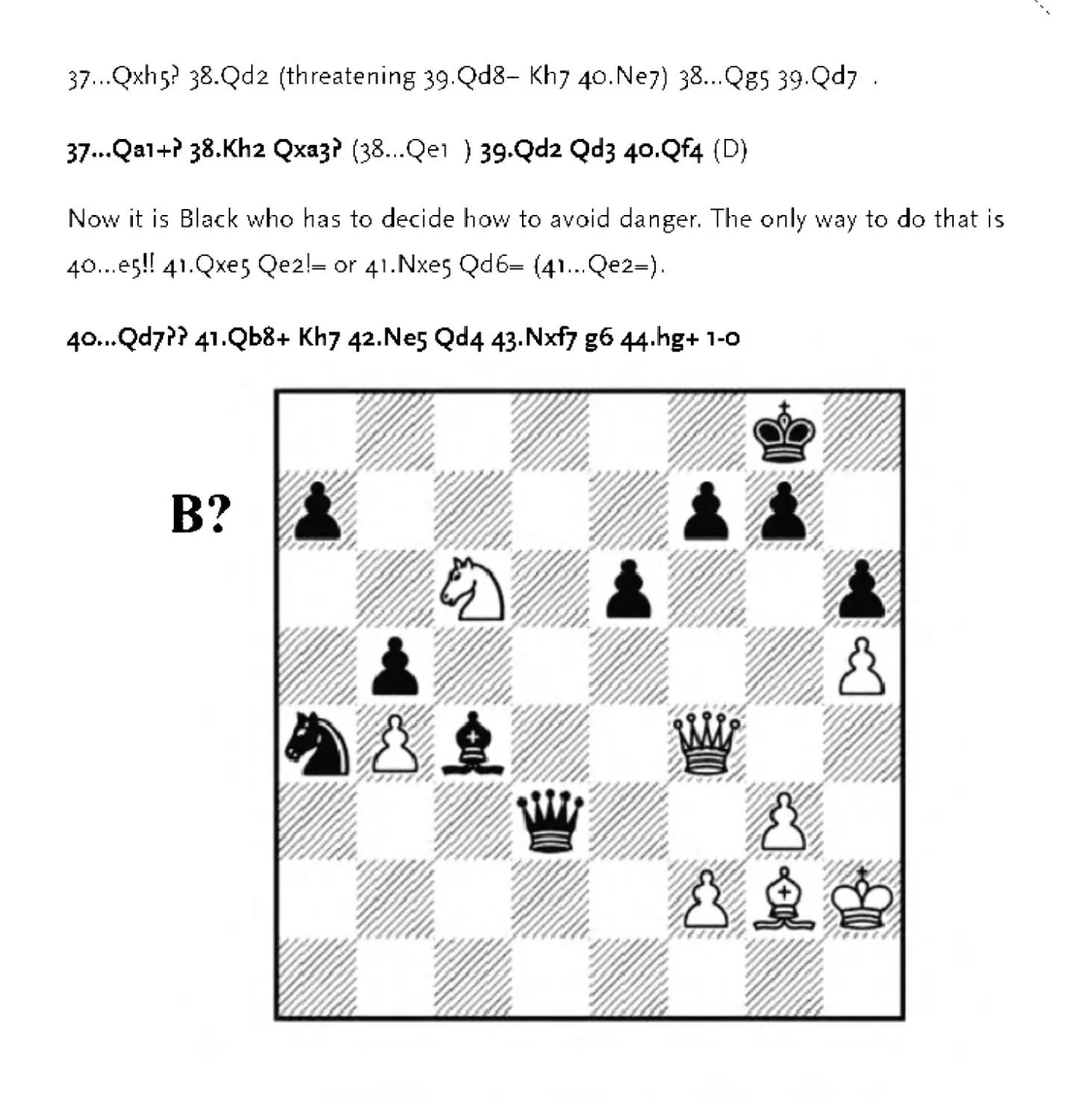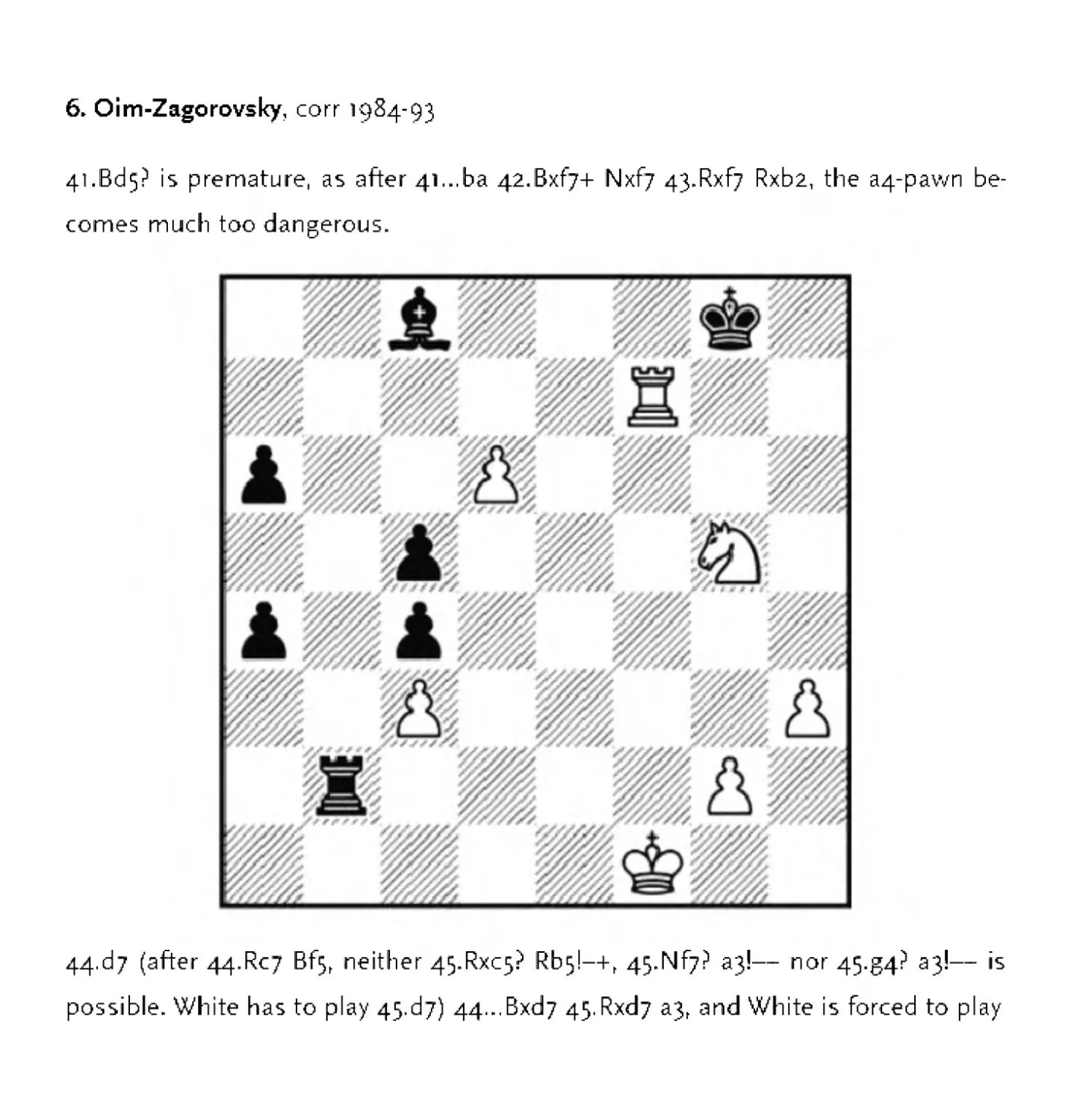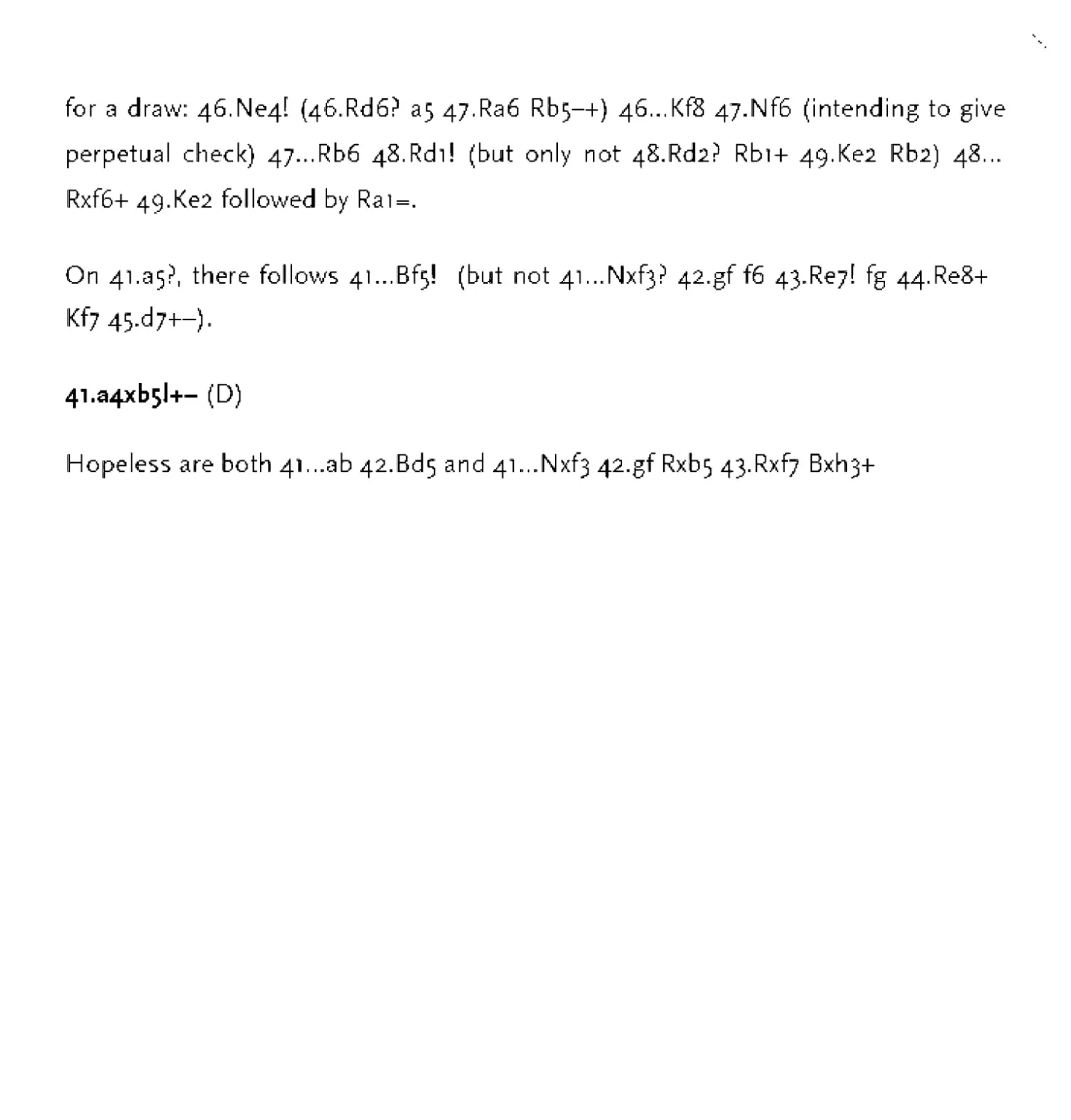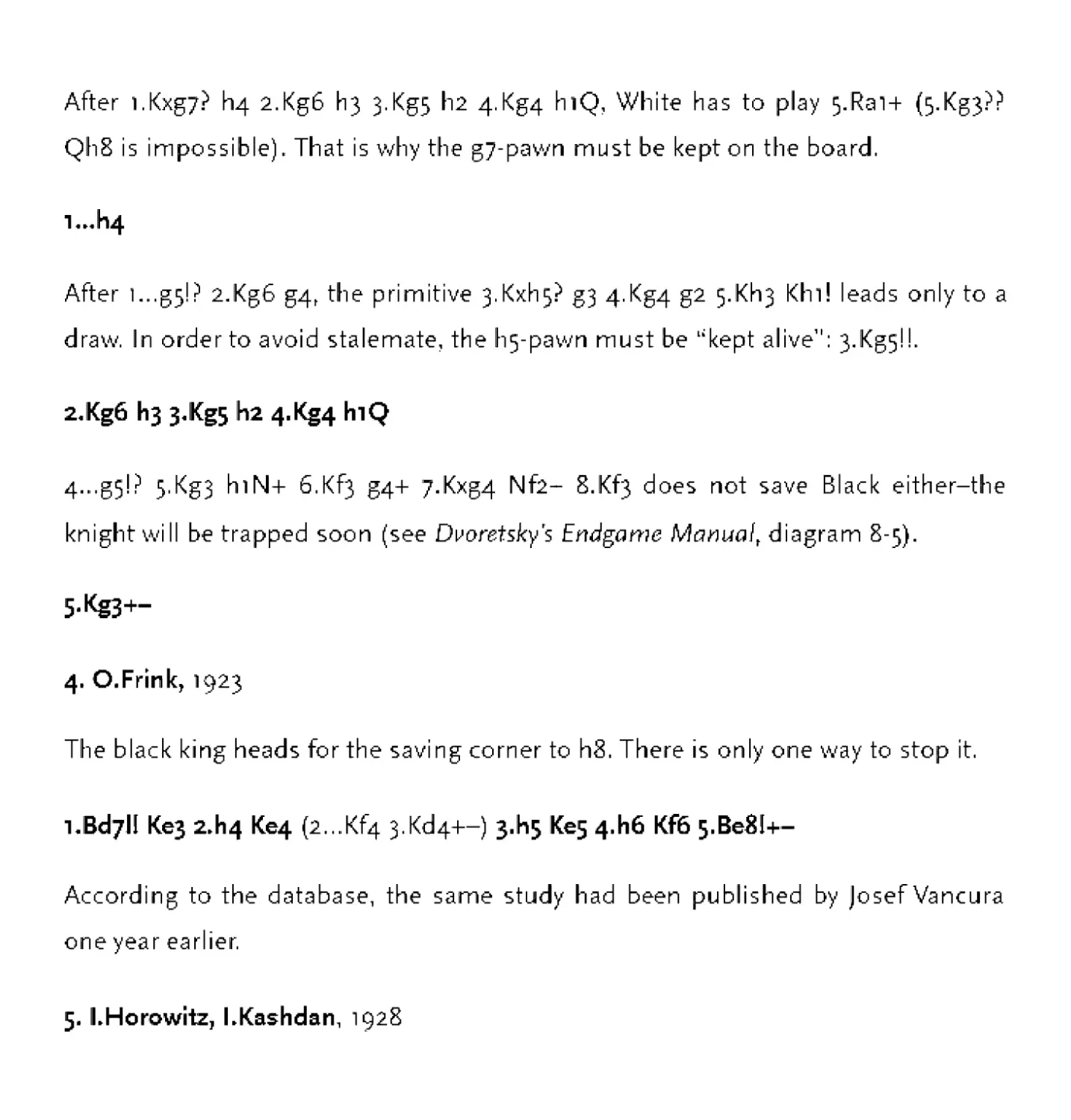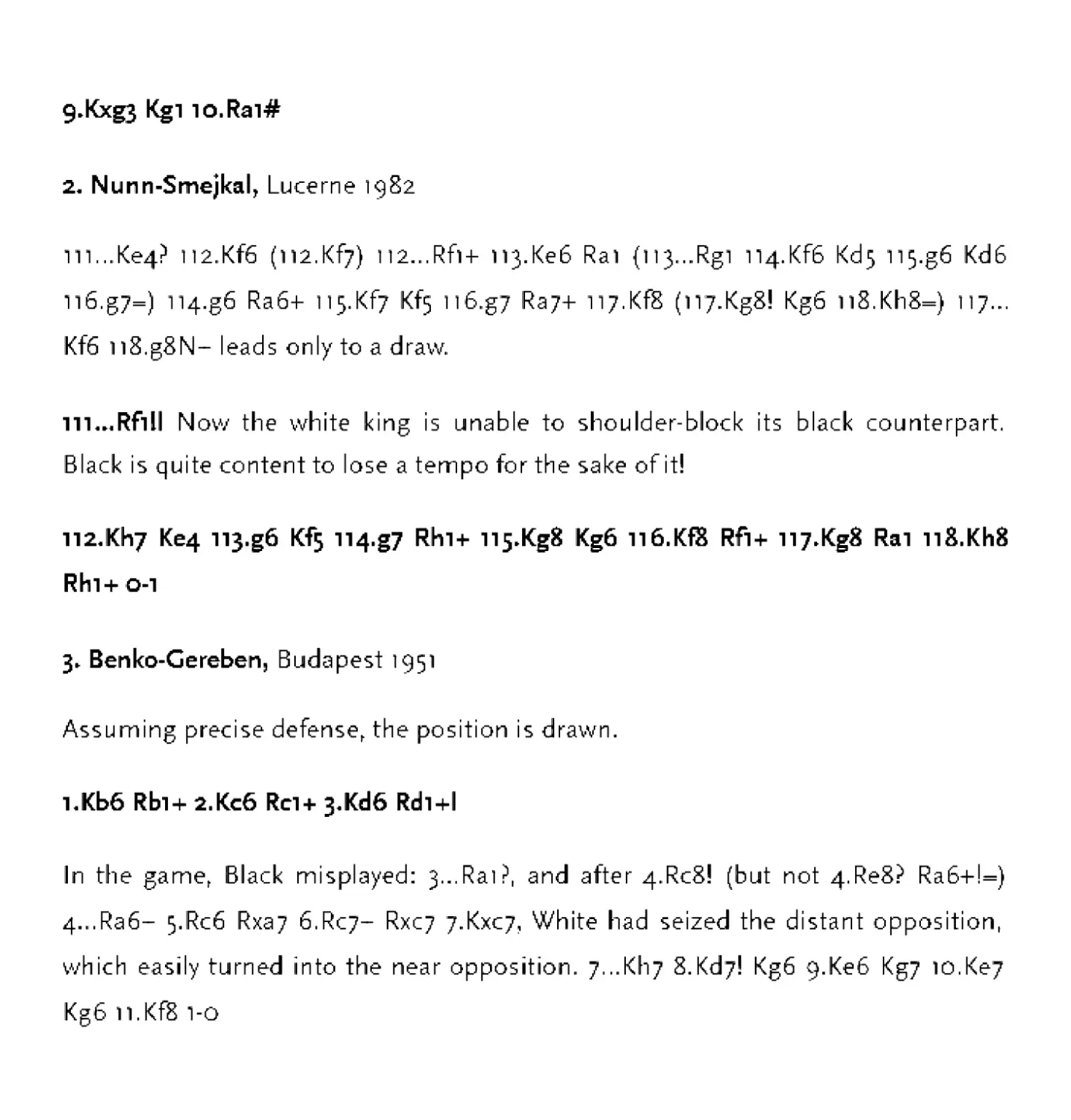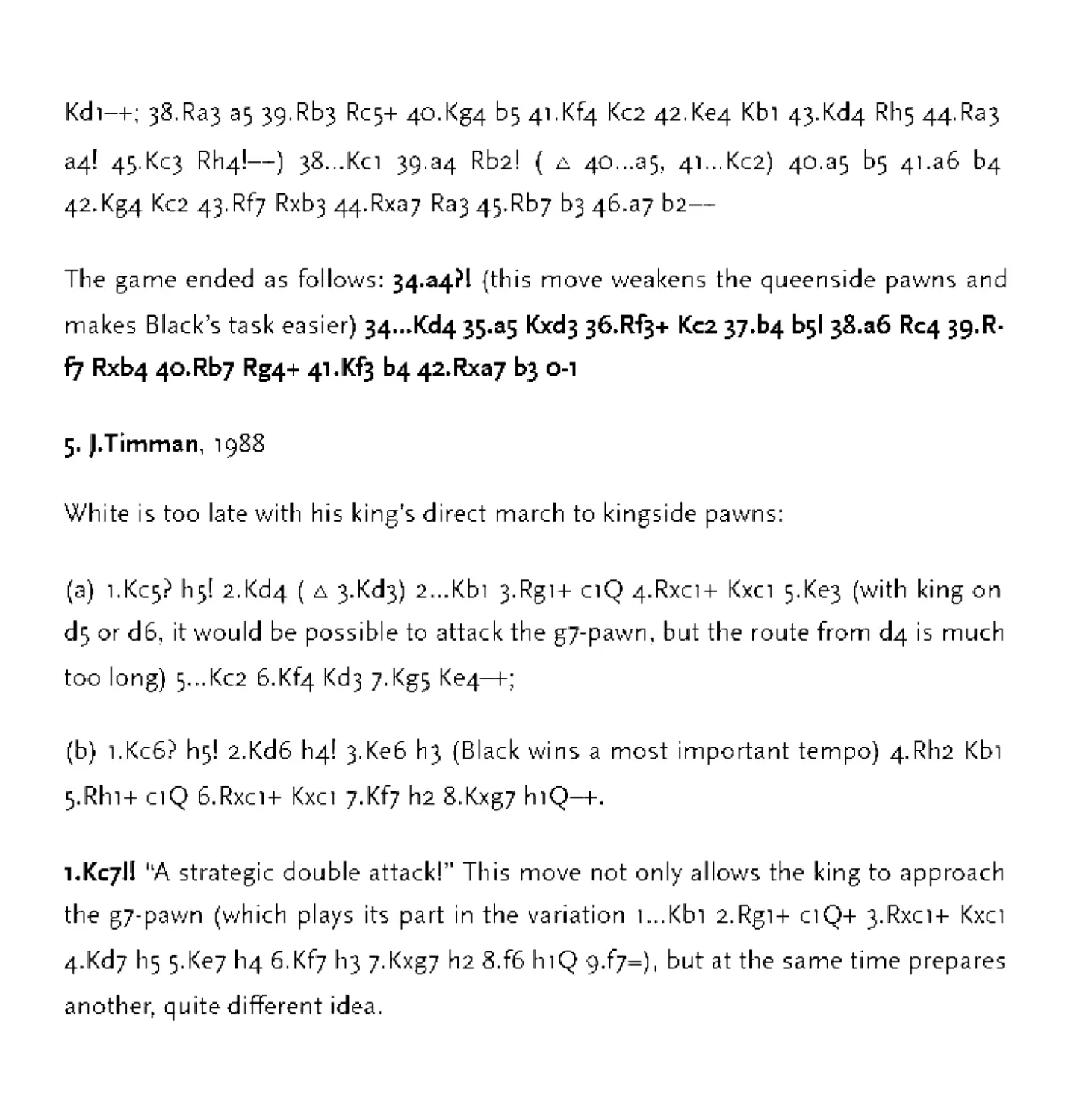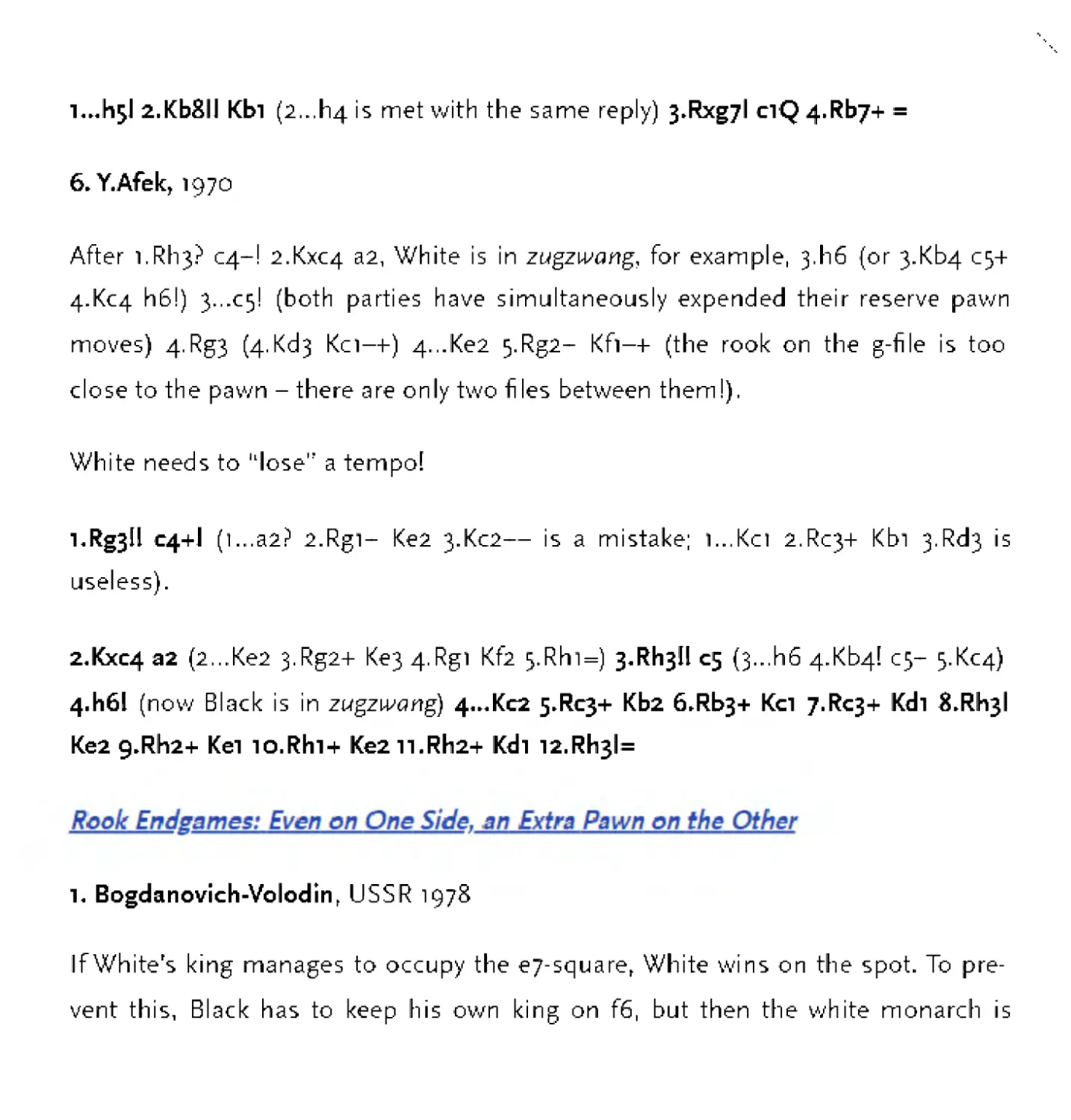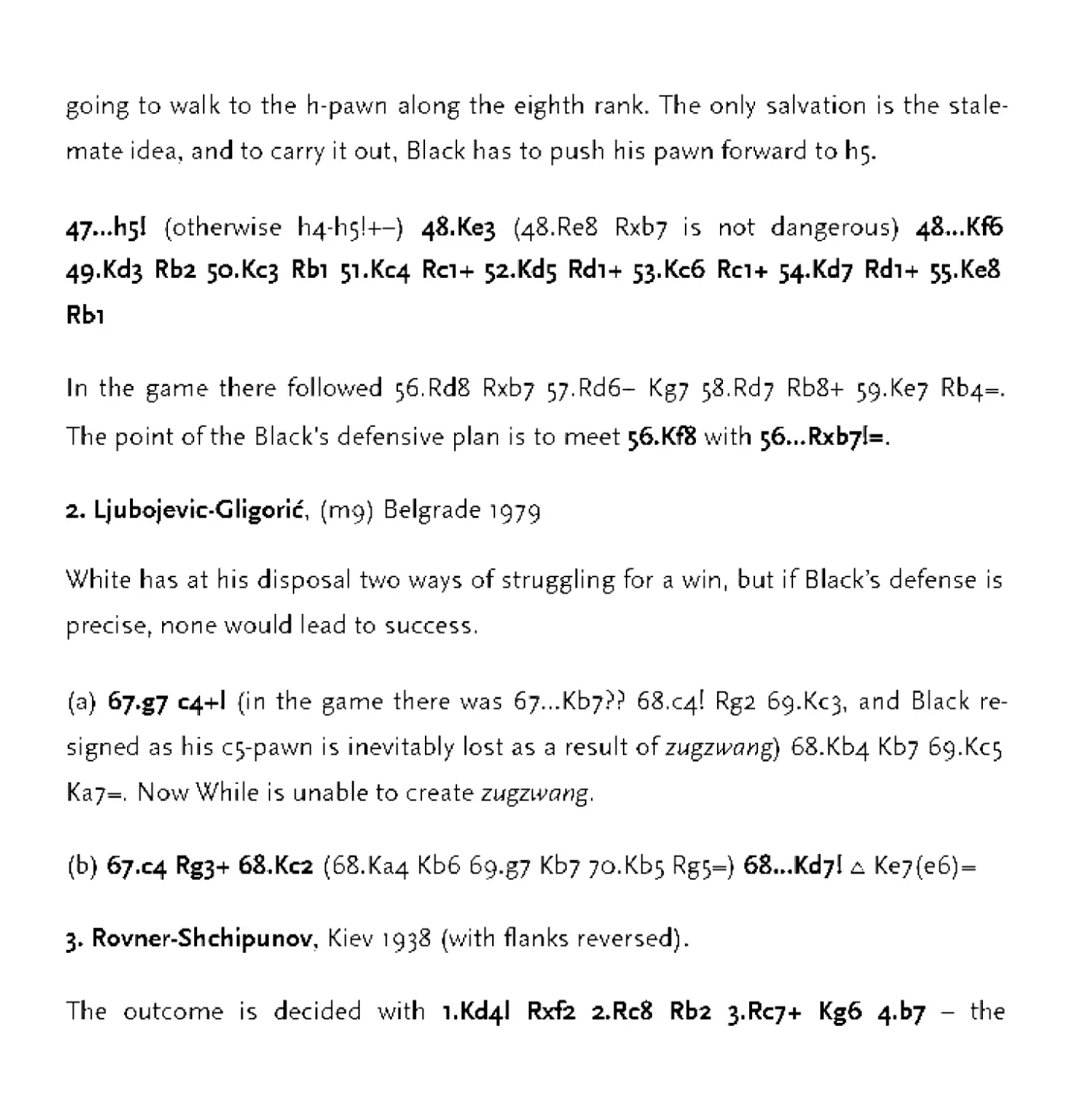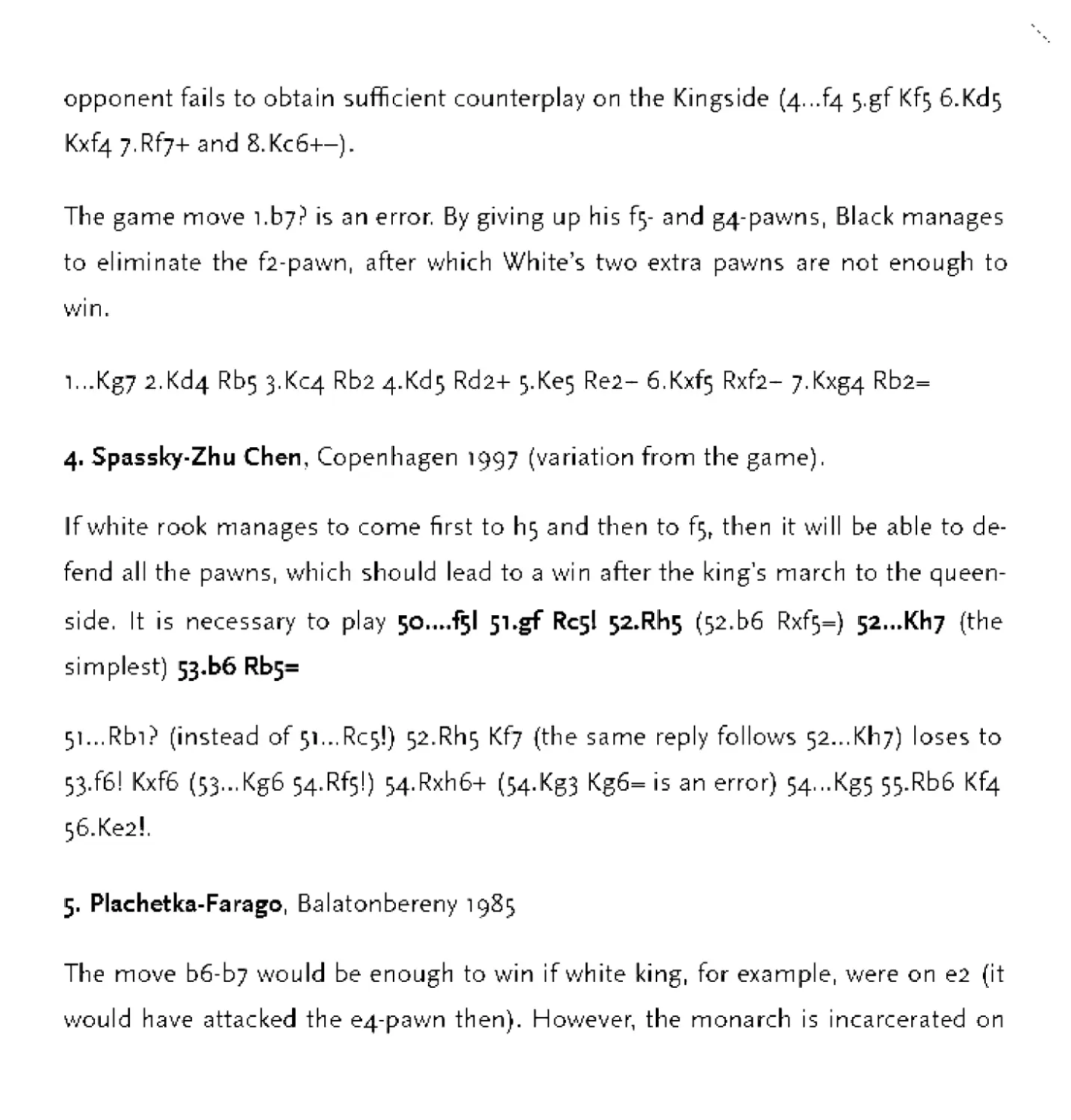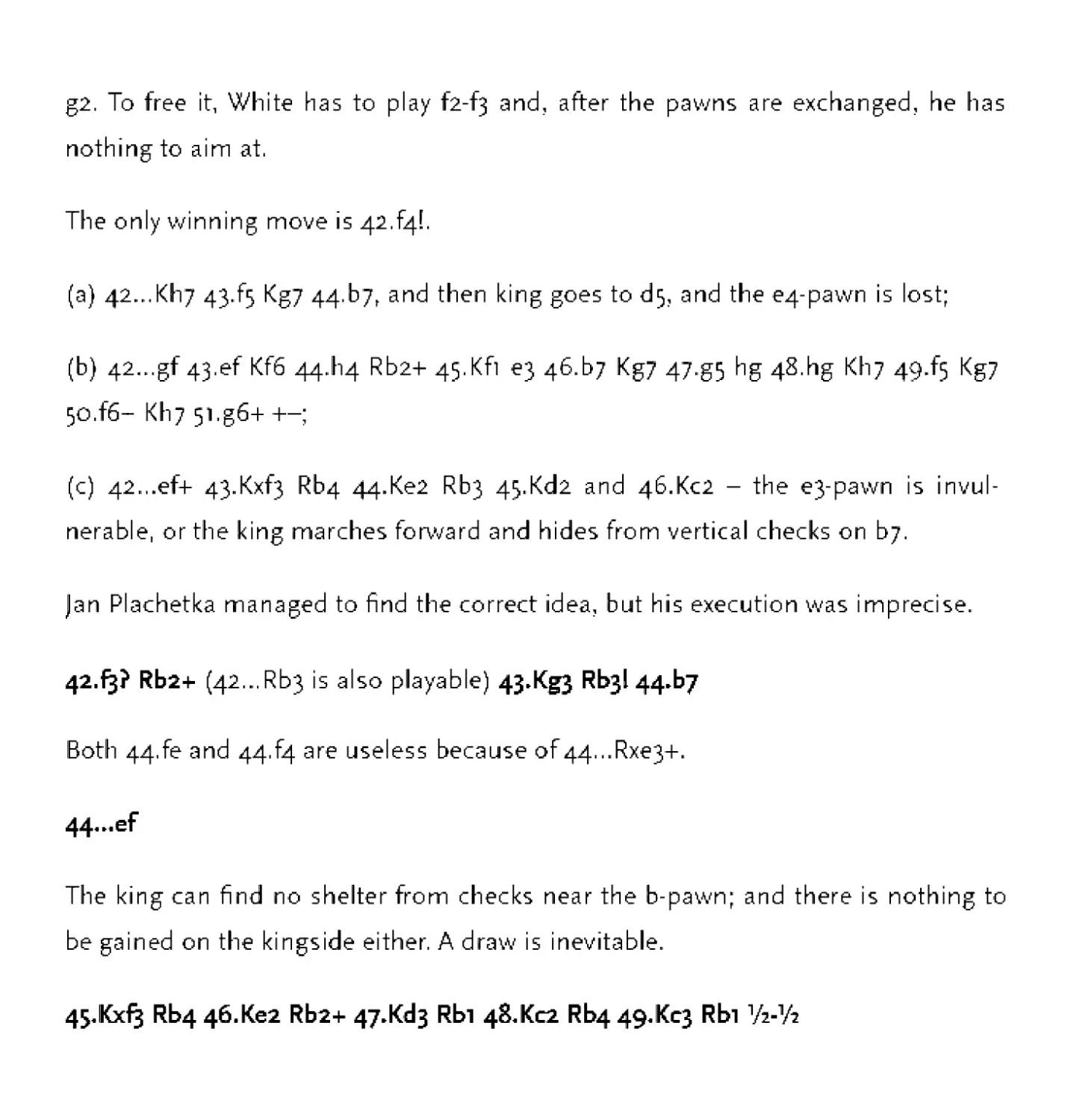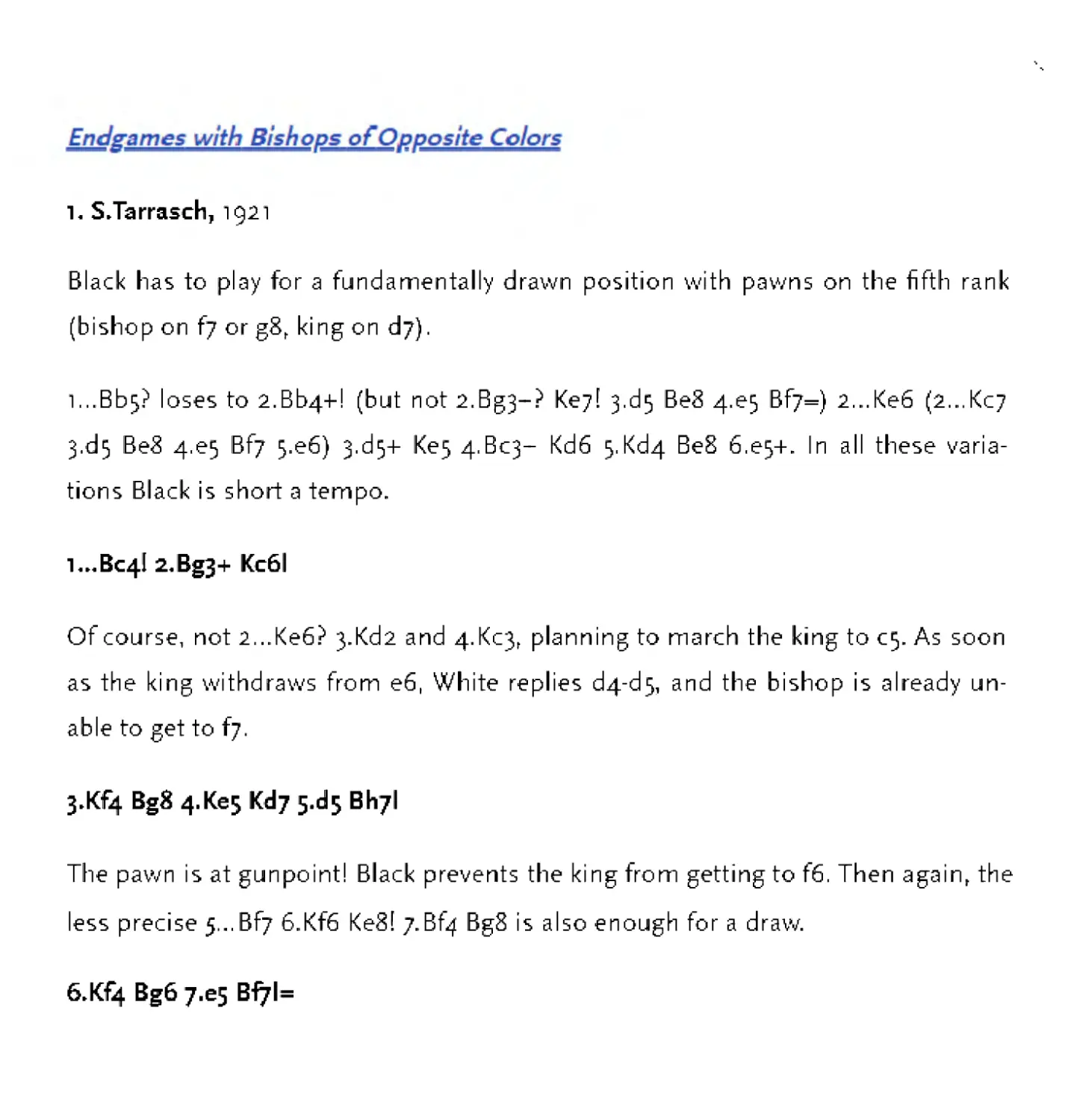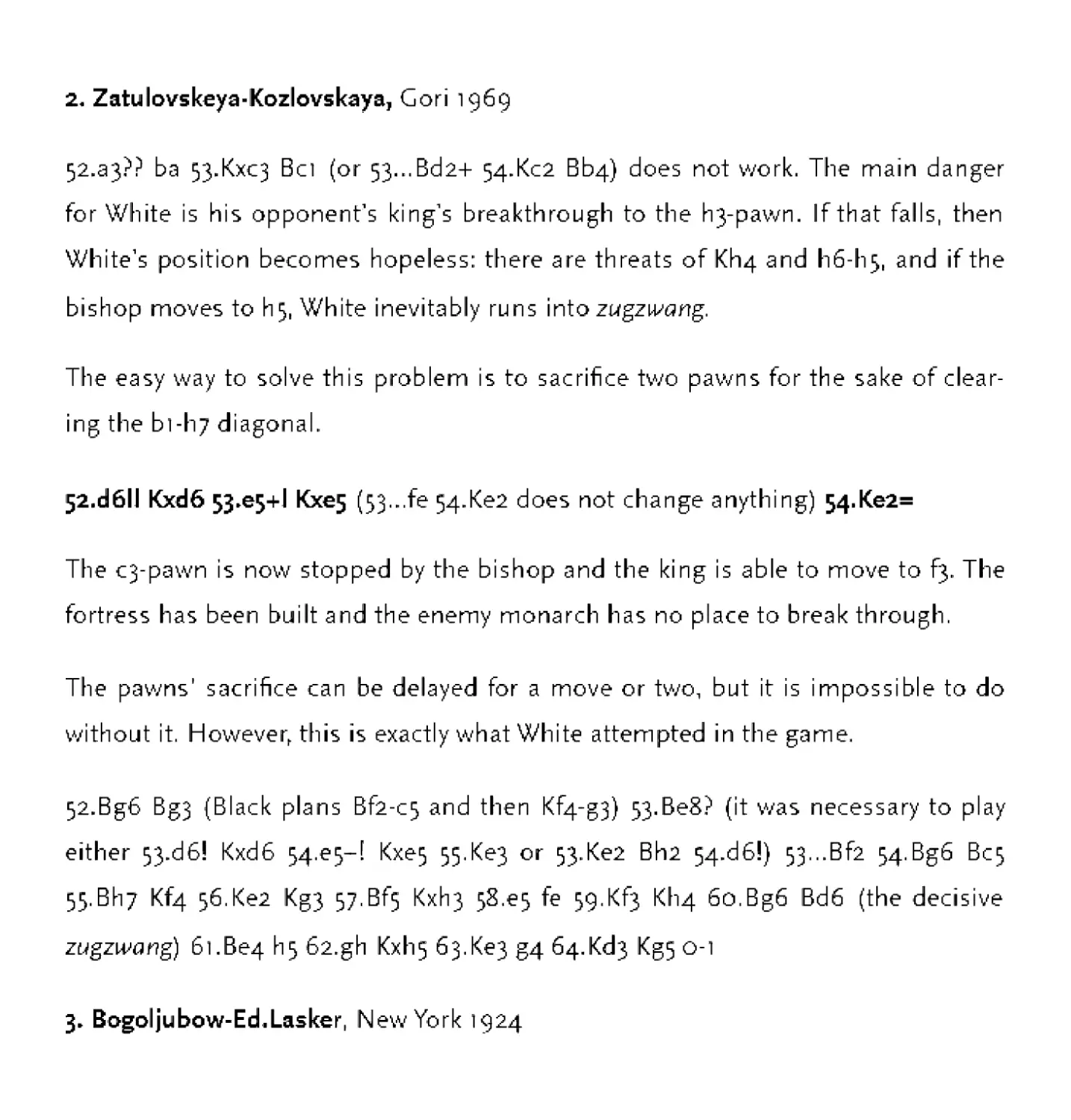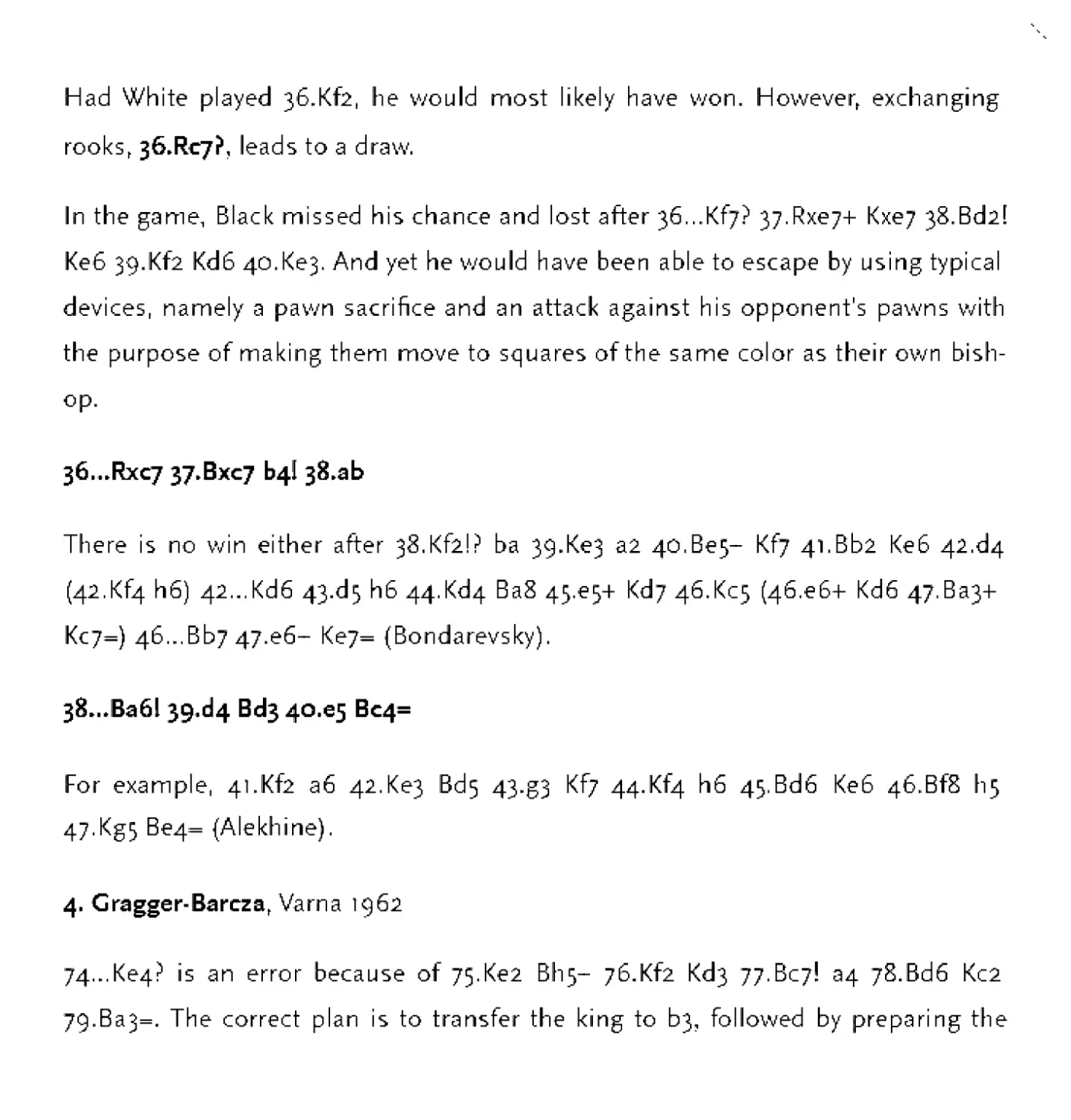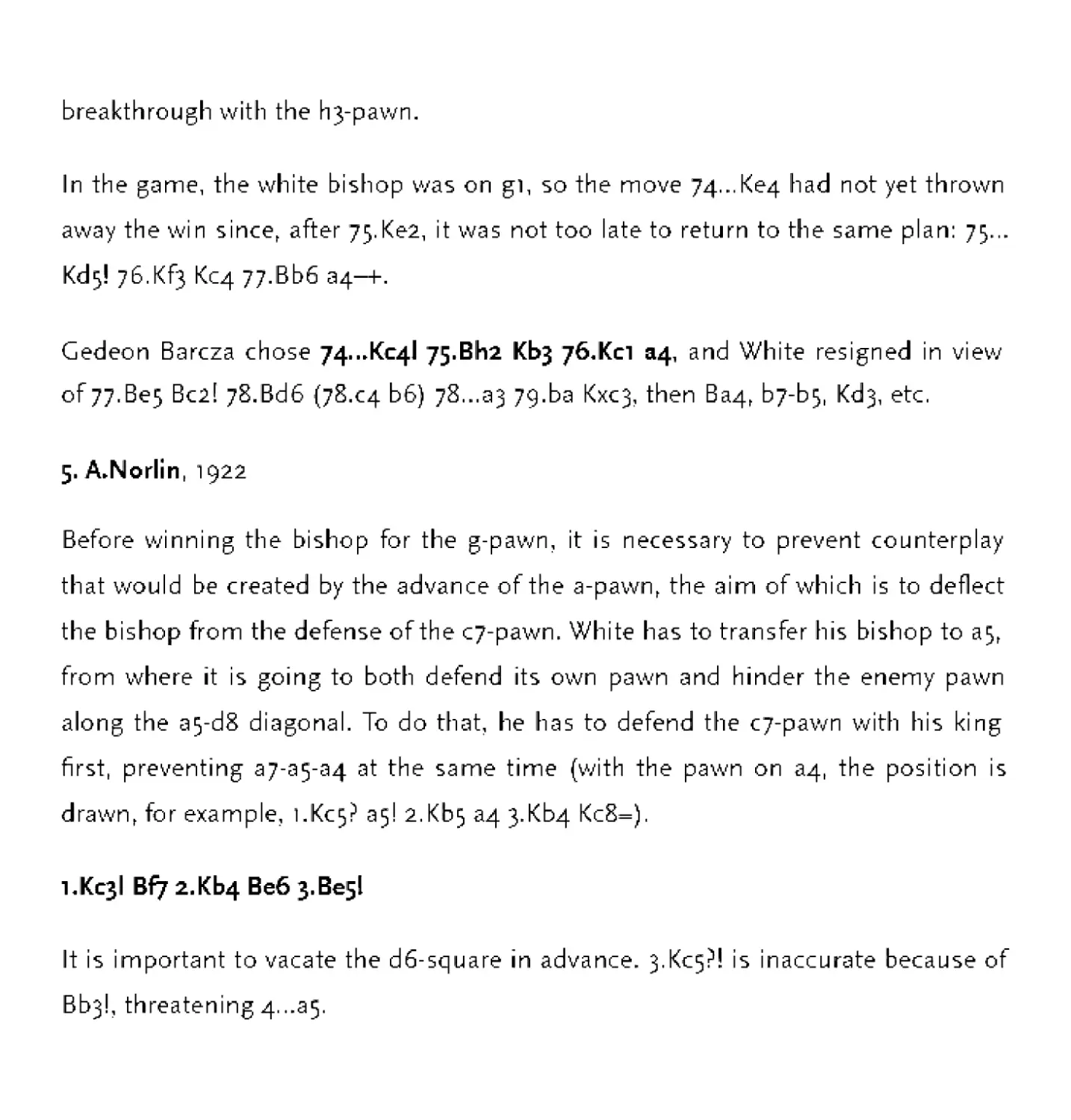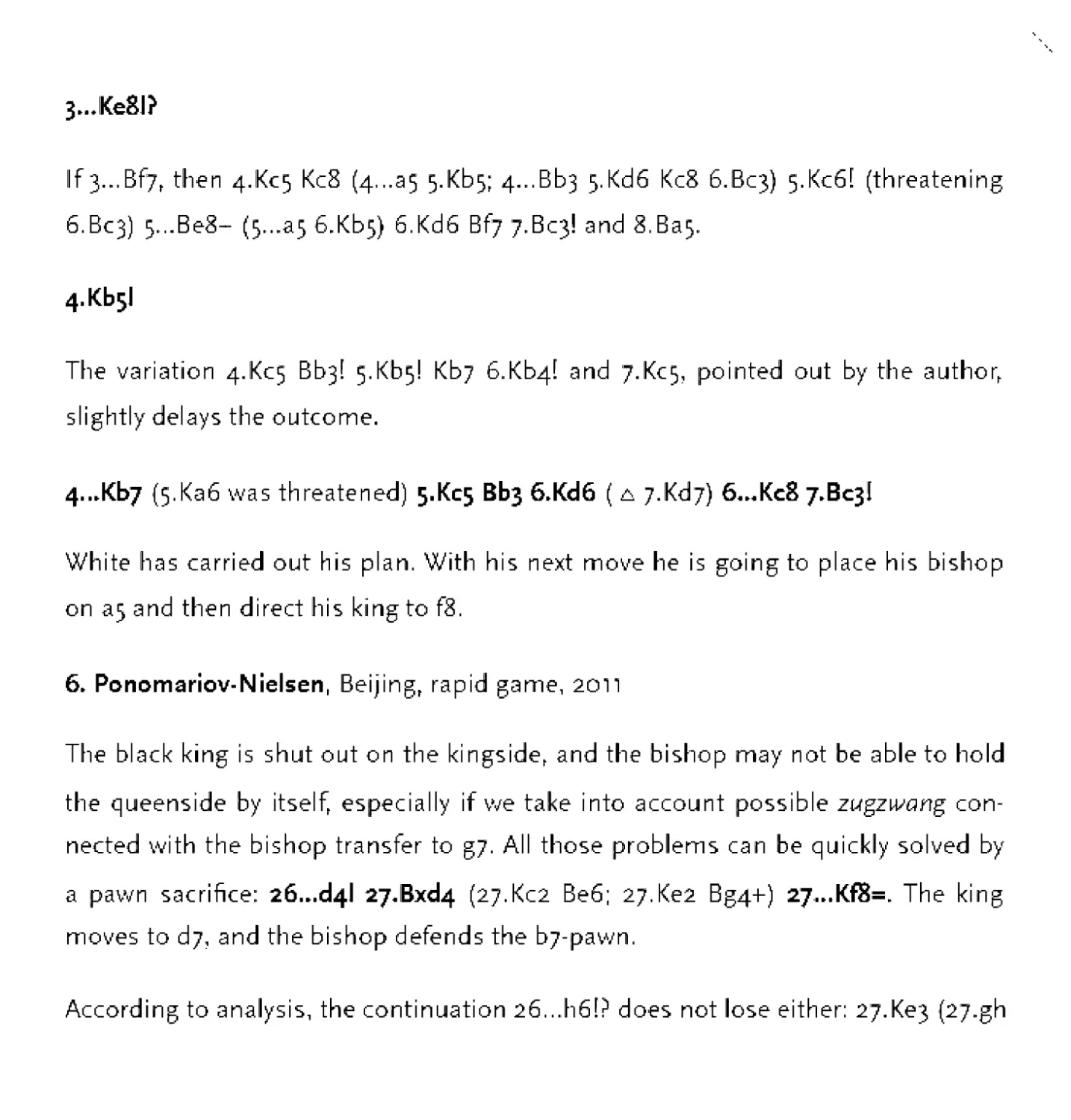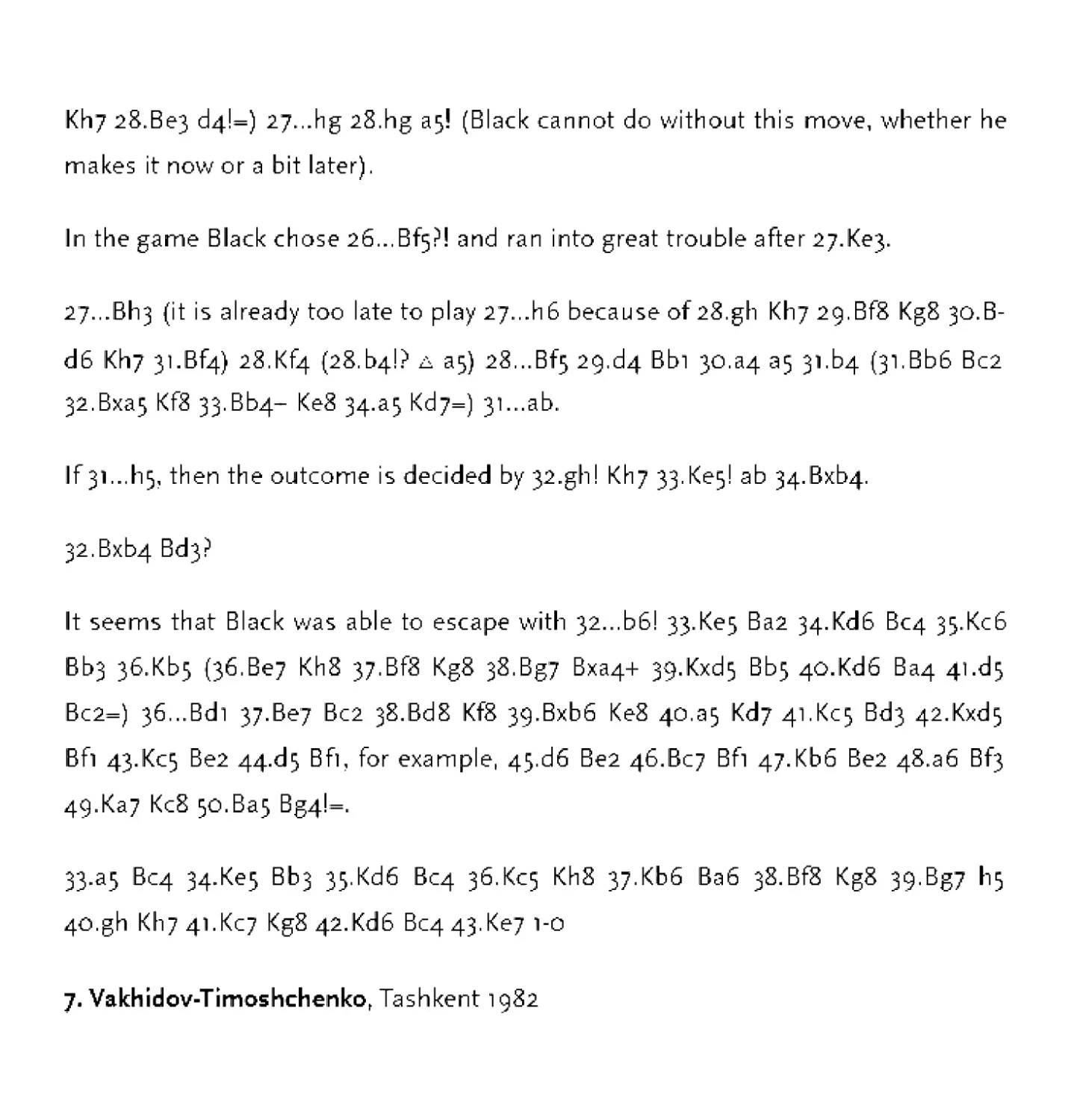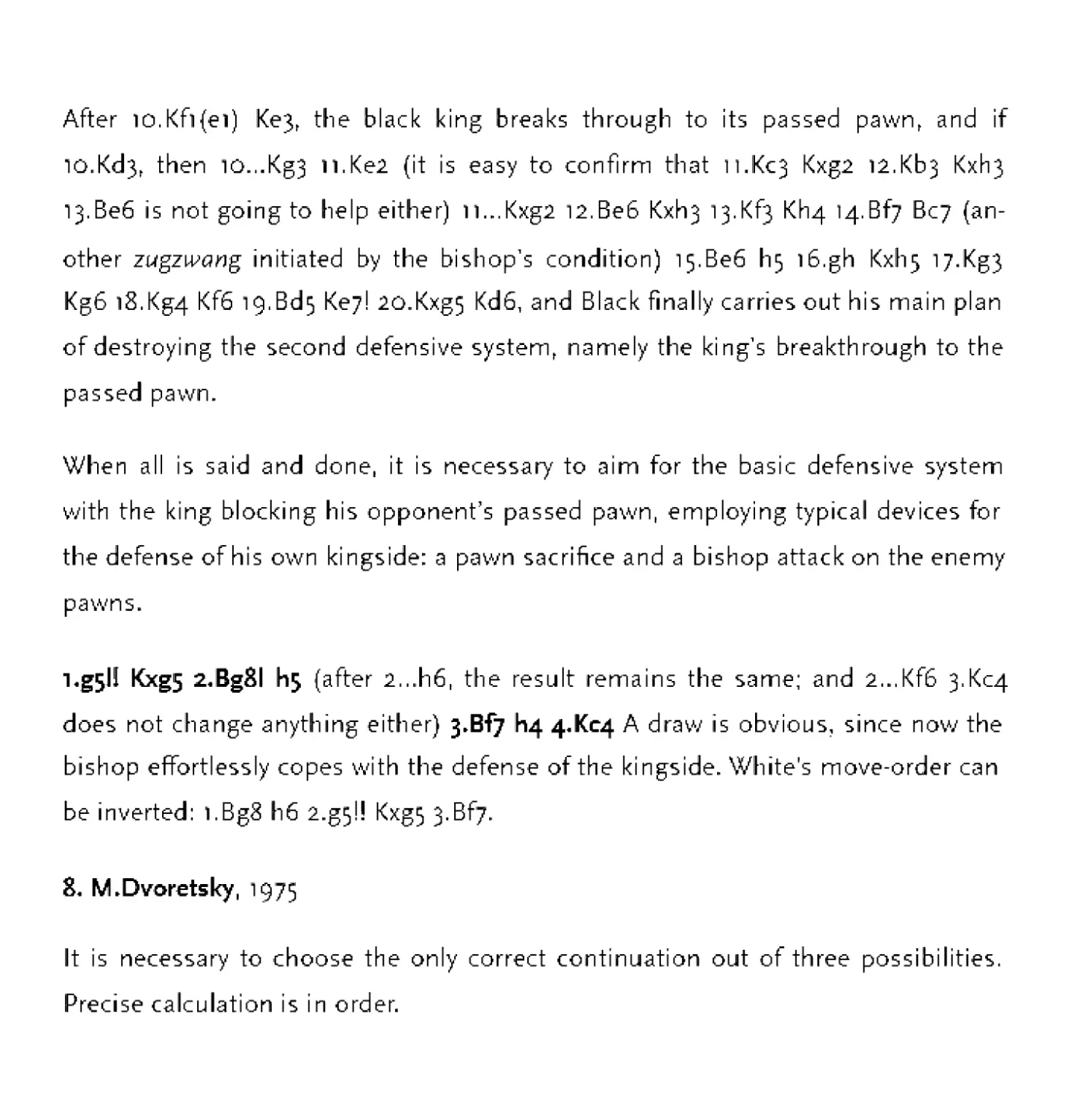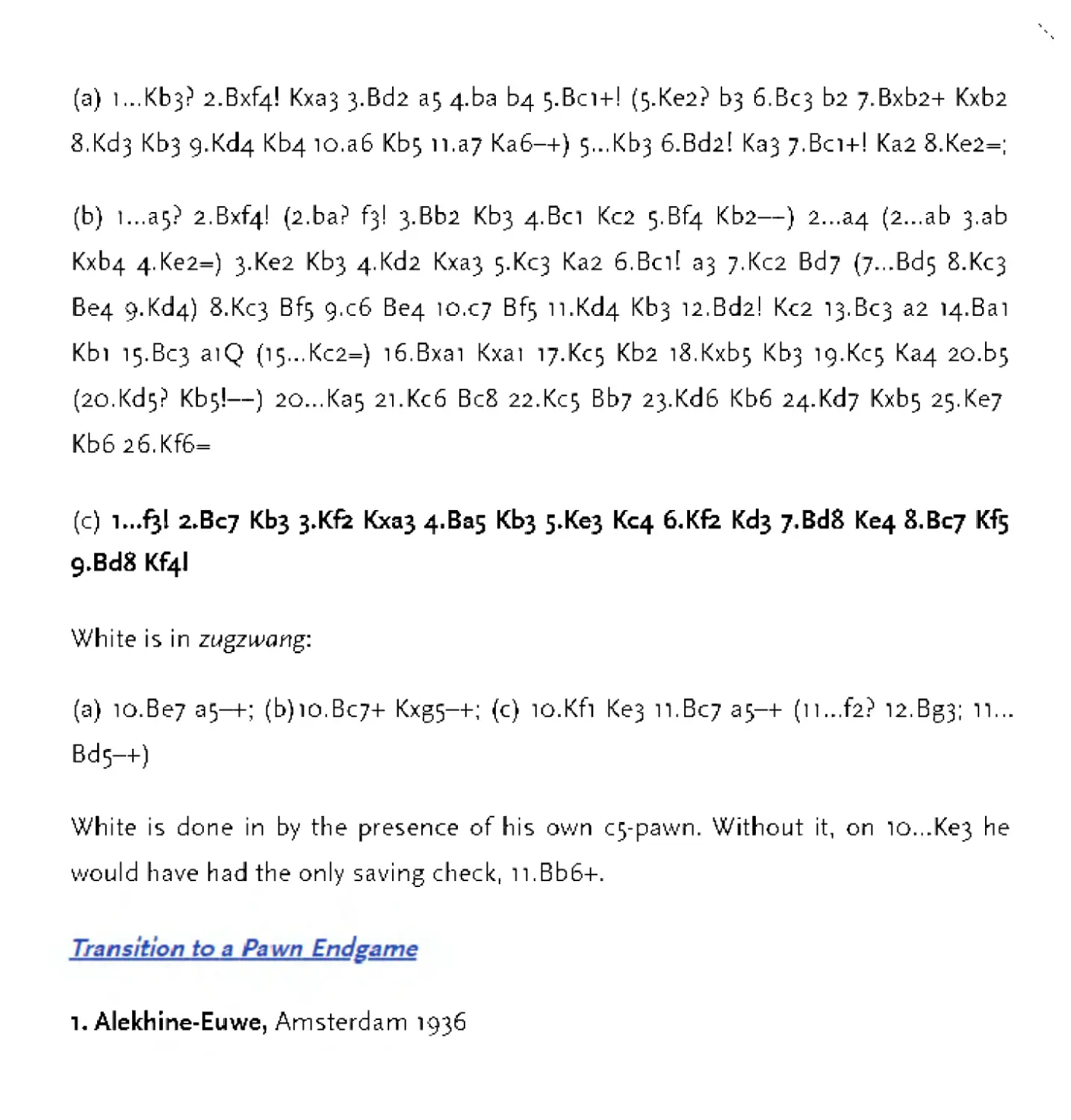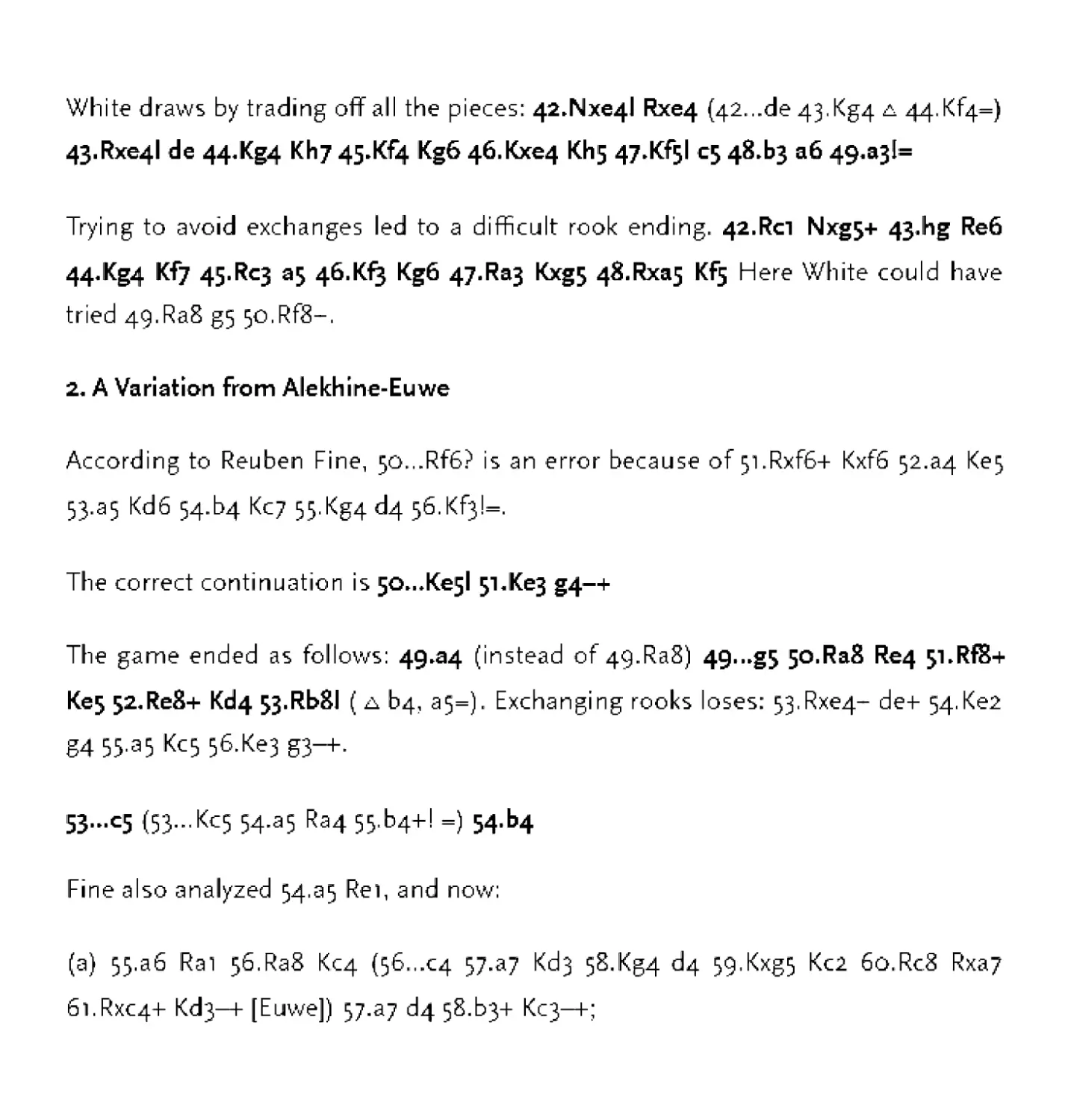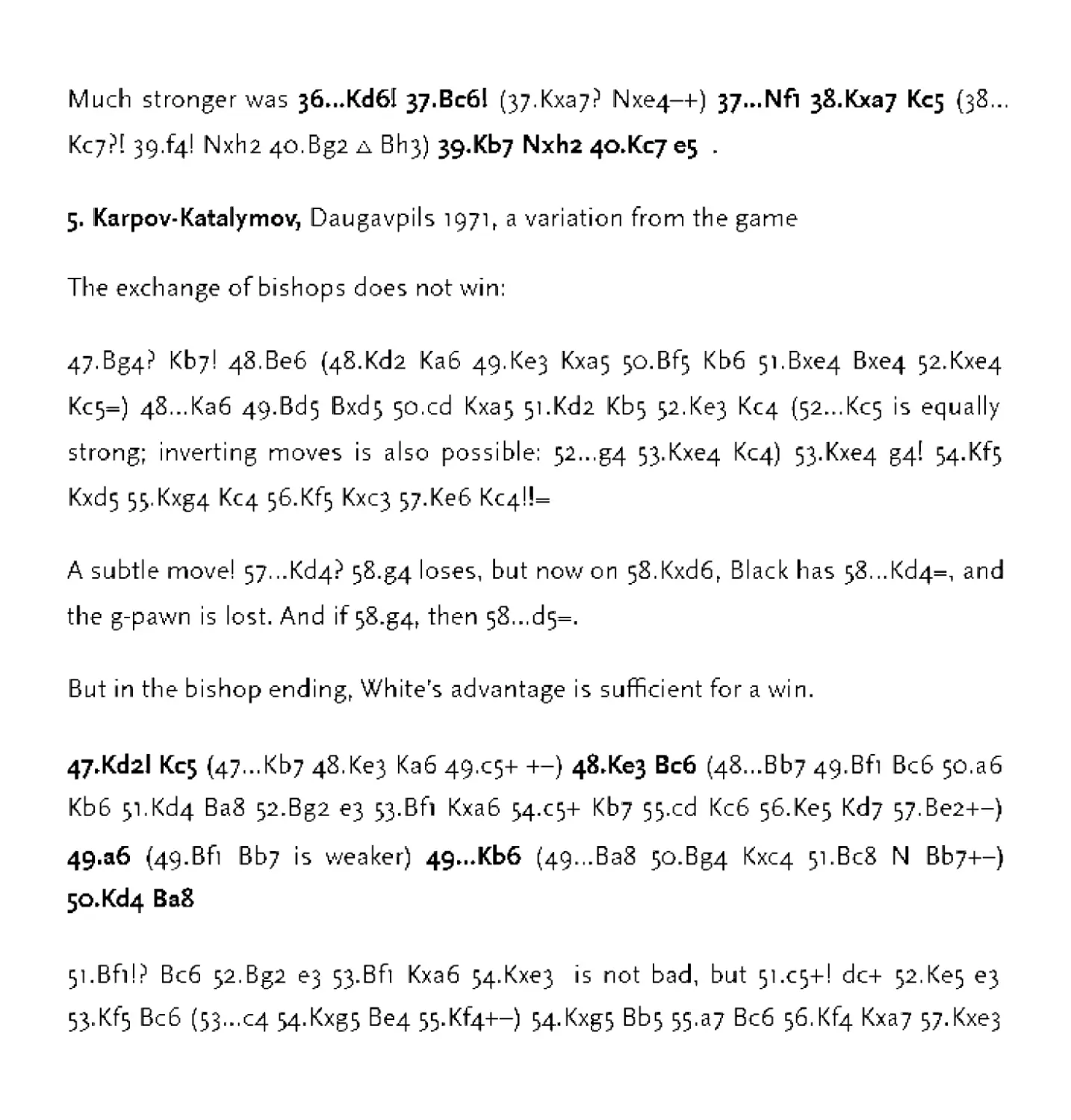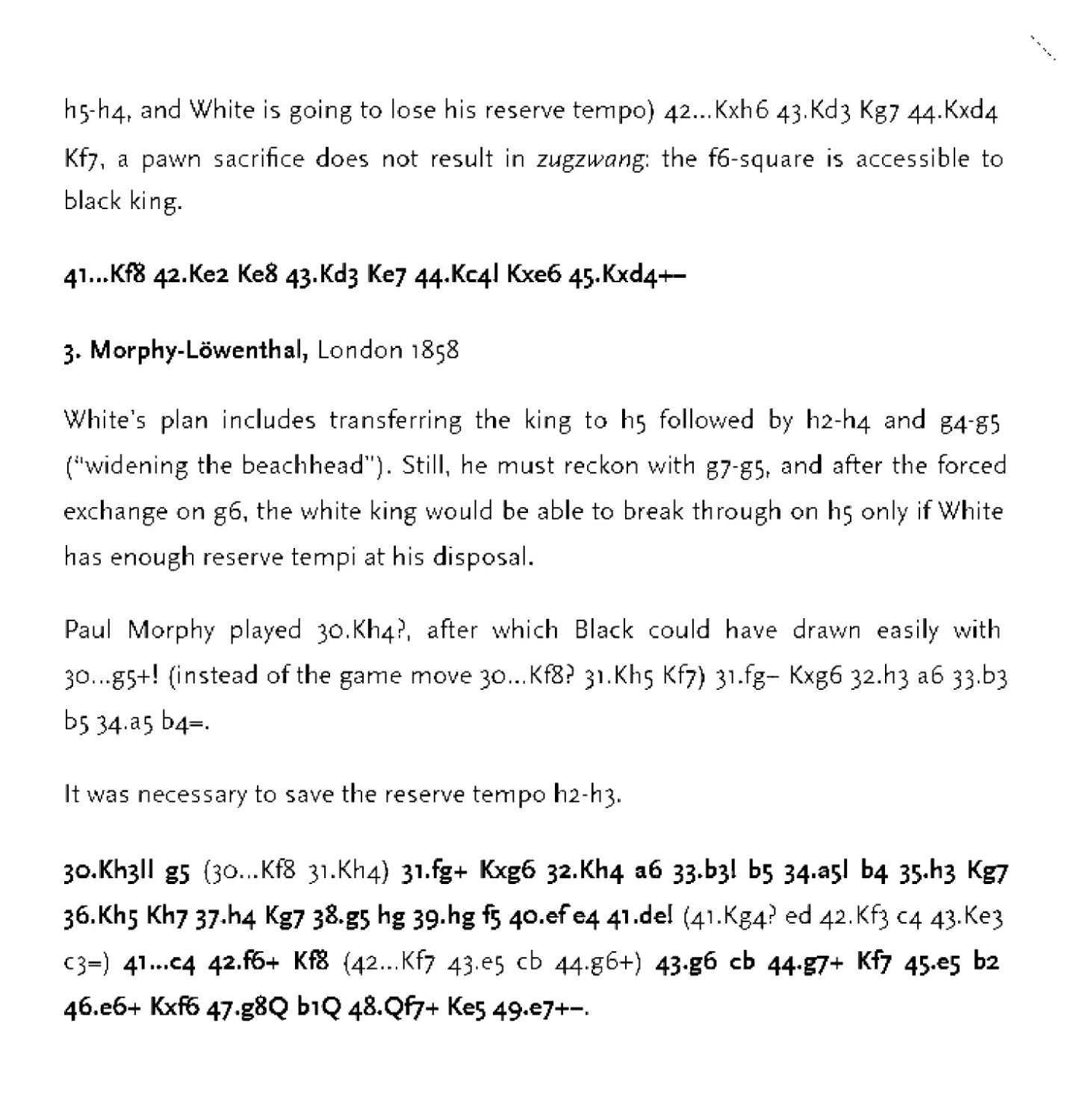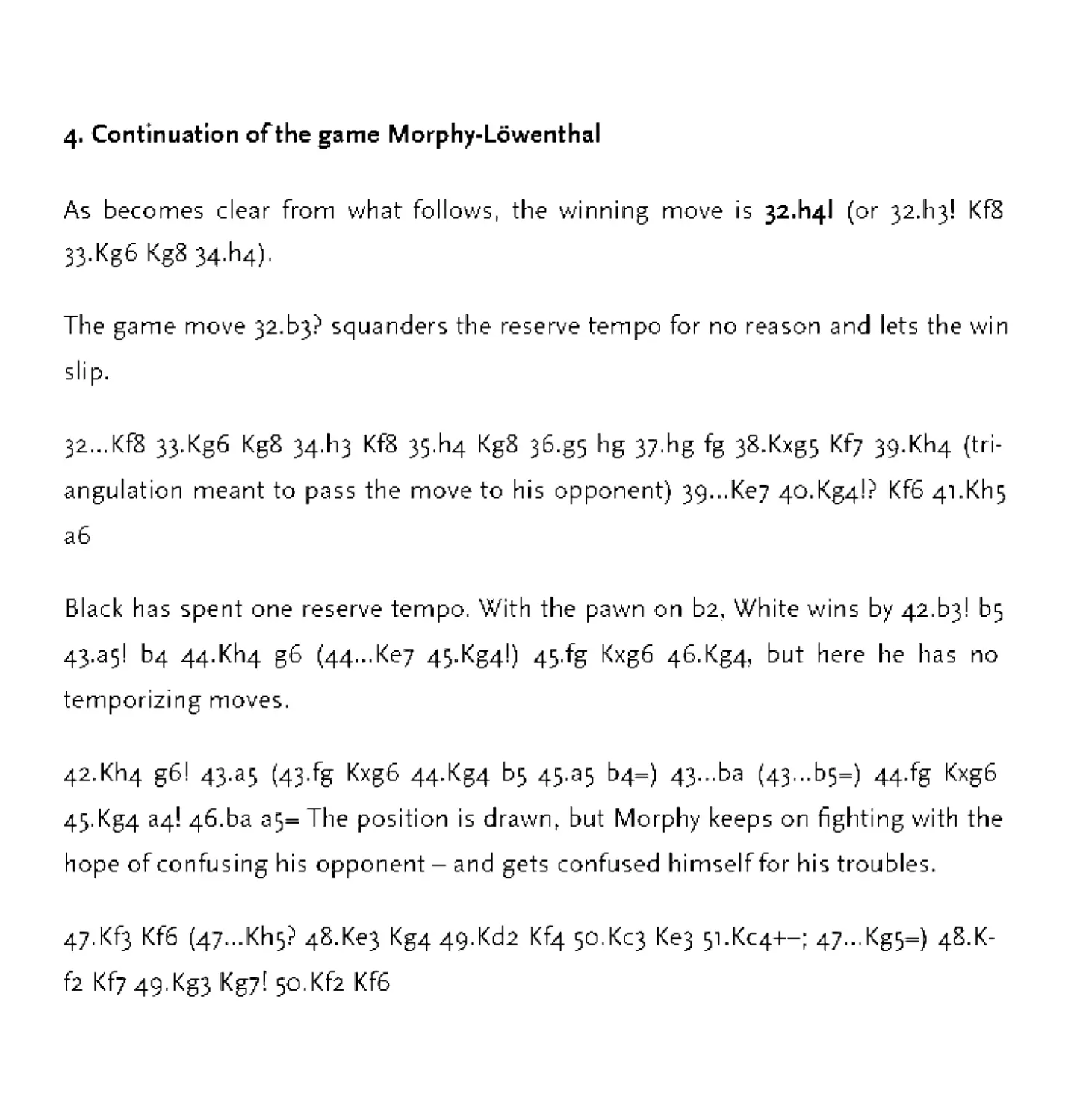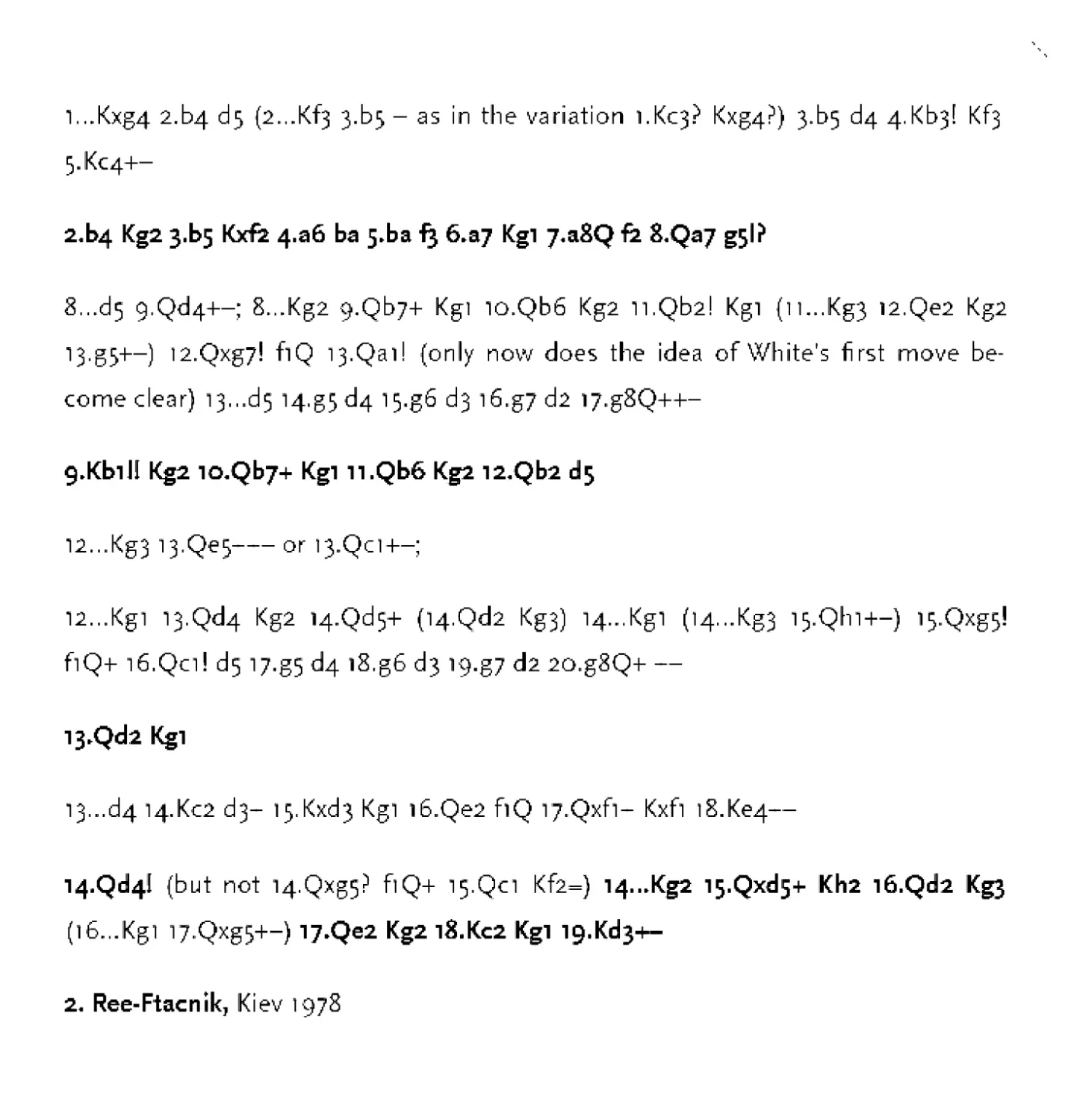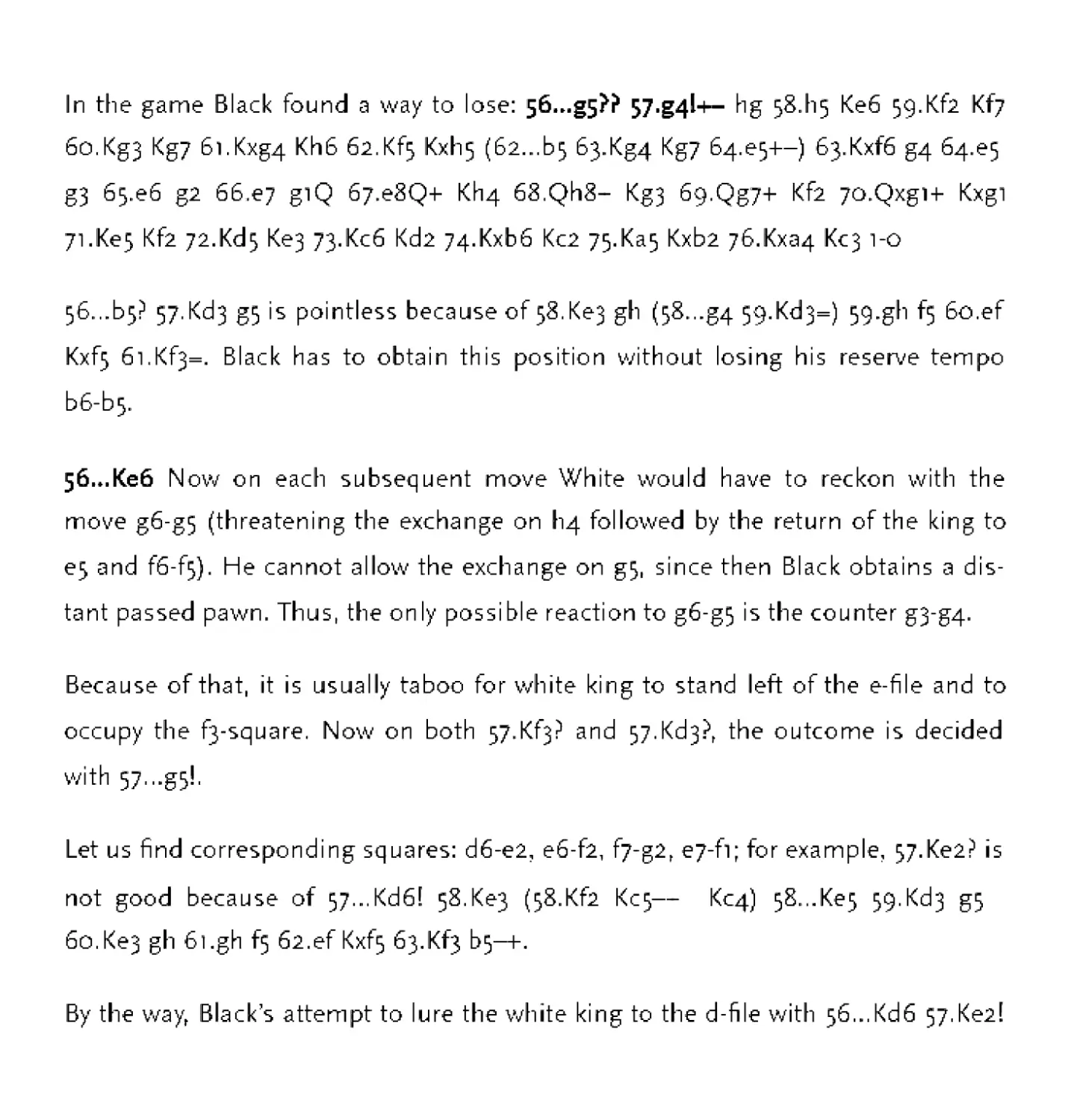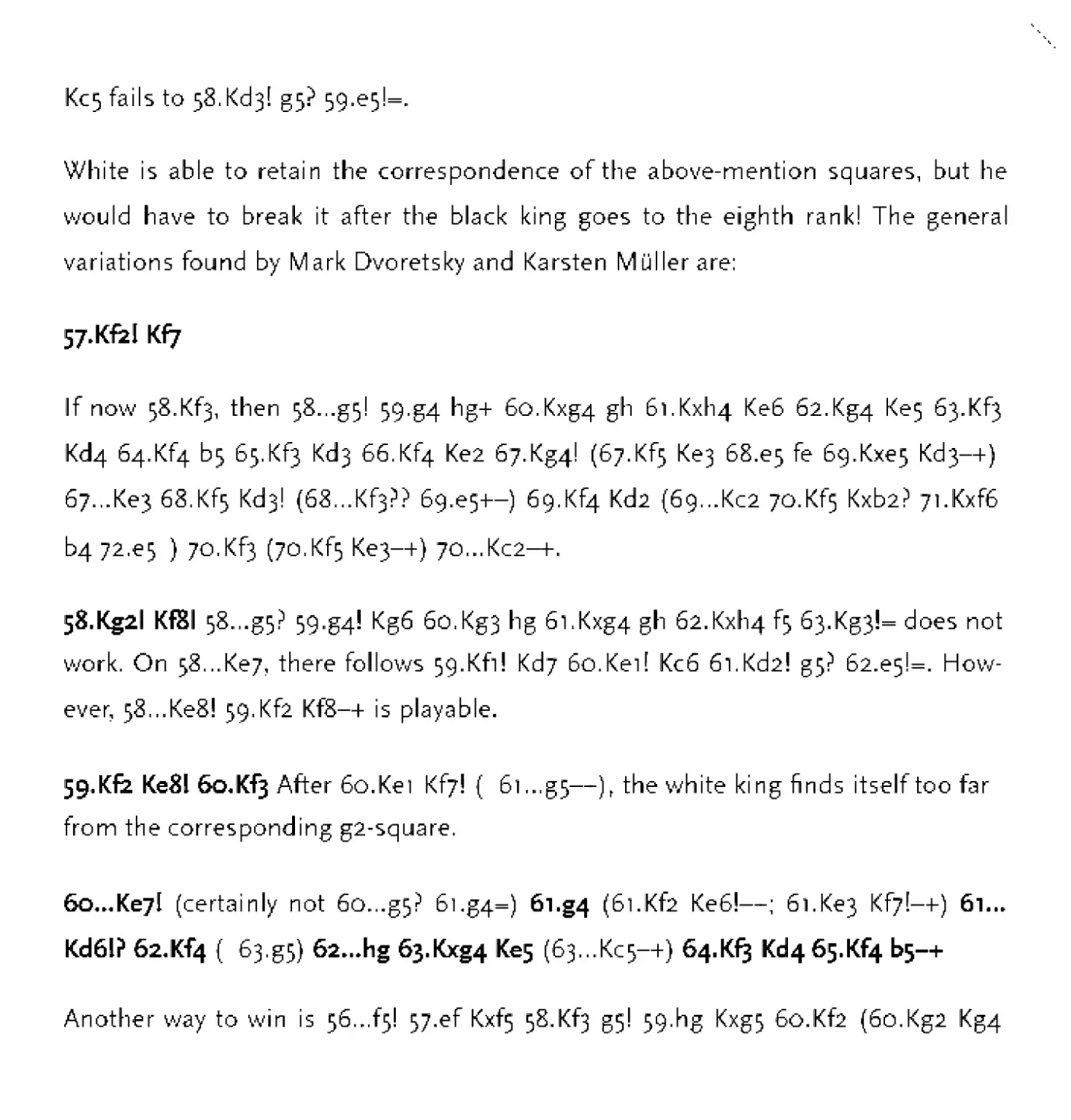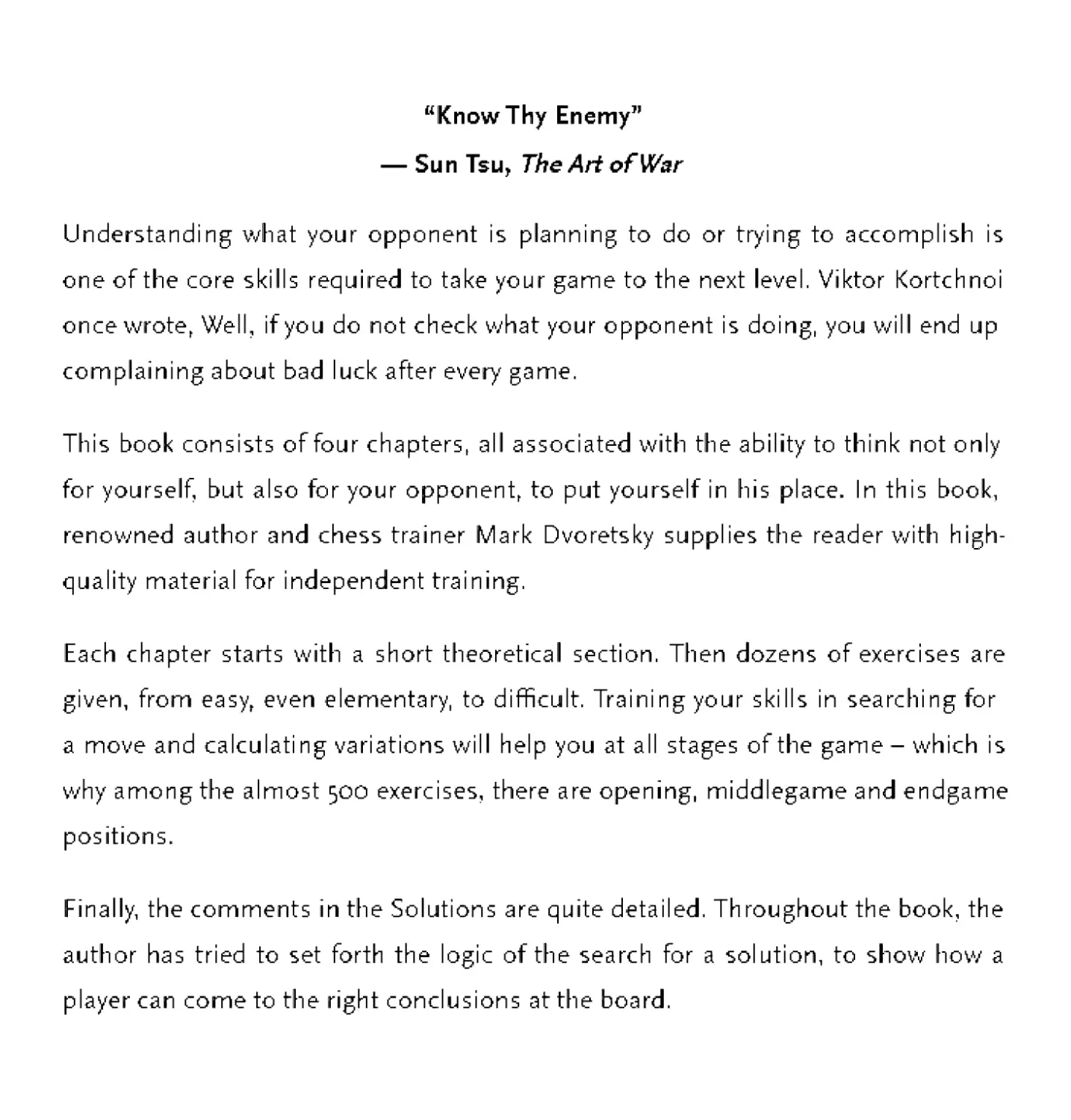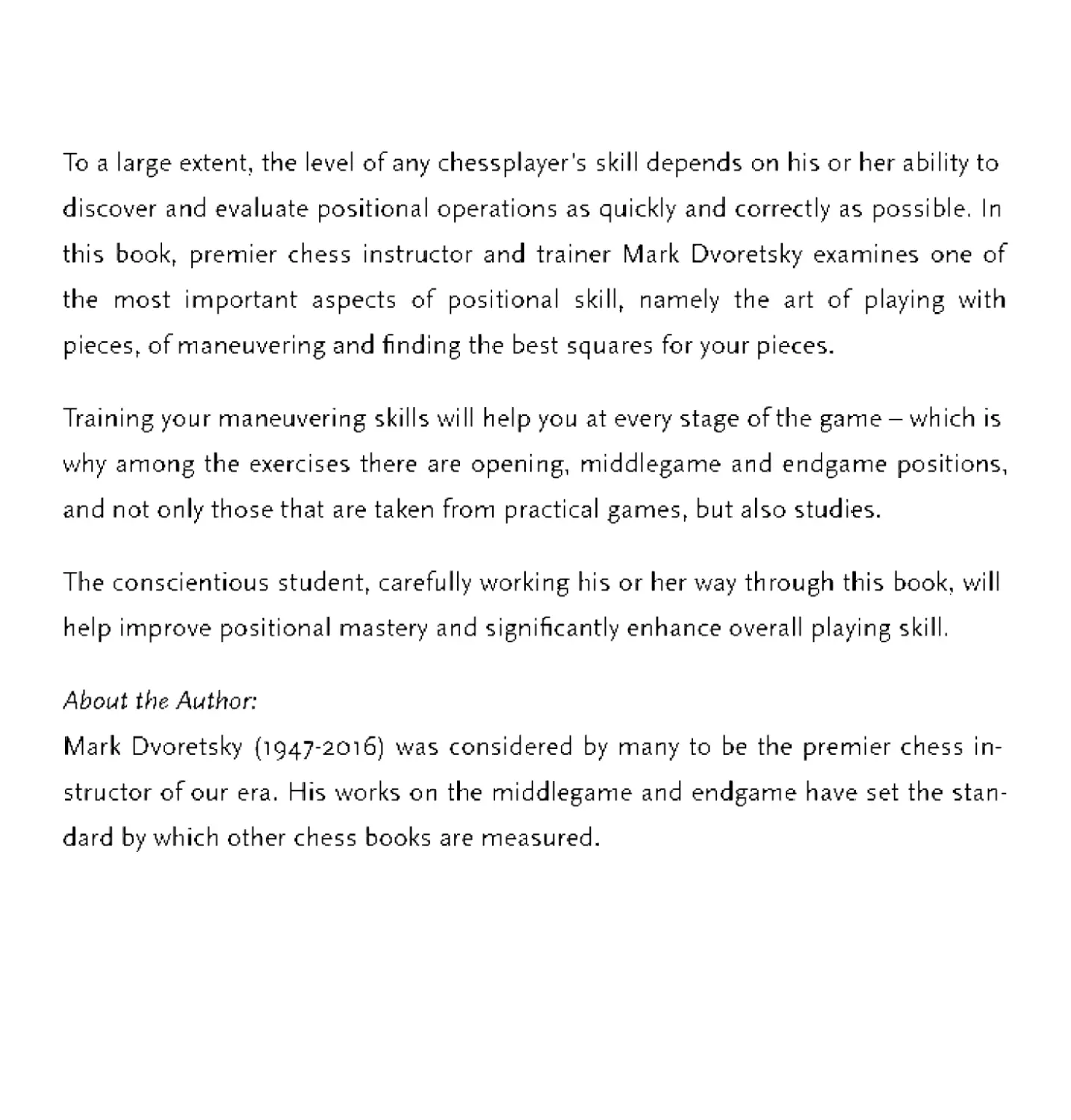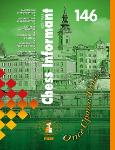Текст
Chess Tests
Mark Dvoretsky
Foreword by Artur Yusupov
A
201? Russell Enterprises, Inc. Milford CT USA
Chess Tests by Mark Dvoretsky
ISBN: 978-1-949859-06-5 (print)
ISBN: 978-1-949859-05-8 (eBook)
© Copyright 2019 Leonid Dvoretsky and Inna Dvoretsky All Rights Reserved
No part of this book may be used, reproduced, stored in a retrieval system or transmitted in any manner or form whatsoever or by any means, electronic, electrostatic, magnetic tape, photocopying, recording or otherwise, without the express written permission from the publisher except in the case of brief quotations embodied in critical articles or reviews.
Published by: Russell Enterprises, Inc.
P.O. Box 3131
Milford, CT 06460 USA
http: //www, russell-enterprises.com info@russell-enterprises.com
Cover design byjanel Lowrance Translated from the Russian by Boris Cleyzerov Special thanks to Artur Yusupov
Printed in the United States of America
Table of Contents
Signs & Symbols
Foreword by Grandmaster Artur Yusupov
Chapter 1 Training Combinational Vision
Fantasy #1
Fantasy #2
“Tasty’’ Tactics #1
“Tasty’’ Tactics #2
“Tasty” Tactics #3
“Tasty” Tactics #4
“Tasty” Tactics #5
Chapter 2 Candidate Moves
Candidate Moves # 1
Candidate Moves # 2
Candidate Moves # 3 “Accidental” Tactics
Profound Quiet Moves
Chapter 3 Calculating Variations
Tactics 28
Paying Attention to Opponent’s Counterchances
Intermediate Moves
Chapter 4 Attack and Defense
Attack #1
Attack #2
Defense #1
Defense #2
Attack and Defense
Chapter 5 Positional Play
Positional Test
Prophylactic Thinking #1
Prophylactic Thinking #2
Prophylactic Thinking #3
Exchanging Queens #1
Exchanging Queens #2
A Principle of the Worst Piece
Miscellanea
Chapter 6 Realizing an Advantage
Technique #1
Technique #2
Technique #3
Technique #4
Chapter 7 Endgame Tests
Endgame Ideas
Skillful Rook Play
Rook Endgame: A Balance on One Flank and an Extra Pawn on the Opposite One
Endgames with Bishops of О pposite Colors
Transition to a Pawn Endgame
Reserve Tempi in Pawn Endgames
Complicated Calculations in Pawn Endgames
Solutions
a strong move a brilliant or unobvious move a weak move, an error
a grave error a move worth consideration a dubious move an equal position
White stands slightly better White has a clear advantage White has a winning position Black stands slightly better Black has a clear advantage Black has a winning position an unclear position mate with compensation with counterplay
A followed by
(D) Seethe next diagram
W White to move
В Black to move
m match
wm match for the world championship
zt zonal tournament
izt interzonal tournament
ct candidates’ tournament
cm candidates’ match
ch championship
ch(i) championship, 1st league
wch world championship
ech European championship
f final
sf semifinal
qf quarterfi nal
ol Olympiad
tt team tournament
jr junior competitions
corr correspondence game
simul simultaneous display
Foreword
Mark Dvoretsky managed to prepare this book for publication, but did not get a chance to write a foreword to it, so I had to assume this sad duty. Fortunately, he had time to talk about his concept with his friends and colleagues.
The diversity of subjects in the book is not accidental: the author’s aim was to give his readers a chance to get acquainted with fascinating positions from various genres. Possibly you will find some themes more interesting and easy to understand; others wilI make you do some hard thinking. After having solved several test exercises, you should understand how good you are in this particular branch of chess. It might well happen that you would find your weak spot, but do not get upset, as this will be good news too. Consistent work with this book is going to help you strengthen your weaknesses and your play.
Independent solving of exercises has always been one of the most important components of our training sessions with Dvoretsky. Our regular studies began in 1975, and I well remember getting a new batch of positions to solve every week. Some tasks turned out to to be very difficult to solve and required great effort from me. Then every solution (or, sometimes, attempt at a solution) would be analyzed carefully. As far as I understand, such an approach allowed my coach to understand my chess abilities relatively quickly and concentrate on the most effective
directions of our work together.
A book format does not allow individual answers to all questions, but Dvoretsky's comments to the solutions will let you understand the nuances of these positions better.
My recommendations to readers are:
(1) Set up the board for every position;
(2) Write down your solutions;
(3) Carefully analyze all the variations of a solution from the book at the board;
(4) If you are unable to solve a position, put it aside for a time and then make a second go at it; and
(5) Do not be upset if your answer turns out to be worse than the one given in the book; the very attempt at solving may push you further.
Of course, those are only recommendations; experienced players do not need to be told what is the best way to work for them.
This book offers to our chess coaching colleagues material of very high quality for
working at various themes, from training of combinative vision to techniques of realizing advantages. Dvoretsky left behind a great chess heritage of many books and publications. I recommend using those materials for in-depth work in the directions mentioned in the book. If you follow this advice, then this volume will become a valuable addition to your chess studies, and will help you reinforce skills and knowledge you have already obtained.
And here is probably the most important point. Dvoretsky wanted to write a book that would not only teach some intricacies of chess, but would also be simply a pleasure to read for aficionados of the game,, so he tried to amass the '‘tastiest” of examples here. I hope that this last book by him is going to achieve this, presenting its readers with many chess discoveries and joy of communication with the great coach and author.
Artur Yusupov
Weissenhorn, December 20, 2016
Editor’s note. Some of Mark Dvoretsky’s explanations and helpful hints from his introductions to his books Recognizing Your Opponent's Resources and Maneuvering: the Art of Piece Play are also applicable (with minor amendments) to the present book.
Among the exercises, you are going to find opening, middlegame and endgame positions taken from practical games and chess studies. You can also solve positions in the diagrams in the ‘Answers'’" section yourself when there is a question mark and an indication whose move it is to the left side of a diagram.
Comments in the ‘‘Answers” are rather detailed; they are not limited to quoting the only correct sequence of moves and side variations. My goal has been to reproduce the logic of the search for solutions to show how a player has probably made a correct decision over the board. However, reasoning and calculations which I offer here are not at all obligatory for everyone. Quite possibly, in many cases you would be able to reach the goal by other means, and this is perfectly normal as every one of us has a mind of his own and an individual approach to decision making.
Let me mention some technical conventions here.
As in all my books and articles, quotations included in the text are italicized. In the answers to exercises, moves of a main line of a solution are put in bold, whether or not those may have occurred during the game.
Studies are sometimes not given from their original positions; in those cases the name of an author is provided with an asterisk (*). The same symbol is used for
practical positions that did not happen during the game but arose during analysis. The solution to each set of tests is indicated at the bottom of the page on which the test appears.
Most examples are taken from my “card index'- which I have been working on for several decades. Quite understandably, I have already used many successful examples in my previous books, so is it really so rewarding to offer them once again here? A compromise decision was made: I included some examples again, in many cases after having refined a number of variations.
I would also like to note that very often in the “Answers,” not only are the solutions annotated, but also the following course of the game. In order to appreciate the positional advantages of a decision more deeply, it is useful to get acquainted with future developments. Apart from that, in the process of analyzing you will encounter new interesting and instructive situations, both positional and tactical.
Mark Dvoretsky
April 2016
Chapter i
Training Combinational Vision
Examples that are used for Training Combinational Vision contain effective tactical ideas which, although not that obvious, nevertheless, do not require a detailed calculation of variations. At an early stage of chess training, a coach has to introduce his students to typical, commonly encountered combinations. All existing instructional books are filled with those. I work with chessplayers who have already passed through this stage and thus select for them less standard examples which require great inventiveness.
Here I offer three tests to you:
Fantasy#! contains six beautiful combinations taken from practical games.
Fantasy #2 presents six fine studies with combinations that seem to be even more unusual.
“Tasty Tactics” includes 20 exercises divided into five small tests. First are the simplest, while the last ones are more difficult. I recall that I prepared this test for publication as a kind of a New Year’s gift for my readers: I not only wished to give them a chance to train themselves one more time, but hoped to bring them the joy of following elegant combinations that give real aesthetic delight.
Fantasy #1
3
в?
4
В?
Fantasy #2
2
W?
4
W?
6
w?
^Tasty^ Tactics #1
The initial exercises are the simplest. They are kind of a warming-up, As a rule, solutions consist of one or two strong moves.
‘^Tasty— Tactics #2
Exercises that I offer in this test are roughly similar to the tasks in the first one, but the way to the goal will be slightly longer. However, I do not think that it is going to make your task any more difficult.
V/?
“Tasty” Tactics #3
All the solutions in this set start with quiet unorthodox moves.
In all the previous exercises you had to find a win, but there are not only brilliant offensive moves; sometimes the defensive ones can be equally glorious. As for spectacular surprises that have been prepared by an attacking opponent, it is important to foresee and defuse them in advance.
Can Black take on c2?
This final test is probably the most difficult one. Here you will certainly have to calculate variations, although there will not be many branches. The focal point remains the same - finding a beautiful idea,
w>
Solutions page jy
Chapter 2
Candidate Moves
The most important component of a rational calculation of variations is the ability to single out in time every candidate move that is worth examination. We are not always capable of seeing the strongest continuation immediately: sometimes it can be rather obscure. It often happens that we get tempted by an opportunity that looks attractive at first glance, so we dig into it, forgetting to look around for other possible continuations.
There are chapters dedicated to searching for strongest candidate moves in several books of mine, among them School of Chess Excellence Volume 2: Tactical Play, School of Future Champions 5: Secrets of Creative Thinking and Chess Lessons: Solving Problems Avoiding Mistakes. You will find not only methodological recommendations on the subject there, but also exercises of various levels of difficulty that contribute to the development of this skill.
It is understandable that many exercises directed at training combinational vision teach us to search for hidden candidate moves too. However, the strongest moves are not necessarily connected with combinations and sacrifices. Here I offer you several tests where, for practical purposes, you would not have to calculate
variations. What is really required is the search for opportunities. You are going to see that, in many cases, it is not difficult at all to find them; all you have to do is remember to think in this direction.
Tests Candidate Moves#! and #2 are rather easy, so give yourselves no more than a half-hour for solving all six exercises in each of them. “Candidate Moves #3” is slightly more difficult.
Random Tactics is a small collection of fragments in which opponents traded blunders under quiet conditions. You will have to find those errors.
Profound Quiet Moves is a selection of eight exercises in which a modest advance of a piece changes a supposedly well-established evaluation of a position dramatically - or even immediately determines the outcome of the battle. I have always been impressed by the mystique of such situations: why does one of many moves which appear equal in strength suddenly turn out to be much stronger? What hidden laws of chess geometry manifest themselves here and how do we learn to follow them? I recommend that you should find my article in the site e3e5.com archives (January 2006), where this test is preceded by several exceptionally striking examples. Getting acquainted with them will not only help you to understand our current subject better, but I am also quite sure that you are going to enjoy them greatly.
1
w?
5 W?
Solutions page 76
2
W?
5
В?
Solutions page 78
2
W?
4
W?
Solutions page 80
‘Accidentals, Tactics
Occasionally combinations or certain powerful moves that change the evaluation of positions may seem accidental and illogical, as they run counter to the character of the previous struggle. Those continuations become possible only as a result of an opponent's inaccuracies or outright blunders. No wonder players frequently miss such opportune chances even when they are elementary: they just do not expect those “gifts.”
I offer examples of these oversights as exercises (and I am going to start with fragments from my own games). In each exercise, several text moves will be cited without comment. Your task is to determine the moment when the play of one side can be significantly improved.
Bogomolov-Dvoretsky
Moscow 1965
6.Э4 аб 7.Вс4 d6 8.0-0 еб g.d} Ney 10,Вез н.ВхсЦ cd i2,Ne2 ж
Dvoretslcy-Alburt
Kiev 1970
36...Qc2 37<Rh2 Qc6 38.Rh5 Qc2 39<Rxe5 Bxe5 4O,Re2 Qci + 4i.Kg2 Qg5~ 42.Kfi+-
D vo rets ky-C h ek h о v
Moscow Championship 1973
39-Ray Кеб 40.Кез f6 4i.Rxh7 fg 42.37 gh 43.gh Kd5 V2-V2
Eu we-Alekhine
Zurich 1934
ю.аз Ney h.Qc2 Ьб 12.64 Bby 13.0-0 RfeSi
Fischer-Filip
Candidate's Tournament, Curacao 1962
26...Qc6 27.34 Kf8 28.Qai Bc8 2g.Qa3+ Kg8 30.ab ab 3i.Qay Bby 1 / ±
Gashimov- Ba crot
Baku 2008
3O...Bd6 31^704 Rfd8 32.Qf3 Bf8 33.1-14 Rb8 34.115 Qcy 35.NCI2 h6=
PI as kett-T kac h i ev
London 1993
28...R54 29.Kd} Nhj 30.53 Ngy 31.<5 Ne6 32.RC2 Ney 33-Ras Nd$=
Kasparov-Kram n ik
Wijk aan Zee 2001
22.Rfdi Key 23.№4 h4 24.54 Rh5 25-Ng5 Rhh8 26.RCI3 Ne6 2y.Nxe6 Kxe6 1
M orozevich-Ciri
Biel 2012
2g...Rdb8 3O.Ne5 R8b7 3i.Rxb7 Rxb7 32.Rxa5 Qd6 33.Eq. Rbi- 34.Kh2 Nxe$ 35.fe Qdi
Grachev-Ovechkin
Olginka 2011
25-h3 Rcy 26.ab ab 27.Ra4 Ra8 28.Rxa8+ Qxa8 29^5 ed 30.cc! Ra7 31.Kh2 Ra$-
Soiutions page 83
Profound Quiet Moves
2
В?
7
W?
Solutions page 86
Chapter з
Calculating Variations
The calculation of variations, just as other important aspects of chess mastery (for example, technique, skills of positional play, attacking, defending or playing out endings), is a concept that is far from being a singular one; it is composed of various skills and abilities. Among them are both those that have been mentioned in the first two parts of this book and several others. For any player, some elements of calculation come easy; with others more difficulties are encountered, leading to more errors more frequently, and some calculation methods may even be unfamiliar. Thus, it will be a good idea to train various calculation components individually, and to do that we need a corresponding selection of exercises.
Examples from the first test of this part, Tactics, differ not only in difficulty but in the calculation skills that are needed to solve them successfully. Among them are both those that have already been mentioned here (combinational vision, candidate moves) and others: paying attention to an opponent’s counterchances, method of elimination, comparison, and intermediate moves.
In the first part of my book Recognizing Your Opponents Resources, I stress the necessity of searching for hidden resources of both sides, not just your own; there
are many exercises on this subject there. Among them are those that I have included into a rather difficult test Paying Attention to Your Opponent’s Counterchances. If you want to continue your training in this direction, you can make use of this book, in which a method of elimination and skill to set traps are also examined. I decided not to give exercises on those subjects here.
Once grandmaster Viorel Bologan said to me that an opportunity to include intermediate moves at the right time is usually overlooked, while it often determines success or failure of a tactical operation carried out on the board. Because of that he considers this element of calculation to be one of the most important and difficult ones in chess. Check your skills with the test Intermediate Moves that contains examples from my collection but which are by no means the most difficult.
Tactics
2
W?
3 в?
5
В?
Evaluate 25...Nb6.
Solutions page go
Paying Attention to Your Opponent’s Counterchances
Calculate io.Bxf7+
Intermediate Moves
гл\ £
Solutions page 99
Chapter 4
Attack and Defense
In most games played by a chessplayer, he either attacks or defends; sometimes even both. It is clear that we cannot overestimate the importance of improving our skill in those areas.
However, I have few tests on those subjects, and even those few that I do have are employed only rarely - mainly because both attack and defense are not one-time events; both are a process that requires skillful and precise activity on every move. As for exercises included in the tests, each of them presents only a separate fragment out of this process, and, as a rule, a tactical one which requires finding an offensive or a defensive combination. An ability to solve such tasks is certainly a very important one. However, it is but an element of a theme that we examine. Both attack and defense are broad, extensive concepts that embrace various aspects, including those that are impossible to reflect adequately in a short series of training positions. Then again, the exercises are rather diversified, and the games they are taken from contain many instructive moments that will be discussed in the comments.
It seems reasonable for me to warn you that the tests Attack #2 and Defense #2 are
very difficult, and even strong players should allow at least an hour and a half for solving them. The test Attack and Defense is also difficult - and also rather unusual. In every exercise of this test, you will have to determine the best way of attacking the opponent's position first, and then change color of your pieces in your mind and find the best antidote. While examining such situations, I noticed that if one of the players manages to the solve secrets of the position and chooses an obscure path, the other usually fails to cope with his problems of finding an optimal solution to his tasks and loses. But very often such a solution does exist!
Attack #1
Solutions page 104
Attack #2
Note: Black cannot castle as the h8-rook has previously moved.
Solutions page 108
Defense #1
Solutions page 118
1
в?
Defense #2
/s it possiblefor Black to escape?
4
В?
Solutions page 122
Attack and. Defense
In these exercises, you will have to choose the most promising way of developing the attack first and then find the best retort to it.
3 w?
Solutions page 12g
Chapters
Positional Play
It is much more difficult to find quality positional exercises than tactical ones, as in the former the relative pros and cons of a variation are above all determined by a positional evaluation that is often arguable. How much better are tactics with clearcut variations and concrete results (mate, win of the material, etc.) which can be unequivocally corroborated by an engine!
The Positional Test contains fairly difficult examples which are associated with different, very general strategic aspects. Among them are basic positional operations (exchanges, maneuvers, pawn play), prophylactics, choosing a game plan, positional sacrifice, etc. Each of those themes includes a multitude of diverse facets and should be a subject of serious examination itself.
Prophylactic Thinking is too important a subject to be left out, so, although there was a large chapter on in my book Opening Development (School of Chess Excellence 4) written in collaboration with Artur Yusupov and a great selection of exercises in another book, Recognizing Your Opponent's Resources, I still decided to include two tests on this theme here, though with examples that have been published before. The first of those tests is simple, while the second is slightly more difficult.
Other materials in this chapter are of a more concrete character. Thus, the test Exchanging Queens is devoted to one of the most important aspects in the general problem of exchanging pieces. Some time ago, I had a large article about this test. You can find it in Russian in the archives of the site e3e5.com.
The Principle of the Worst Piece test will help you to master one of the useful devices in searching for improving your position. There is an article of mine on this theme as well, which you can find on the above-mentioned site, and exercises have been included in my book Maneuvering: The Ari of Piece Play.
Positional Test
Solutions page 137
Prophylactic Thinking #1
5 W?
So/wi/ons page 14 9
Prophylactic Thinking #2
00
VI
So/ytions page 75т
Prophylactic Thinking_#3
Solutions page 167
Exchanging Queens #1
4
В?
5
В?
Solutions page 161
Exchanging Queens #2
5
В?
Solutions page 166
The Principle of the Worst Piece
гм s
Solutions page 168
Miscellanea
2
В?
Solutions page 173
Chapter 6
Realizing an Advantage
All the tests in this part are called “Technique” and contain exercises that are not really difficult, The title is probably not very accurate: the concepts of “technique” and of “realization of advantages,” though close enough in their meaning, are not identical. Each one is broader than the other in its own way.
There are lots of technical devices that are applicable in the rather narrow classes of endgame positions with certain balances of material and its configurations. It is reasonable to learn such devices while examining specific sections of endgame theory, so those are not included into this particular selection - unlike more general ones, such as, for example, activating your king in the ending, creating a passed pawn, exchanging pieces, etc.
However, much greater attention is given here to examples which reflect psychological principles of realization of advantages, and certain approaches during the search for correct decisions. The most important principle is “limiting your opponent’s opportunities,” i.e., the prevention of not only counterplay, but even attempts to improve his position, which is possible, of course, only on the basis of constant use of “prophylactic thinking,”
I would also like to mention such principles as “do not hurry!” and “the principle of two weaknesses.” You can learn about the elements of those definitions from the chapter “Realizing an Advantage” in the book Secrets of Endgame Technique, the third one in the series School of Future Champions that I have written in collaboration with Artur Yusupov. In the same book, another most important facet of the process of realization of advantages is emphasized, one which is partly juxtaposed to what I have said above. At some moment, positional plusses that a stronger party has accumulated allow him to win the game by force or, at least, to increase his advantage considerably. If he misses such a moment, then, though the advantage remains, its realization becomes longer and much more difficult, if at all possible. Many exercises in the tests deal exactly with your finding a specific way to the objective. In each case, you will have to choose for yourself whether you are going to improve your position, or prevent your opponent’s counterplay, or, on the other hand, force matters.
Technique #1
5 W?
Solutions page 175
Technique #2
3 w?
4
W?
Vi
Solutions page 182
Technique #3
w?
4
W?
Solutions page 7S5
Technique #4
2
В?
3 w?
5
В?
Solutions page ityo
Chapter 7
Endgame Tests
Endgame Ideas
Solutions page 193
Skillful Rook Play
How is Black to play?
Нош should Black utilize his advantage?
Holv is White to play?
How is White to play?
Solutions page 194
Rook Endgames: Even on One Side, an Extra Pawn on the Other
What is the expected result?
3 w?
4
В?
Solutions page 196
End games with Bisho ps of О f> posite Colors
2
W?
Evaluate 36.Rcj.
6
в?
8
В?
Sofutions page 19S
Transition to a Pawn Endgame
How is White to continue?
Which move is stronger: §o...Ke§ or $o...Rf6?
Evaluate the consequences of the move 47.Qa^.
4
В?
How should Black continue?
5
W?
Should White play 47-Bg4( д Be6-d$) or 47.Kdz?
w?
Can White escape?
Can White win?
3
w?
Hiw should White continue? Soon the next position arose in the same game.
Which mope is better, i.bj or i.hj?
Complicated Calculations in Pawn Endgames
Find and calculate the to win for White.
2
В?
Cor? Black lose the game? Can he uw? it?
Solutions
Fantasy. #1
1. Sherzer-Lanna, Somerset 1991
i.Bej-g^Il Qejxgs a.Bhjxeb+l Bdyxe6 3.Rf2-f8+l
Certainly not 3.Nxe6?? Qxd2.
3..,Re8xf8 4,Rfixf8+ KgSxfB 5.Nd4x06+
The next move will be 6.Nxg5.1-0
It is interesting to note that the computer does not consider the combination carried out during the game to be the strongest continuation and recommends instead either i,Nf3l Nxf3 2.Rxf3, planning 3.Qc3(d4) and 4.Bg5, or i,..Nf7 2.Nh2 followed by 3-Ng4- But no one has ever suggested such a solution so far, and this is quite understandable: it seems impossible to reject such a spectacular cascade of sacrifices,
2., Nimzowitsch-Tartakower, Carlsbad 1911
In the game there was 24.NC4?! Nxdj 25.Rxe8 Bdjl 26.Bxds Bxe8 27.Rxe8 Bel with
rough equality. However Aron Nimzowitsch did not follow up accurately and even lost the game. White obtains a positional advantage by simply playing 24.Rxe7~!? Rxey 25-Rxe7+ Qxey 26.№4; still, he has another, much stronger continuation.
In similar situations, when several pieces are under attack, they become, to borrow Emanuel Lasker’s expression, “desperadoes,” meaning crazy kamikazes. In such cases it is necessary to take into account all the moves of those pieces, even the most incredible ones.
24.Qd5-a£l! Re8xa8
Both 24...Bxe6 z^.QxeS and 24...Kf7 25.Rxf6+ Kxf6 26.Qxe8 Bxd2 27.Qf8- are just as hopeless.
25.Re6xe7+ Qcyxej 26«Reixe7+ Kg7-fB 27.Re7xh7+-
There are threats of both 28.Bxa8 and 28.Rxh6. Black is left a piece down.
3. Hennigan-Berzinsh, London 2009
White intends Qai followed by Rei, for example, 2g...Bh6? jO.Qai Вез 3i.Nxe3+-or 29..<5?! 3O.Qai oc .
2g...h7-h5ll 3O.Qa7-ai
The desperate 30.54 hg 3i.Qai does not help because of 31...Beg, with the irrefutable threat 32...Bxh2+.
3O...Qe2xfa+l gi.Kgixfa Re8-e2+ 32.Kf2xf3 Bh3-g4+ 33.Ki3.-f4 Bg7-h6#
4. Salov-Ivanchuk, Linares 1990
The opening moves were: i.Nfj dg 2.сЦ Nf6 3.C4 de 4.03 еб 5.BXC4 05 6.0-0 a6 7-Qe2 Ьд 8.863 В 67 g.Rdi Nbdy 10.NC3 Qb6 11. dg ed i2.Nxdg Nxdg ig.Bxdg Bxdg 14-Rxdg Bey (i4...Qb7) ig.e4 Rd8 16.Вез Qby (16...0-0?! 17.64) i7.Radi
There is a threat of i8.Qd2 with a highly unpleasant pin, for example, 17..<4? i8.Qd2-i— or iy...Nf6? i8.Rxd8- Bxd8 19.BXC5+-. The continuation 17...QC7? does not help: i8.Qd2 Nf6 ig.Rxd8- Bxd8 (if 19...Qxd8, then White has a pleasant choice between 2O.Qxd8+ Bxd8 2i.Bxcg Nxe4 22.Rei fg 23.Nd2 a and the even stronger 2O.Qc2l Qc8 21.eg Ng4 22.Bgg Nxeg 23.Nxeg Bxgg 24.Nd7-i—) 20.eg (2O.Bxcg Nxe4 2i.Qe3 fg 22.Rdg g6 23.54+- 's iust as good) 2O...Nd7 21.Bgg-i— does not help.
17...0-0I i8.Qe2-d2
Now both 18...NF6?? ig.Rxd8 Bxd8 2O.Qxd8-~ and i8...Qb8? )9.Bf4+- do not work, andon 18...Qb6?l, there follows 19.54-.
i8...Qb7-a8l=
Black solves all his problems tactically. He is already prepared to unpin with 19...
Nf6, and capturing on dy does not work: ig.Rxdy Rxdy 2O.Qxdy Rd8.
19.QC2 Nfi5 2O.Rxd8 Rxd8 Уг-Уг
5. M at ulovi<f-Tsvetkovr Varna 1966
32.P15? is an error: ...gh 33.gh Nxd4+!.
32.Qf4-cill 1Чс6хсЦ+
Otherwise the queen is going to invade the enemy camp along the c-file.
33.Ke2-dj Qgjxej 34.QCI-C8+ Kg8-g7 35.Qc8-h8+! Kg7xh8 36.Ng5xf7+ Kh8-g7 37.N-f>xe5+-
The knight is trapped in the center of the board! There followed 37...Nf5 38.gf gf
39>Nc6 a6 4O.Kd4 Kf5 41/4 i-o
6. Korchnoi-Vaganian, Skelleftea 1989
In the game there was 35...QXC2+? зб.КЬз Qa4 37.Kh4+- (planning either 38.Kg5 and 39,114 or 38.g4 fg 39,fij) and White won.
Black could have escaped with a stalemating combination:
35...b7-b6ll 36.QC5XC6 Nc4-ej+l 37.Re6xe3 Qdi-fi +
Fan tasy #2
1. L.Kubbel 1927
i.Rfi-ai! ез-ег 2.Bh3-fi! ea-eiQ
2... efQ+ g.Rxfi 64 (з...аЬ 4.Rai#) 4.cb+ Kxb4 5.ba Kxa4 6.Kg2 65 y.Kxfo does not help.
3.Raixa4+l 65x34 4.b3~b4#
2. j .Tim man 1971
i.Nh3-gi Keixfa
If i...Kfi, then 2/4! Kxgi 3.Kf5 Kxh2 4.Bd4 g3 5.Kg4~~.
2.Ngi-h3+!l
What an amazing move! The knight returns to the square it has just occupied!
2...g4xh3
After 2.,.Kf3, the solution is 3.КГз! gh 4.(^4, and 2...Кез can be met, for example,
with 3.Kd5 gh 4,Bd4+ Kf3 5.Ke^!.
3.Kes-f4 g2-giQ 4.Bg7-d4+ Kfa-g2 $.Bd4xgi Kg2xgi 6.Kf4-g3+-
3. LKubbel 1927
i .Nej-dil b$xa4
There was the threat of 2.Nab2+.
2 .Ndi-b2+ Kd3xc3
3.Nb2-d3ll+-
Zugzi-rang and domination!
4. Y.Afek 1978
i.Nfy-ejl
It is important to bring the knight closer to where the action is, 1 .Nd6? Bc7 is hopeless.
i...Ba5<7 2.Rh2-hi!l
The most precise reply to 2.Kg2? is 2...Ke2l—К
2... Rfixhi
After 2...Bxe5+ 3.Kg2 Rxhi 4.Kxhi, a draw is obvious, as his opponent is left only with rook pawns and a bishop that does not cover the queening square.
3-Kg3-g2 Rhi-fi
4-Ne5-d3+!
But not 4-Nf3+? Rxf3! 5.Kxf3 Kfir and the white king cannot get to the saving corner.
4...Kei-ez 5<Nd3-€i+l
On 5...Kei, there follows 6.Nd3+r and taking the knight results in stalemate.
5- E.Zakon 1953
i.Nh^fj+l Kh2-hil
2.Nf3-gilI c2-dQ
In the variation 2...Kxgi (2...Kxg2 }.Ne2=) 3.Nf4 Kfi (3...C1Q 4>Ne2-b) 4.NCI3 Ke2
5.NCI+ Kdi 6.Na2 ciQ 7.Nxci Kxci 8.Кеб, the white king is just in time.
3.Ngi-e2 Qci-fi+ 4>Ng2-f4=
There is a fortress on the board - the black king is shut in the corner and the queen alone cannot do anything,
6. H.Stenicka* 1991
The original position of this study is:
It is easy to reject i.Rxd6? (threatening 2.RC5#) because of, for example, i...Rci 2.Rd5~ Kh6 3.Rcd3 diQ 4.Rxdi Rxdi 5.Rxdi Rxg2—ь. White should play i.Kf6, threatening 2.Rxh7#, while also having in mind i...Kh6? 2.Rccy— and i...h6? 2.RC5+! de 3.Rds#. The only defense is i...Rb7l 2.Rxby h6, and after that, there arises the position of our exercise.
I do not suggest that you should solve the study from the very start lest you form a bad habit of going deeper into calculation than necessary in practice. In a practical game, we would have made two previous moves and only then start thinking about the ensuing position.
Now 3.Re7?l Rei! (3...diQ? 4.RC5+! de 5-Re5#; 3...h3? 4^3! Rei 5.RC4!—) 4.Ra3 (4.Rd3 diQ! 5.Rxdi Rxdi т is weaker) 4...Rxe7 5.Rai Rei 6.Ra5+ Re$ 7.Rai leads only to a draw.
3.Rc3-d3ll d2-diQ
4-Rb7-bill Qdixd3
4...Qxbi 5.RCI5+; 4,..Из 5,Rdxdi+-
5.52-54+1 h4xg3 6.Rbixhi#
1. Piket-Ernst, Apeldorn 2003
ig...Rd£-di+II
A brilliant deflection of one of the two white pieces. In the line 2O.Kxdi Qxfi + 2i.Qei Rd8+ 22.Nd2 Rxd2+! 23.Kxd2 Qxg2+ 24.Kdi Qg44-I followed by 25...Qxh3, Black gains a lot of pawns for the exchange.
zo.Rcixdi Nb4-c2+- 2i.Kei-e2 Nc2xe3
Black has a decisive advantage.
22.Nd6+ (22.Nxe3 Qxa4) 22...Key 2j.Rxe3
On 23-Rf3, it is possible to play 23...Qxf3+ 24.gf Nxdi (24...Nxfi?! is worse, as White replies not with 2$.Nxf7 Ng3+! 26.КГ2 Ne4~!, but with 25.№4!, which makes his opponent’s task considerably more complicated) 25-Nxfy RfS 26.Ng$ Rf6
27-Kxdi h6 28.Ne4 Rxfj—к
23>..Qg4+l 24.Rfj Rd8 and Black won.
2. Lahtinen-Palkovy, Helsinki 1990
Three black pieces, the queen, rook and the f3~knight, are unable to succeed by themselves. Another combat unit must join the attack; it may be the second knight or even the king.
35...Nf&-d5ll-+
A spectacular shot that combines ideas of blocking the d-file (}6.ed Nd2+) and deflecting the rook from the sixth rank (36.Rxd5 allows the deadly 36. ..Каз!). After 3b.Nfi, both 36...Nf4 with the idea of Nei-d3 and the immediate 36...Nei decide the outcome.
The game ended as follows: 36.33+ Кхаз 3/.Ra6+ Kb4 38.Ra2 №3 39.QCI6+ Rcj 4O.Re2 Qci+ 41X32 Ndl 0-1
3. Aagsard-Kempinski, Groningen 1998
Black’s major pieces are stuck on the queenside and seem unable to help their king. But it is not all that simple: the careless 5O.Qe4? fails to ^o.-.Qxd^-l 51 Qxd^
Rc5 52.QXC5 de (or 52...be) 53.34 dg, and Black wins. Having calculated this variation, Jacob Aagaard decided to force perpetual check with 5O.Kfs+?l Kxh6 Si.QgS+ Ю17 52.Qh4+ Kg7 Уг-Уг And yet, the win (and attainment of the grandmaster’s norm with it) was inches away.
5O.Rh6-h8II
The bishop is under the fire, so 5O...Qxd5+ si.Qxds Rc$ 52.QXC5 de 53-RxeB— is useless, and there is no other defense to mate: 5O...Kxh8 51,Kh6; 5O...Bg6 5i.Rg8+ Kxg8 52.Kh6 (or 52,Kxg6); 50...RC2 51 ,Qhi! Bhg 52.RXI15.
4. Najer-Nepomniachtchi, Moscow 2006
There followed 3i...Qbs? 32.Rd4 Rxd4 33>Bxd4 Nds 34*Qb3+-. Evgeniy Najer won the game and after that, the tournament. The outcome might have been different if Ian Nepomniachtchi noticed a brilliant combination:
3i...g5-g4l 32-Q*3’g3 Qc4-fi+11
Any capture results in mate: 33-Kxfi Rhi# or 33-Rxfi Ne2#.
Certainly, many readers must have already recalled the classic episode from the game between two leading English grandmasters with a very similar pattern.
Short-Miles
British Championship, Brighton 1984
Nigel Short chose the reserved move 22.33?!, retained a solid advantage and eventually won.
The grandmaster had rejected the natural-looking continuation 22.NB6I, expecting
the dangerous counter, 22...Ne2l (23.Nxdy? Rci + 24.RXCI Rxci#; 23.6x02? Qxdu-24-Bxdl Rci#). What he failed to anticipate was a spectacular refutation 23.QfB+ll Rxf8 (23...KxfS 24.Nxdy-) 24.Nxd7+-
Tasty, Tactics #2
5. Tolush-Flohr, Kiev 1944 (a variation from the game)
23...Nd5-e3ll 24-Ne5xc6
^24/3, then both 24...Nxf3! and 24-..Qxf3l 25-Nxf3 Nxf3 lead to mate.
24...Nh4-f3l
A rare picture: a rook and two knights have invaded the enemy camp, and though the board is full of pieces, White is unable to avoid a simple mate, 25...Rh2#.
6. Stern-Sanakoev, corr wch 1994-99
5i.„Ra5-ai II
A fine queen deflection that prepares a mating attack.
52.Qbixai Qd6xh2+I 53.Rh3xh2 Nfj-g3+ 54-Khi-gi Всу-Ьбн- JS.Rei-ез ВЬбхез#
52.Qe4 does not help..
The same combination leads to a won endgame: 52...Qxh2+- $3.Rxh2 Ng3+ 54-Kgl Bb6- 55.Qd4 Bxd4+ 56.cd Rxei- 57.Kf2 Nfi (57...Re3l?; 57...Rhi!?), but a quicker way to finish the game is 52...Qf4l (there is a threat of both 53...Qxe4 and 53...Qfi+) 53-Qe84- Kg7 54.Rxai Qxh2+! 55.Rxh2 Ng3+ 56.Kg) Bb6+.
7- Ibrahim-Ibarra, Cuba 2003
i...Nf^xd4l 2.Kh2xg3
After 2.Qxd4 Rxa3 3.Rd 1 Qh4, White is left a piece down.
B?
And now with a spectacular queen sacrifice, Black lures the enemy king into its own camp where a warm welcome is waiting.
2...Qd8-h4+H 3>Kg3xh4 Nd4-f5+ 4.Kh4-gs Ndy-fSl
There is no defense to the threat of 5...NI17#. o-i
8. Schmit-Bronstein, USSR 1970
In the game itself there was nothing interesting: 27.Rdi? Rd 5 (stronger is 27..T5) 28.Qfj?I Rd8 29«Qd3?l Ne$ 3©.Qd2 №4 У2-У2 Instead of repeating moves, better was 30...05! with an advantage,
And ubliss was so near.,.1' (A,S.Pushkin, Yevgeny Onegin, translation by Charles H. Johnston, 1977 Penguin Books Ltd. -Translator)
27^4^5!!
Interference of the fifth rank is forced, as both Black’s rook and his c4-knight are under fire.
27...c6xd5 28.Ng3-f5+! gSxfj; 29<Qf4-g3+ Kgy-hy jo.Rbi-bS
To escape being mated, Black has to sacrifice either an exchange, 30...Rei- 31.Kh^! Qes 32.Rxei Qxg3+ 33.Kxg3 (there is no time for 33...Ra3 because of the threat 34.Ree8), or his queen, 3O...Qe8 3i.Rxe8 Rxe8 32.Qcy Kg7 33.Rbi {33.Rd 1). In both cases he finds himself in trouble.
Tasty, Tactics #5
9* Kobese-Van Tender, South Africa 2002
In the game, an erroneous combination suggested itself: 26...RXC3? 27.bc Ba2?l.
It failed to 28.Bb5-hl ab 29>Kb2. After 2g...Bf7 30.Qgyl? (a roughly equivalent alternative is 3O.Rxf4 Qe3 3i.Rf6 Qxh6 32.Rxh6 Bg6 33.Rd^. Kdy) 3O...Bg6 3i.Qf84- Kdy 32.Rxf4, the extra exchange guarantees an advantage to White, but the struggle
goes on.
Black’s attempt to defend his knight with 2g...Qe3? hastens the outcome: 3O.Rf8+ Kd7ji.Rxd6+I ed (31...Key 32.Rc8+!) 32.Qgy+ KC633.RC8+ i-o
He could have played simply 26..,Kd?!?, but an astonishing, quiet move...
26...Bg3-a2ll—1-
...is much stronger. The bishop is untouchable: 2y.Nxa2 Nxd3+ 28.Rxd} Rfxc2~. Threats of 27,..Qe3+ and 27...RXC3 can be parried only by giving up the queen. 27>Qf8+ Kdy 28.Qxc8- Kxc8 2g.Nxa2, which is, of course, absolutely hopeless.
10. Domnitz-Pachman, Netanya 1973
Black could have retained his overwhelming advantage after 24...Kg8l? 25.Radi (25.gh? g6—) 25...hg 26.113 but Ludek Pachman found the way to finish the game then and there.
24...Rd8-h8II
White resigned as there is no defense against the threat of 25...g6 26.Qxh6+ KgS.
Nimzowitsch used to call such moves, when a rook seems to go lLnowhere,” on a
closed line, “mysterious.” In his examples (and in mine, too - see School of Chess Excellence, Vol. 3 - Strategic Play, chapter “Mysterious Rook Moves”) the motivation was pure prophylactic: it was necessary to hamper a pawn advance important for an opponent, even in such an unusual manner. But in this particular case the solution was based on specific tactical reasons.
11. Gomes-Neto, Rio de Janeiro 1942
A pin on the fj-knight compromises White's position quite seriously as no way to break it quickly is in sight. The only question is to how to exploit this condition in the most favorable way. Black finds an optimal way to the goal.
i...Rh8-g8l!—i-
Another “mysterious” rook move! The threat of 2...Nh4+! }.gh §5 is unavoidable, for example, 2.Nbi Nh4+! 3.gh g5 4.Nbd2 54!-+.
The game ended as follows: 2x3 NF14+! j.gh g$4-Rgi Bxf3+ {also quite sufficient is 4...gh- 5.Kfi Rxgi- 6.Kxgi Bxf}—1-) S.Qxfj gh+ 0-1
Black could have inverted the move-order: 1 ...Nh44-II 2.gh Rg8! followed by 3-..g5—к Less precise is 2...g5?! ^.hg Rg8 4.114 h6 because of j.Nbi! hg 6.Nbd2 gh-F y.Khi.
However, even here Black retains great advantage after 7...Rg4 with the threat of
8...Rf4, for example, 8,Nh2 Rgi+ g.Rxgi Bxe2 io.Rg8+ Key n.Rxa8 Qf4~+.
12. Shofman-llivitsky, Sverdlovsk 1945
It seems that a pin on the f6-knight interferes with exploiting an obvious weakness of the e4-point. Georgy llivitsky solves this problem in a combinational manner.
28...Bc6xe4l 29«Reixe4 Rd8-a8ll-+
The coolheaded rook transfer from one open file to another creates a great deal of threats: 3O...Qxe4, 3O...Nxe4, and 30...Ran-. lf3O.Bxf6, then 30,..Ran- 31 .Rei (31 .Nei Rxei-) 31 ...Qxf3 32.Rxai gf, and Black’s material advantage is enough to win. There followed 30.I14 Qxe4 3i.Qxe4 Nxe4 32.Вез 33'15 Rxb2 o-i
Tasty* Tactics
13. I.Zaitsev on the game Ermolin-Petryaev, 1971
After i.Qfi Qe5, White will have to look for an escape in a difficult queen ending down a pawn. However, the game can be drawn immediately.
i.Qea-fal! Qgjxfz
l...ef- stalemate
2.g2-g3+with unavoidable stalemate.
14. Thipsay-lvell, Edinburgh 1985
An unclear position arises after 23...RC6P or 23...h6!?, but any pawn capture fails immediately.
(a) If 23...QXC2?, then the outcome is decided by 24.Re4H Qxe4 25.QK6+-.
(b) Things are slightly more complicated after taking with the rook, as in the game.
23...Rc8xc2? 24.(^4 64! Re8-c8
This is exactly what Black has counted on: 2$.Qh6? does not work because of 25... Qxf6l. But he failed to take into account another brilliant blow which he is unable to parry.
25.Re4-c4ll
If 25...R2XC4, then 26.Qxb2. After 25...Qxf5 26.Rxc8+ 1-0
15. Fehling-Ruetschi, Biel 1984
1«. Kg7-h6l!
White finds himself unable to prevent a stalemating combination.
2.Qa6-d3 d2-dlQl j.Qdpcdi
3'Qxg3 Qxgi + I! 4.Kxgi Rxg2+!l does not change anything.
3...Qg3xh3+! 4.g2xh3 Rf2-h2-i-l 5.Khixh2 stalemate!
16. Lucarelli-Carra, Bologna 1932
White is a rook upf but it is not clear how he can defend himself from impending mate. On i.d4?, the outcome is decided by i...Qe2; the move 1.QXC74-? does not help either: 1...BXC7 2J17 Be$—.
i.Rdi-dzIl Rg2xd2 2.d3-d4
в?
2...Qa6-e2? 3>Bb2-ci 1-0
Now the point of the rook sacrifice becomes clear: Black’s pieces are placed on the second rank in the wrong order (his queen has found itself behind the rook). As a result, Black’s attack is parried.
But in fact, Black is not at all doomed to lose. For example, he could have renewed
the threat }...Qe2 with 2...Rf2. White would have replied with 3.Rei i . But the best continuation for Black is probably the less-than-obvious 2...Bh2! (but not 2,..Bd6? 3-Qf5+-) 3.Qf$ (if 3.Kai or 3.RCI, then 3...Qe6) 3...Qxh6 (that is why the bishop has occupied the h2-square!) 4,Qxd5+ Qc6 5>Qxc6+ Kxc6r and White has great problems cashing in his extra pawn.
Tasty, Tactics #5
17. Mieses-Janowski, Paris 1900
The g6-pawn looks poisoned, and yet Jakob Mieses bravely takes it.
23.Qf7xg6ll Rd8-g8 24«Qg6-g7l
It turns out that it is a bad idea to capture the queen: 24...Rxg7 25.bg Rg8 26.Rxhy Qd8 27.Nh5—, but otherwise White obtains a decisive advantage by invading £5 with his knight.
24... BC8 25.NBxf5
And here 25...Rxg7 26.hg RgS 27.Rxhy Qc7 2S.Rh8— is joyless.
26.Rxf5
26,ef looks even stronger.
26...Bb4
27.KB1
It was possible to move the queen to a safe square: 2y.Qfy RfS 28.Qh5.
27—Вхсз
There is a beautiful variation: 27...Rxg7 28.hg Rg8 29<Rxh7 Qgi + 30.Nd 11!—,
28.bc Nf8
Or 28...Rxg7 29.hg Rg8 30.Rfy! Qd8 3i.Rxh7 QeB 32.Rf6—,
2g.Rhfi Ng6 jo.Qdy Rd8 3i.Qe6 Nf4 32.Bxf4 ef 33.Rjxf4 Qc$ 34.R<7 Qgs 35-RfS Qcj 36.Qe7 1-0
18. R.Liberzon-Belov, Moscow 1957 (a variation from the game)
i.Nxf6? Bxf6 2.Rghi h6 3-Qxf4 Kg8! 4,Rxh6 gh 5-Rgi+ (5>Qxh6 Bg7 S.Rgi f6-+) 5...KI17! (Black aims for more than a draw after 5-..Bg5 6.Rxg5~ hg 7.Qxg5~ KfS! 8,Qd8- Kg/) 6.Rhi Bg7 7T6 Qb^I 8.Qf5+ Kg8 9-Rgi Qd4 io.Rxg74- KfB— loses as White does not have enough time to continue with his attack because of the opposing threat n...Qdi+ 12.KB2 Rxa2+! i3.Kxa2 Ray-H
i.Qci-eill
A deflection queen sacrifice. If it is accepted. White gets a chance to develop a mating attack against the king with the two rooks.
1... Bc3xel
i...Rxa2? fails to s.Rxhy+l Nxh7 3.Qe8+ or 2...Kxh7 3„Nxf6+.
2.Ng4xf6 gyxfiS
If2...h6, then 3.Rxh6+L
3-Rgi-hi Kh8-g8 4.Rhzxh7
The threat is 5,RH8+- Kg7 6.Rih7#. Useless is 4..,Bh4 j.Ryxh^l.
4...Kg8-f8 5.Rhy-h8+ KfB-ey 6.Rhixei+ Key-dy 7.Rh8-e8l
Mate is inescapable!
Objectively, Black is not at all doomed to lose. He should have covered the e8-square, though after i...Qb5?l 2.QXC3 Nxg4< White gains an advantage anyway.
He should not play either 3.Rxg4? Qfi + 4.Kb2 Rxa2+! s.Kxas Ray-------or 3.Rhg2?
Qb4l, but 3-Rhhi!! f6 (3...Nf6? 4.Rxgy!d—; 3-..Qb4? 4.Qh3 Nh6(f6) g.Rxgyk-) 4.Rxg4± .
The American analyst Charles Sullivan found a less than obvious way to escape for Black. He suggested i...Ra8I 2.QXC3 C4I (worse is 2... Ne< 3.Qh3 Ng$ 4.Qh5 Qay 5.34
Complications arise that, with correct play by both sides, lead to a roughly level ending: 3.Rghi cb 4.Qxb3 Qay! ^.Nxfb h6 6.Ng4! (but not 6.Kci? Rb8with a highly dangerous attack) 6...Rb7 y.Nxh6 gh (7...Rxb3+ 8.cb f6 g.Nfyn- Kg8 io.Nxd6 Kf8 n.Rh8+- Key 12.Nc8+ Rxc8 T3.Rxc8 is worse).
8.f6! (8.Rxh6+? Kg8—) 8...Qxa2- (or 8...Kg8 g.Rg2+ Kf8 io.Rxh6 Qxa2+ n.Kci Qai + !2.Kd2 Qxf6! 13,Rxf6 Rxb3 14.cb Ra2+ 15.Кез i6.Rxf4 2 ) g.Kci Qai+ lo.Kds Qxhi n.Rxhi Rxb3 !2.Rxh6+ Kg8 13.0b Ra2+ 14.Kd} f} with a probable draw.
19. Gauglitz-C.Horvath, Debrecen 1987
Giving check on сг is useless. Black has to deflect the enemy queen first.
44.Qd4.xe5
44.QXCI5 Qxf4+ is entirely bad. The retreat 44-Qd2 allows White to avoid a combinational catastrophe, but after 44...ef, Black obtains a decisive advantage, for example, 45.Rxhy Qxg5 (45...Qe5!?) z|.6.Rh8-i- Kg7 47.QC3+ (47.Qd4~ f6—1-) 47...f6 48.Rxa7+ Kxh8 4g.Qh3+ Qh5—н
44...Qf5-c2+ 45.Kfe-g3 Rbi-gi+ 46.Kg3-h3 Bds-e6+l
But not 46...Bg2+? 47.KI14 Qf2+ 4&.Rg3 л .
47.Qejxe6
It may seem that Black has miscalculated: he is a rook down, his queen is under fire, and he has no reasonable checks.
47...QC2XC5H
A cool-headed capture that instantly clears the situation . Both the white queen and rook are under attack; more than that, his queen has to guard the diagonal h3*c8.
White is unable to defend everything at once, so he resigned.
20. Winants-Guris, Belgium 1992
All White pieces are extremely active, while his opponent has not yet finished his development. There simply must be a combination, and White manages to find one, although it is not that simple.
i.NfjxeslI Bg/xej 2.Reixe^l Qcyxej
The same position can arise with transposition of moves: i.Rxe^H Bxe$ 2.Nxe$ Qxe$.
3»Bg5-cil
With his rook sacrifice, White has opened the diagonal ai-h8, and now his bishop is ready to occupy it. Nevertheless, it is still too early to end calculations.
3...Qes-e7
The desire to give check with bishop is kind of automatic, but this move is not the strongest and makes White’s task much more difficult. Luc Winants manages to find a spectacular forced mate.
4.Qc2-c3+U Rffi>-f6 5.Qc3xfi5+Il QeyxfS 6.Rdi-d8+I Qf6-f8
6...Qxd8 7. Bbs+ Qd4 8.Bxd4#; 6...Kg7 7.Rg8#
7-Bci-b2#
But why take on f6 with queen and not with bishop? The answer is that after 4.Bb2-?! Rf6 5.Bxf6-! (5.QC3 Ne4 is unclear, for example, 6,Qe3 Веб 7-Вхеб Qxe6 8T3 Kg8 or 6.Rei h6l?) 5-..Qxf6 6.Rd8+!, the black king escapes to the h6-square, which in the game is controlled by the bishop: 6.,.Kg;! 7.Rg8- Kh6.
White continues his attack with 8.54! №4 (the only move) 9.(^3!. If 9...Qh4, then TO.Qe3-i- NgS n.Be2, and the black king finds itself on the hot seat. Black's best chance is an exchange combination 9...Qai4- io.Kg2 Qhi—I n.Kxhi Nxf2+ i2.Kg2 Nxdj. But even then, after both !3-g5+ KP15 14.Bxd3 Kg4 and i3.Bxd3 fg 14.Bfg Bxf$ 15.Rxa8 Kg5 16.Rxa3f White retains a great advantage.
Candidate Moves #7
1. Bohm-Korchnoi, Moscow 1975
The game opened as follows: i.d4 Nfi& 2.04 g6 3.NC3 dj 4-N*^ Bg7 j.cd Nxd$ 6.Bd2 0-0 7.04 Nb6 8. Вез Bg4 9-Be2 ВхГз lO.gfQdy 11.[14.
Now n...Rd8 leads to an unclear position, but Viktor Korchnoi badly misplays it.
n...Nc6? 12.d5 Ne5?
Even i2...Na5 is better, An unorthodox exchange would have allowed the knight to be trapped and won i n the center of the board!
13.ВезхЬб1 аухЬб I4.f3-f4+—
In the game there followed ij.Qb3? c6 14.£ф Ng4 i5.dc be 16.Rdl Qc8. White also stands better here, but in the subsequent struggle Korchnoi managed to outplay his opponent and win.
2. Csom-Dolmatov, Frunze 1983
White handled the opening poorly: 1x4 c6 z.Nfj d$ j.bj Nfi5 4-Qca e6 5.Bbz Nbdy 6J4 (6x3!?; 6.g3<?)
6...Ne4l 7*g3?l (7 e3 Bb4+; 7. Nbd2!?) 7>..Bb4+ 8.Nbd2? (8.Nfd2 + ).
A powerful shot follows:
8,..Qd8-ffcl т
As a result of the attack on f2, White is unable to continue development in the
normal way: g.Bg2 Bxd2+. Of course, he does not like the awkward move g.Bci; the most energetic retort is g...§5!. Istvan Csom decides to part with an exchange.
g.Rdi Bxd2+ lo.Rxdz Nxds n.Qxdz o-or and Black won.
3. Shoch-Littlewood, Winterthur 1986
Black instantly decides the outcome of the struggle:
i...Bd4-gil-+
White has no more or less satisfactory defense from the threat 2...Qg4-l. After 2,Rgf2 Bxf2 3.Rxf2, the possible continuation is, for example, 3...Qhi + 4.RF12 Qf} 5>Rg2 f4 6.Kh2 fg+ 7>Rxg3 Qfa+, etc.
z.Naj Qg4+! 0-1
4. A.lvanov-Mayorov, Yevpatoria 1982
It is important to take advantage of the opportunity before Black castles. ig.Rbi? 0-0 falls short of its goal because 2O.Rxb7? Neg is impossible.
ig.Qd3-bi! j. /+-
His opponent has to part with a pawn as, aside from the threat of 20,Qxb7, there is
also 2O.Qb4.
19.. .0-0 ao.Qxby 35 zi.Qbj hj (2i...Ra8 22.04!?) 22.Qxa5 Rb8 23.937 Rbz 24>Qa8+ Khy 2$.Qe8 Nf4 26.Nxf4 Qxfy 274*3, anc^ White won,
5. Christiansen-Shirov, Biel 1991
34.g2-g3ll+-
There is no satisfactory defense to the threat 35.QF8— Kg$ 36,114#. On 34,..Nxli2, the most precise answer is 35.Qxby!.
In the game White missed his chance: 34.113? Rf6l? {also playable is 34-..Nf2+ 35.KI12 Ng4~!) 3S.Qh7+ Kg5 36.Bxg4 (certainly not 36.bg? hg—ь) 36...hg 37-Qg7+ Rg6 38.Qe7+ Rf6 39-Qg7+ Rg6 4O.Qey+ Kh6 4i.Qf8+ Kgj Vz-Vz
6. Hort-Diickstein, Czechoslovakia 1968
Neither ib.Bxfj Nxf5 nor 16.cd Bxd3 promises any advantage to White.
And now please remember the second exercise of the test “Fantasy #1” (Nimzow-itsch-Tar-takow-er). In both cases, both opponents have several pieces under fire. No wonder that one of them becomes a “desperado” and makes a reckless move.
i6.Bd3-a61l _
If 16...ba 17.cd, then the сб-pawn is weak.
16...NC4 17.6x04 de i8.Nasl (but, of course, not i8.Rxc4? Bd3), and Black is left a pawn down.
Candidate Moves #2
1. Botvinnik-Ragozin, Sverdlovsk 1943
If the bishop retreats, Black gains an advantage with 24>..Bxg2, but Mikhail Botvinnik has anticipated it and prepared a powerful maneuver.
24. Rai-азI g/xf6
There is no alternative to this move: 24...Bxg2 25.Rg3l4~; 24../4 2$.Qg4—; 24...Kh8
25.Qd4 Rg8 26.Rg3+-
25.Ra3-g3+ Kg8-h8 26.Qdi-d4l -
Threatening mate, White regains the piece with advantage.
26...Qey 27.Qxd$ Qe6 2&.Qd4 Rfd8 29«Qh4 Rg8 ^o.Rdi Rg4 31 .Rxg4 fg (D)
Upto now, Mikhail Moiseevich had been playing splendidly, but from this moment on he starts to make mistakes and eventually throws away his entire advantage, winning only because of his
opponent's final blunder. Curiously, the opponents’ errors were not mentioned in Botvinnik’s comments.
The exchange of the queens is favorable for White, as in the rook ending, a passed pawn on the queenside supported by a rook from behind secures a decisive advantage for him. From this point of view, the text move 32.h} (with the idea of 32...gh?! 33<Qxh3) looks logical, However, the reply 32...Rg& makes his task more difficult. In my opinion, the more precise continuation is 32.QF16!. If 32...a6, then 33.Из! gains in strength (for example, 33...ab 34.3b Rg8?l 35-hg Rxg4 36.Rd8+ Rg8 37>Rxg84- Kxg8 38.Qe3+-). The prophylactic 32...Rg8 is of no use in view of зз.рез!.
33.hg Rxg4 34.Qh6Qe7
35-а5?
In the end, it is White's chief tramp, his queenside pawn, that decides the outcome of the game, writes Botvinnik. In fact, the move he did make is ill-timed, as it presents his opponent with unpleasant counterplay. It was a good idea to choose 3$.Rci!, practically forcing the passive reply 35..,Qd8, and now, for example, }6.Qh3 _ . White also has a very strong prophylactic move 35.Kh2! j. , but in order to make it, it
is necessary to foresee a subtle refutation of the pawn capture: 35...Rxa4?! 36/4! (threatening with 37.RCI7!; the immediate 36.RCI7? runs into 36,..Rh4+!) 36...Kg8 37.Reih— (but not 37.Rd3? because of 37...Ra3=).
35...Rg6 36.Qh3
3&.Qe3 is a bit more accurate, but even here after 36...Qb4i 37.bG ab 38.ab Kg7, White’s advantage is not great.
36...Qe2?
]6...Qby is a little more stubborn, but Ragozin, as is his wont, looks for active continuations.
Yes, 36...Qb7 is more stubborn, but it still does not save Black from serious troubles after 37.Rdy Qc8 (the only move) 38.Qd} (this is stronger than 38.53 Qe8
39-Qf5 кё7 4°.Kg2 Rg5 41-Qd3 Rh5=> planning 42,..Qei) зЗ.-.Qci- 39-Qdi Qgs 40.g3 Qxb5 4i.Rxf7’ foi.Rxa; Rxg3+ 42.fg Qc5+) 4i...Qxas 42.Qf} - .
However, Black seems to equalize with either 36...Q54!? or 36...Kg7l?,
37«Qd3 Qg4 3^.g3 Qh3 39-Q<3 (39 Ьб ab 40.ab Rh6 4i.Qe4+- is more accurate) 39—^5?
White’s task would be more difficult after 3g...Rh6 40,b6 Qh2+ 4i.Kfi Qh3~ 42.Qg2 Qhs.
4O.b6 ab 41 .ab Qc8 1-0
2. Biro-Liptai, Hungary 1987
1 .hy? Rci+ 2.Kf2 Rc2+ 3-Kg3 Rc3+ is pointless - the king is unable to hide from checks because of the badly placed rook. Where should it go?
i.Rhz-hill
Now i...Rci+ 2.Kg2 Rc2- 3,Kf3+- is useless, and after i...Kg4, the outcome is decided with 2. Kf2l.
i...Kf4 2«hy Rci+ (2...Kg3 3>Rh3-!) 3.Kg2 Rc2+ 4.Ю13 i-o
3. Vaganian-Nogueiras, Candidates’Tournament, Montpellier 1985
There is a threat of taking on 63. If 2O.RB1?, then 20...BXC4.
zo.Rfi -al Im-
Now that the pawn is indirectly defended, White easily realizes it.
2O...BB7 (2O...Bc8 21.Bc6!) zi.Bxby Rxby 22.Kfi
22...а5 (22...с5 23.Kei ab 24.3b Rxb3 25.Rxa7 Rc3 26.Rey) 23>Kei Kfy 24>Kd2 ab 25.3b
Rxb} 26.Rxa5 Rb2+ 2y.Kd3 Key 28^4! Rbj+ 29.KC2 Rby 30.^ Kd6 31^5 h6 32.Ra8 сб 33.KC3 Rfy 34.Kd4 ej+ 35-Ke4 Rey 36.Raj Rby sy.Rxej 1-0
4. A.Ivanov-Dolmatov, USSR Championship, 1st League, Frunze 1979
24-g2-S3l
24.. -fg 25.Rxf8- Qxf8 26.Rxh4 Qf3+ 2j,Q§2+- is impossible as otherwise the {4-pawn is lost, for example, 24-..Ng6 25,gf QF14 26.Bxg6 hg 27.Rb4+-r or 24...Nf5 25,gf Bxb2 26.C3+— (26.Rbi+-)
24>..Qd7 25>Rb4 Nfj (25...Ng6 26,gf+-) 26.gf Bf6 2j.Reir and White won.
5. Anand-Kasparov, Linares 1999
If either 5O...Ne7? 51 .Nay or 5O...Nb6? 51.№7 Bfj (51...№4- 52.Ka2 ВЬз~ 53. Kai is not good) 52.C8Q-, then Black would have to part with his last pawn.
5O...Bc2-f5l
White resigned in view of either 51.№7 Nxc7 52.Kxa4 Kb6—1- or 5i.Kxa4 Nb6-52X3.5 NC44- 53-Каб (53X34 Bc2#) 53...BC84- 54X37 КхЬз 55-KbS Nd6(b6) —к
6. Am.Rodriguez-Polugaevsky,
Moscow 1985
38.Ra6-a7l!+~
It is important not to let the king out of the danger zone. Black is defenseless:
(a) 38...g6 39.Rhi; (b) 38...f6 39.BC54-; (c) 38...Nd6 39.BC5; (d) 38...Bd^ 39.Bxg7-
Ke8 4O.Rei + (4O.Bf6) 40.,.Веб 4i.Rhi; (e) 38,..Rbj 39.6x37+ Ke8 4O.Bf6! Rf3+ 4i.Ke4.
In the game there followed 38.6x57+? Ke? jg.Ra7+ Kd6 40.RCI Rbj 4i.Ra6- У2-У2 (41...Kd? 42.Rxe6).
Candidate Moves #3
1. Smyslov-Gligori<:, Warsaw 1947
21-g7-g5b
This unexpected pawn thrust forces an exchange of queens in a way that is very favorable for Black.
zz.Qej (the queen has nowhere else to which to retreat) 23-..Qxe3 23.^ Rc2 24>Ne4 (D)
24...54! 25.6x54 Nxg4 (25...Nxe4 26.Rxd? Nf6 27.RCI4 Rxb2 28.Bf3 is weaker)
26.Rxd? Rxe2 2?.Rd2 Rxd2 28.Nxdz Nxej. and Black won.
2. Bruzon-Vidit, Baku 2015
Here quite an amazing move wins:
42.32-3311
I cannot see any way to parry the threat of trapping the queen with 43.1464!
followed by 44,Na6 or 44.Nd}.
It is very difficult to find such an idea, not only because it is unusual, but also because White's attention is immediately drawn to the kingside. After having noticed the attractive shot on ©4, he starts to calculate it. As the sacrifice looks rather tempting, he makes it, forgetting about checking for something more convincing.
42.Rxe4+?! fe 43.Qh8+?
This leads to a forced draw. White could have kept on fighting for a win with 43/5! Rg8 (43...Rxf5? 44.Qh8- RfS 45.Qxh7+-) 44.Nf6+ Rxf6 45.Qxf6 RfS! (both 45... QXC4 46.g6 e} 47.KI13 Qd} 48.g7 and 47...RfS 48.Qh4 are hopeless) 46.Qe6+ Kd8 47.f6 {47.Rxf}=) 47...Re8 48.Qd} (D)
48...Qe}! 49.Qfj Re} }O.Qg4 Qf}! 5i.Qxf} ef 52.Rg4 Ke8 53-Kg3 Kfy 54.^3. White has an extra pawn and rather good chances for success in the
rook ending, but the win is still not absolutely certain.
43„.Kd7 44.15
With a transposition of moves, Lazaro Bruzon has prevented the rook’s retreat to g8, but now Black gets another chance.
44.. .Rxg$! 45>Rxg5 Qfe+ 46.KI13 Qfj+ (White is unable to hide from checks) 47-Rg3
Qhj+ 48.Kg2 Qe2+ 49-Kgi Qen- jo.Kga Qe2+ 5i.Kgi Qen- j2.Kg2 Уз-Уз
3. Geller-Mikh.Tseitlin, Moscow 1982
It is tempting to bring the knight into play with 22.NC4, but Efim Geller finds a much stronger continuation.
22>fa-f4l _
White creates a threat of trapping the bishop: g2-g4 and Еф-Гз; exchanging on £4 leads to the loss of the by-pawn.
22...ef 23>Bxf4 Ra8 (23-..Rbc8 24^5) 24<Rxb7, and White successfully utilized his advantage.
4. Petrov-Mikenas, Olympiad, Buenos Aires 1939
It is dangerous to play ly.Qxcy?! Rec8 18.Qe^ Rc2. It is clear that queen must retreat,. but where?
17.Qc4.c2l
liA strategic double attack!” Since the a4-pawn is under attack now, Black has no time to prevent the move 03-04.
!7...Nb5 18.е4 Qhj
After i8...Qb3?, White can win a pawn by ig.Qxb3 ab 2O.Nd2, but ig.Qcil, with the
idea of trapping the queen with 20.Re} d—, is even stronger.
19.Nej Ng4 (defending against 20.Re}) 2O.Nxg4 Qxg4 2i.Re}l (planning 22.Rg}, 23 d}). White stands clearly better and eventually won.
5. Keene-Smyslov, Buenos Aires 1978
The d}-knight is pinned. In order to save it. Black must create a counterpin along the e-file. There are various ways to do that, so it is important to choose the most effective one.
The least successful move is 29...Rde8?. The opponent replies 30.Bd?!, forcing 3O...Nxf6 }i.Bxe8. Black has two pawns for the exchange and stands no worse (though not better, either).
Tempting is 29...Qa} }O.Qf2 Nc} (}O...Rde8? }l.Bd7 is once again useless) 31. Rxd8+ Qxd8.
Here Black’s advantage is unquestionable, but his opponent is still capable of stubborn resistance. First of all, it is necessary to reckon with 32.Qxa7 Rxe4 33.Rxe4 Nxe4 34,Qxb7. Then again, after 34,..Qd4+ 35.Kh2 Qe5+ 36.Kgi F15!? (this is probably even more unpleasant for his opponent than the simple 36,..Qxf6 37-Bf3 - ) 37.Bf3 Nd2l 3&.Kf2 (the only move) 38...Nxf3 39.Kxf3 Qxf6- and White’s position is very difficult.
More stubborn is 32.(303!?, and now 32...№04 33.Bf} does not work. 32...Nb^ 33-Qf4 Qd4+ 34-Khi is unclear. Black should play 32...Qb6l 33,Qxb6 ab. Then a possible continuation is 34.RC1!? Rc$ (34...Nxe4? 35.Rei Re8 36.Bdy Re$ 37.654=) 35.Rei h5! (or else 36.05) 36.BC8 Re5 37.6x67 Rxe4 38.Rxe4 Nxe4 зд.Вхсб Nxf6. It remains unclear whether Black is able to realize his extra pawn in the resulting minor piece ending.
I am sure that Vasily Smyslov never calculated all those complex variations, as he had found a stronger move in the original position.
29...(333-64!-+
There are threats of both 3O...Qb6+ 31 .Khi Nxf6 and 3O...Rde8 31 ,Bd7 Rxe4. The important point is that when the queen is on 64, the e4-pawn is under attack, which is going to have an impact if the white queen retreats to f2.
The most cunning reply seems to be 30.Kfi!?: White avoids being checked and defends his rook.
в?
Here it was necessary to foresee the only, but sufficient reply 30...k^l 31.ed (after 31.Bf3 or 3i.Bxh5, the outcome is decided with 3i...Rde8) 3i...Rxei- 32.Rxei hg—.
3O.Qf2 Rxe4 3i.Rxe4 Qxe4 32.Qxa? ReS (32...Qb4l—ь is even stronger) 33«Qxb7
Nxf6, and Bl ack cashed in his extra pawn.
The original position of this study is: (D)
The initial moves can be quickly selected by a process of elimination.
i.e6 Rdj 2.Bcj h2 j.Kxhz Rxf3 4,e7 (Black cannot stop the pawn, but does have a tactical defense) I,
Now s.e8Q(R)? is pointless: 5...Rh3+! б.КхИз - stalemate. If 5.Bd4?r then $...Ra3 (with the threat of 6...Ra8) 6.e8Q Rh3+!. There is only one way to neutralize stalemate counterplay:
5.Bcj-gil+-
After 5-..Ra3 6.e8Q, it is no use playing 6...RI13+: White replies у.КхИз and there is no stalemate.
“Accidental^ Tactics
1. Bogomolov-Dvoretsky
A terrible blunder. ю.Вез?? should have led to material losses after fol-
lowed by exchange of the knights on f3 and d^-dzj..
2. Dvoretsky-Alburt
I decided that the simplest way to win was to simplify the position and carelessly played 38.Rh5??. Having made this move, I immediately saw the tactical shot 38... Qc3ll, winning a full rook! Fortunately, my opponent did not expect such a gift and put his queen one square further than it was necessary.
3. Dvoretsky-Chekhov
Black had various ways of drawing easily, for example, 3g...Kg4 or 39...f6, But a move later he already could not push forward his f-pawn (the correct move is 40,.. Kd$=) because of 4i.Ra8l fg 42.37 gh 43-gh, and Black loses his rook. But I had been thinking that the position was drawn for a long time, made my moves mechanically and so missed my “accidental chance.”
4. Euwe-Alekhine
The indiscreet 11...Б6?! allows 12.64!. Exchanging on e4 leads to a loss of a pawn: 12,..de 13-Nxe4 Nxe4 14.6x04 Nd5 (or I4„.c6) 15.Bxh7+. Black does not stand well after i2...Nd7(e8) 13.0-0 Bb; 14.05 ± , either.
5. Fischer-Filip
By playing 28.Qai?r Robert Fischer logically continued his plan of invading the queenside with his queen. Meanwhile, his opponent's last erroneous move allowed gaining decisive advantage immediately through a queen sortie in the opposite direction: 28.QI15I. The hy-pawn is under attack, and it is impossible to defend it with 28...Kg8 because of2g.Qxg6! hg 3O.Ney+ and 3i.Nxc6.
6. Gashimov-Вас rot
The move 33...Rb8?? was a very serious blunder, but went unpunished. Both players overlooked an elementary tactical shot: 34.Qx^+l Kxfy (34...Kh8 35.Ne5 is also hopeless) 35.Ne5+ and 36.NXC6.
7. Plaskett-Tkachiev
Transferring the knight to еб via g7 and then to cy via g7, were the moves 28...Rg4 29.Kd3 not included. And in the game it could have been refuted, and in two ways at that.
(a) ji.Rejl, winning a pawn (threatening 32.Rea5; 31...de? 32.Nxe$- and 33-Nxg4 is bad). However, after 31...fs! 32.Rea5 f4 33,Rxay Rxay 34.Rxa7+ Kd8 35-gf Rxf4 зб.Кез Rg4 37-Ra5 Kc7 ± / j. f Black retains real chances for an escape.
(b) 3i.d51I C5 (31.. .cd 32.C5!—) 32^4! cb 33.05 1 , for example, 33- -^c®- 34-с^ ed 35>Nd4, and Black’s position is difficult (35.Rxd6 Rcy is less convincing),
8. Kasparov-Kramnik
The careless 24...RF15? fails to 25.341 (Black should continue 24<..Nf5 or even 24../5), 25...hg- 26.Nxg3 Rxh} 27.Rxd4l Rxd4 28.Nf5~ leads to the loss of a piece,
and after 25...Rhh8 26.f% White has an overwhelming positional advantage.
9. Morozevich-Giri
Before moving his queen to d6f Black should have given check with the rook; then the reply f2-f4 would be forced because of the pin of the knight. Both opponents missed a tactical resource: 32.QI16+I Kxh6 (32...Kg8 33.QI184-!) 3J.Nx^+ Kg7
34-Nxd6. The extra pawn practically guarantees White's win.
10. Grachev-Ovechkin
Both players' attention was focused on the a-file and queenside, so they failed to see a little combination that allowed White to win a pawn: iS.Nd^l Qc6 29.Rxa8+ Qxa& 3O.Bxh6l, and 30...gh is impossible because of 3i.Qg3~.
Profound. Qujet Moves
1 .Riga-Oryol, Match of the Cities 1986
The apparently successful I.QC4? does not work because of I...№5! 2,Qxc6 (2.Qxd5?? Qci + ; 2.35! j. ) 2...be 3.BXCI5 Bxd4=.
i.EfcLpbzlI
Having defended the ci-square, White creates threats of 2.Qe7 and 2.QC4. On 1... .Ne8, there follows not 2,Qey? Qci-I 3.ВХС1 Bxey, but 2.Qxe8+!. 1-0
2 , Short-Bagirov, Baku 1983
How can Black parry the extremely unpleasant threat of white queen’s invading on 87?
48...Qb6-a/l!
The only move that maintains approximate equality. After 49.Qg7+ Кеб, the seventh rank is defended; 49.Qd6 №4 is also not dangerous.
49-Qg7+ Ke6
5O.Qg8+
If 50.BI14, then either 50...QXCI4 5i,Qg8+ with perpetual check or 50...Qf? 5'Qg3 Ney!? (51 ...Qh5 52.Qg8- Qf?=) 52.Qei+ Kdy $3.Qxas Qg6+ 54.Kfi Qxh6 ? .
5O...Qf> 51.QC8+ Qd? 52.Qg8+ Qf> 53.Qa8 Qcy 54-Bg3 Qdy 55.Qg8+ Qf? 56.Qc8+ Qd7 57-Qg8+ Qfy s8.Qa8 Qd7 sg.Bf4 Kf> 6o.Qh8 Kg6 6i.Qg8+ Khj 6z.Qg3 '/2-V2
3. McShane-Agdestein, London (rapid) 2014
In the game there was 28...№5? 29.QC2 Bcj 30.Вез - r an^ White subsequently converted his extra pawn,
The double attack 28,,,Qh5? is parried through a simple knight's retreat: 29.Nfj j. . If 28...Qd7?, then 29.Qf5l j. .
28.,.Qe8-d8ll-+
A subtle move that results in the win of material, for example, 29.NXC6 Bxh24-3O.Kxh2 Qxd3 or 29.Всз(ез) Вез (29...Вез) w^h a deadly pin, The desperate 2g,Qe4 Nxd4 3O.Bxh6 Вез does n°t save White.
4. Endzelins-Duenhaupt, correspondence game, 1973
What is more important, White's extra exchange or the vulnerable position of his king? It depends on whether Black can find a way to quickly create irrefutable threats, The rook sacrifice on 33 does not, of course, work as it is impossible to prepare it with 37.., Вез? because of 38.Qe3!+-. If 37,,,Qa7?, then White is able to defend himself wi th 38.Rg3+-.
As it often happens. Black should look for a dual purpose move: parrying two threats at once is much more difficult than one,
37».Qc7-d7l
White resigned on the spot: his rook is under fire, and there is also a threat of 38... Qh3, hitting both the other rook and 33, for example, 38.QXC4 Qh3 or 38.Rb4 Qh3l 39.34 Qc3.
5. Fressinet-Maze, Vai d'Isere 2004
Of course, White cannot play 22.Rcd3? because of 22...BC4. Laurent Fressinet chose the unsophisticated 22.h3?l which, after 22...dc 23.RXC5 Rxdi+ 24>Qxdi Qd8, led to a level position, and the game was soon drawn. And yet a modest retreat of the queen could secure a great advantage for White.
22.Qe2-eill
There are threats of both 23.cd and 23>Rcd3. Now trading pawns on c$ would be pointless.
22...d6xc5? 23.RC3XC5 Rd&xdi
The black queen has nowhere to which to retreat. In the game. Black took on di with check, but here White is in time to capture the enemy queen.
24>Rc5xc8+Ra8xc8 25.Qeixdi+-
The relatively best defense is 22...dg, but after 23>Rcd3, Black's position is nothing to write home about, for example, 23...QC6 (23,,.d4 24.RXCI4 - ) 24.113!? Rdy 25.ed Bxd5 26,Bg5l — .
6. Khalifman-Khenkin, Leningrad 1989
In such positions, we always look for some eye-catching tactical shot, but it is easy to see that neither 43,Rb8? Qxb8 44.67 Kfy= (or 44...Qbi+ 45-Kh2 Rxey 46.Qxey Qb8+) nor 43.67? Rxey 44.Rb8 Rxe5 works here. After both 43.Qdg? or 43.Qgg?, there is the reply 43...Rc8!=. If 43.Rb4 (counting on 43...C3? 44.RC4! Rey 45.QX-C34--), then 43.,.Qf8!.
I thought that the move 43>Qd4l? was also unconvincing because of 43.,.Qf8, but computer analysis allowed me to correct this conclusion: assuming exceptionally precise play, White retains a considerable advantage.
44.Kgi! C3 45.Qd5l (but not 45.Rfi ? Qcg=) 4g...Rey 46.Rby c2 47.RC7 Qb8!
The natural-looking 48.RXC2?! forces a transition into a rook endgame in which Black retains excellent chances for an escape: 48,,.Qb6- 4g.Rf2 (49.KIU Qxe6=) 49-..Qxe6 5O.Qa8+ Re8 5i.Qxa7 Qei- 52.RT Qe3+ ^.Qxe} Rxe3 54.Rf} Re4! ± . This variation shows that it is desirable for White to put his rook on the first rank.
48.RC5! (or 48.RC6! Qb6+ 49.КИ1) 48...C1Q-! (the only move) 49.RXCI Qb6+ 50.KIH
Qxe6 5i,Qa8- Re8 52.Qxa7±
White has an absolutely subtle but very strong move, 43.^5!. If 43...Qf8, then 44.QXC7 Qxh64- 45.Kgi. Were the white rook on 64, Black would have given perpetual check, but here it controls the fifth rank, so this is impossible: the king breaks into the enemy camp via g$.
And that means that Black has to play 43...03 44.RC5! Rb?[. (D)
Now the simple 45.RXC3 is playable, but after 45...Qh4~ 46.Rh3 Rbi+I? 47.Khs
Qey, White still has to demonstrate the win (the entire variation, beginning with the move 43.Rb$! is pointed out by grandmaster Ivan Popov). Much more convincing is 45.Qd4l Qf8 46.07! Qxh6+ (46...Rxe7 47.QC4+ Rfy 48.RC8+-) 47.Kgi Qci+ 48.Kh2 Rxey (48...QF16+ 49.Kg3) 49.RC8- Kfy 5O.Qd5+ Kg7 5"i.Qg8+ Kf6 (5)...Kh6 52.Qf8+- Rg7 53.RC7+-) 52.Qf8+ Кеб 53.RC6+ Kd5 54.Ra6!+-.
It is clear that both variations, 43.Qd4l? and 43^65!, would only be played by a
computer; a human is almost certainly unable to choose one of them and then make all those precise moves over the board, so I refuse to consider them even “collateral” solutions. I have performed the analysis only because the complications themselves seem rather interesting to me.
And the solution of this exercise is Alexander Khalifman's deadly shot that immediately ended the battle.
43.Qe5.f4l!
Having withdrawn his queen from the e-file, White creates the irrefutable threat 44.ey Rxe7 45.Rb8 (which would have followed, for example, after 43...C3).
43-gS 44«Qxg5+! 1-0
7. Razvaliaev-Kalikshteyn, Tashkent 1972
i3.Kei-e2l!
With this unusual connection between the queen and rook. White has created the irresistible threat of 14^4.
13.. .e5 14.g4 Bxg4 15.bg Qxg4 i6.Qgi Qe6 ^.Rxhyl ed+ 18.Вез Nxhy 19.Bxh7.1- Kh8 ao.Qhi g6 2i.Bxg6+ Kg7 22.Qh6+ Kf623.Bf5.1- and Black resigned.
8. Wojtkiewicz- Wahls, Geneva 1995
Black is an exchange up, but the ai-bishop will be lost. After 19-Qd 1 ?! Qxa2 2O.Qxai Qxai 2i.Rxai Rxb}, an unclear ending arises.
In the game White managed both towin the bishop and to avoid destruction of his queenside.
ig.Qc2-bill Вебхсц.
i9.. .Qxbi 2O.Rxbi changes nothing (the bishop has nowhere to retreat) 20...BXC4 (20...f5 2i.Ng5—) 2i.Rxai.
zo.Qbixai rQxai zi.Rxai Bf7 22.Bxa? Rbc8 23«Nf2 Rc2 24.604
24—Rd 2
Eager for complications. Black leaves his rook on the second rank, where it becomes entangled in the enemy minor pieces and perishes.
25.Вез Re2 z6.Bd4 Rc8 2/.Bd3 Rd2 28.Вез Rb2 29«Ndi Rxa2 3©.Rxa2 ВхЬз 3i,Rd2
9. Keres-Benko, Yugoslavia 1959, Candidates’Tournament
White retains an advantage in any event, the only question is how to capitalize on his position in the most beneficial way. 2O.Nxf6+?l Nxf6 is unconvincing, as the combination 2i.Re7?l Nd^ zz.Rdy? Nxf4 2}.Rxf7 is sufficient at most for a draw: 23...Ne2+ 24.Kfi Nel 25.Be6 Re8 (25...Rb8! even allows Black to struggle for a win) 26.Re7+ Kf8=.
zo.Rdil? Nc5 (2O...Bc6 can at least be met with 2i.Bc2 F15 22.Nxf6+ Nxf6 23.Bfg) 21.Nxf6+ gf 22.Bc2 looks better, but after 22...Be4 23.6x04 Nxe4, Black is still able to defend himself stubbornly.
For example, 24.RCI7 Neg! 25.RXC7 Rxcy 26.BXC7 Naz. or 24.BF16 Nd6 25,g4 (preventing Nfg) 25...fg, planning f7*f6 and Kf7. The strongest way is not the most obvious: after 24,Rdgl, with the idea of 25/3, Black would inevitably have to part with a pawn.
Paul Keres found a killing continuation,
2O.Bb3-C2ll
There is no satisfactory defense to the threat 21.Bf^. The variation 20...Bd^? 2i.Bf5 Веб 22.Rxe6d— is no good. After the relatively best move 20...I15 21.Bf^ (less precise is 2i.Nxf6- Nxf6 22.Bf5 Re8) 21...hg 22.Bxdy Rd8 23.6x54, White is left with a healthy extra pawn.
The game continued for only one more move: after 2O...g6r* 2i.Rdi, Black resigned (21....h5 22.Nh6-b).
10. Makarov-Dvoirys, Gorky 198g
23-Q*3S4l
An amazingly strong, quiet move. How is Black to defend against 24.Вез ? If 23— Bb2, then the simple 24.RC2 will be sufficient, but the more spectacular decision is 24.6x35! or 24. Вез f5 25-Qxg7+! Rxgy 26.Rxd8- Rxd8 27.6x62. If 23...Bxf2, then White also has a choice between 24.BI16 f5 25,Bxg74- Kg8 26.Qe2 and 24.6x35! Rxdi 25-Bxd8 Rxci 26.Qd7—, and in the variation 23...Qe8 24.6x35! I15 25.Qf5 Rxa5 26.R-C4 g6 27.Qd3 Qe5 28.Rxd4 Rxd4 2g.Qxd4 Q;d4 3O.Rxd4 there arises a rook ending that is hopeless for Black.
23,..Rd7-d5 (D)
24.Bd2xa5l+-
The point of White’s idea: he is winning an important pawn. 24...Rxa5 is not possible because of 25.RC8, and on 24...Qxa5f there follows 2$.Rxd4.
24>..b6 25>Bb4 fj 26.QF4 ^S.Qfjl?) 26...h6 (26...Rxa4? 2j.Rxd4 - the weakness of the eighth rank again makes itself felt) 27.Beyl Qxey (27...Qd7 28.RC7) 28.RXCI4
Rad8 2g.Rxd5 Rxdj jo.Rc6 Qd8 ji.Qe3 Rd4 32.Qe6 Qa8 33.Qxf$ Rxa4 34.Qc8+ (34.KF13! is quicker) 34...QXC8 3$.Rxc8+ KI17 36.RC6 Rb4 37.Rxb6 hj 3&.Rb8 g6 39.b6 Kg7 4O.b7 KI17 41T4 Kg7 42. Из i-o
Tactics
1. Kopaev-Vistaneckis, USSR Ch, semifinals, Vilnius 1949
White is two pawns up; more than that, there is a threat of the black queen being trapped after either 42.Ra4 or 42^64. The variation 4‘i...Rxe3? 42.fe Qfn- 43.Kh2+-does not work. Objectively, Black's position is lost. His goal is to find a continuation that promises him at least some practical chances.
4i...Nh6-fjl
Now 42,Rb4? Nxe3 43.fe Qfi + 44-Kh2 Rxe3~1- does not work. A decisive advantage could also be retained with both 42.664!? and 42^33!?, but first, this evaluation is not at all obvious, and second, it is not clear what is wrong with deciding the outcome immediately by hitting the queen with the other rook.
42. Rag-34?
42...Qc4-fi+H
Nikolay Kopaev must have counted solely on 42,..1Мхез? 43.fe Qfi+ 44-Kh2 Кхез 45,Qg4l or44...Rf3 45.Ra8- Kg7 46.^7-
43-Kgixfi Nf5xe3+ 44-Kfi-e2 Ыез-с4+1 Уз-Уз The white king cannot go to because of 45,..Nxb2~, so White has to repeat moves: 45.Kfi Ne3~,
This exercise trains not only combinational vision, but also an ability not to lose heart in a difficult situation and set a cunning trap for your opponent.
2. Friedemann-Keres, Estonian ch, (m3) 1935
!7-g2-g4l
White wins a pawn and gets the advantage. Alas, such harsh pawn moves “from the king” are often overlooked and do not get included into our lists of candidate moves. All the other continuations are notably weaker, 17.Nd:e4?! Bxh3=
17.fe?l ВхЬз 18.Ы<з Веб ig.Qfa? (19.NF14 Qg3=) 19...BC4 ? / т , and Black won.
3. Zamarbide-T.Kononenko, Pamplona 2006
Of course. Black cannot play 33-..Qxg7?? because of 34.Qxe6-. Also bad is 33... Nfy?? 34.Rh3. In the game, a logical move 33...Re8? was made, preparing to capture on gy.
After 34-Qg5? Qxgy 35.Qh$ RfS, o-i
As Emanuel Neiman and Yochanan Afek point out in their fascinating book Invisible Chess Moves, White is able to escape through a beautiful combination: 34.Rf8+! Rxf8 35-Q>h74-lI Kxhy 36.gfN+! Kg7 37.Nxd7. On 37...Ne^., both 38.Nc^ Nxc$ (38...NC3 39.Nxb7 Nxa2 4O.Nc5=) 39.de Kg6 4O.Kf3 Kg5 4i.Kg3 05 42.Kh3= and 38.Kfi №3 39.Kei Nxa2 4O.Kd2= are playable. Were Black more attentive to his opponent's
opportunities, he would not have presented him with such an opportunity.
33...Qd7-e7l-+
I do not see how to play against 34. ..Re8 followed by 35,..Qxg7. Both 34.Qh6 Nfy 35-Qg6 Ng5 and 34-Rh3 Qxg7 35-Qxe6- Qfy 36.Qxd6 Rc2+ are equally hopeless.
4. Marcussi-Timmerman, Dutch corrch 1982
The game ended as follows: 33...Qf6? 34.QI11I! Qxfa+ 35-КНз i-o
The simplest decision after 33...Qd2? is 34.Rf8!, with the deadly threat of 35.Qe8{c8). Also sufficient is 34.QIH I g4 35.Kgi+ Qh6 36.Qd5H—. Using the method of elimination, we find the only move that allows Black to keep on fighting.
33...Qd8-d7l
Even now, Black's position remains difficult after 34.(504!.
The temporizing 34...35? fails to 35.Kgi! (зб-Qhi- is threatened) 35,..Qdl+ 36.Kg2 Qd7 37.Qei!. Objectively, the best defense is 34...54!? 35.Res! Rcy! ± , but from a practical point of view, it is a good idea for Black to try 34...Qf^l? 35.QIH I §4! - here more precise and inventive play will be required of his opponent.
It seems that the natural-looking jS.Kgl-l-? QF15 37.Qc6{e4) Qf$ throws away the advantage. White should choose the more nuanced 36.Kg2+! QF15 37.Qdi! (threatening 38,Qd8), and after 37...QC5! (37-..Q§5? 38.Qd6+-)1 to continue not 38,Qxg4 Qc6+ (White has an advantage but does not win), but 38.Qd8! §5 39.Rf8l! (39,Rh8+? Kg6=; 39.Qd3+?l g6 4O.Re6 Qfs ± ) 39...Re7 4O.Qd3~ g6 4i.Rf6 Rg7 42.Rxa6—.
5- Evans-Tai, Interzonal Tournament, Amsterdam 1964
I guess you would not want to give perpetual check here, so you will have to examine two aggressive opportunities 38...f5+ and 38...1154-. The resulting positions are very much alike but not identical. If we compare them and determine which one is more favorable for Black, then we probably would not have to calculate all the variations to the end.
Let us investigate 38...h5+ 39.gh f$- 4O.Kxf5 Qf3+ 41. Kgs Qf6- 42.Qxf6 gf+ 43.Kxf6 Rxb8. (D)
If you begin to calculate 38../5+ now, you will see that the identical position arises - minus a white pawn on h6, which is certainly favorable for Black. In principle, we can end the calculations here, as the choice is clear now.
And indeed. White is able to draw here. Admittedly, 44.de? Rby! 45.Кеб Kf8 46^7 Rb6+ 47X65 Rd6l—1- does not work. The simplest is 44.I1744 Kxh? 45.de Rf8+! (otherwise Black even loses) 46.Ke? R62 47.d? Re2+ 48X67 Rd2 4g.Ke7=. Also playable is 44.^7! Rb?+ 45X68 Rb6 (45...Rhy 46.d6 Rxh6 47^7 Re6+ 48.Kd8=) 46.117+! Kxh? 47,Key=.
38...f7-f5+l 39«gsxf6 h7-hj+ 4O.Kg4xh5 (40X65 Qe4+ 41X55 Qg4#) 4O...Qe3-f3+
4i.Kh5-g5
4i.Kg6 Qg4# 4i...Qfjxf6+
There is another solution: 4i...Qg2-!? 42.Kfs (42.KF15 KP17!—4-) 42...g6- 43.^4 Qh2+ 44. Kgs Qxd6 45.Rxe8+ Kfy 46.Re7+ KfE—1-.
42.Qd6xfi5 g7xf6+ 43.Kg5xf6 Re8xb8-+
Compare this position with the one arising after 38...I15+?. Here there is no important resource 44^7+!, and in the line 44.Key Rby+I 45.Ke8r the winning continuation is 45,..Rh7 46,d6 Rxh4 47.dy Re4+ 48,Kd8 Kfy 49.Key RC4+ 5O.Kd6 Rd44-.
The game ended as follows: 44.de Kf8 (44...Rby) 45.hj (45.dy Rb6+) 45...Rby
46.Кеб Rh7 47>Kds KeS 48.KC6 Kd8 0-1
6. Gongora-Bellon, Santa Clara 1999
This is probably the most difficult exercise in the test!
25...Nd5-b6!
The game move, looking to parry the threat 26.Rai (26,..Nc4-)r but, while considering it. Black should have taken into account his opponent's counter,
26.Rbixb6P
26.Rb4 NC4+ 2y,Kbi Qa6 is hopeless, for example, 28.115 Rde8l? 29.h6 Nd24- 30.K-b2 Nfi I.
Most of those who solved this exercise concluded that the shot on b6 refutes
Black’s last move and therefore it is admittedly poor. Indeed, taking the rook leads to the loss of the game: 26...ah? 27.Rai Rxg4 28.Qxg4 Qb5+ 29.KC2+-, threatening 3O.Ra8+ Key 31 ,Qg3+. But now begins a sequence of intermediary moves!
26...Rg8xg4l 27.Qg3*g4 (D)
So what is the difference? Black still cannot take on Ь6.
27...Rd8-f8II 28.fe.f3
If 28Дг then 28...ab 29.Rai Qb$- 30.KC2 Key—1- (there is no check from g3 as the diagonal h2-b8 is interrupted by a white pawn).
In the game there was 2&.Qe2 Nxb6-+ 29«Qe6+ Kd8 3O.Qd6+ Ndy 31.13 Rf$ (31... Re8) 32.Qa3 Rb5+ 33X32 Qc2+ 34.Kai b6 35.RCI Qd2 o-i
Perhaps the most stubborn is 28.Reil? ab (28...Rxf2- 2g.Re2 Rxe24- 3O.Qxe2 ab 31X5 т ) 29.f3, but even here, things look bad for White.
28...Rf8-e8! 29.f3.f4
Otherwise there follows 2g...Re2-.
29...a7xb6~+
In conclusion, I would like to explain why I have asked you to evaluate the move 25-..Nb6 and not simply to find the strongest continuation for Black. The point is that in the original position, there was another, simpler way: 2}...Rxg4! 26.Qxg4 Rf8!-+.
Paping Attentiori to Y6ur Opponenfs Gounterchances
1. Dizdar-Sadler, European Team Championship, Pula 1997
White controls more space, but his opponent in relying on counterplay with the active position of his b2-rook. Thus, 2}.Qxa6? Qf6 is an error, as there is no comfortable defense of the f2-square in sight: 24.Ng4 Qf}—; 24. Nd} Nb4<—; 24T4 Nxe} 25-Rei Rg2+ 26.Khi Qf}!—1-.
2}.Nc6?! Qf6 is useless. White has to make a passive move 24>Rfi, after which Black chooses between a trap, 24...Qf} 2}.Nxb8? (25.Reel!-)
25...Ихез!—h and an objectively stronger continuation, 24...R8b3l? 25.RC2 Rxc2 26.QXC2 Qc3 + .
In the game. White had underestimated the threats based upon the enemy rook’s active position and chose 23.64?, probably counting on 23...R2b4? 24,Nc64~ (24.Qxa6d—) or 23...R8b4?! 24.ed! Rxc4 25.NXC4 (here, after 25...Re2l 26.d6 cd 27>cd Qay or27...Qf6, the position is unclear).
He missed the powerful tactical shot 23...№3! 24«fe Qgjl (24,..Qf6 25-Nd3 Qfj 26.Nxb2 Rxb2 27,Qfi Qxe3+28,Khi Qxe44- 2g.Kgi= is weaker) 25.QC3 Qhg! т /-+,
The only way to defend the h2-square is to return the extra piece (26.F14 Qe2 loses immediately).
26.Rd8+l? Kh? 2y.Rd2 Rxd2 28.Qxd2 Qxej 2C).Qd4 Qgs 3O.Rfi eg 31.QC3 f6 32,Kg2
Qg4 33.QC4 35! 34.hj Qdy 35-Qc2 Qc6l 36.Rdi Rb4 37-Rd8 Rxa4 3&.Rc8 Rb4 39.QCI3 Qxcj 0-1
It was necessary for him to dislodge the rook from the second rank.
23»Ne5-d3l This is stronger than modest 23.RC2 + /= 23,,.Rb2-b3
The move 23-..Re2 is justified after either 24.№4?! Rxf2l 25-Kxf2 Rxb4, with excellent compensation for the exchange, or 24.Qxa6 Qf6, with counterplay. However, his opponent has the reply 24.64! Nf6 25.65 Nd5 26.Kfi!? Re3 (the only move) 27.Qxa6 - .
24.63-64!
24-Qxa6 Nc3 25.Rds Qf6= is inaccurate.
24... Nds-Гб 25.Qc4xa6I? Here White's position is preferable.
2. Shereshevsky-Beliavsky, Chelyabinsk 1974
Taking a pawn, 17...de?, is an error because of the piece sacrifice iS.Bxhy-! Kxhy 19/5 Qd6 20.QF15- Kg8 21.f6 (there is a threat of 22,Re4) with a highly dangerous attack.
There is a beautiful variation 2i,..Nc5 22,Rf5l Ne6 23^4 g6 24-Qh6 d3 25.KF12!
Qd4 (there is no other defense to 26,Rh4) 26,Rff4!!+-, And after 2i...Nxf6 22,Bxf6
Ney!f White has the very strong 23,05!!, for example, 23...QC7 (23...QXC5 24.Rxe5+-; 23.,,Qxf6 24,Rxf6 gf 25,Qg4+ Ng6 26.114+-) 24.1^4! Ng6 25.Rh.4I Nxh4 26.Qxh4, and Black is defenseless.
Alas, in the game Mikhail Shereshevsky chose 18/5? Qd6 I9«f6 g6 2O.Bh6 Rfe8-+ and missed his chance.
Black had at his disposal two ways of neutralizing his opponent's attack which are roughly equal in strength.
(a) I7...f7-fsl i8.ejxf6
If 18.g4, then 18...de (18...fg 19-Qe4 g6 20.ed is weaker) ig.Bxfg Rxf5 20.gf Qxf5 2i.Qg2l 04! with sufficient compensation for the exchange.
i8.. .Qe6xe2 i^Bdjxez NdyxfS (or i9...gfl?)
After 2O.Bf3r White has a compensation for his pawn, but he can hardly aspire to more than a draw.
(b) I7...h7-h6118.f4.-f5
After 18.Bh4?lr Black already takes on 05, and i8.Qe4!? f$ 19 Qd5 leads to an unclear position.
i8...Qe6xe5 ig.Qe2-f2
iQ.Qg4? is an error because of i9...Nf6l.
ig...h6xg5l 2O.Reixe5 d6xes
Black has a rook, a minor piece and two pawns for the queen, and it is already his opponent who has to search for a way of maintaining the balance. Apparently, it
can be done only with the energetic 21.114! x ,
3. Makarichev-Yermolinsky, Saratov 1981
The exchange of the queens, 32,Qg6? or 32.Qhy+? Kf8 33,Qg6, leads to a difficult ending for White. He has to prepare Rgi, which cannot be carried out immediately because of Qd4+. At the same time, it is necessary to closely watch for Black's programmed breakthrough ...Ьу-Ьз.
Sergey Makarichev was careless enough to play 32. Bd3?l and ran into 32„.b51 зз.аЬ ab (D)
White aggravated his problems with the desperate 34.05? Qxej jj.Rei Qd4
36.А5 (36.Re4 Qfs+ 37.Re2 Qh4~t) 36...Qxfi5 37.Qh7+- Kf8 38.0b Qd4 39-Qg6 Rfl5
4O.Qe4 Rh6, and Black won.
White’s position after 34.cb also looks alarming, but analysis shows that, assuming exceptionally precise and inventive play, he still manages to hold the balance.
(a) In reply to 34...Qd4l?r White has to find the following line: 35.05! C4! (35-..Qxe5
36.Rei Qd4 37.Re4=) 36.Qh74-l Kf8 37.f6 Bxf6 38.Qh6- Ke8 39,ef Qxd3+ 4O.Kci Kd7 41 .Qh3+ Key 42.Rd 1! Qe3+ 43.Kbi Re8 44-Qfi I Kb8 45,Qxc4 x ;
(b) After 34...C4!the move 35.BC2? loses to 35„.Qd4- зб.Кст Qe3~ 37.Kd 1 Ra8.
Also poor is 35.6x04?,
Here we have a little task on the subject of comparison, It is clear that Black has to
attack the bishop with his rook and after it retreats, take on c}. But which rook should be employed? What is the difference between two moves which, at first glance, appear to be of equal strength?
35...RC8! (35...RC7? allows White to escape after 36.05! Qxe$ 37-Rei, as check on e8 is possible) зб.ЕИз Rxc3l 37.be Qxc3+ з8.Ке2 Qb2+ 39.Kfi Qcn- (the other opportunity is 39...g4 4O.Qxg4 Ray—1-) 4O.Kg2 Qd2+ 4i.Kh3 Bf6l?— with two threats: 42...Qxd3 and 42...Qf2 (but not immediately 42...Qxd3? 43.RCI or 43-Rgi with an unclear position).
The only correct move is 35.602!. After 35...Qd4+ зб.Ке! Bf6 37-KfiI or 36...Ra8 37,Qxg5 Ran- 38.Ndi Qxb2 3g.Qd8- Bf8 4O.Rgi- Rg7 41.Rg6!, chances are roughly even.
Let us return to the original position. 32.Kei? is inaccurate: 32...65 33.cb ab 34.Bxb$ Qd4 is unclear, but 32...Kf8! followed by the inevitable 33...Key and 34...Rh8, leads to Black's advantage.
The strongest move for White is to retreat with his king not to the right, but to the left, where it will be safer.
32.Kd2-C2l
Here 32...bs is already ineffective in view of 33.cb ab (33...04!? зс ) зфВхЬз. An unclear position arises after 32.,.KfS 33-Rgi Key (weaker is 33...Qh6 34.Qxh6 Bxh6 35.es! de 36.Ne4 and White seizes the initiative) 34-Rxgs Qd4, and 32...Qey (with the idea of 33,..Bf6) will most likely result in a repetition of moves: 33.Qg6 Qf6 34-Qh5-
4. Alekseev-Areshchenko, St. Petersburg 2002
Black obtains an overwhelming advantage through a simple exchange combination.
24... N 04-53! aj.Rfjxgj Re8xe3 26.Rg3xe3
26.Rxg6+ KfE—ь
26... Qb6xd4 27.QC2-C3 Qd4-b6 28.Kgi-hi b$xc4
The attempt to seek more with 24...Ngsi> would be a mistake because of the counter aj.Rxfyl. After 25...Kxf7, Black loses his queen: 26.Rf4+ Kg7 27.Bxb6.
The game continued as follows: 25...Nxf7 26.Qxg6+ Kf8 27.Bxh$l Nde$ (27...Re7
28.Re4l Qag 2g.Bh6+ Nxh6 30.Rf4.-1-)
2&.Qf6l (threatening 29.Bh6+) 28...Re7 ag.Bxfy (29^04! is quicker) 29...Nxf7 (29... Rxfy 3O.Qh8+ Ke7 3i.Qxc8) ^o.Qxey+I Kxey 3i.Re4+ Nej 32.Bxb6 be 33.BCI4 and White won.
5. Szmetan-P.H.Nielsen, Olympiad, Bled 2002
White has to find the best defense against the threat of 2O...Rc6. 20.g4? Qxe2 is
poor.
zo.Bci-gs! Qbj-byl
Of course, not 2O...Rc6? 21.Rao! Rxd6 22,Rc8#.
2i.e2-e4 Rc8-c6
White must have continued his calculation up to this position, regarded it as lost and rejected the move 2O.Bg5. The following spectacular counter went unnoticed:
22.Na4-c5ll RcGxc^ 23.e4xdj
23.Rael? Qb6!— is not good.
23...Qb7xdj+ 24.Qd6xd5 Rcjxdj 25. Rai-ci I o-o 26.Bg5-e7 Rf8-b8 ay.Rfi-di
The pawn minus is fully compensated by the activity of the white pieces; the position is approximately equal.
And in the game there was 2O.Nb2?, apparently with the idea of 2O...Rc6 21.NC4!.
It is a bad idea to capture the queen because of the knight fork. After 21...Qb7? 22.-Na$ Rxd6 2}.Nxb7, Black stands somewhat worse, and 2i...Qxc4?! leads to equality in the forced line 22.be Rxd6 23.cd Rxds 24-Rbi Rb^ 25.33 35 (25...63 26.34 ^7 27.633) 26.ab 0-0 27.633!? Rfb8 28.Rbdi ab 2g.Bxb4 Rxb4 3O.Rxd7.
But even here White's calculation is not justified in view of the very strong retort 2i...Kd8!, preparing the capture of the queen, for example, 22.34 (or 22.04 Rxd6
23.Nxd6 Qb8 24.Nxf7+ Key 25-Nxh8 N^fG, and White is left a piece down) 22...
QXC4! 23.bc Rxd6 24.ed Rxdg with a healthy extra pawn for Black.
In addition to all this, Peter Heine Nielsen had found an even tougher retort to his opponent's plan and played 2O...Qb7l 21.04 While choosing this continuation, it was necessary to prepare an adequate response to 22.NC4 in advance.
22...Qa8I—i- (or Black even loses!) 23.ed Rxd6 24.Nxd6+ Key 25.№4 Qxdg 26.^ Nf6 27.655 Rc8 28.Rfdi Rc2+ 2g.Khi 0-1
6. Golovko-Notkin, Smolensk 1992
White should have simply played io.Nbd2 0-0 11.33!? ± with either 12.(34 or 12.Ва2 in mind. The tempting bishop sacrifice is refuted by force.
io.Bc4xf7+? Ke8xfy ii.Bci-d2 cy-cjl
n...Nc6? i2.Qb3+ Key i3.Qxb7 leaves White a healthy pawn up, and n...Bxe4? 12.de Nc6 13.Nсз (i^.Qbj—I?) - with a clear positional advantage.
12. Bxas Qxa5 13.Qb3+ Key ц.рхЬу Rhb8 results in the loss of the queen; however, calculations cannot be stopped here as White has at his disposal an intermediary move that allows him to regain the piece in a more satisfactory way.
iz.Qdi-aq.! Bd6-cyl i^.Bdzxas Bcyxaj i4.Qa4-b3+ Kfy-eBI ig.Qbgxb?
!5.Nxe5 Qcy i6.Qf7+ Kd8 iy.Qxg7 Qxe$ i8.Qxh8+ Kc7 ig.Qg7 Rg8 is hopeless;
16.Nag!? (instead of iG.Qfy-) i6...Qxe5 17.№4 Qcy iS.Nxag Qxag ig.Qxby, with two pawns for the knight, creates more problems for his opponent, but Black still retains the advantage after 1 g...Rd8 20. e$ Ng8.
!5...Ba5-b6J i6.Nfjxe$ Ra8-a7~+
White’s queen is trapped! Now it becomes clear why the king retreated to e8. After
14...Key?, the knight would have gone to c6 with check.
ly.Qxay (iy.Nc6 Rxby i8.Nxd8 Bxd8) ly.-.Bxay 18.NC3 Qcy 19.NC4 Rf8 20.65 Ng4
21 .hj Nh6 22. Nd6+ Kd8 0-1
Intermediate Moves
1. Lukin-Yuneev, Leningrad 1989
How to trap the knight? 21.RC4? does not solve the problem because of 21...Rb8 22.Rci Nc2. On 21.Rd4+?, Black replies 21...Кеб.
2i.es-e6+ll fjxeS 22.Re4-d4+l Kdy-cS
With his two intermediate moves, White has forced his opponent’s king to retreat to the eighth rank, and now the rook cannot help the knight in time.
23>Rd4-c4l Black resigned because of the inevitable 24. Rci.
2. Liberzon-Dlugy, Palma de Majorca 1989
White’s position is alarming: his queen is under attack, and on any retreat, his opponent is going to reply with 35...NXC5. And still, thanks to a timely intermediary move, he manages to extricate himself from a difficult situation safely.
35-Qf5-d5l Ndsxcs
36.c3-c.4ll
Much weaker is зб.Ве2? Nd3 3y.Qxd6 h6r for example, 38.QC6 Nf2+ 39-Kgi Qxe2
4O.Qc8- Bd8! 4i.Qxd8+ Khy 42.F13 03-4- or 38.QC5!? Qxc5 39.be NXC5—к
36...Qb5-b6
On 36...Qe8, both 37.QXC5 Qe6 з8.Вег= and 37.be!? are playable.
37.Qd5-a8+
This seems to be a si mpler way to liquidate than 37.Qxcs Qxc$ 38.be Nfj - .
37<„Qb6-d8 38.Qa8xd8+ BfiSxdS 39^4x05
White draws with ease. But Vladimir Liberzon was a bit too impatient and attacked the enemy queen immediately:
35-4?
Once again, we come across the “desperado” theme. Several pieces of both opponents are under attack, so it is necessary to take into consideration almost any move of the attacked pieces (in this particular case, this is clearly the black queen), including crazy-looking ones.
35...Qxb41l зб.ВхЬ4 Nxfj (White must inevitably lose a piece: Both 37...Nxb4 and
37... Nf2+ are threatened) 37-g4 Nd4 o-i
Other desperado moves are considerably weaker:
(a) 35.,.Qxa5? 36.ba Nxf$ 37.36ч—;
(b) 35...QXC4?! 36.Bxd6 Qci 37.I13! (but not 37.QT? Nf2-! 38.Kgi Nxdi 39.BC5 Qd2-4-) 37...Qxdi-i- 38.Kh2 h6 39.QC84- Kh7 4O.Qfs~ with perpetual check; and (c) 35...QXC5?! 36.Qxcs Nxcs 37.be + .
3. Byrne-Garcia Gonzales, Torremolinos 1976
19.gh? 65 ж is disadvantageous. After 19.Nf$ Bxds {19...114) 2O.Qxds Ney, Black still has a playable position. Robert Byrne gains much more through a tactical operation, the whole point of which is two strong intermediary moves.
пд.Из-кцП Bg5xe3
Both ig...Bxh4 2O.Qh3 and 19...Bey 20.gs are hopeless. 19.,.hg 2O.Nxg4 Bxds 2i.Qxd5 Ney 22,Qd3 Bf4 23.Nf6-h Kg7 24.Nh5— Kh6 25-Nxf4 ef 26.Qd4— also loses. The most stubborn defense is the pawn sacrifice 19...04!? 2O.Qxe4 Вхез 21.Nxe3 Ne5< but even then. Black has problems after 22.gh.
NV?
2O.Nds-f6+l
2O.Nxe3 Ney (20...ds? 21.0-0-0 hg 22.Nxg4 £5 2}.Nxe5 Nxe$ 24.Qe3+-) is considerably less promising, for example, 21.55?! (21.0-0-0} 21...N56 22.QXP15 Nf4 23.Qh6 (23.Qdi d5) 23...£5! x .
2O...Kg8-h8
If 2O...Kg7, then the h5-pawn is captured with check. Then again, this appears to be the lesser evil.
21.g4.g5U-
The game did not last long: 2i...Kg7 (2i...Bg4 22,Qe4) 22.Qxe3 (22.Nxh5+) 22...d5 23»Rdi Rdy 24.Nxh5.1- Kh8 25.Nffc Rd6 26.Qd3 e4 27.6x04 i-o
4. Bologan-Nunn, Germany 1993
If the knight withdraws from the g4-squarer White takes the e2-pawn and obtains a somewhat better position,
3O,..Rfi+ 3i.Rxfi eiQ looks tempting, but then there follows either 32.Rxd7l Qe6 33>Rxe7+ Qxey 34,hg or 32,..Qxfi+ 33.Kxfi Nh2+ 34.Kgi Rxdy 35<Kxh2 with an advantage to White in both cases,
3O...Nd7-b6ll
A beautiful knight deflection. If 3i.Nxb6, then 3i...Rfi+! 32,Rxfi eiQ 33.NC4 (now 33.Rd? is poor because of 33,..Qe3+, and 33-Rd3 runs into a strong retort 33,..Qa5) 33„.Qe6-+,
3i.Rd2xe2 Re?xe2 32.Reixe2 Nb6xc4 33 ^3x54 Nc4xb2 ?
Here is how john Nunn evaluates the situation:
>4t the moment the knight on b2 is not pery good and the activity of the white pieces partly compensates for his lost pawn. In fact, if not for the weakness of the kingside pawns, White would probably draw effortlessly, but in this position Black has good chances to win even with best play by White.
I suppose that even the weakness of his pawns would not prevent Viorel Bologan from drawing the game, if not for severe time trouble (he had only a couple of minutes left for seven moves).
Nunn is right to note that in the variation 34.Re7+? Rfy 35.Rxf7+ Kxf’7 36.Nd6- Кеб 37.Nxb7 Kd5 38.Kf2 Nc4, he enjoys an overwhelming advantage, since the white knight stands badly now and the black pieces are centralized. There are threats of both 39...№3 and 39...Ne5.
But both players missed a cunning resource, 34.Nc?!. I can see no way for Black to set up any more serious problems before his opponent. Then again, the text move is also playable.
34>Nd6 b6 35-Re7+
White’s pieces were well-placed, so it was possible to leave them in their positions. As Robert Hiibner points out, it was reasonable to play 35.53!?, depriving the black rook of the f4-square.
Nunn puts a question mark to the text move. In his opinion, now eiwythfrig is definitely lost for White. I cannot agree with him. In fact, White's decisive error would be committed later, in the rook ending.
35—Kfi5 зб.РЬу Na4 37.NC4 KgjI 38.Nxb6 Nxb6 3g.Rxb6 RF4!
The g$-pawn is not going anywhere, so Black must use the opportunity to drive the white rook to a passive position. After ...Rfj-cj, it will be bound to the defense of the weak ci-pawn. Then Biack will be able to take the g$-pawn calmly, gaining both a material and positional advantage.
The main principle of both playing out and evaluating rook endgames is the activity of the rooks! If it just keeps on guarding the pawn along the second rank, White will not have a single chance indeed. Leaving the c2-pawn to its fate to keep his rook in an active position will be much more dynamic.
Let's play 4O.RC6! Rc4 4i.Kf2 (41.KI12) 4L..RXC2+ 42.Kf3 Rc3+ 43,Kf2c4 (43...RC4 is met with the same reply) 44.g3- How Black is going to make headway here? If 44...115 45.gh Kxh5, then, to draw the game, it is sufficient to play, for example, 46.g4+ Kg5 47,Ke2.
4O.Rd6?l Rc4 4i.Rd2?
It is still not too late to return to the correct plan: 41.RC6 Rxc2 42.KI12.
4i...Kxg4 (now White is definitely lost) 42.Kf2 Rcj 43>Kgi I15 44.Ю12 g5 45>Re2 К1ц 46.Re4+ g4 47.Re2 g;+ 48.Kgi Kg4 4g.Kfi Rc4 0-1
5. Nu nn-Tisdall, Hastings 1977
Black’s rook had just taken the ез-knight that defended the g4-bishop. 26.fe Bxg4 27.Raci Qcy! 28.Qf6 Веб led to a roughly level position and subsequently even to White’s defeat as a result of his inaccurate play.
The capture on еб with the bishop looks natural; in response. Black would attack
the queen with his rook. What will the sequence of mutually intermediary moves lead to?
26.Bg4xe6! Re3-d3l 27.Be6xf7+l KgSxf/
w?
If 27...Kxg7, then 28.Qe6+-. Isn't White going to be left a piece down?
28.g7*g&Q+H Rc8xg8
28...Kxg8 2g.Qe6+
2g.Qd6xc6+-
The lost piece is regained, White has an extra pawn, and the enemy king is exposed, which secures an easy win for him (pointed out by John Nunn),
6. K.Sumbatian, 2002“
The original position of this study is:
The h2-pawn must be eliminated, so the initial moves are obvious: i.Rf2+ Kci z.Rxhz, The opponent replies with 2...Rd2, and only now should White examine the position in detail and find the precise plan of the subsequent struggle, In such cases, I always dispose of previous moves in order to prevent students from wasting their time in situations in which they can and must play quickly, without thinking of the results.
Let us we check the straightforward variation 3.Rxd2 Kxd2 4.BI15 e2 5,Bxe2 Kxe2 first. After б.Кхеу £5 y.d6 £4 S.dy fj g.d8Q f2, White has no checks and, by extension, no win.
Well then, perhaps we can start with a rook check on hi? Simple analysis shows that result seems to be the same. Thus, we have to look for some fresh ideas.
Let us contemplate the position that arises in the variation we have examined after 5...Kxe2. If we move the black king on any adjacent square, Black loses, since e2 is the only safe square. And that means that we are dealing with a zugzwang position; more than that, this zugzwang is mutual as White does not have a single reasonable temporizing move.
If we only could arrive at that position with Black to move... The way of solving this task is far from obvious.
3.Rh2-hi+l Rdz-di 4.Rhixdi+ Kcixdi 5.Bg6-h5+l ез-е2
Certainly not 5...Kd2 б.Кхеу—.
If now Б.Кхеу, then 6...£5! (the interference 7...54 was threatened) 7-Bf} Kd2 S.Bxe2 Kxe2 g.d6 £4, and nothing has changed in comparison with the variation 3,Rxd2.
6. Кеб-fj 11 Kdi-di 7>Bh5xe2 Kdzxe2 8.Kf5-e6
And now Black is in zugzwang*.
8...Ke2-ei 9*Ke6xe7 io.ds-d6 £5^4 n.d6-d7 £4-^ i2.d7-d8Q £j-£2 i3.Qd8-as+
.Attach# 7
1. Kasperovich-Bukhman, Moscow 1977
With bishops of opposite color on the board, the determining factor of the position is not an extra pawn, but an opportunity to seize the initiative,, to be first to launch an attack. Black is to move. He is obviously active and is capable of creating threats to the enemy king, for example, i...Qai 2.Rg2- Rg6 3.Rxg6- (there is no other defense against the deadly check from hi) 3,..fg. However, after 4.Kg2, a long struggle lies ahead.
The task has a much quicker forced solution.
i... Rh6-g6!l 2.6(5x56
In the game there was 2.Rg2 Qe3+ з.Юц. Bg5+ o-i
2...Qd4-gi
З.В§6х<7+- KgS-hyl 4.Bf7-g6+
Or4.Bg8- Kh8!.
4>..Kh7-h6l
Mate is inevitable!
2. Zilic-Pfannkuche, Buenos Aires 1957
A rook sacrifice on g2 comes to mind immediately, but to decide upon it, one must foresee the continuation on the fourth move of the combination.
i...Rg8xg2+l 2.Nh4*g2 Ra8-g8 Nd4xf3+ 4-Kgi-hi
4.Kfi Nxh2+ is totally bad, and 4>Kf2 is going to be met with the text move.
4...Rg8xgz! 5.Khixg2
White lacks time for 5.Qxd$ because of 5...Rxh2#.
5...Nf3-h4+l
After 5,..Nxei-? 6.Kf2 Nd}+ y.Ke2, Black, if he wishes to avoid a worse ending, would have to find a drawing combination 7...Bxb4l 8.Qxd3 Qh54- g.Kfi Qf}+ lO.Kgi Qg4+r with perpetual check.
6.Kg2-g3
The king’s withdrawal to the f-file is now impossible because of mate on g2; the monarch is deprived of the vital square by its own rook.
6...Qd5-g2+ 7«Kg3xh4 f6-fs+
And mate next move.
3. Malevinsky-Dvoirys, Bryansk 1984
A series ofchecks is not always the best way of developing your attack. Alexander Malevinsky played 34.Bh7+?l Kh8 35«fg+ Kxg7 36.Rg4+
в?
Semen Dvoirys should have replied 36...Kf6! 37,Qdz Key 38,Qxh6 Qfz -x. , but chose 36...Kh8?I, which led to a difficult position in a simple variation, 3?.Qf3 Qey 38.Bd3 (3g.Qf5 or 39,Qe4 is threatened). However, there followed 3y.Rg2? Qey. Black equalized and even eventually won.
Should White attack as follows, the outcome of the struggle would be reversed.
34-Qd3’g3l gM5 35-h5xg6 Qcjx^
While examining this variation, Malevinsky must have considered checks only: 36.gf+? Kxfy 37.Qg6- Кеб 38.Bf5+ Kd6, with roughly even chances.
36.Be4-f5ll+-
It is important to cut off escape routes for the enemy king in advance. There is no
adequate defense to 37,gf+.
4. Alburt-Mestel, Olympiad, Salonika 1984
Another illustration of the theme in the previous example: precise quiet moves often turn out to be much more effective than straightforward checks.
After 60...QC3+? 6i.Kbi, Black has to force a draw with 6i...Qd3+ 62.Kai! Qc3+r since 6i...Bd4? 62.Rb2 loses. And after 6о...Ваз+? 6i.Rb2 Rcy-H 62,Bc2 (the Impawn is under attack) 62...Qxf3 6з.КЬ1 Bxb2 64>Kxb2, he also has to be content with perpetual check.
6o...h5-h4ll
Jonathan Mestel has turned his rook loose for the attack, and this can be seen in the variation 61,ВЬз Ваз+ 62,Rb2 Rcy- 63,602 Qd^.!—4-.
6i.Kbz (6i.Rb2 Вез-; 6i,Bc2 Ba34- 62,Kbi Rby+) 61...RC7 and White resigned in view of the irrefutable threats 62...Bd4# and б2...Ваз+. Another way is 6i...Bd4+-62.Kci Qc3+ 63.602 Rby! with the idea of 64... Rbn-l.
5. Podgaets-Novak, Bratislava 1967
The primitive win of a pawn, 22.Nxf6+? Qxf6 23,Qxh7+ Kf8r does not bring any
advantage to White: his attack stops, he cannot defend the d4-pawn, and his opponent’s pieces are placed much more harmoniously.
The combination 22.Bxg6? fg 23.Nxf6+ Qxf6 24.Qxh74- Kf8—I- is incorrect, but such ideas must surely be taken into consideration as they may well come in handy, should circumstances change even slightly.
If 22.Qg5?, then 22...Nd5 23.NF16+ (23.QI16 f$ x ) 23...Kg7, and White has to force a draw with 24.Nf^- ef 25.QI16+ Kf6 26.QF14+ Kg7, since 24,Nxfy? Qxfy 25,Qh64- Kg8 (or 25... Kh 8) 26.Bxg6 Qgy! is not good as White is left down a piece.
On 22.QF14, Black replies with 22...Kg7. However, after that, the powerful counter that Mikhail Podgaets played immediately may also be played here.
22.d4-d5ll
Attacking the Strong Point! is the title of a book written by the superb coach and analyst Igor Zaitsev. From the time of Steinitz, it has been thought that an attack should be directed against the most vulnerable point in an opponent’s camp, as the chances to break the enemy defense are the best there. In most cases this principle correctly suggests the main direction of the attack.
But other, in fact opposite situations also happen. My point of view is at variance
with a postulate of Nimzowitsch's system that calls for overprotection of key points. Practice shows that if an opponent manages to organize an attack precisely against this overprotected point, then it may end in a total strategic fiasco (Zaitsev).
Here we deal with just such case: breakthrough at the point that is controlled by three black pieces and a pawn leads to the immediate collapse of his position. Any capture has fateful defects. 22...Nxd5 is impossible because of 23,Qxhj+ and mate on the next move. After the text, 22...Bxds 23.Qgs, Black had to resign on the spot, since the dg-square is occupied, and so there is no reply 23...№5, After 23...Kg7r the outcome is decided by 24-Nxf6 Qxf6 25.RXI17-,
After 22...Rxd5, the c8-rook is left defenseless, which White exploits by 23.Bxg6! (this is stronger than the immediate 23>Nxf6+, though the latter move also secures a considerable advantage) 23-..fg 24,Nxf6+ Qxf6 25.Qxhy+ Kf8 26.QI18+ Qxh8 27.Rxh8+ and 28.Rxc8r with an extra exchange and a pawn.
The move 22...ed is refuted in many ways, for example, by 23,Bxg6l? or 23^5; but the most precise one seems to be 23,Qg5! Rd6 24^3 Kg7 25>Qh6+ Kg8 26.Nxf6-Rxf6 27.Rh3+-.
Finally, after 22...Be8, the matter is decided with either 23.Nxf6+ Qxf6 24>Qxh7-Kf8 25.de or 23-Bxg6 fg 24-Nxf6+ Qxf6 25.Qxh7+ Kf8 26.de!? (26,Rf3) 26...Qxe6
27-Qh6- Kfy 28.Rf3+ Key 29,Re3.
6. Podzelny-Pospech, corr
White is two pawns down but has a clear advantage in force on the kingside. In addition, there are bishops of opposite colors on the board, which is usually favorable for the attacking party. The only question is how to create threats to the enemy king quickly. White has to act with maximum energy, exploiting his opponent's lag in development otherwise, for example, after i.Bey? Bd7, Black may seize the advantage.
i.Rhi-hall
White prepares 2.Rg4l, for example, i...Rg7 2.Rg4l Kg8 3.Bf6 fg4.hg.
Black has to part with his queen. Even after that, everything appears fine with a balance of material (two rooks and a pawn against a queen), but his position is absolutely hopeless. White’s queen and bishop attack along the darl squares, and Black's light-square bishop is unable to help his king in any way, shape or form. The variations are simple:
(a) 4>..Qg6 5>Rh6 Rhy 6,Rxg64- fg y.Qg5 Kfy 8,Bd8+-; (b) 4...Qxh2+- $.Qxh2 Rhy
6.Qf4 Kf8 7-Qg5 b6 8.Bey- Ke8 g.Bd8 (of course, g.Qg8+ Kxey lO.Qxhy is also sufficient) 9...Kdy lO.Qey- Kc6 11.34+-; and (c) 1 Rg6 2.Rg4 Kg8 also fails to
Admittedly, 3.Bf6? % 4.hg does network because of4...Rxf6! 5.ef 65!-+. The correct way is З.Веу! (or 3.Bd8!) 3...fg (3...QI17 4.RI14 Qg7 5.Bf6 Rxf6 6.ef—) 4.hg Qxh2+ 5.Qxh2 Bdy 6.Bf6 Kf8 7^5! Bbj 8.Qh8- Rg8 g.g6!—.
Another attacking scheme is also possible: 2.Rhg2 Rg7 (2...Bd7 3.Rg4!—; 2...Kg8 3.Be7 Bd7 4.Rgsk-) 3-Bf6 Rg6 4.Rxg6 %
5-Rg5! Qh6 (5...Qxh3 6.Rxg6) 6.Qa4! Qf8 7.h4J—.
In the game, the most stubborn continuation was chosen: 2.Rg4l Rxgjl
3-Rxg5 Qh6
However, even here White has a great advantage. The game finished very quickly: 4.Rhg2 (also good is 4^4!?, intending Qg3< f3-f4) 4...Rh8?? (4-..Rg8 5.114 ± ) 5-R2g4l+- fi5 6.Rh4 fg y.Qxgj Qxh4 £.Qxh4+ 1-0
Attack#?
1. S mi rin-Sakaev. USSR Team Junior Championship, Kramatorsk 1989
White must act decisively, or, after either 43...Qe6 or 43,..Qg7, his opponent solves all his problems. The natural-looking 43.Nf6 leads to win of a pawn but at the same time allows his opponent to activate his pieces, so the most probable outcome is a draw. There may follow 4}...Qe6 44.Nxe4 Qxe4 45.Qh8-i- Kfy 46.Qxh7~ Kf6 47.Qh8+ Kfy 48.Qc} Qc6 (threatening 49...Re2) 49.QC2 Re} 2. or 4}.Qf6- Kg8 46.Qxa6 Qe2 (46...RC7) 47-Rgi £4 2..
Young Ilya Smirin found an unusual way of creating real threats to the enemy king.
43.Rfi-bi!
Konstantin Sakaev replied 43...fg and after 44.Rb8+ Re8 4$.Rxe8+ Kxe8 46.Qxe4+, had a hopeless ending.
The whole point is that the transition into pawn endgame loses practically in every line, for example, 46...Kf8 47.Qa8+ Kg7 48.Qxg8- Kxg8 4g,Kgi—. The game ended as follows: 46...KCI7 47.Qb7+ Kd6 4&.Qxa6+ Kej 49X^5+ Kf4 (4g...Kd4 so.Qd5+) go.g3+ Кез 5ъРе5+ Kfa 52.Qd4+ Kfi 53.Qf4.4- Kei 54-Kgi Qe6 55x5 I15 56x6 Qxc6 57.QF1+ and Black resigned without waiting for 58.Qg2- with the exchange of queens.
43—Re7‘e^^
This move poses more complex problems for White. Once again, the primitive 44.Nf6? Qgy! 45-Rb6 Nxf6 46.Rxf6+ Kg8= is not at all promising; it is necessary to go in for a piece sacrifice.
44.Rbi-b7l! £5x54
It is impossible to give mate directly (if 45.Qb2?, with the idea of giving check along the a3~f8 diagonal, then 45,..Rd8-+), Still, White can play for zugzwangl
In order not to spoil the idea, White must employ prophylactic thinking and look for his opponent’s best defense, Black has only one rational idea: 45,,.g5 followed by 46...Qg6. Having determined this, we arrive at the only correct move.
45«Qd4-d?J
Now on 45...g5, the outcome is immediately decided by 46.Qf5~.
45-§4'53 4^Khi-gil
The threat was 46,..Nf2+ and 47...Rei#, and 46.hg is poor because of 46...Nxg3~ and 47...Nfj.
46...g3xh2+ 47«Kgixh2
Moving with any black piece removes control from some important square. White has only to wait until his opponent exhausts moves with his rook pawns, for example, 47...as 48. Ra7 h6 49.54!? (the shortest way to mate) 49...h5, 50.gh.
2. Alekhine-Keres, the Netherlands, 1938*
Alexander Alekhine did not go for this position since he did not see the way to win in it (this was later pointed out by Paul Keres). The continuation he had chosen led to a draw. White has lots ofchecks at his disposal, but only one of them leads to the goal.
42.Rb7+? Kg8! (but not 42...Kf8? 43-Qhy Rdy 44-Qh8- or 44.Rb8~) 43,Qg6 Qf8= throws away the advantage.
After 42,Qg6+? Kg8 (also playable is 42,..Kf8) 43-Rg4 (besides mate, there is the threat of44.Qxh6), the simplest reply is 43,..Qd7=.
42.Qd3-c4+l Qd6-d5
After 42...Kf8 43-Rby Rdy 44.QC8+ Key (44,..Rd8 45.Qg.4l4-—)., it is pointless to play 45,Rb8 Rd8. The continuation 45.Qg8 Rxby 46.Qxg7+ with an extra pawn in the queen ending (we are going to see this position once again in another variation) is not bad, but the most convincing one is 45^3!.
For example, 45...f$ (45...Kfy 46.Rb8—; 45...Rd8 46.Qg4 Kf8 47.Rb7+-) 46.Qg8 (I must point out that 4&.Re3+ Kf6 47.Qe8 Rf7 48.RC3+- is no worse) 46...Kf6 (46... Qf6 47.Re3~ Kd6 48.Qb8-) 47.Qe8! Rf7 (47...Kg5 48.RCI3! Qb6 49^4+ Kg4 5O.Qe2#) 48.RC3— or 48541?+-, intending 49.Rb6! Qxb6 5O.Qe5#.
The most stubborn defense is 42...Ke7l? 43.Rb7+ Rd7.
Here White has to transpose into the queen ending we have already mentioned before: 44.Qg8! Rxby 45.Qxg7+ and 46.Qxb7. Most likely. White should win: he is a pawn up, and his opponent’s pawn on h6 is quite vulnerable.
43«Rb4-b7+ Kfy-fE
43-..Kg8 44.QC7+-; 43...Ke8 44.Qe24-l Qes 45.Qxe$- fe46.Rxg7+-
44-Qc4 c7l Qdsxh5+ 4^.Kh2-g2 Qh5-dj+46.fe-f3 Qds-a2+ 46...Qd2+- 47.KI13 47X52-h3 Qa2-e6+- 48.53-54+-
3. Eliseev-Grachev, Russian Championship, Higher League, Ekaterinburg2013
The attacking side by no means always manages to mate or even to gain an advantage. It happens that an offensive winds down for one reason or another. In such
cases, it is important, after having assessed the situation objectively, to find a way of employing the waning strength of our pieces for achieving at least a more or less acceptable result, for example, perpetual check, or restoring material balance, or gaining some positional advantages.
Here, White is down a piece, he cannot mate the black king, and his own monarch does not feel comfortable at all. So it is the case of''better one small fish than an empty dish” - it would be a good thing to escape, and there is only one way to do this, and it is far from obvious.
3i.Qd2-ei+Il
If 3i.Qe2+?, then, as we will see later, White's combination does network.
3i...Ke8-d8 32.Bh3xd7l Ba4xd7 SS-RgS-bjll (D)
33... Bxb5?? 34.Qe7+ Kc8 35^7+ is impossible. With the queen on e2, Black could have played both 33,..Qa7 34,Rxb8+ Qxb8-+ (there is no queen
check from 35) and 33...Re8! 34. Rxb6 Bf5~!. But with the queen on el, there is no win.
(a) 33...Qa7 34.Rxb8+ Qxb8 35^35-! Kc8 (35...Ke8?? 36.(505-1-), and now he can either force a draw with 36.QC54- Kd8 (зб...КЬ7? 37-Rd3 Ba4 38.Qb4+) 37.(5354- or continue the struggle by playing 36.RCI2PQ;
(b) 33...Qxbs 34.0b Rxb5 35.Qc3.
The computer considers зз.ркцч- f6 36.Qa4 to be equally strong, but such maneuvers usually come into your head only when you are grasping at straws and are not worth serious consideration when a more natural alternate equivalent exists.
35...Bf^- з6.Ка2 biQ-ь (here I would probably be content with perpetual check, 36... Be6+ 37.Kbi Bf5+) 37.Rxbi Bxbi- з8.Каз Kdy! (there was a threat of mate in two moves, so Black has to part with his rook) 39.QXI18 Nf4 (39...Bg6 4<>.Qf8 Res 4i.Qb8=) 4O.Qf8(f6) Nd$ 41.Qxfy+ Kxd6=.
Yuri Eliseev was unable to find a saving combination.
31.QC3? f5 32.Bg4
Now 32.Qei+ Kd8 33.Bxd7 is too late: after 33...Bxd7 34-Rbs Qxb^ 35.cb Rxbg, the pawn advance to f6 (in the line we have considered earlier it remained on f7) makes White's position hopeless. In addition, the gj-rook finds itself under fire, and Black has a chance to exploit this by playing 33...BC2-!? 34.KXC2 biQ-ь 35-Rxbi Qxbi+ 36.Qxbi Rxbi 37.Ra5 Kxd7 38.Kxbi Kxd6—.
32...Kf7 (32...Kd8!?) 33.R0!
If 33.Bxhs+ Rxh^ 34>Rxh5 Bxdi 35.Rh7+, then 35.,.Kg8! 36.Rh8- Kgyl—н After the text
move, the position of the next exercise arises.
4. Eliseev-Crachev
Black could have won, had he been able to find the beautiful way of launching a counterattack.
33...Ba4-c2+ll 34.QC3XC2
While solving the previous exercise, we met with a task on the theme of comparison and had to make a choice between 31 .Qen- and }i.Qe2-. Now we face a similar problem, but probably even more difficult: to determine the difference between 34-..Qa6 and 34-..Qa7.
34...Qb6-a7!l 3J.Qc2-g6+
37.Rxb2 Qai + 38.KC2 Qxei 3g.Bxh5 Qe2- 40.KCI Rai + 4i.Rbi Qxc4+- is hopeless.
37.Kbi-c2
With the black queen on a6, this move would have saved White, but now he loses immediately.
37...Qa7-fa+l
Let us examine possible alternatives in Black's combination. The rook capture is sufficient only for maintaining equality: 33...fg? 34,Bxh5+ (but not 34.Rey+? Kg8 35-Bxh5 Bc2+!) 34...Kg8
35>Bf7+! Kh7 (35>..Kxf7 36.Re7+ Kg6= also leads to a draw) 3&.Qd3+ Kg7, and now either 37.QC3+ or 37,Qg6- Kf8 38,Bd5 Bc2+! 39,Qxc2 Qxd6 .
But the text 33-..Qxd6? 34.BXI15+ Rxhj is even worse.
On 34...Kf8 there follows 35^5!.
One of the possible variations is 35,..Qb6 (3g...Qa6 36^35! Qd6 37.05!; 35...QC6 36.(533- d6 37.Rxd6) 36.(533+ Qb4 37,Re8+! Kg7 38.Qd3 Rxh^ 3g.Rxh5 Rxe8 4O.Rh7+ Kf8 4i.Rh8+ Key 42.Qe2- Kd6 43.Rxe8+-.
White is left an exchange up. His opponent has no adequate compensation for it.
35...ВЬз (after 35...Rbj!? 36.QC2 Qd3 37.Qxd3 Rxd3, chances for an escape are also negligible) 36.Rbj Rxbj 37«cb Веб зЯ.КхЬг Qxh2+ зд.Каз, and White won.
5. Gurgenidze-Bronstein, USSR Championship, Riga 1958
Let us begin our analysis at an earlier moment, when Black has launched a sharp attack.
Ди attempt to trap the queen immediately with U)...Rh6 2o.Qxfj Qd8 fails to 21.Nc$! Rg7 22.Nxe6 Rtf? 2$.Nxd8 Nxd8.
24/5, and though Black has a piece for two pawns, both his rook and bishop are poorly placed, which more than equalizes White’s chances (Bronstein).
His evaluation has a flaw. In fact, after 24...Rg7, with the idea of Nfy-eg, Black has a great advantage. As Vladimir Tukmakov has correctly noted, it is better for White to play 24. Ш4, but even then his compensation for the lost piece is hardly sufficient.
David Bronstein makes a sharper choice: in order to launch an attack against his opponent's king he sacrifices three (!) pawns.
19../5I? 2O.ef Rh6 21 .Qxfy Qd8 22.fel
Now 22.NC5? Rgy 2}.Nxe6 is already pointless because of 23...Rxli2-! 24.Kxh2 Qh4+- (Bronstein).
22...Bxe6 23<Qxb7 QI14 24>Kgi
On 24.113, Black replies not with 24>..Qxh3+ (Bronstein) 25.Kgi r but with 24... Bxh3~+. After the game move, the position offered in the exercise arises.
The knight is under attack. The capture on Ii2 allows the king to slip away from the danger zone. In the game there was 24..<Ne7? 25«Nbd4l Bc8 (25...Rxg2- 26.Bxg2 Bd5 27.Nf3Id— does not work (Bronstein), and the move 25...604, mentioned by the grandmaster, runs into a strong retort 26.113 Q*h3 27.Kf2+-) 26.Qb4 Bg7 (D)
White obtains a decisive advantage by 27.604! (with the idea of 28.Nf3) 27,..Qxh2+ 28,Kf2 QI14+ 29.g3 (Tukmakov). Bukhuti Gurgenidze1 choice was weaker. 27.Qei Qxh2+ zS.Kfz There then there followed a series of mutual errors, and the game was eventually drawn.
Let us return to the original position of the exercise. How should Black organize his attack? We will find the answer after noticing that the enemy king has in effect only two defending pieces: the ez-knight and the f^-bishop. Those have to be harassed.
2ф..Ве6-с4Н
25-..Bxe2 is threatened, eliminating one of the defenders and deflecting the other, for example, 25.QXC6 Bxe2 26.Из (2б.Вхе2? Qxh2+ 2y.Kf2 Qg3+ 2&.Kgi Rh2 2g.Bf3 Qh^-d— pay attention to the typical mating scheme along the h-file, in which the queen and rook change their places so as not to let the enemy king out of the corner) 26,..Bxdi 27,Bxdl (this is more stubborn than, as pointed out by
Tukmakov, 27.Rxdi Qxh3 with a formidable attack) 27,..Qxh3 28.QC3- Qxc3 29.be
Rf6 .
Technically there is a material balance on the board (two pawns for the exchange), but White's pawn structure is fractured, his pieces cooperate poorly and drawing seems quite a difficult, if not impossible task for him.
Instead of taking on c6, White can also try 25.Rd2.
Tukmakov suggests 25...CI5, threatening the bishop advance to c$ after 26...№5 or 2б...ВхЬз. There is also another way: 25...Bey, with the idea of taking on h2 and giving check with the bishop from I14. It is clear that in both cases, White's position remains extremely alarming. We do not need further analysis to prove this assessment
On the other hand, computer variations which I have found are interesting in
themselves, since they vividly illustrate the ways of conducting an attack in such cases and contain several good exercises.
For starters, try to choose one of the above-mentioned opportunities by intuition (to calculate variations precisely is absolutely impossible here). According to analysis, they are far from being equal in strength.
(a) 25.^5 26.F13 (the only move) 26...QXI13 2y.Kf2 QI14- (27...Qe6l? 28.Qb6 Bg7 29.Qe3 ) 28.g3 Rxg3< 2g.Nxg3 Rg6 (2g...Bxfi 3O.Kxfi Qxg3 3i.Rf2 ; 2g...Qxf4 3O.Re2! )
(al) The move 3O.Rgi follows almost automatically, but after 3O...Qxf4, the very dangerous attack continues. There is a threat of both 3i...Rf6 and 31...№5. 3i.Ne2 QI12+ 32.Rg2 Qh.4- 33-Kfl Rf6 is very bad. The relatively best defense is 3i.Re2; There then follows 3i...Rf6 32.Nd2 (32.Re3 Ne5~h) 32...Bxe2 зз.Кхе2 Bh6 34.Ngfi (the only move) 34...Nd^.- 35.Kdi Nxf3 . Black has restored the material balance and retains a formidable initiative.
(a2) It appears that the unusual 30.Rd^!! allows White to hold his own, for example, 3O...Bxd3 31.cd Qxg3+ 32.Ke2 (also playable is 32.Кез) 32...Qh2- 33,Kdi Qxb2 (33... Qxf4?E 34.602 ) 34.RIH, and in the resulting double-edged position, chances are even.
(b) 25...Bey! 26.Qxc6 Qxh2+ 2y.Kf2 Bh4+ 28.Кез ^5!
Black has managed to drive the enemy king into the center, where it comes under attack by the black pieces.
(bl) An attempt at simplification by parting with the queen by 29.Qxh6 Re8+ 3O.Kd4 Bf2+ 3i.Rxf2 Qxh6 does not alleviate White’s situation. }2.Bxd5 Bxd$ 33.Kxd5 Qe6- leads to a quick mate. After 32.KC3. there follows 32...Qe6! 33.Neel Qe3~ 34.Nd3 Rc8!.
White has a rook, two knights and two pawns for the queen, but he has to give up one of the knights immediately: 35.N без! Rxc5 36.64, However, this does not help either: 36...RC8 37X62 Bxd3 38.cd Qd4+ 39X32 (39X61 RC3!—ь) 3g,..Rci 40X62 Qxd3~+.
(b2) 2g.Qd7 Rd8!
It is vitally important to have the rook check along the e-file. If there is no such move, then the advantage goes over to White, for example, 29...B65? 30,QF7! Re3+ 3i.Qxe8+ Bxe8 32.Nbd4 . But, at the same time, the queen sacrifice is now ineffective: 3O.Qxd8- Bxd8 3i.Nbd4 B66 .
3O.Qf5 Re8- 3iXd4 Bf6- 32.KC5 Bxb2
There is also another way that is equal in strength: 32,..Be7+ 33X64 Rc6! 34.6x65 (forced) 34...Bxd5 35,Qxd5 Rd6-4-.
On 33.Bxds, the outcome is decided with 33...Bxd5 34.Rxd$ Qxg2. A little more stubborn is 33,Rxd3l? Bxe2 34,6x02 (no better is 34.R0! Rhe6 35.6x02 Qxg2 or 35... Qh^l? ) 34...Qxg2l. White can test 35.Bd3.
A small paradox: 35...Qg7l! (with the idea of giving check either from C3 or along the seventh rank) wins immediately, while after any other move, the attack is parried and White’s material advantage should tell.
The only alternative to the move 35.Bd3 is 35.Qd^, but then White will have to give up material: 35...Вхаз+ 36.KC4 Rc6- 37.NC5 Bxc5 38.RXC5.
Black has a pleasant choice: he can transpose into an ending with an extra exchange (38...Re4~ зд.КЬз Rxc$ 4O.Qd8- Qg8- 4).Qxg8+ Kxg8 /--h) or win the queen by 38...Qg8+ 39.Qd$ Rxc5+ 40.KXC5 Rc8- 4i.Kd4 Rd8 /—н
6. Kasparov-Karpov, wch (m22) London/Leningrad 1986
At this point the game was adjourned; White had to seal his move.
The most natural-looking move for White is 4т. Rb$, but after 41...f6! 42.Nxg6 Qxg6 4j.Qxg6+ Kxg6, Black has excellent chances to save the rook ending. This ivm exactly the scenario that all the commentators predicted (Kasparov). I must note that,, instead of 41...Г6, there is an equally strong continuation 4i...Rdi!? (intending 42... Qc2) 42. Nxg6 fg 43.Qe5 Qdj, and Black retains sufficient counterplay (for example, on 44.34 he has the excellent retort 44...Qd8!). Garry Kasparov found another and much stronger way:
4i.Ne5-d7ll
This is the beginning of a mating attack against the black king. “I have either gone mad or would win very beautifully and by force" - i informed my coaches who, by the way, were looking rather grim (they had also analyzed only ^.Rbft. / remember their first reaction: ‘'No, it just can't be..." As it turned out, it can!
4i...Rdzxd4 42.Nd7-fB+ Khy-h6 43.Rb7-b4ll
White offers to trade rooks to avoid the exchange of the queens that is favorable for his opponent (4.3.. .Q>fz|.). Despite the reduced material, Black has no adequate defense against the mating threats.
(a) The variation 4$...Rxb4 44.0b CI4 4$.Ь$ dj 46.b6 di 4J.bj diQ 48.b8Q (threatening mate from /4) 48...QCI 4$.Nxg6 Qxg6 §o,Qh8+ Qhj si.Qgxg#! is especially beautiful.
Let me note that in this variation. White can also win in another, more prosaic way: 45^4, The threat of 46.9^5+ forces transition into a pawn ending, the outcome of which is determined by White’s distant passed pawn: 45...f6 46.9*^64- Qxg6 47.Nxg6 Kxg6 (47..J3 48.Ney) 48X53 Kfs 49.Kf} d3 50X54— or 45.,.Qg4 46.9x54 hg 47,Nxg6 Kxg6 48X53 Kf5 49.65 4~.
(b) After 43...Rdi 44X68 (threatening with 45,Nxg6) 44...Bhy, both the striking 45,Ne6!? fe 46.RfS! and more primitive 45.Q55- Qxg5 46X5- KX55 47.Nxhy-, with an extra piece for White, win.
(c) After 43..Xd3, White has a choice,
He can play similarly to the previous variation: 44X68 Bhy 45.Ne6 or 45,9554-. The difference is that here the аз-pawn is lost, but this should not affect the outcome.
The more precise line is 44.34!? Re3 (44.,X4? 45X65; 44>.Хаз 45>Rd4! Qf6 46.Rxd5) 45X68 9e5 (after 45...Bhy 46.9554-, a piece is won and the a-pawn is retained) 46.9x^5 Rxe5 4y.Ndy4— and, in addition to 48.Nxe5, 48.Rh84- Bhy 49,Nf8 is also threatened. Kasparov also examined 44.901?! with the threat of 45.9^1-. This move is also sufficient for a win, but here the ensuing variations are much more voluminous and complex, so I see no point in giving them.
(d) 43..ХС4 44ХХС4 de 45>Qd6l c} 46X^4!
47'Q^3+ is threatened, After 46...BF17 47.Qxc3, White wins easily, so 1-0
Defense #7
1. Uhlmann-Geller, Interzonal Tournament, Palma de Majorca 1970
Black wants to play 29...55, not only opening a path to the center for his king, but also threatening an attack against the f2-square after g$-g4 and Bd4.
The most important principle of playing out endings with rooks, both pure rook endgames and ones with other pieces on the board, is the necessity to activate the rook as early as possible. WereWolfgang Uhlmann to follow this chess principle, he would have escaped.
29.Rd-bi! g6-g5
29...Kg7 3O.Rb6 Bey 3i.Rb7 Kf6 32.Kei (so that on 32...Rc2r to defend the pawn with 33-Nd2) 32...Bf8 33-Nd2 Bh6 34/4= also does not promise any advantage.
}o.Rbi-b6 g;-g4 3i.N^-h4=
31...Bd4?l 32/4 is risky for Black, and on 31...Be$ there follows 32.Nf5.
In the game White opted for passive defense and chose 29.Nel?, intending to drive
off the enemy rook from the second rank. It did not make his position any better:
29>..g5 30.RC2 Rai 3i.Ke2 Kg6 32.Nf3 Kfj 33-Nd2
33-S4I
Geller wants to hit the g2-pawn with 34...Rgi. The premature 33...Rgi falls short of its goal. White plays 34.^3, and 34-..Rxg2?? fails to 35.Kfi.
34-Nfi Bd4
Black has no direct threats, but his opponent is in zugzwang1, any move makes his position worse. The simplest reply to 35.№3-1- is зд...Вхез (35...Кез 36.Nfl fg, recommended by Geller, is also playable) зб.Кхез Ra3+ 37.Ke2 Ke4~F.
3S.Ndz Rgi зб.ЫЬз Be5 37.Nd2 Rxga sS.Kfi Rhz 39-Kgi Rh3 4O.NF1 h4 4bKg2 hg 42.fg Ke4l 43-Rfo f6 44>Rc2 Rh8 0-1
2. A.Sokolov-Short, I nterzonal Tournament, Biel 1985
The black king is in terrible danger: 21.Rh3 is threatened. What can he do?
After 20...Neg? 21.RI13?! fg! (the g6-pawn is defended), Black is more or less able to defend himself, but a typical blocking move, 21 ,Bf6! ef 22.Rh3, ends the struggle then and there.
2O.. .Qb6? zi.Rhg! (2i.Bf6 Nxf6 22.Rh3 Nhg zg.Rxhg gh is sufficient only for perpetual check) 21...Qd4 also does not work.
Black relies on 22.Bf6? Qxai+!, but his idea fails to beautiful variation 22.Qh7+!!
Kxh7 23. BfS-H and mate on the next move.
Using the method of elimination, Nigel Short come to the only but sufficient defense.
2O...Qd£-e£l
Now 21,Rh3? f6 22.Bxf6 (22.Bg3 Kfy—h) 22..,Nxf6 is poor, and the simplest reply on 23.R§3 is 23...Ng4 24-Rxg4 Rf6 25^4 Kf’7—r, although Black can even ignore the attack against the g6-square and play, for example, 23...d^!?—к
In the variation 2i.Bxe7? Qxey 22.RF13 f6 23Qh8- Kfy 24.Rh7+- Кеб 25.Rxe7-Kxey—i-r Black’s rook and two knights are stronger than his opponent’s queen. Andrey Sokolov wisely chose to force perpetual check.
2i.Bf6l Nxf6 22.Rh3 Nhg 23.Rxh$ gh Vi-Vi
3. Vilner-Romanovsky, USSR Championship, Moscow 1924
Black wants to play 32...05 and then gradually prepare fy-f6, opening lines on the kingside, while his opponent's pieces are doomed to absolute passivity. I doubt that such a position is defendable - at least, Yakov Vilner failed to do defend it.
32.Kbi?l €$ 33.Rf3?l
It is better to place the bishop on di and the pawn on f3. White tries to prevent the move fy-f6, but his resources are insufficient.
33...Qd8 34-h4 Qey 35-Rgi Rf8 36.Bd3 Khy 37-Rfg3 Rd6 3&Rig2
3&...fSl-+ 39.gf Rfxf6 4O.Rg5 Qfy 41.BC2 Rf4 42.Rh2 RdfiS 43>Rgg2 Bxfiz, and White soon resigned.
Let us return to the original position and see whether White had other opportunities. 32.f4? Bb2+ 33-Kbi ef—1- does not work, and 32.c$? Qf8—1- is also poor.
The best defense lies in an exchange sacrifice.
32.Rd3xd4l e^xd4 33Л2-£4!
Then there follows 04-05. For the sake of opening files. Black will have to sacrifice his pawn by d4-d3, but even then it would be very difficult for him to make a break anywhere. I suppose that this defensive method promises more chances for an escape than the temporizing tactics chosen in the game.
In his comments, Pyotr Romanovsky considers only the much weaker 33.Rxd4?l. He quotes the following variation: 33...QC7 34,Qd2 (34.Qe3 is slightly more stubborn) 34...Ree8 (planning 3S...Rbd8—), and there is no 3s.Rdy? Qe$—. Instead of 34...Ree8, even more energetic is 34...QF12!—.
Black can also choose a slightly different continuation: 33.,.Qf8l? 34 Qe3 (34.es Qc$ 35-Re4 Rd8-+; 34T4 Rd6 3S.Qe3 Rxd4 }6.Qxd4 Rd8 37-Q&5 C5—) 34...Qg7 (with a threat of 35...05) 35.C5 Res 36.Rd2 Ree8 37.Qd4 Qe$—.
4. Molo-Copi, corr 1990
There are threats of both 33.Qxf6 and 33.Rxfy Qxfy 34.Rg7 (which will follow, for example, in reply to 32...Qey?). After 32...ab?, the continuation 33.Rxfy? Qxfy 34-Rg7 is already no good in view of 34...Rg8l—h but 33,Qxf6! wins.
32...Qd7-ayl-+
By taking aim at the gi-rook, Black manages to parry both threats: 33.Rxfy Qxgn- or 33.Qxf6 Qxgi-к If 33-ba, then the outcome is decided with 33...Ьз* 34.Qxf6 (there is no other move) 34...Qxgi- 3S.Rxgi Rxf6.
33. Rd Rxci+ 34-Kxci Qe3+ 35-Kdi Qx^+ 0-1
5. Fisc her-Cel I er, Skopje 1967 *
We look only at a fragment (and one that did not occur in the game at that) from this very sharp fight between two outstanding grandmasters, Black has to make a choice, whether to retreat with his king or to interpose with the queen. The cost of the choice is a healthy point!
i8..<Qa5-gsl I9«e6xf7+ Rf8xfy 20.Qg4.-e6 Rd£-f8 2i.Qe6xej (D)
2i...Qg5-d2ll
And Black wins, Had he not found this brilliant shot, the evaluation of the position would be the opposite.
But after i8...Kh8? 19.ef, Black comes under a very strong attack. There is the threat of 2O.Qe6. ig...Bd7 2O.Qh4 Kg7 21.Rd3 (or, according to Carry Kasparov, 21.Qg3~ Kh8 22.Qxd6!) 2i...Rxf7 22.Rg3+ Kf8 23,Qxh7l is not good. On ig...Rb8, the simple 20.BXC3 is sufficient, but more resolute is 2O.Qe6 Qd8 2i.Rfi (threatening 22.Rxf6) 2i...Rb4 22.BXC3.
22...Bd7 23.Rxf6! Вхеб 24„Rxe6+ Bf6 25,Bxf6- Qxf6 26,Rxf6 Rxe4 27.KCI leads to a lost ending (Dvoretsky). 22...Rxb3 23.ab Kg7 24^3 Rxf? 25.Rg3+ Kf8 26.Bd2l Ke8 27.Bh6+- (Kasparov) does not help either. The most elegant variation is 22...Rxe4 23.Rxf6! Rei+I 24,Bxei! Bxf6 25.635!!+-. This analysis was by Isaak Boleslavsky and Yakov Murey many years ago.
6. Miles-Romanishinf Tilburg 1985
No matter how you play, Black remains a pawn ahead. It is necessary to choose the lesser evil. The best chance for an escape is to transpose into a major-piece endgame.
36.N03x04! Qb4xe4 37.Bfi5xg7 KgSxgy 38.Qf2-fi5+ Kg7-g8(h7) 39.h2-h3
To win such a position is very difficult, if at all possible, There are no weaknesses
in the white camp, his pieces are well-placed, so he can simply temporize for the moment. But his opponent has to invent something since no convincing plan of actions for him is in sight. If he desires, Black will certainly be able to force the exchange of the queens, but the ensuing rook endgame would most likely be drawn.
The tempting 36.Q£|i*! is weaker because of the only, but sufficient reply 36».Qd6l, and there is no 37.Nxe4? Qxf^ (the weakness of the first rank starts to tell). The same defect in White’s position also makes itself felt in the variation 37.Qxe4?! Bxf6 38.Qe8+ Kg7 39.Ne4? Qd3l 4O.Ng3 h4~к
37«Qxd6 Nxd6 38.8x57 Kxg7 39«Rdi Re7
In the resulting ending. Black has considerably better chances for success than with queens on the board, if only because it is easier for him to improve his position: in the absence of queens, he can calmly move his king closer to the center. As for knight endings with an extra pawn that arise after the exchange of the rooks, they are, as a rule, won.
4O.Kgi
40.54!? Nc4 41.gh creates more problems for his opponent. Usually it is advan-ta5eous to exchange pawns while defending in an ending in which your opponent has material advantage.
4O...Nfs 41.RCI Kf6 42.54 Re$ 43.Kfa Кеб 44.33 №4 45-Rdi Rf5+ 46X32 Nc2, and Black won.
Defense #2
1. Tai-Spassky, Tilburg 1980
White intends Rafi, after which the knight sacrifice on h^ is extremely dangerous. The best illustration of this is what actually happened in the game.
3O...Ra8? 31.Rafi RfS
More stubborn is 31...f6 32.Bf4 Qey, but this continuation is also cheerless: 33.05! de (зз...1Мхе5 34.6x05 Qxe5 35,Bxg6 Qxd5 36.Qf2 Qg5 37.Bxe8 Bxf3 38.Ren—) 34.Bh6 Qf8 35-Bxg7 Qxgy 36.№4 Ra6 37.Rg3 Nf8 38.NC5 Rb6 39.de .
32.Nxh5l?
Slightly more accurate, but with the same idea is 32.N€5!,. so that after 32...f6, White can play 33.BE4. The text move gives his opponent a chance to survive to the
endgame: 32...f6!? 33.Nxg7 Qxg5 34-Qxg5 fg 35„Ne6 Rxf3 36.gf
32r..gh 33-Rf$ Qe8
33-..Qg3 34.R1 f3 Rai- 35-Bdi leads to the loss of the queen.
34-esl
A device we are already familiar with: the breakthrough at the strong point! 34.Bh6 f6! is much worse.
34...de
On 34-..Bxe5, Tai prepared 35-BF6I! Bxf6 36.Rg5+ (36.Qh6+-) 36...Bg7 37.Rxg7+.
After 34...Nxe5 35.Bf6 Ng6, the shortest way to the goal is 36.Rxh5!.
35-Bh6 Ra6 36.6x57 Kxg7 37^6! f6
In Chess Informant, the move-order is different from the one in the Megabase and Tai’s game collection: 36.d6 f6 37.6x57 Kxg7. Both seem to be roughly equivalent.
38.R55+I Kfy 3g.Bg6+ Кеб 4O.Bfs+l? Kfy 4i.Qdil Rh8 42.Bg6+ Кеб 4j.Bxe8 RxeS 44<Q)di5 Rd8 45-Rg7 Kxd6 46.Qf7 1-0
Let us return to the original position of the exercise. The best way to parry the sacrifice threat is to play activity on the other side of the board.
3O...bs-b4l
It is important to weaken white pawns on the queenside. If 31.634, then 3i...Ra8! (Tai). 31.cb Qxb2 32.Rbi Qd4 is unclear.
Of course, White would hardly agree to a draw and there would follow 31.Rafi be 32.be Rf8 33-Bf4, then 34.Bh6 with complicated play, writes Mikhail Tai. Here certain clarifications and refinements are in order.
As a result of the weakening of the сз-square, the knight sacrifice greatly diminishes in strength: 33,Nxh5?! gh 34.Rfj? (better is 34.Bh6 f6 35,Bxg7 Kxg7 36.Rf5 Qe7 ) 34-Qxc3 •
The analysis shows that the offensive idea indicated by Tai (33^4 and 34,Bh6) promises a considerable advantage; nevertheless, I suppose that the defense can be improved. Let us consider the position that arises after 31.Rafi.
It is necessary to defend the fy-square with the rook to f8. but it can be done both after previously exchanging pawns on c}, or without it. Let us compare both alternatives.
3i...Rf8 speaks in favor of the exchange. Black will have to reckon with 32.cb!? Qxbs 33.Bey. He has to part with the exchange, but then, by continuing 33...C3 34.Qe2 Ne5 35.R3fo Ra8 36.Bxf8 Bxf8 (зб...Ваб 3y.Qe3 RxfS 38.Rbi and 39.b$ is weaker)
37-Rbi Qa2t he retains certain positional compensation for his sacrificed material,
But after any other reply to the immediate 31 ...RfS!?, Black keeps some choices. When convenient, he may take on C3 with a tempo (as, for example, in the variation 32.Nxh5?! gh 33.Rfj be!), and on 32.Bf4 Qf6, the move 64-53 may also be of service.
33-сЫ? Ваб 34.Rai Bb^ is not really dangerous.
After 33-Ne2, White would gain an advantage if the pawn exchange on C3 had already taken place, but here Black would obtain a playable position with 33..63 34.B-bi №5.
The advantage of delaying the exchange is even more obvious in the variation 33.B-h6 Bxh6 34.Qxh6 Qg7 (this was the point of the idea of withdrawing the queen to f6) 35-Qe3 h4 36,Ne2 63! 37.Bbl Rbe8 . If not for the inclusion of 64-63, the opponent would have the unpleasant rejoinder 38.634.
We can see that even after the best move 30...64!, Black's position remains unpleasant; however, it is still playable and promises some chances for a successful defense, as opposed to what happened in the game, where White developed a deadly attack.
2. Kosteniuk-Melamed, Olympiad, Tromso 2014
Black’s position is strategically very bad. In such cases it is already too late to fear anything, and even the most incredible-looking resources have to be tested. The only way to escape is to go for a rook sacrifice!
4i...Bg5xh4l 42^3x64 Rdyxc^l
A necessary part of the Black's combination, 42,..Qxh4+? 43>Rh2 Qen- 44.Bg!
loses.
43.C3XCI4 Qe7xh4+ 44-Khi-gi Ncy-djI
It is hard for White to hide from perpetual check without help from the queen, for example, 45<Bdi Qg$+ 46.KF1 (46.Khi Qh4+) 46,..Ne3-l 47>Ke2 (47.Kei Qgi+ 4§.Ke2 Nxdi) 47...NC4!, with sufficient counterplay (analysis by Vasily Yemelin).
Black either did not find this combination or was not bold enough to go for it. He played 41.„Bel?. The most energetic retort would have been 42.115!, with the idea of 43-Qe4r but the text move, 42.664, also allowed White to retain a great advantage.
42...hj 43>Kg2 Ndj 44>Bxds Rxdj 45.Qxa6 g5?l 46.bg Qxgs? 47.Qby Qg6 48.RF6 Qe4+ 49.Kh21-0
3. Titenko-Murey, Moscow Championship Semifinal, 1963
The attempt to create a passed pawn on the kingside with 45..T5? 46.g5 Kxf4 47.Kxd3 is clearly too late. During the game, we usually evaluate such situations intuitively, but I will cite general lines for doubters.
(a) 47...Ke5 48.Rxa6 f4 49.Rb6 f3 50.36 f2 5i.Ke2 RfS 52.KF1 d3 53.Rb2l+-; (b) 47... Kg3 4§.Kxd4 f4 49.KC5 f3 5O.Rbi f2 (5O...Kxh4 51.Rci! and 52.Kb6) 51.Kd6 Re8 52.Rfi (or 52.су Rei 53>Rb3+ KF4 54.C8Q+-) 52...Rei 53.Rxf2 Kxf2 54.C7+-. The only chance to escape is a desperate rook rush to his passed pawns’ aid.
45«..g6-gsl 46/^5 f6xg5 47^4^5!
White cannot allow the opening of the h-file.
47...Rc8-f8 48x6-07 Rf8-f2+ 49.Kd2-ei d3-d2+
The only move! 49...RC2? }O.Re6+ Kd5 51.Re? loses.
SO.Keixfe
Of course, not 5O.Kdi?? Ke}—1-.
5O...d2-diQ
5i.c8Q Qd2+ leads to perpetual check, but White can protect his king by giving an intermediary check with his rook. So what is his opponent relying on?
5i.Rb6-e6+ Ke4-d3l 52.C7-C8Q Qdi-d2+ 53.Kfo-gi
53-Kg3 Qf4+ is useless. And now it appears that the king manages to hide from checks: 53...Qdi + 54. Kh2 Qd24- 55,Kh3+-f but here comes a surprise!
53...Qd2-ci+l! 54.Qc8xci stalemate. This entire beautiful variation really happened in the game.
Playing at the board is not like composing chess studies. Here side solutions are common. In addition to 47...Rf8, Black can also play 47...Rcy!?r and after 48.Rxa6 (or 48,116) 48.,.Rf7 49x7, and then either 49...Rf2+, which transposes to the text, but also 49,..Rxc7 5O.Re6+ Kf4 51.Kxd3 Kxg4, There is also a similar branch in the very beginning: 45...RC7!? 46.Rxa6 55!.
4. Gdansky-Arkell, European Club Cup, Neum 2000
White’s extra pawn promises excellent winning chances. He intends Kg2 followed by Nd2r Nc^ or №4. 33...С5?! 34.NXC5 Bxc^ 35.QXC5 Qd 1+ 36.Kh2l (but not 36.Kg2? Nf4+!) is no good. Examination of this variation suggests an unexpected defensive idea that turns out to be the best practical chance for Black.
33-g6-g5ll34-h4xg5
Stronger is 34.Bci!? (or 34.QCI3!?) 34.,.gh 35,gh , White probably has been unwilling to weaken his pawn structure on the kingside, but now his opponent manages to get rid of all the queenside pawns, which considerably improves his chances for an escape.
34...06-05!
It turns out that the move 35.NXC5?! allows Black to force a draw after 35...BXC5 36.QXC5 Qdi- 37.Kgz (37.Khz Qh54-) 37...Nf4+l, with perpetual check. 35.Вез Мхсз 36.QXC3 cb 37.ab Bxb4 (most likely, 37...Qxb4 38.Qxb4 Bxb4 followed by h7-h6 does not lose as well) 3g.Qd3 Qa3 also does not seem particularly promising.
35-Kg2 (more accurate is 35.Bel! cb 36.ab, although even here it is not easy at all to cash in on the extra pawn) 35...cb 36.3b Qazi 37.Bc! Bxb4 38.QC8+ (38.Nd2l? Qai
39-Nf} ) 3&...Kf7 39-Nd4 Вез
It seems reasonable for White to play for a trap, 40.Nf}!?. The careless 4O...Qe2? immediately loses to 41.56! (4i...hg 42.Bh6+). On 40...664?, the same reply, 41.56!, is also very strong, though after 4i...Ne7, everything is not quite clear yet. The attack continues as follows: 42.Bh6-! Kxh6 43.QfS+ Kxg6 44.Nh4~ Kg5 (44... Kh5 45.Qxf7+ Kh6 46.Qf44- Kg7 47^x64) 45-Qg7- Ng6 46.^3- Kf$ 47.Qxf74- Ke4
4§.Qb7+.
To avoid the danger. Black has to hit the bishop immediately: 4O...Qbi(ai)!=. Having resigned himself to the fact that he does not have an advantage anymore, Jacek Gdansky forces perpetual check.
4O.Nxe6+ fe 4i.Qd7+ KhSI (4i.,.Kf8?? 42.g6! +-) 42.Qe8+ Уг-’/а
5. Romero Gomez-Hernandez, Cuba 1994
White’s main threat is 04-65 followed by the rook's invasion on fy. Black also has to reckon with Rafa. The only solution for this problem is a subtle prophylactic move pointed out by Jacob Aagaard:
i... Rh8-h7ll
Its idea becomes clear in the variation 2.e5? Bxg2 3<Kxg2 Nd5 4.Rf7+ Kg8 —I- (the queen is under attack; after its retreat, there follows g^.Rxfy). The variation 2.dg? Nxd5! 3.Rfy+ Kg8 also loses. If 2.QF13, then 2...Kg8 3J5 hg or 3.Raf2 b^!?, also with an advantage to Black.
The most natural reply is 2.Raf2. After 2...gg, White has a choice: (D)
(a) 3-Qh3 Kh8 4.Qfg Rg7 - Black has regrouped successfully; the position remains
unclear.
(b) 3.6x55!? hs 4.Qxg5+ Kh8 5-Rxf6 Qcyl? - here it is also hard to evaluate the chances of both sides.
Instead of 2...55, Black can also play 2...Kh8 }.Rxf6 55. His opponent will either opt for the variation that we have just examined with 4.6x55, or try 4.Qxh6l? Rxh6
5.Rxh6+Kg7 6.Rh3 .
Now let us prove that all the other Black's alternatives on the first move are much weaker.
Hitting the еб-pawn with l...Qg8?! may be justified if White replies with an advance of any central pawn (2.d5 Nxd$ or 2.05 Nd$ 3.QI13 Rf8 4.Rxf8 Kxf8 ). However, he has a very strong retort, 2.833!, for example, 2...g5l (2...Qxe6 з.Вхеу Qxey 4.05+-) 3.Qh3 g4 4.Qh4 Qxe6 5.Bxe7 Qxey 6.e5 ВГз! 7.Bxf3 gf.
w?
Aagaard continues the variation: 8.ef+ Qxf6 g,Qg4+ Qg6 io.Qxf3 Rhf8 ii.Qby- Kg8 . Stronger is S.Rxfg RhfS (8...Nd5? g.Qg4+ Qg5 io.Qdy+ Ney ii.h4+-; 8...Ng8 9.Qe4! Ray io.Raf2+- or g...Re8 io.Rxa6+-) g.ef+ Rxf6 lO.Re^l Qxes n.Qxf6+ Khy i2.Qfy+ Kh8 i3.Rf6—.
And in the game, Black's position immediately became hopeless after l...Qb6? 2,ejl. For example, 2...Nd5 3.Rfy- Kg8r and now either 4-Qg4 (Aagaard) or 4-Rxey
Nxey 5-Qxe? Rhy 6,Qd6l.
2...Raf8 з.ВхЬу Ndj
4.Rxf8! (though slightly less accurate, 4,Raf2 is also playable) 4...BXI14 5.Р{у+ Kg8
6.Bxd^ Rhy 7.07 Bxe? 8.Rf6+ 1-0
6. WolfF-Dlugy, Toronto 1989
There are many ways of defending against the threat of discovered check, but only one of them, and not the most obvious one at that, saves Black from difficulties.
2g...Rd8-g8ll 3O.Ng5-e6+
3O.Nxh7+ Kxhy 31 .Qh5+ Kg7 32.Qg5+ KfS 33.QI16- Rg7 34.Qh8+ leads to perpetual check. The simplest reply to 30.C4 is 3O...Ne3 (Black also has 3O...Qas) 3i.Ne6+ (3i.Qe4? Qdy or 3i...Qxh2) 31...KfSI 32.Qxg8 fe with approximate equality.
3O...Kg7-h8 3i.Qg4xg8+
31.NXC7 Rxg4 32.Nxd5 Rxg2
3i...Kh8xg8 32.Ne6xc7 Ndjxcy
Neither side can really claim an advantage. In such an ending, the rook and pawn are approximately equal in strength to two minor pieces. And now let us prove that all the other defensive tries are unsatisfactory.
Utterly bad is 2g...Kh6?; the most convincing reply would be 3O.Ne6l. The move 29...NC3+? is pointless in view of зо.КатЕ-ь- (but not 30.be? Qb6+ 31.Kai Qg6).
29...{5? is also an error. White replies either 3O.Ne6+ Kh8 3i.Qxf5+- (31.QC4 Qas! is worse) or 3O.Qxf5 Kg8 3i.Qe6+ Kg7 32.Qe4l— (the tempting 32.Qxd5?l is much
weaker: 32...RXCI5 33.Ne6- Kfy 34.NXC7 Rd2 with adequate counterplay for Black).
In the variation 29...№3? 3O.Rxe3 Rdi + 31 .Qxdi Вхез 32.Nf3 White is left a healthy
pawn up. In the game there was 29...Kh8?I jo.Qhg Nfi&3i.Nxf7+ Kg8
32.NH6-I-?
He should have taken on d8 immediately, as now Black is able to equalize after
32...Kf8l 33-Rfi ВсЦ.
32...Kh8? 33.Nf7+- Kg8 }4.Nxd81 Nxhj 35.Re8+ Bf8 36.Rxf8+ Kxf8 37.Ne6+ Key
38.NXC7
As a result of a sharp skirmish, White is two pawns up, but to cash them in is far from being elementary: his opponent’s pieces are much more active, while the
white knight stands badly. Then again, attempting to trap it with 38...Nf6 is not a good idea: after 3g.C4 Kd6 40.Nd5 Nxd$ 41 .cd Kxd5 42.KC2, one extra pawn would be enough to win in the pawn ending, the far-advanced black king notwithstanding.
38...Kd6 39.Ne8+ Key 40.54! Nf4 4i>Ng7 Nhj 42.KCI
Patrick Wolff wants to win by purely technical means, without resorting to calculation of intense variations. Now he, in accordance with fundamental endgame principles, directs his king to the center. Yet, playing 42.Nf5+l, so as to have an opportunity to attack the queenside pawns immediately after 42...Kf6 (43.NdS b$ 44.Ne8+ and 45.Ney), would be better. And after 42...Ke6r the black king would be slightly farther from the vulnerable g4-pawn, so the move 43.KCI would gain in strength.
42...KF6 43«Nf5 Kgj
43>..Nf2 44.Ne3 Kg5 is worth attention.
44-Nej?
White once again tries to stay away from intensifying the game! After 44,Nd6!f a race starts, and it looks like White is going to be the winner.
44<..Ngi 45>Kdi N<3 46.Nfi (he has to return one of his extra pawns: 46.I13 Ngi)
46...Kxg4 47.Ke2 Kfy 48x3 I15 49-Ng3 I14 5O.Nhj+ Drawn, in view of 5O...Ke4
51 .Nf6+ Kf4=.
Attack and.Defense
1. Vartanov-Pokinboroda, Barnaul 1966
In the game there was i.Qhj?; Black replied with 1...C4 .
i.Nfa-e4l
The c5-pawn is under attack, and there also is a threat of a knight check on f6. White is not afraid of the fork 1..T5 because of 2.Nf6+ Kh8 (2...Kf7 3-Qh5— is totally bad) 3.QF15 gf 4.Qxh6+ Kg8 5-Qxf6+-.
An attempt to parry both threats at once with 1...RC7 allows White to carry out a spectacular combination found by coach Yury Nikonov from Barnaul.
2/5! ef
If 2...Nxf5?, then the outcome is decided with 3.Nf6+ Kf8 (or 3...KI18) 4. Qxfg!+—. 2...Kh8? (counting on 3.fe? f$) is unsatisfactory because of 3/6!. But taking the pawn on f5 also loses by force:
3.Nf6+ Kf8
3...Kh8 is even worse: 4,Qxf5l, and if 4...§6, then ^.Qeg-H-.
4-Qxfsl
4...Nxf5 5-Re8+ leads to mate. The simplest reply to 4...g6 is 5.Qf4 55 (5—Kg7 S.Qe^) 6.Nh7+ Kg8 7.Qf6+- The immediate 5-Nh7+ Kg8 6.Qf6 (6.Qf4) 6...Rdd7 7.Nf8! Ndg 8.Qh4 is also playable.
4>..gf j.Qxfb Rc6 (after either 5...QC6 or S-.-Qb6, 6.Re6! reaches the goal) 6.Rxe7 Rxfl& 7-Rxb7
White’s extra pawn, in combination with his rook’s active position on b7, should be enough to decide the outcome, although after 7..<4! (with the idea of 8.dc Rd2), his task is not easy..
Let us return to the original position and try to improve the defense.
The move i...Kh8 defends against the attack at the cost of a pawn. After 2.Nxc$ Qb6 3.b4 as, Black has certain positional compensation, and yet, after 4.Qf3 followed by Qf2, White consolidates and retains the advantage (Black cannot attack his opponent's queenside with Nds because of f4-f$l).
The best continuation is far from obvious, and to choose it in a practical game would be quite difficult.
l...Rd7-d4l!
The rook exerts pressure along the fourth rank both on the kingside and queenside. After 2.Nxc$ Qb6 3.54 a$ (the b4-pawn is under attack) 4.Kfi Qc6! (but not 4...ab? 5.Nxe6! fe 6.Rxe6+-), a roughly level position arises.
This looks rather dangerous: 2...Nxfs? leads to a familiar finale after 3.Nf6- and
4.Qxf5lr and on 2...ef?, there follows 3.Nf6+ Kf8 4.Qxf5l gf 5.Rxey Qxey 6.Rxey Kxey 7.QXC5+ with a won position. But it turns out that, with his active rook. Black can allow the rather unpleasant-looking
2...C5-C4I
2...Kh8 3.f6 gf is also playable, but here White's chances remain slightly better after either 4.QI15 Ng8 5.NXC5 or 4. Rf2 Ng8 (4--.f5 5Qh5 Kg7 6.g4 with an attack) 5.C31 fg! (the only move) 6.Qh4 R4d$ 7.NXC5 Qey 8.Qxe7 Nxey 9^4.
3.f5-f6
3.fe f5 4.Nf6+- Kh8 5.Qh5 cd is without merit.
3-..Ne7-g6
After 4.Rf2 cd 5.cd, there arises a complex and, by the look of it, roughly level position.
Having prepared the impending advance Нб-Н^, Black manages to parry the threat of h2-h4-h5, for example, J.-.Qdg 6.Refl RfS (6...Rd7) 7.114 h5 8.Qe2 Rxd3 g.fg Kxg7 io.Nf6 Qd4 . Another way is ^...QbS 6.F14 (6.Kg2 Qc6 7.114 RSd^l ) 6...R8d5l.
Black wants to play 7...115, and if 7.115, then the following intense variation is possible: 7...Rg5 8.Qxg5 hg g.hg Rxe4<? (9.^5!?) io.gf+ (10.de? gf ) io...Kxf7 11.fg-Qxf2-I 12.Kxf2 Rxei i^.Kxei Kxg7, and the pawn ending looks drawn.
It is also worth noticing that the same active defensive plan can be employed with the rook on cy. In the variation 1...RC7 2Л5, examined earlier, Black manages to retain a playable position with 2...C4I 3ЛБ Ng6.
For example, 4.114 cd 5.cd Qd5l 6.(35 (6.Rf2 I35 y.Qf3 Qxd3 S.Qxh^ Rc2=) 7>Qxf5 ef 8.NC3 Nf8 9^4!? Rcdy 10.d^ a^E /=.
2. Kasparov-Yusupov, USSR Championship, Frunze 1981
Black has an extra pawn, the importance of which is going to increase after the intended exchanges along the g-file. White cannot delay.
31. N 03-0411 fsxe4
An intermediate rook exchange loses quickly: 31,..Rxgi+? 32.Rxgi fe 33.Bg6- Kg8 34.Bf7+! Kxfy 35-Qg2(g3).
32.f4.f5l
Good advice is hard to come by for Black. 32...Reg7? 33.656+ Rxg6 34-fg+ Rxg6 is bad because of the simple 35,Rxg6 Kxg6 36,Rgi-, and the most potent reply to 32...ез? is 33.QC2!—.
In the game there was 32...Rg5?, After 33»Rxg5 hg 34.A5, White obtained a decisive advantage. If 34,..Qf8, then 3Jj.fe! Qxf2 36.e8Q+-. No better is 34,..Re8 35.Qe2l, intending not only 36.Qxe4+, but also 36^7.
34-"Kh6 35/fe Qxey (35...Nxe7 36.Qfy!) 36.8171 (36.Qe2l is no weaker) 36...d6 37.Rfi g4 (37...de 38.Qe2) 3&.Bxe6 (38.Qg3 Qg^ 39.114) 3$...Qxe6 39.Qh4+ Kgy, and Black exceeded the time-limit in a totally hopeless position (4O.Rf6).
According to the post-mortem, Artur Yusupov would have been able to hold his own had he found the idea of a pin along the f-file.
3±...Qd8-f8!
Now 33-Bg6+? Rxg6 34.fg+ Kg8 even loses. White faces a choice between immediate 33.f6 and the intermediate exchange of the rooks on g8. Only deep computer analysis helps to determine which of those two continuations is preferable, and in a practical game they are roughly equal in strength. While solving the exercise for Black, it is sufficient to make sure that in both cases he would be able to stop the first offensive wave.
(a) 33.Rgixg8 KhyxgS 34.fs-fi5
Зф'-Кё?!5 suggests itself but fails to 35,Qe2l Rgs 36.114!, and the rook gets driven off the g-line. After the relatively best continuation, 36...Bxf6 37.hg Bxgs 38.Rfi Qd8 3g.Qxe4, White's extra exchange should be enough to decide the outcome.
Black has to give up his useless bishop first.
34...Bh&xf6ll 35>e5xf6
Certainly not 3S.Qxf6? Rg7-+.
35...Re7-g7l
If 36.Qf^ then 36...Rg5, and the best White can do is 37J74- Kg7 ^S.Rgi Rxgi + 39-Kxgi Ne7 with equality. On 36.Rfi, there also follows 36...Rg^. 37.808? is not good (the only correct continuation is 37/7+! and 38.Rgl=) in view of 37...Nd6!
38.Bxd7 Kfy with advantage to Black.
The most dangerous move is the prophylactic 36.(14!, depriving the rook from the important gysquare. There follows the forced 36..,Kh7l (it is important to vacate the gS-square for the rook) 37«Rfi Rg8 38.(7 Rg7 39.Qf6 Nd6I (but not 39...Ney? 4O.Qes! followed by a capture on 04) 4O.Rgil (4O.Qes? Nxfy 4i.Qxe4~ Kg8—1-; 4O.Qf4? Nf$ 4i.Qxe4 Rxfy ) 4O...Nx^l (Black has to part with a piece) 4i.Rxg7+ Qxg7 42.Qxf7 Qxf7 43«Bxf7 05!
Black has three pawns for the bishop and, I think he has every right to expect to draw. 44.ed 45,Bxd5 Kg6! 46.6x04- Khj is not dangerous. If 44.de be 45.608, then 45...d5! 46,Bf7 d4 47.6x06 Kg6 or 46,Kg2 Kg7 47,Kg3 Kf6 48.^4 05+ 49X03 Кеб.
(b) 33.f5-fSl Bh8xf6ll
And here the bishop sacrifice is also forced: 33-..Reg7? 34-Rxg7+ Bxg7 35/7! or 34...
Rxg7 35.QC2 Rg5 36.Qxe4+ Kg8 37.P14! loses.
34.Qf2jcfi5I
34.ef Reg7l is pointless, and it all comes down to the same roughly level position that we have already seen in one of the previously examined variations: 35^7! (35.Rxg7+? Rxg7 ) 35...Rxgi+36,Rxgi Rxgi-ь 37-Qxgi (or37.Kxgi) 37...№7.
34„.Re7-g7l35.Bh5-g6+ Kh7-h8
After 3S...Rxg6 36,Rxg6r Black's position is difficult.
36. Rai-fl QfBxfiS
36...Qe7 37-Rf4! is worse.
37.esxf6 Rg7*g6 38.Rgixg6
38...Kh8-h7l
The only way to maintain material balance. 38...Rxg6? 39.fy Rg8 zp.fSQ! leads to the loss of a piece.
If now 39.Rg2, then 39...Rxg2 4O.Kxg2 (after the king has left the eighth rank, 40/7
Rg8 is no longer dangerous) 4O...Kg8 4i.Kg3 Kfy 42.^4 Nd6 (before taking the
pawn, Black activates his knight) 43.Ke$ Nf5 44„Kxe4 Kxf6 with rough equality.
39>Rxg8 Kxg8 4o.Rgi+ Kfy 4i.Rgy+ Kxf6 42.Rxdy Ney
With two pawns for the exchange, Black hopes to hold out in a somewhat worse ending (Kasparov). I suppose that after the prophylactic move 43.RC7!, restricting his pieces, the defense is still rather difficult for Black. Then again, in comparison with
dangers he has already overcome, this position is simply a gift of destiny; besides, the probability of his opponent's finding the entire sequence leading up to it is extremely small.
3. Spiel ma nn -Tartakower, Munich 1909
Several moves earlier the following position had arisen in the game: (D)
Rudolf Spielmann rejected the simple 13.fj! because of 13...Веб, and weakening of the ез-point makes itself felt in the variation 14.Ngf5?? Bxf5~H However, White gains an advantage
with 14.655 (with two positional threats, i$.Bxf6 and i^.Nxeb).
The grandmaster chose a sharper continuation: he sacrifices an exchange for an attack.
i^.BdjI? Bxdi 14.Rxdi Nbd? ij.Ngfj;
Savielly Tartakower carelessly replied i5...Ne$?, and after i6.Nxg7l+-, was only able
to hold out a few more moves.
15...§6? also loses to i6.Qh6 Ne8 17.Nf}, but the move 15„.Rfe8!? is quite good. However, in the current exercise, you will have to deal with another defensive try, i5...Kh&l?.
In his famous book The Art of Sacrifice in Chess, Spielmann suggests 16.g4? g6 17.g5, which fails to 17...№5!. Grandmaster Igor Platonov pointed out the correct continuation for White.
i6.Nf5xg7l (D)
Here is Planotov's mainline: i6...Kxg7?l i7.Bxh7lI {but not i7.Nf5+ Kh8 i8.BgS because of
i8...Nd5l ) i?...Nxh7 i8.Ne6+l fe (i8...Kh8 19.BXC5 Nxcs 20.Ngs Kg7 2i.Qxh7~ Kf6
22.QI16+ or 19...QXC5 2O.Nxc^ Nxc5 21.QCI44-) ig.Rxdy-i- Rfj 2O.Qh6+- KgS 2i.Qg6+ Kh&22.Rxf7 (22.Qxf7 is equally strong) 22...Bxe}-i- .
Thus, accepting the knight sacrifice loses by force. Then again, as Vadim Zviagintsev has rightly noted, it is not necessary to take on g7.
i6...RfB-g8l i7.Ng7-fs Rg8-g4l
If i7...Rxg2?, the simple i8.Ng3 is sufficient to confine the rook, but i8.Nh6! Rf8 19.— is even stronger.
i8.Qh4-h6
Queen's retreat is forced, as 18.QI13? Rxd4-+ is no good.
i8...Rag8?l i9«Nf3 is questionable, and the attack continues.
Now it is possible to take the g2-pawn (White has neither rejoinder cited in the comment to move 17), but after i8,..Rxg2 19.655, Black will have to return his extra exchange: ig...Rxg5! 2O.Qxg5 Rg8 2i,Qe3=/ .
The simplest continuation is 1 8...Rg6l, If White tries to avoid repetition of moves with 1g.Qh3, then 19...№5! with mutual chances,
4. Ravinsky-llivitsky, USSR Championship Semifinal, Riga 1952
After a seemingly inevitable exchange of dark-square bishops, Black is going to have a clear positional advantage. This assessment was confirmed by the game Averbakh-Bronstein (USSR Championship, Moscow 1951). After prolonged thought, Yuri Averbakh chose 18.53?. His opponent replied with 18...6x55 (he could have simply taken the pawn: i8...Nfxd3 19.cd f6 and 2O...Nxd3 with a decisive advantage) i9>Qxg5f6.
2O.Qg4 (if 2O.Qxg7+ Qxgy 2i.Nxg7, then 21 ...ВЬз!, although this was probably the lesser evil: 22,Rxf4ef23.Nhj fgu) 2O...Nfxd3 21.cd g6 /-+, and Black won.
In strategically doubtful situations you sometime have to go to extremes.
i8.Nf5xg7ll
In his comments to the game Averbakh-Bronstein, Andor Lilienthal had examined
the knight sacrifice and labeled it incorrect.
i8...Kxg7 ig.Rxfy ef (if ig...Nxd3, then 2O.Nd5lt deflecting the bishop: 2O...Bxd5 2i.Bf6— with mate) 2O.Qh6-i- (the order of White's last two moves can be reversed) 2O...Kg&
Lilienthal continued 21.05 В— (or 2i...f6-4-). Grigory Ravinsky had found a decisive
improvement of the attack that he demonstrated in his game against Georgy lliv-itsky. The final position had been on Ravinsky's board during his home preparation.
2i.Bfi5II (blocking the f-pawn) 2i...Bxf6 22.05! Nxd^ 23.ef Nfa+ 24.Kgi NhjH- Zj.Kfil (the capture of the knight leads to perpetual check after 25...QC5+) 25...BC4+ 26.Ne2l, and Black resigned in view of 2б...Вхе2+ 27.Kei! with inevitable mate.
The knight sacrifice was absolutely correct, but it would be insufficient for a win, if his opponent had immediately eliminated the d3-bishop that was going to play an important part in the attack.
i8...Nc5xd3l
(a) ig.Nxe6? fe 2O,Bxd8 (20.cd? Qgyl—1-) 2O,..Qxd8 2i.Qxd8 Ra:d8 22.cd Nxd3 leads to an ending that is difficult for White; (b) 19.53? Nh^ (or 19--.Nf2+ 2O.Rxf2 Nh3) loses.
Paul Keres recommended ig.Qg3l?, on which Black can play i9,..Bxg5 (or ig...Kh8 20.cd Bxg5) 2O.Qxg5 Kh8 21.cd (21 .Qf6?l Qd8! ) 2i...Rg8 22.Nxe6 fe 23.Qf6- Qg7 24-Qxg7+ Rxgy. Black regains the pawn and obtains an approximately level
position.
ig.Bg5xdS Ra8xd£l
19...Qxd8?!f which suggests itself, is weaker. White replies not with 2O.Qg3? Kh8 21.cd Rg8 22.Nxe6 fe 2j.Qei (23.CX3 Rxg2 24.Rgi?l Rxh2+!) 23...Nxg2 , but with 2O.Qh6l. The knight cannot retreat from d3 because of 2i.Rxf4 ef 22.Nhs. In the variation 2O...Bg4l? 21.Nf^!? Bxf5 22.ef f6 23^3 Kh8 24.cd / , White retains his extra pawn. The move 2O...Kh8 is justified after 21.cd? Rg8; however, White has a powerful resource, 22.Nh5l, for example, 22...Nxh$ (22...Rg8 23.Nf6 Rg7 24.cd ) 23.Qxh5 Rg8 (23...Nxb2 24.(3x05+Kg8 25^3 or 24..T6 25.Qxe6 ) 24.cd .
But after taking on d8 with rook, Black is quite comfortable. After 2O,cd Kxg7, White would have to be content with perpetual check, and if 20.Qg$, then 2O...f6 21.Nx-e6+ fg 22.NXC7 Nxb2 23.Nxa6 Rd2=.
Positional Test
1. Sokolov-Sveshnikov, USSR Championship, Riga 1985
Andrey Sokolov found an excellent way to transform the queenside pawn structure favorably.
i8.b3-b4ll c5xb4
13...С4 igdc is not good at all,
19.Мсз-аг1
The сб-bishop is under fire. Much weaker is i9.Nxb5 ab 2O.Rxc6 ba, and on 2i.Qaif not only is 2i...Nh5 22,Bxd5 Ra^ playable, but also 21...33!? 22.Bxf6 Nxf6 23-Rxf6 (23-Qxf6? Qxf6 24,Rxf6 a2—1-) 23...Qc5l?=, and the far-advanced passed pawns compensate for a sacrificed piece.
ig...Ra8-c8
On 19...Bby there follows 20.RC7.
20.34-35!
The b4*pawn is doomed. After having regained it. White obtains a considerable positional advantage. His opponent replied 2O...Nb8.
Unfortunately, from this moment on, the players start trading inaccuracies. White has to reckon with the simplifying move 21...сЦ!, which he should prevent by 21.B-d^!, for example, 2i...Bb7 22,Rxc8 BxcS (22...Rxc8 23.Rei Qd6 24.Be$ Qd8 2$.Nxb4 is hopeless) 23.Qai! Nh5 (23...Nbdy 24.Qb2 ; 23...Nfd7 24,Bxd5 )
Here it is already pointless to take on d5, as after 24...Bh3, the continuation 25-Rbi?
Ьз! 26.NC3 b2 loses,
24.Roll (another prophylactic move: White prevents the knight from moving to c6 and threatens 25.Bc^) 24...Ьз 25.NC3 b2l? 26.Qxb2 Qei- 2y.Bfi! Qe6 28.Na2 Nc6 29.Nb4 .
21.Qb}?! is weaker because of 21...сЦ! 22.Qxb4 Qe6 23.QXCI4 Bxg2 24.Kxg2 Qd^-b 25-Qxd5 Nxd$t and White's extra pawn is almost intangible.
2i.Nxb4?l Qxb4 22.Bxf6 Ndy 23.Bai
B?
23...Qd6?
This retreat is poor: from b4> the queen controlled several important squares,
hampering the development of his opponent's pieces. At first, I believed that Black should play 23...Qxa5, since 24.Qb3 Qb6! 25.Bxd5 Bxd5 26.Qxd5 Qe6 2y.Qd4 f6 or 25-Qb2 d4 2б.Вхсб Rxc6 27.RXC6 Qxc6 28.Qxd4 f6 is not dangerous. However, then I noticed the white queen’s sortie in the opposite direction, 24.Qg4l, which creates the very dangerous threats 25^5 and 25.RXC6 Rxc6 26.Qxd7. After 24../5 25-QI14, Black has problems because of the practically inevitable Rxcbl.
The best defense is 23...NC5L On 24/5, there follows 24..J4, and if 24.QC2, then 24>..Ne6 25>Rfei Bdy . Another try is 24.Bh} Bdy 25^5, but then playable is 25.^4 26.fg hg 27-Bxdy Nxdy 28.Rxc8 Rxc8 2$.Qg4 Rd8 30.QF14 f6 3i.Bxd4 Ne5 32.Вхез Qxh4 33.gh fe, and the rook ending is most likely drawn.
24>рЬз?1 (24,Rei ; 24-Qd2 ) 24.^4 25.ВХС6 Rxc6 z6.Rxc6 Qxc6 2y.Bxd4 hs
28.h4
Should Black play 28...Nf6! , intending to occupy the strategically important d$-square, he retains a playable position (placing his knight on f6 on the previous move seems even better).
28...Rea? 2g.Qb4 (more accurate is 29.Qa3, preparing Rci) 2g...Nfi3 (29...Nf6P
3O.Qa3l) jo.Rei Qc2?l
This move makes his opponent’s task easier, but Black's position is already difficult anyway: 3O...Re6 31.Bb2 or 3O...Rxei- 3i.Qxei Qe6 32.QC3.
3i.Rxe2 Qxe2 }2.Qd6+- Qe6 33-Qd8 Qc6 34-Bb2 Qe6 35.Be5 £5 36.Bd6 Qfy 37-Qc8 Kg7 з&рхаб Ne6 3g.Qb6 b4 40.36 Ьз i-o
In conclusion, I suggest that we return to the original position of the exercise and make sure that 18.ab ab 19^4 is considerably less effective than the text move.
After 19...cb (i9...Ra6 20.be Nxc^ 2i.Qc2 is too passive), the a2-square is inaccessible for the knight. It would probably be reasonable for White to content himself with the modest 20.N bl I? r but 2O.Ne4 looks more tempting. The best retort is 20...de! 21.Rxc6 03!. but it may seem that after 22.fe Qxe3+ 23.KIU, Black faces serious problems.
His knight is under attack, and if it retreats (23...№15), there is the strong reply 24/5. Black escapes by a piece sacrifice with a counterattack; more than that, he even has two combinational continuations.
(a) 23...Ra2l!
(al) 24-Qb3 Ng4l (also playable is 24...№4! 25-Bxe4 Qe2 26,Rbi Rxe4=) 25.Qxa2
Nf24- 26.Rxf2 (26.Kgi? leads to a classic smothered mate: 26...NI13+ 27.KI11 Qgi+! 28.Rxgi Nfzx) 26...Qxf2 27.114! Qxg3 28.Rc 11 -The last two moves are the only ones that allow White to retain equality.
(a2) 24.Bxf6 Rd2 25.Qf3 Nxf6 26.Rxf6 Kg?! 2?.Qxe3 (2?.Rd6 Ьз 28.Qds b2 29.Rd? Qe6) 27...Rxe3 28.Rb6 Ree2 29.Bf3 Rxh2- 3O.Kgi RF13 3i.Rf2 Rxg3+ 32.KF12 Rxf2+ 33-Kxg3 Rd2=.
(b) 23...Ra3![
(bl) 24.8x33 ba 2$.Qb3 Qd2 26.Qxa3 Re2, and Black's counterplay fully compensates for the lack of the exchange.
(b2) 24.Bxf6 Nxf6 2$.Rxf6 Rxd3 26.Qbi Qd2 - here Black retains rough equality even though he is a full piece down!
2. Romanishin-Yusupov, USSR Championship, Minsk 1979 (a variation from the game)
White advances his a-pawn to promotion; as for Black, he should create mating threats. To do that, he has to transfer his king to the kingside.
5S...Kd3-e4!
55... Ke2 is not good because of 56,Kg2,
56.36-97
Somewhat more stubborn is 56,Nf7 Kf} 57,Rg8! (after 57,Re8r both 57...Ra2 and 57...кц, with the idea of 58. gh Rbi— 59.Kh2 Bf4+ 60,Kh} Rhi#, win).
(a) 57,..Kxg3? 58.Rxg6+ Kh3 59-Ng5~ Bxg5 6o.Rxg5 or 58...Kh^? 59.№5! Rf2i?
6o. Nd^! falls short of its goal.
(b) 57,..Kg4l 58.37 (after 58,Rxg6+ Kh} 59>Ng54- Bxg5 6o.Rxg5, the remaining g3-pawn prevents the rook from interposing against deadly check along the first rank) 58...Kh3 59.Ng5+! (there is no other move) 59...Kxg3 (this is more precise than the immediate 59...Bxg5; then again, the latter is also sufficient for a win) 60.№4+ KI13 6i.Ng5+ Bxg5 62.Kgi Вез+ 63.Kfi Rf2+! 64-Kei Ra2 65.a8Q Rxa8 66.Rxa8 Kg2l, and the kingside pawns should decide the outcome.
5б...Ке4-1з^
56.,.Ra2? 5?.Nc6 Kf} 58.Re8! is no good, and now White manages to push his pawn to the coveted square in time. Unfortunately, the extra queen does not save him from being mated.
S7.Ra£-b8 Rbz-eal
The imprecise 57...RCI2? throws away the win: 58,^3! Rxd8 gg.RbS Rch 6o.Rf8+! Kxg3 6i.Rf3+! Kxf3 62.a8Q- Kg3 63.Qg2+! (or 63-Qf3+!) with stalemate!
g8.ay-a8Q+ Kf3xg3~+
3. Fine-Botvinnik, the Netherlands, 1938
Since we are practically dealing with an opening position, let’s begin our analysis from the very first moves.
1,е4 e6 2.d4 dg 3.NC3 Bb4 4.65 eg g.dc (a rare variation that does not promise even a whisper of advantage to White) g...Ne7 6,Nf3 Nbc6 7-Bd3 d2|.J? 8.33! Bag g.b4 Nxb4l 10.ab Bxb4
11 ,вь$+
Later п.о-о Вхсз 12.RB1 would occur more often. A typical development of events can be seen in the game Honfi-Farago (Hungary 1973): 12.,.h6 (i2...Bd7 13-Ngs Bc6 14-Qh5 g6 is also playable) 13-Nd2 Bxd2 i4.Bxd2 Bdy i5.Qg4 Bc6 i6.Rb4 Qd5 i7.Rxd4 Qxe5 18.Rei.
18...Qxc5? ig.Rxe6! fe 2O.Bg6~, and White has a decisive attack. However, after 18...
Qf6 or 18...h5P, he is unable to gain an advantage.
ii...Nc6i4
Mikhail Botvinnik regarded this move as a “fatal positional error” and recommended H.-.Bdy! 12.Qxd4 Вхсз+ 13.QXC3 Bxb$ instead. Sergey Belavenets, who had
annotated this game in detail, further examined !4.Qb3 Bc6! or 14-Nd4 Ba6 (and in the game Slobodjan-Schmidt, Bundesliga 2014, there followed 14...Веб 15.0-0 QdS).
Now we have reached the position of the exercise.
12<ВЬ^хс6+! Ьухсб 13.Rai-34!!
Reuben Fine forces a favorable exchange of dark-square bishops, leaving the opponent with a bad one. I overlooked r??y opponent’s very subtle thirteenth move (Botvinnik). White regains the pawn easily, and his knight turns out to be stronger than the black bishop that is shut in by his own pawns. The weakness of the dG-square is also of considerable importance (Belavenets).
i3...Bbzp(c3+
13...35? i4.Rxb4 ab 15-Ne4 is bad.
In the introduction to the chapter LiAttack and Defense,” I noticed that an unexpected idea found by one player often leads to success only because his opponent is unable to cope with the problem he faces, finding a solution that would have allowed him to stay afloat. Such is the case here: had Botvinnik played 14...35!, preparing i5...Ba6, he would probably have managed to hold the balance. Let us examine the variations which arise.
15.0-0 Ваб тб.Вхсз (16,Rei Bb^) 16...de i7.Qxd8+ (i7.Rd4 Qe; iS.Rei Qxc$) 17... Rxd8 iS.Rfai 0-0 with good counterplay for Black (Belavenets), is not the best. Investigating the position that arises after 15.Вхсз de is a more complex task.
(a) 16.Rd4?l Qey, and the natural-looking iy.Rd6? takes White over a rough road after 17...Ваб i8.Nd4 (i8.Rxc6 Qby-4-) 18...QI14! (or immediately 18...0-0. Weaker is i3...Bb5 19-Qf3 0-0 ) ig.Qf3 O-O—, suggested by Belavenets. He has to play
17-Qdз Ваб i8,Qxc3 o-o 19.KCI2 .
(b) i6.Qxd8- Kxd8 17.0-0 Ke7 iS.Rfal Rd8, and ig.Kfi?! Ba6+ 2O.Kei Bb$ 2i.Rxa5 Rxa5 22.Rxa5 g$!? (or at first 22...Rd5) with great advantage to Black, is disadvantageous, 19.^4 Rdg 2O.Nxc6+ Kd? 2i.Nxa5 is better, but even here Black stands superbly after 21...Key.
(c) i6.Qai!? Ваб! i7.Rxa5
Belavenets is right when he notes that 17...Bb?? i8.Rxa8 Qxa8 ig.Qxa8+ Bxa3 2O.Ke2— is poor; he recommends 17...QC8 instead. I suppose that this move also fails to solve the defensive problem because of 18.QXC3 0-0 19.Kd2!? (or ig.Nd^ , preparing not only 20.№4, but also 20.f3 followed by 2i.Kf2).
Black has to find a simple drawing combination: i7...Qd5l i8.Rxa6 Qe4+ ig.Kdi (ig.Kfi?? Qc4+) ig...Rd8+ (or 19...0-0-0+) 2O.Kci Qf4~ 2i.Kbi Qb4+with perpetual
check.
(d) Garry Kasparov suggests i6.Qd6!?, believing that Black has to transpose into an ending, that he evaluates as drawn, with i6...Qxd6 17.ed.
It seems to me that in both variations he quoted, White retains better chances.
White meets I7...f6 not with 18.0-0 e$ ig.Rfai Bf$ 2O.Rxa5 Rxa$ 2i.Rxa5 Kf7
(Kasparov), but with 18.Ke2l (it is good logic to leave his king in the center in the ending since on 18...e$, White now has 19.Kd} ) 18...Ва6+ 19.Ke} Bb} 2O.Ra} .
Black does better to choose 17...Bab i8.Rxaj 0-0 19.^4 RfbSI. After 20.Rai Rb4 21.Nb} Re4+ 22.Kdi Be2+ 23.KCI Rxai- 24,Nxai Kf8 (Kasparov), he stands excellently indeed. However, his opponent can try 20.Nb}! BC4 2i.Rxa8 Rxa8 22.Kdi Kf8 (it is certainly a bad idea to win the rook with 22...Bxb} 23.cb Rai+, as after that, the d-pawn queens) 2}.Rei , and Black once again has to struggle for a draw.
I do not think that it is reasonable for him to exchange on d6, thus presenting a far-advance passed pawn to his opponent. Kasparov had analyzed the variation 16... Ray 17.0-0 Rdy i8.Qxc6 Bby 1 g.Qb6 and evaluated it as “enterprising.”
But in the endgame that arises after ig,..Qxb6 20,cb Key 2i.Rxa5 Be4i 22.RC5 Rb8 23.RXC3 Rxb6, White’s extra pawn does not promise him any real winning chances. Black can also play 19...0-0!? or even i9...Bxf3 20.gf 0-0! 2i.Qxd8 Rfxd8 22.Rxa5 Rd5 with a probable draw.
As for the continuation 2O...Qg5+? 2i.Rg4 Qxe5 22.c6 Rd^ examined by the grandmaster, it is not effective, (D)
White's passed pawn is highly dangerous, - writes Kasparov. This is really so, but not after 23.£4? Qd6 24,Rxg7 pointed out by him. In this particular line Black escapes through 24...Kf8 23,Rg3 Rg8 26.Rbi Rxg}-
27.hg RC5. Much stronger is 23.RC4! 0-0 24.07, and Black is miserable,
After such a long digression, it is time now to return to the game Fine-Botvinnik. It
is amazing how dramatically the character of play has changed after Botvinnik’s error. Fine's demonstration of White's overwhelming advantage was not simply convincing, but rather effortless at that.
I4...f6? 15.0-0 0-0 (15...Qd$ тб.Вхсз de i7.Rd44~; 15...fe 16.BXC3+-) 16.6x03 17-Qei a5 (on 17...fe,. Kasparov indicates 18.QXC3! Rf4 1 g.Qai!) 18.QXC3 Ba6 ig.Rfai Bb5
After 2O.Rxa5? Rxa5 2i.Qxa$ Qxas 22.Rxa5 Rd8, White’s advantage would have vanished into a thin air.
20.RCI4I Qey 21.Rd6
But now Black's position is absolutely hopeless. Fine's plan is simple: to prepare c2<4r for example, 2i...fe 22.Nxe5 Rfj 2}.Qe3 (23-Qei!? - Kasparov) 23,..Raf8 24J3 Qf6 25.Rei and 26.C4 (Belavenets).
21...34 22.Qe3 Ray 23.Nd2 33 24x4 Ba4 25.ef Qxf6 гб.Ихаз Re8 27.I13I Raa8 28.N<3 Qb2 29.Nej Qbi+ 30.KI12 Qf$ 3i.Qg3 1-0 Black does not have a single good move, and there is the threat of Rfj. A combination of great strategic idea with tactical subtieties (Botvinnik).
4. Stohl-Keitlinghaus, Prague 1992
After гт.ВхаВг1! Qxa8, Black retains certain compensation for his lost exchange in the weakness of white squares in the enemy camp.
Straightforward attacking play, 2i.g4?lr falls short of its goal because of 21...Bc6! 22.Bxc6 Qxc6, and if 23^5?!, then 23>..Qf3 or 23... Rf^ with better chances to Black.
2i.Qhs-hill
A splendid prophylactic move that prevents the exchange of the important lightsquare bishop. The opponent has no satisfactory defense against g3-g4-g5. The attempt to prepare the exchange of the bishops anyway with 2i...Rc8 22.g4 Na6 is too late: 23.g5 Bc6 24.gh gh 25,Bxh6 Bxe4 26.Bg7-l.
2i...Rd8 22.g4 Na6 23^5 Rf$ (2j...Qe7 24.gh gh 25,Bxh6 Nxh6 26.Qxh6+ KgS
27>Kg2, preparing Rh 1) 24»Bxfs ef 25.QI15 Qf8 (25...Ney 26.Nf4) 26.gh gh 2y.Bg5
Re8 z8.Bf6+ Nxf6 zg.efQxfe 3O.Qxh6+ Kg8 gi.Rfei 1-0
5. Tukmakov-I.Ivanov, USSR Championship, First League, Ashkhabad 1978
The position is quiet and balanced. i4.Nh4 (intending 15/4) Ц-.-реу!? 15/4 (15.^5 Bxf5 i6.Bxf5 g6 17-Bd3 Rhe8=) i5...Ne4 iB.Nfj NXC3- ly.Qxc} f6 is useless, After i4„Ng5 h6 (14...NF8 15/4 is worse) i5.Nxe6, both is.,.Qxe6 and 1 16/4 §5!? is
playable.
In such cases, it makes sense to refrain from going through various moves that are of roughly of equal strength and instead search for a reasonable plan of action, a string of moves united with a common idea. Remember the old adage: “A bad plan is better than no plan.” Well, its validity can be argued, but a good plan surely makes the choice of subsequent moves easier and improves our chances for final success.
i4.Kbi-ail
White prepares a so-called minority attack: i5.Rbi followed by b2-b4, developing the initiative on the queenside. Such a plan is typical after White has castled king-side, but why not also employ it when the king is in the opposite sector of the board? After all, the monarch does not feel any less comfortable on ai than on gi.
If 14...Rc8!? (to have a chance to meet i5.Rbi with 15...C5), then the b-pawn’s advance can be prepared in a different fashion: 15„Qbi!.
Objectively, the evaluation of the position remains the same (it has been level for a long time), but play is easier for White now. He knows what to aim for, while his opponent will have to make a difficult choice between various possibilities, searching for the best way to combine defense on the queenside with creating counterplay somewhere in the center.
i4...Rhe8 15.Rbi Rc8
i6.Rhci
In my opinion, this delay does not seem logical. It is reasonable to play 16.64! immediately since White cannot do without the b-pawn’s advance anyway,, while the choice of the best square for the rook can be different depending on his opponent’s play.
16...NB6 17-^4 g6
In his comments, Vladimir Tukmakov quotes a short variation, 17-..Nc4 18.Bxc4 de 19.04 . The evaluation of the final position does not look obvious to me because of !9...Qf4l with the threat 2O...Bxh3. But with the rook on hi, it would be impossible to take on h3, and should it move to el, then it will be easy to parry the threat with 2O.Re3.
i8.Ng5l?
As frequently happens in such structures, White should not hurry with the move 18.b5?! because of 18...c^!, however, another move, 18.№4!?, is worth attention: if 18...NC4, then not 19.ВХС4?! de 20.04 but 19.^3.
i8..,Qe7 ig.Nxe6 Qxe6 (ig.-.fe 20T4 ) 20. №4 (now the knight cannot go to 04 -this was the very reason White traded the enemy bishop) 2O...Nxa4 2i.Qxa4 (now b4-b5 is a real threat)
2i...Nd7l?
Igor Ivanov parries his opponent's positional threat. More than that, he intends to play 22...bj! and 23,..Nb6. The other opportunity is 2i...Ne4, after which there follows 22.Bxe4 Qxe4 23.§3. The computer is of the opinion that Black is fine here, but as for me, I think that White's position looks preferable, although there is certainly no question of any noticeable advantage.
22 .Qasl (now 22...bj? 23.34 does not work) 22...f$
Black starts his counterplay in the center, but he now runs the risk of coming under attack. The alternative is the cautious 22...Qf6, preparing 23...Qd8 with tempo (hitting the f2-square).
23 .Rb} b6
After 23...£4, Black has to reckon with a piece sacrifice: 24.Ra3 a6 25.6x36 ba 26.Qx-a6 Key 27.65 . The prophylactic 23,..Rcyl? is worth attention, after which White should probably answer with his own prophylactic move 24.53.
24-Qa6 (24.Qa4?l 65!) 24...f4
Black is in a hurry to break through in the center, foreseeing that the cautious 24... Qd6l? would be met with 25.53! (25.Rbc3 is probably weaker because of 25...Qxb4).
25 .RЬсз! fe 26.fe
The situation has become sharper. 26...Qd6? 27.6654— is not good and the exchange sacrifice 26...Qxe} 27.6xg6 Qxd4 28.Bxe8 RxeS 2g.Qd3 / does not look very attractive. The game move also does not solve the defensive problems.
I believe that the threat 27.665 should have been parried with 26...Nf6! Here the position still remains roughly equal.
26...Rc7?l (th is is also a defense against 27.665, after which Black now has 27...
Rec8) 27.Qa.4l 65
27...Re7 28.Rxc6 Rxc6 2g.Qxc6 Qxc6 30.RXC6 Rxe} 31.Ваб Re8 32X62 leads to an ending that is clearly worse for Black, although after 32...Nf8, the outcome does not look obvious yet.
2&.Qa6
Tukmakov believed that this natural-looking move, which creates the threat of 29.6x65 and which is hard to parry, was winning and gave it an exclamation point. We are going to see that this is not really so, and objectively the variation 28.QC2! 3629.34! is preferable.
After both 28...Nb6? and 28...Rec8?, the outcome is decided by 29,8x65.
Desperate situations sometimes require desperate measures, and this is exactly what we see here, It was necessary for Black to bring himself to sacrifice a whole rook: 28...Qxe3l! 2g.Bxg6 Qxd^ 3O,Bxe8 Nb6l. Strange as it may seem, despite his enormous material advantage, White has no winning chances. For example, 3i.Qa3 (I can see nothing better) 31...№4 (it is also possible to hit the bishop, which has
nowhere to retreat, with 3i...Qe5) 32.Bh5 05! 33-Kbi! (the only defense) 33...cb 34-Qxa4 (the only move again) 34...ba 35.RXC7 Qd3(e4)-, and the sharp skirmish ends in perpetual check.
2&...Rb7?l 29.QXC6I
29.Bxb5?? Rb6 30.RXC6 Rxa6 3i.Rxe6 Re:e6 32.Bxdy Rxe3 /-+ is an error; 29.RXC6? Qxe3 gets White nowhere.
2$...Qxc6 3O.Rxc6 a6 (3O...Rb6 is somewhat more stubborn, but even then White is left a healthy pawn up) 3i.Rxa6 Rxe3 32.Rdi Nb6 33.6x85 Nc4 34.806! Rxb4 35.Bxd5 Nd2 36.RC111-0
6. Petrosian-Pogrebissky, USSR Championship Semifinal, Tbilisi 1949
A positional exchange sacrifice had always been one of the patented devices of the ninth world champion. Were Tigran Petrosian to play this position with Black, he probably would have taken the chance he pointed out in his comments to this game.
!2...Nc5-e6l i3<Ng5xe6 Bc8xe6l
After 13...fe?, White has a great positional advantage since the gy-bishop is locked out forever.
14-Bg2xb7 Веб-d5 i^.BbyxaB Bd5xa8
The chronic weakness of the long diagonal guarantees sufficient compensation to Black for his sacrificed material. There is the threat of i6...Qd5. On i6.Nd2, there follows i6...Nc6 i7.Nf3d}with complex play.
Other knight retreats are also possible, but, in my opinion, they are less promising
that the gambit suggested by Petrosian
!2...Ncd7 looks bad because of 13.e6; then again, after 13...d}!, the matter is not so simple.
I4.ef+ Kh8 15.Вез Nf6 is unclear. The only way to fight for the advantage is with the sharp 14.Be}! Bxai 15,ef+ Rxfy (15...Kh8? i6.Ne6) 16,Qb3 e6 ly.QxeS Qey i8.Bd5l.
At first sight,, the knight’s retreat to the edge of the board, !2...Nca6, does not look attractive at all, but here appearances are deceiving: after 13.33 Ney ц.ВЬг Nc6, Black’s position is probably even preferable. White has to act more resolutely: 13.Ь$! Ney (13...№4?! i4.Qb3 ; 13...NC5?! ц.Ваз ) 14.34.
For a very long time I have been trying to persuade my engine that White has an advantage here, but it agrees only to r, and only unwillingly at that. There are some
variations that demonstrate the possible development of events in the future:
(a) 14...a6 15.b6 Nd$ 16.Qb^ e6 (i6...Nxb6? 17.a$ N6dy 18.еб ) 17.35 Nc6 i8.Ne4 ; (b) I4...h6 15.^3 a6 16.b6 Nd^ (i6...Ne6 17.35 Nc6 i8.Nbd2 or i7...Bd7 18^5! gf 19.NI14) i7.Nxd4 (17.35 Bg4l? 18.Нз Bxf} iQ.Qxfj e6 2O.Nd2 Nc6 2i.Ne4 is also quite good) !7...Nxb6 18.Вез Nd5 ig.Bfi Nc6 20.№3 Nxd4 (20...NC3 2i.Nxc6 Nxdi 22.Nxd8 Nxf2 23-Nxb7 ) 2i.Qxd4 e6 22.NC4 .
Black’s text move seems the least successful of them all.
12..Л6?
Now White is able to weaken the opponent's kingside considerably (Petrosian).
ij.ef ef 14.NXI17I Kxh? 15.be Nc6
16.Bb2?l
An inaccuracy! He should have advanced with his knight without wasting time: 16.-Na3 (or i6.Nd2) 16...Bf^ (16...f^ 17.Rbi ) 17.NC4 . And now his opponent gets a chance to reply with 16...Веб!? iy.Nd2 (ly.Naj 65 18.№5?! BC4) 17../5 with mutual chances.
i6k..Qc7? 17. Nd2 Веб i8.Ne4 Rad8 19^4 Qdy 20.h5 Bg4 2i.hg+ Kxg6
w?
Petrosian finishes the game with a little combination:
22.fj+I Bxfj (22...Qxf$ 23,Qbi Id—) 23.Nd6l+— Bg4 24.604+ Kh$ 25.1^4! (no worse is
25.QC2!) 25...fj (25...Bxdi 26.Rh4+ Kgs 27.BCI#) 26.Rxg4 fg 2y.Qd2 Rh8 28.Kg2i-o
Prophylactic Thinking
1. Brinck-Claussen-Hansen, Denmark 1984
19...37-351 2O.Bb4-c3 Qf6-a6
By preventing the kingside castling, Black has created difficult problems for his opponent's king.
2i.Rdi? Bg4~+ 22.Rd2 bjl 23^4 Qc6
23... ab 24-Qxb4 (24.Qxa6 Rxa6) 24...RC4 also wins.
24.I13 Bh^ 25.0-0 ab (of course, not 25...QXC3? 26.Rd8+) 26.Qxb4 Ra4l 2?.Rd6 Qxcj 28.Qxbs (28.Rd8+ Khy) 28...QC4 2g.Qes Qxfi+1 30.KI12 Ra6 o-i
As we have already seen more than once, to create problems for an opponent does not necessarily means winning the game or even gaining an advantage. Such is the case here: I can see two ways to avoid a rout and to retain a playable position for White.
(a) 21.0-0-0!? b^ 22.Rd6 Rc6 (22...Qay 23.RXI16 BI17 24.Qd6! b4 25.Qf6 be 26.Qxg5+- Bg6 27>Qf6=) 23.RXC6 Qxc6
24-Qe7l b4 2$.Qf6 Qxf6 s6.Bxf6
(b) 21.Qa^.!? Rd8 (21...654 22.Qc2 Qc4 23.113) 22.Rdi (both 22.Qc2 and 22.33 are also playable) 22...Bg4
23. Rd2! Rxd2 24.KXCI2
2. Korchnoi-Radulov, Interzonal Tournament, Leningrad 1973
On 25.Qdz, there is the unpleasant retort 25...Qg3, and if 25.Kg2, then 25...Qe5 with two threats: 26...Qxe3 and 26...Qxd4.
The only, but sufficient, way to neutralize both active plans of his opponent and to retain a healthy extra pawn.
25.. .a$ (2 5...Qe5 26.04) 26.Kg2 g6 2/.Qd2 Qey 28.64, an<^ White won.
3. Dvoretsky-Arkhipov, Moscow 1978
There is a threat of not only 28...Qe3+ followed by 29...QXC5, but also 28...Qe^l, for example, 28.Rfi? Qe$, and White loses a pawn. It is also possible to meet 28.Qd3? with 28...Qe5 (28...RC4! seems even stronger) 29.QC3 Qxc3 30.be Reyl, planning 3i...Kf6 with an advantage in the ending (immediate 3O...Kf6 3i.Rfi+! Кеб 32.Rbi is worse).
28.Qd8.d5I
A multi-purpose move: White takes the e5-square under his control, defends the C5-pawn and hits the by-square. The players immediately agreed to a draw. The only way Black can try to squeeze anything out of the position is 28...Qe5, but after 29.(5x05- (29.Qxby? Qxc5+ jo.Khi Rb4 is an error) 29...Rxe5 30.b4, the most he can obtain is an ending with three pawns against two on the same flank, in which White holds his own quite effortlessly.
4. Dolmatov-Taborov, Sochi 1978
The isolated dg-pawn ceases to be a real weakness if Black plays 2i.,.Qb6 and then defends it with the rook. On the other hand, the vulnerability of this pawn can be underscored by preventing the black queen’s withdrawal from the d-file and placing the rook on di.
2i.Qdi-gi! /
An excellent prophylactic move that, unfortunately, was not made in the game,
2i.Qd3?l Qb6! 22.Rdi Rfd8 23>N3d4 Nxd4 24«Nxd4 RC4, and Black’s position is no worse. After another dozen of moves, a draw was agreed.
5. Timoshchenko-Vilela, Habana 1981
Black plans 21,..b4 22,Bd^. Bf5,
2i.Qd2-d3l+-
I am not even sure that it would be correct to call such a move a prophylactic one. It does not just prevent the bishop's advance to fj, but also serves to attack two enemy pawns on the opposite flank, If 2i,..b4, than the outcome is decided with 22,Qxh7, and if 21... RgS or 21../5, then 22.Qxb5.
21.g3? b4 22.Bd4
Gennady Timoshchenko has set a naive trap (22...fg? 23.Qxg$+!) that his opponent, of course, avoids.
22...BI5! 23.34 (23-8f? Bxf4~b) 23...Bg6
Black’s position is already preferable, and he eventually won.
29'Na$? is premature: 29...Qd7, not only attacking the knight, but also preparing the rather unpleasant 3O...Bd8. In fact, 29...Qd; is just the move that Black has to make now.
zg.Qej-hgh—
Vlastimil Hort deprives the enemy queen of the dy-square and intends to play 30.-№5 with threats of 3i.Nxby and 31.RC8. If 29...Bg5 3O.Na5 Qb6, then 3i.Qdy! Nf6 32.Qxby Nxe4 33Qxb6 Rxb6 34.RC8+ Kg7 35.Ney Nd2 (35...Bey 36.NC4 Rb7 37.55) 36.Ne8+ Kh6 37.RC6 or 3y.Rc3, with easy win.
2g...Ra8 go.Naj RbS (jo...Qb6 31 .Qdy!)
Black has parried White’s threats, so it is time to create new ones!
3i.Qe3l
The queen takes aim at ay, for example, 31...QCI7 ^2.Qaj Rc8 33.Qxb7, The most precise reply after 3i...Bg7 32.Qa7 RcS is 33.NC4!, retaining a choice between captures on b7 and 34.
3i...Ra8 32.Nxby Qdy зз.рЬб
Atactical detail that had to be foreseen: on 33...Rb8, there is the answer 34. Nsxd6!.
33-..Qg4 34Л3 Qf4 35-Qe3 Qxe3+ зб.Кхез Ra6 37.RC3 Rb6 3&.Rc8 Rxby 39<Nxd61-0
Prophylactic Thinking, #2
1. Kudrin-R.Byrne, USA Championship, Berkeley 1984
Black is a piece up, but he has two threats to defend against, 24.Rf$ and 24.604. The try 23...RXC2? 24.Rf5— is not good enough. It is worthwhile to note that he avoids all dangers easily after 23../5, forcing his opponent to give perpetual check either immediately or after inclusion of 24^5. The question is, can he hope for more?
The move 23...Qey is justified after 24.Rf$? f6—, but White replies with 24.604!.
Assuming mutually precise and inventive play, the sharp battle ends in a draw.
24...£5! (but not 24.,.f6? 25.gh+-) 25>Rxf5 (weaker is 25>Bxf5 Bxd^, and the only acceptable continuation for White is the fantastic 26.C4!!) 2j...Rxf5 26.gf (26.Bxf5? Bxd$ 27.gh Qf6 28.Rgi+ Kfy 2g.Qh7+ Kf8 loses) 26...Nf6I (the only defense - and at the same time a counterattack!) 27.Rgi+ Ng4~! 28.hg Qh4+ 2g.Kg2 Rxc2+! 30.Bx-c2 Bxd5+ 31 .Kfi Bc4~ 32.Kg2 Bd5~ with perpetual check.
Examination of such sharp variations becomes superfluous if Black manages to find a simple move that allows him to parry both threats at once:
23...RC5-C4I-+
After 24^5, the outcome is decided by 24...Rxg4.
24.Kgi Rf4l (24,..Qe7l is no worse) 2^.Qxd6
25„.Вс8
Quite sufficient for a win, but he could have acted even more resolutely: 25...hg! 26.Qxd7 Bc8 followed by 27...gh.
26.Rxf4 ef 27.Rfi hg 28.QXE4 £5 2g.Qxb4 Nfi5 30.d6 Qgj 31.bg Qej+ 32.Khi Kgyl 33.Bf3 fg 34.8x54 Bxg4 0-1
2. Root-Lein. USA 1978
Black plans i8...Nb6 and 19...g^ (but not immediately 18...g$? because of ig.Bxf^!). White cannot prevent the knight's appearance on b6, but the advance of the g-pawn can and must be forestalled.
i8.g2-g3l Nc8-b6 I9.h2-h4
Now the g5-square is under the White’s control. The position of the knight on Ьб is fine, but its invasion to 04 or 34 will not be supported by other black pieces, and that means that his opponent has no active counterplay. Meanwhile, White has various resources for improving his position, among then preparation of the knight's invasion to g5, preparation of £3-34 and the king's transfer to the center. Thus, White’s chances are better, and, in addition, his game is easier to play for him.
ig...Kf7 2O.Kg2 Na4 2i.Rhi Bd8 (2i...Rac8l?) 22.Ng5+ Bxg5 (22...Key!?) 23.bg Rxhi 24>Rxhi Rc8 25<КГз Kg8 26.Кез
3. Beliavsky-Boensch, Munich 1990
Before preparing Еф-Гд, it is necessary to prevent Black’s counterplay connected with 3O...Ra3.
30.32-34!
If 3O...Rb6?!r then 3i.Rg2, planning 32^5; on 3O...Bd?r White replies 31 .Qe3i. Alexander Beliavsky had forgotten about prophylactics and made a straightforward move. As a result, the evaluation of the position was quickly reversed.
3O.Rg2? Ra3 31 .Rf3?
It was necessary to play 31^5! Qxc3 32.fe fe 33Qf2 Qe3 34,Qxe3 Rxe3 35>Rf6 with rough equality.
3i...Nf5l?
An elegant way to hamper €4-^5. Then again, the simple 31 ,..Nc6! is every bit as effective, for example, 32/5 Rxc2l-+ or 32.Qe3 Qb6!-+,
32.gfBxf533.Qel Rxc2?
Uve Boensch strays from the correct path, He should have played 33,..Bxc2lr not
allowing his opponent the time for 34.06 in connection with the threat of 34...Rbi!. If 34.QCI2, intending 35.65 and having in mind the variation 34...804?! 35.Qxb2 Qxb2 36.Rxb2 Bxf3 37.N65! . then either 34...RXC3! 35.QXC3 Rbn- 36.Kh2 Be4 or 34...35! 35-f5 604! 36.Qxb2 Bxf3 is possible. In both cases Black’s position is won.
34.RXC2 Bxc2 35-e6
(35...fxe6= is simpler) 36.07 604 37.^ Be8 38.fg
Objectively, the position remains roughly level, but subsequently White’s play was more confident, and he eventually won.
4. Kamsky-Salov, Buenos Airesi994
White stands better, but now precise play is required. His opponent plans 29... Rxb3 30.ab (exchanging all four rooks would alleviate Black's defense) 30...35 with the unpleasant undermining threat 31...34.
2g.Bf2-ei I
Now a6-a5 becomes impossible, and the bishop will find a superb place for itself on either C3 or aj.
2g...Rxb3 30.3Ы h5 3i.Qe3 Kg8
}2.Rdl
The rook is transferred to a more active position, Black can do nothing but wait while Kamsky leisurely improves the placement of his pieces and prepares an attack on the kingside,
32...Nf8 33.Bas Ndy
If 33...Rb? (with the idea of 34...Rd?), then very strong is 34.Bd8!+-.
34-Rd3 Nf8 35.I13 Kg7 36.Nfb Nh? 37-Ne4 NfB зЗ.КИа
In my opinion, this is an unnecessary delay. White could have started his attack i immediately: 38.§4! hg 39.bg, having in mind both f4~f5 and g4-g5 followed by Nf6. (D)
So what is Black to do now, stay put? Then the very dangerous attack on the king-side is inevitable. Advance his pawn to F14? Most probably, it will be lost. Valery Salov finds the best practical chance: he carries out an
exchange sacrifice that allows him to change the character of the struggle dramatically.
3&...Rb7l? (with the idea of 39...Rd?) 3g.Bd8 (a pre-planned reply, but 39-Nd6!? is worth attention) 39...Bxd3 40.Fixd8 Rxb3l
White can meet 40...Nd? with the simple 41.Qd}!, restricting the enemy pieces.
There is also a sharper continuation, 41T5!. 41...ef 42.Nd6 Rb8 43-Qg5, threatening 44.Nxf54-, quickly loses. More stubborn is 41...Qcy 42.f6- Nxf6, but even then Black is in a bad way: 43.NXC5 Qxd8 44,Nxb7! Qb8 45.Nd6 (it is probably stronger than 45.NC5 Ng8 46.Nxa6 ). After the knight's retreat, there follows either 4&.Qf4 or 46.C5.
Kamsky faces a difficult choice. He can win the exchange, but then the black queen
becomes very active. The alternative is transposition into an ending with 41.QXC5 Qxcs 42.NXC5, relying on activity of his pieces and strength of the passed c-pawn . If 42...RC3 or 42...Rb4, then 43.RC8, planning Ne4-d6, Rc7. It is easy to confirm that it is too late to advance the a-pawn: White carries out his planned regrouping and stops the pawn with his rook at the right moment.
Black still manages to create counterplay with 42..^03!? (or 42...RC3 43.RC8 Re^l) with the idea of 43...g^!, which is going to follow even after 43.114 (43...g5 44.hg Ng6).
4i.Qxb3 Qxe4 42.Qg3 35
Salov is not in a hurry to capture the c4-pawn; he does not want to allow the rook to a8.
43.Qh4l Nhy 44. Q fa I 34 45.RC8 Qxc4
The move 45...g^!? is worth serious attention.
46.RXC5 Qe4
I believe that it would be a good idea for White to make the prophylactic 47.114!, preventing the break g6-g$.
47.Ra$?l ggl (Salov immediately seizes his opportunity) 48/Fg h41.ll 4g.Qfj Qd4
5O.Qg4
White could have also played differently: 50.g6!? or 5O.Qfi!?, but it is unclear
whether his chances for a success would be better than the text.
5O...Qxg4 51.hg Nxg5 52,Rxa4
I do not quite understand how White is going to break through his opponent's defenses, should Black simply bide his time: 52,.,Kg6. Salov preferred another defensive setup and transfers his knight to g6, taking aim at the vulnerable ej-pawn.
52...Nh71 53-КИз
53.55!? Nxg5 54,Rxh4 looks more promising; Salov was going to meet it with 54,.. NF17 55.R54+ Kh8 56.Kg3 Nf8 57-Kf4 Khy 58.K55 Kg7 59,Rg3 Ndyl.
S3...Nf8 54«Re4 Ng6 55.55 Kg8 56.Kg4 Kh? 57.^ Kg7
The position is drawn! It took Kamsky another 20 move to accept this fact,
5. Kasparov-Livanov, Daugavpils 1978
There are threats of both 37.Rxe7 and 37.54. Bad is 36...RC7? 37.54! BeB 38.NXC7.
36...Rc2-e2l=
Now 37.54?! Rxe4l 38.5b? (38.RX67 RX54+ зд.КГг still holds the balance) does not work because of 38...Rxe6 39.h6 Re$ 4O.Rf7 (40.K52 d$) 40...K58 41.R57+ Kf8 42.RXP17 Rxf5—к
37-Rxey Rxe4 38. Ray h6 39.Ra8+ Khy 4O.Ray+ У2-У2
6. Karjakin-Grischuk, Nalchik 2009
Black intends to play б2...Ксб or 62.,.еб (62...eg). White has an elegant way to thwart his opponent’s plans.
62.Ra5-a6II (D
Things are turning ugly for Black: 6}.Re6 is threatened; the continuation 62...eg-бз-fe is now impossible. б2...Кхаб 63.NC7+ Kb6 S^.NxeS and 6g.Ng7 is hopeless. If 62...Neg, then
63.Rb6+- Kay 64.RC6. Finally, on 62...Nf8f there follows 6}.Rb6+- Kc8 (63...Kay 64.R-c6) 64.^3!, preparing 65.^4.
In the game there was б2.Ке4?1. This move would be justified, if White had time to play 63.1^4, but his opponent replied 62...е^. By the way, б2...еб (counting on 63.Nf4 Kb6! and 64...Nc^-) would be weaker in view of 63.№3! , and 6з...КЬ6 64.NC4- is useless.
Here 63.Nез?! does not help in view of 63...KC6 (unlike the variation 62...e6?, here the rook check on аб does not lead to the win of a pawn).
63.Ra2r*l Nc5+ 64.Кез R® 6j.Rd2 Kc6=, and a draw was soon agreed.
It seems strange that Sergey Karjakin did not test the only opportunity to fight for a win, namely the en passant capture. He was probably wary of material losses after
63.fe! Rxe6+ S^.Kfg Re5+ 65X56 Nb6.
But here White has a pleasant choice between 66,Nxb6 Rxa5 67.NCI7, 66.Rb5 Rxd5 67.RXCI5 Nxd5 68.Kxh5 and, finally, 66,Kxf6, It remains unclear whether any of these lines promises a chance for a success, but this is a possibility that cannot be ruled out, and there is no risk for White at all,
I suggest that you confirm yourself that the first two tries lead to a draw. In the variation 66.Kxf6! Rxd5 fiy.Rxds Nxd$- 68.Kg5 Kc6 fig.Kxh^ Kd6 7O.Kxg4 Кеб 7i.Kg5 there arises the following knight vs. three pawns ending:
The endgame tablebase confirms that White wins here (71 ...Kf7 72.g4 Kg7 73/4, etc.)
Instead of 64...Re$4-f Black should have tried 64.,.Re2l?. If 65.Kg6, then the most solid move is 65...Re5l. There is a paradoxical mutual zugzwang position on the board! If it is Black to move, then he has nothing better than 65...Nb6, which leads to a loss. But now it is White to move. After 66.Kg7 f$ 67.Kg6 Nb6 68.Rb5 Rxd$ 6g.Rxd5 Nxds 7O.Kxh5 Kc6 7i.Kg5 Kd6 72.Kxf5 Key 7j.Kxg4 Kf6, there arises a position that looks a lot like the one in the last diagram, but here the king has already managed to occupy the important f6-square, and that, according to computer, guarantees him a draw.
Stronger is 65.Nf4 Rxfi 66.Кеб! Кеб 67.Rxh5 Rfg 68. Rh8.
The passed h-pawn is highly dangerous. Even if Black manages to escape, it will be just barely.
Prgphyjactic Thinking, #3
1. Kholmov-Geller, Vilnius 1957
White needs an escape square. In addition, he has to prevent the exchange of the
queens, 21 ...Qfg! 22.Qxf5 gfr which is favorable for his opponent.
21.g2-g41
This move solves both those problems, and White retains somewhat better chances.
2i.. .Qb4 22.Kg2 Qey Now White has to reckon with 23...Bg5(gy) and 24,..fj, so Ratmir Kholmov opens up the center.
23^5! ed? (it was necessary to play 23...cd 24.cd b6) 24.Qxey Rxe7 25«gjl (weaker is 25.6x37? Ra8 26.BC5 Re4 with equality) 25...Be5 26.6x37 Bey 2y.cd Redy 28^4, and White gains an advantage.
2. Timman-Larsen, Mar del Plata 1982
23.. .BXC5? 24.№4 Nxe4 25.6x64 is disadvantageous. Should White occupy the 04-point with impunity after 24^64, his chances will be noticeably better. A simple prophylactic move comes to the rescue.
23...Kg8-h8l
Now 24-Ne4?! runs into an unpleasant knight pin, 24...Bfj. After 24.63 Rbc8 25>Ne2 Black seized the initiative.
I should note that he could have also begun to carry out his offensive actions on the kingside immediately, without resorting to prophylactics: 23...Qf7l 24.Ne4 Ng4 followed by Qh5.
3. Hort-Mestel, London 1982
While choosing how to defend his f4-pawn, White also has to deal with the liberating advance e6-e$l.
25-Rfi ? e$ is an error. The move 25^3!? suggests itself but then his opponent replies 25...e^l? 26.fe fe 27.Rxe5 Rf8! (of course, neither 27...Qf?? 28.Qxc6! nor 27... Rxc$? 28,Re8+ Kfy 29. Rf3+- Kg6 3O.Re6+ or 3O.Qa6+ is playable). There are threats of both 28...RXC5 and 28...Qf?, with dangerous pressure along the f-file.
White probably has a right to opt for this variation, provided that he finds a following setup that allows him to parry all his opponent's direct threats: 28.Qb5l Qf? 29.Qe2 Rf6 3O.Rb2. Even then Black still retains certain counterchances in the line 3O...Qg6 3i.Kg2 (3i.Qg2? Qd3l; 3i.Rd2l?; 31.Re?!?) 31...hg!? 32.QXI15?! (32.114) 32... Qd3.
After 25.53!? eg!?, an idea pointed out by grandmaster Matthew Sadler looks interesting: 26.Rbe3l? ed (if 26...e4 2?.Rb3, then the position is in White’s favor) 27.Re? Qb8 (2?...Qd8 28.Re8+) 28.Qdi! (there is a threat of either 29.Qg4 or 29.QI15)
28...KF18 29.QF15 Rg8 3O.Rxg?!!. Let us continue the variation: 3O...Rxg7 3i.Re8+ Rg8 32.Rxb8 Rxb8 33-Qxd5 Rbc8 34-Qxd4 Kg?. White’s advantage is undeniable, but is it enough to win?
Vlastimil Hort preferred a prophylactic move that allowed him to avoid complications.
25.Rb3-fjl?
From a practical point of view, this decision looks quite reasonable, since White retains his positional advantage without running the risk of miscalculating the complex variation. For example, on 25...Qb8! (with the idea of 26...65!), he has the reply 26.Qb3>? Qxb3 27,Rxb3 with a better ending (2?...Ra6 28.Rb? or 27...R8C7 28.34!?).
After 25«..Qb7?l 26.Qdil (with the idea of Rfe3 and Qe2), Black had to defend himself against the impending breakthrough along the e-line with prophylactic 26../5!.
26...Ra6? 27<Rfe3 Qd7 After 2?...Rxa2 28.Rxe6 Qb2, White wins by means of 2§.R6e2l Qa3 30.Re?! Qb2 3i.Qg4 Qxd4+ 32.Khi t’5 33-Qxf5 Rf8 34.Re8 Qf6 35>Qxd5-i- Kh8 36.Qxa2.
28.Qe2 Ra4 (28...Qa4 2g.Rxe6 Qxd4+ 30.Khi; 28...Rcc6 29/5) 29«Rxe6 Rxd4 30x6! (the alternative way to the goal is 30.Re? Qfj 31^4!) 3O...Qf? 3i.Re8+ Rxe8
32.Qxe8+ Qf8 33.QxfB+ Black resigned in view of 33...Kxf8 34.RCI.
4. Tal-Ribli, European Team Championship, Skara 1980
23>Qb3-b5l But not 2}.Qa4?! Bf8. 23„.a7-a6
23...Bf8 24.Rxf6! Qxf6 25.Qd$+ and 26.Qxa8
24.Qbg-d5 Qfzxdj 25x4^5
Having hampered the development of the b8-knight, White obtains a winning position.
Much weaker is 23-Qdi?! because of 23...C6 24.FM7 Rd8l.
The game continuation 23<Nd2?l Nc6 24<Ne4? was also unsuccessful (24.(534 Qe8 25-Ne4 f5 26.Ng5 is stronger) 24...№5 25.Qbs Nxc4 (could the knight even dream of such a fate three moves earlier?!) 26.Rc6 (zB.Rdy? Nxe}!) 26...Rxc6 27.QXC6 Rd8, and Black equalizes.
5. Makarichev-Bellin, Hastings 1979/80
Black wants to play i8...Nd8 and 19...f6, driving off the formidable g^-knight. It is also necessary to reckon with both the maneuver Ndy-fB-hy and i8...Qf6. i8.Rfi
Nd8 19/4 f6 2O.Nh3 (threatening 21 .Qxhg!) is quite good, but in this case, Black is able to successfully defend: 2O...ed 21.cd t'5. It would be better to find a more active course of action in which the opponent would not have time to implement his planned defensive setup. However, i8.Re3 (threatening 19.NXF15-) is pointless because of i8...Rh8.
iS.fo-fyl e5xf4 i8...Nd8 19/5 ig.Ng3-e2 Nc6-d8
Slightly better is 19../3!? 20.gf Nf6 2i.Nf4 NF17 22.Nd5 Qd8 23,Qd2 with advantage to White.
2O.Ne2xf4
By timely taking the еб-square under his control, Sergey Makarichev managed to prevent the important defensive move fy-f6. Now there is no stopping his attack.
20...c6 2i.Qd3 Rh8 (2i...Nf6 22.65!) 22.Real fi5 23-Nge6+ Nxe6 24>Nxe6+ Kh? 25.R-fl Nf8 26.egl de 27.de Nxe6 28.ef Qcg+ 2g.Khi Nf8 3O.Re7+ Kh6 3i.Qe4 Nd7 32.f7 Rf8 33.802 1-0
Of course, it would be strange to call the offensive move 18^4! a prophylactic one, but anyway, it was found using prophylactic thinking, which then suggested the necessity of proactive play to prevent the opponent from improving his position.
6. Psakhis-Speelman, Hastings 1987/88
Black is up the exchange, but his knight is in danger. There is a threat of Bby-aS-d}. After 2g...Rd2 3O.Bxd2 Rxd2, 31.Kei Rdy is unclear, but 31 ,RciI is very strong.
2g...g6-g5ll 30.867-36 £5^4 3i.Ba6-d3
Here the temporizing move 31.665 (or 3i.Bc4) is worth attention.
3i...Rd6xd3 32.e2xd3 RdSxd^ 33.Kfi-e2 Rd3-d51
Now the reason for advancing the kingside pawns becomes clear: on 34>Rxdi? Black has 34...f3+. The attempt 34,Bd2? Nxf2l does not work either. By the way, if Black plays 33...Rd4? instead of 33...Rd5, White wins material with 34-gf gf 35-Bd2l Nxf2 36.Вез Rd3 37.Bel.
Now White should have probably played 34.^3. On 34...Rd4, the white king retreats (35.Ke2), creating the threat of 36.gf gf 37.Bd2l. 34...NC3 35.BXC3 Rd3+ 36.Kg4 Rxc3 37.Kxg5 leads to an unclear rook ending.
Lev Psakhis chose 34.gf gf 35.Rd? (and here it was necessary to play 35.^3). After 35...NB2 36.803 Ndjf Black had the advantage.
7. Stein-Keres, Moscow 1967
It seems that White has no choice: it is necessary to defend his e5-pawn with 19J4. But let us ask ourselves, what is Black going to do after that? It seems he intends to defend the dj-pawn with ig.-RadS, and then move 20...C4!, bringing his knight into play via C5 and hoping to somehow carry out d5~d4-
Leonid Stein finds a way to thwart his opponent's plans,
19.32-34!!
Now on !9...Rad8, there is the strong retort 20.ab ab 2i.Ra6. If ^...Qxeg, then 20.Rei! Qd6 (20...BC7 2i,Bgi) 21,ab ab 22.Rxa8 Rxa8 23.Bxf5, and the opening of the position is clearly favorable for White, who has the bishop pair. 19../4 2O.Bf2 Qxe5 21.ab ab 22.Qd}! is no better.
In the game there followed 19...Naj 2O.Bf2l Kh8 (20../4 21.b4; 2O...Qxe5 21.Rei I Qd6 22.ab ab 23^4!; 20...NC4 21.bg! Nxe5 22.ab ab 23.Rxa8 Rxa8 24<Rei or 24. Bxf5i?) 21.Rei Ray 22.Qe2l b4 23>cb cb 24>Bxb6 Qxb6 25.Radi Qcg? (25...63 26.B-bi Qe6 is more stubborn) 26.Bd3lr and White soon converted his advantage into a win.
8. Kozul-Marjanovic, Yugoslavian Championship, Novy Sad 1985, a variation from the game
The necessity of playing for zugzwang is quite obvious. White would have to sacrifice his knight on 65, since after its retreat, the rook will invade on the second rank.
After 64.Nxf5 Rxfg, White has two opportunities: 65,04 and 65^4. Before starting calculations, let us figure out whether Black has a chance to prevent at least one of them so as to deprive his opponent of this choice.
63„.Kfi-gi!l
After 63...Ra5? 64-Nxf5 Rxf5 65.54! hg+ 66.Kxg4, White draws easily: 66...Rf8 67X5 Ke2 68.<£4! Kd3 69X05! Кхез 70.f6.
64.Ne7xf5 Rcjxfs
And there is no 65.54 because of 65-...h4l 66.gf hj. Now let us investigate the consequences of the move 65.04.
65.04 Ra5 66/5 Ra3+ 67X64 Kfa 68Л6 Other continuations do not help either:
(a) 68X55 Кез (68...Kxg3 is also good) 69.05 Ke4 70.06 Rxg3~ 7i.Kh4 Rg4+! 72.Kx-h5 Kxf5;
(b) 68.05 69X04 (69-Kg5 Кез 7°-e6 Ke4 71.66 Rf^+E, and it all comes down to
the mainline 68.f6) 6g..Xxg3 (also playable is 6g...Rxg3 70/6 Rf3k on 70.06 Black
has both 70...кц 71 ,f6 Из 72/7 Rf3 73.07 h2 followed by 74...hiQ, and 7O...Rf3 71 .Ke5 1-1472.07 Из) 70.еб Rfi I 7i.Kd4 Rei 72.Kd5 Kf4 (72...кц) 73/6 Re5+! 74.KCI6 Kf5.
6£...Rf3+ 6g.Kg5 Kejl It would be a bad idea to play 69-..Kxg3?: 70.05! (7<o.Kxh5? КЕф!) 70...h4 71.еб Из 72.07 h2 73.e8Q hiQ 74.Qe5+ with a draw.
7O.e$ Ke4 7i.e6 Rfg+I 72.Kg6 Ke5 73.07 Rxfi5+ 74-Kg7 Re6 75-Kfy Kf^, and Black wins.
Exchanging Queens^ #7
1. Paulsen-Tarrasch, Nuremberg 1888
The white queen controls many important squares and prevents the rook’s invasion on C2.
i9>..Qa7-a6l 2O.Qd3xa6
There is nothing better. 2O.Ke2?? Rc2+ is impossible; 2O.Rdi Rc2 or 20.Nel Qxd3+ 2i.Nxd3 Rc2 is bad.
2O...b7xa6
The bad b2-bishop together with weakness of the 63- and d4-pawns define Black’s substantial advantage. Ifsi.Nei, then 2i...Rb8.
2i.Kg2 Rc2 22.Bel Rb8 2j.Rbi Rc3 24-Bd2 Rcxbj 25.Rxb} Rxbj 26.6x35 Rb2
26...Ra}?! is considerably weaker because of 27.R0. Now on 27.R0 there follows 27...№3-1- and 28...NC4.
2j.Bd2
27...NXCI4? 28.Вез is no good. If 27...Ra2?!f then 28.Rbi and play sharpens.
27>..Bb4l
Though it is a pity to trade off the opponent's bad bishop, but after this, the rook strikes at vulnerable pawns on 34 and d4 along the fourth rank.
28.BF4
It was still worth trying 28.Bxb4 Rxb4 29.35. Taking the pawn is a bad idea for Black: 2g...Nxd4? 3O.Nxd4 Rxd4 31 . Rbi with counterplay. Stronger is 2Q...h6! (depriving the opponent of Ng5) 3O.Rdi Ney! followed by3i...Nc6.
The simplest reply to the game move is 28...Ra2—, but 28...h6 29.54 Ney, chosen by Siegbert Tarrasch, also retained a great advantage that he successfully realized.
2. Stefansson-Dolmatov, New York 1989
Any exchange of the queens is favorable for White, on ез (his pawn structure is improved) or Ь6 (Black's queenside is considerably weakened), so Black has to avoid it.
2i...Qb6-asl
Having preserved an advantageous pawn structure. Black obtains a comfortable and rather safe position. The variation 22.Bb4?l Qcy 23.Bd6 Qc8 (followed by 24... Nf$) is clearly in his favor. If 22.QC5 Rc8 23.Qb4 Qxb4 24.cb, then either 24...BC6 or 24...ВхЬз 23.ab b6, with better chances for Black in both cases. It would be a good idea for his opponent to play the useful 22.Reblf and then to wait for a better opportunity to carry out queen sortie QC5.
Let us examine alternatives to the queen’s retreat, The positional pawn sacrifice 21 ,..d4?! 22.Qxd4 Qxd4 23.cd Nfj is not enough to equalize.
The calm 24.C3 Nxd6 25.ed Bxb5 26.ab Rxd6 27.Ra4 is playable,
White also retains his advantage in the sharp variation 24.BC7 Nxd4, provided that he chooses 25.Rebl! (but not 25.Rd 1 Bxb5 26.Bxd8 Nxc2 27,Ra2 Nb4 28.Ra3 Bc6 )
25-..Nxc2 26,Ra2 Nd4 27.Rb^.!?.
In the game there was 2i...Qxe3?l 22.fe Bc6 (22...Bxb5?l 23.3b b6 24.Be; or 23...NC8 24.Bey!? Rdy 25.66 ) 23.6x06 Nxc6 24.Ю2 Ney 25.04! de 26.fe .
3. Sax-Quinteros, Interzonal Tournament, Moscow 1982
The black queen is the only real defender of the queenside, so it is favorable for White to exchange it.
ig.Qe2-c4l Qxc4 20.6x04 Rc8
2i.Bb$
To exchange a piece for three pawns is also tempting: 21.Nxa5l? Bd8 22.Nxby Rxc^
23.Nxd6 followed by 02-04.
2i...Bd8 22.g4 Nfd? 23.Nd2 Bb6 (D)
24-Bgsl
Excellent play! There are threats of both 25,667 and 25.NC4, The exchange of
the bishops, 24.Bxb6?l Nxb6 25„Ne4 Rfd8 (with the idea of Rcy, Nc8), would have allowed his opponent to consolidate, although with another version of the exchange, 24-Rheil? Вхез (24...Rfd8 25.NC4—) 25.Rxe3 Nb6 26,Ne4 Rfd8r Black does not have enough time to carry out this defensive regrouping because of 27^3! Rcy 28.Bc6! . By the way, 28,Ba6 N8dy! is less precise, and now this move is bad
because of the simple 2g.Bxd7.
24...BdS
After 24...f6 25-Bh4, White has an overwhelming advantage either, for example, 25... Rc5 26.C4 and 27.№4; 25...gs 26.Bei and 27.NC4; 25...BC7 26.NC4, planning 27.Be! b6 28.b4.
25.Bxd& RfxdS 26.NC4 (two pawns are under attack!) 26...RC7 27.Nxd6 Nf6 aft.NR; RC5 29.04, and White won.
4. Knaak-lnkiov, match East Germany-Bulgaria, 1982
After exchanging queens (33...Qxe3; 33...Nds; 33...e$; 33...§5!?), White has equalized. The strongest plan is an attack against the king.
33-Qf4-f5l
The knight is under fire; after 34.Nd2, the decisive continuation is 34...RCI+ 35.KF12 Nds or 35"-Qc2- After any other retreat of the knight. Black doubles his major pieces on the first rank.
34.Nd6Qbi+ 33. Kha Rd 36.Qd3 Rhi+ 37«Kg3 Qci
38.RC3 (after 38.Qe3r both 38,..Qc7 3g,Qes Qxd6! and 38,..Qdi win) 38...Qg5+ 39<К<3
Qh5+
Perhaps, a simpler way to the goal is 39...Qd5+l? 4O.Ke2 g6 or 40,..gs, with a double attack on d6 and g2.
4<xKg3 Qgs+ 4i.Kf3 Qhs+ 42,Kg3 gj! 43.Qe3 g4l?
Here Black has another offensive scheme: 43...Qdi!? (threatening mate in one) 44.f3 Rgi, intending 45...Nhs~.
44. Rc8+ KF17
44...Kg7 is inaccurate because of 45.(305! Rxh3+ 46.^4.
45.Ne8
45-"Nxe8
It was still not too late to spoil everything with the flashy 45...RXI13+? 46.gh Qxh3+ 47.Kf4 Nd5+, as then White would have launched a decisive counter-offensive: 48.Кез Nxe3 (48...Qhg-ь 4g.Kd6 Nxe3 so.Nf6+ does not help either) 4g.Nf6+, with mate.
46.Rxe8 gh 47.Qe4+ Kg7 48.gh (48.Qe5+ Qxe5 49.de hg 5O.Kxg2 Rbi—1-) 48... Qxh3+ 49. К {4 Qh>4+ o-i
5. Illiescas-Anand, Linares 1994
In the future. White could launch an attack on the queenside with Nf’3 followed by either Qh4 and Ngs or Qg4 and h4-h5. It is useful to eliminate the eventual danger to the king by forcing the exchange of the queens.
22...Qc7-b6!
It is impossible to avoid the exchange, as the Ьг-pawn is under attack.
23>Qd4xb6 Ndyxb6
24.h4 (otherwise at some point he would have to reckon with g6-g5, g7-g6, Kg7, Rh8-h4) 24„.Kf8 25.33 Key
2б.Ьз?1
The beginning of a dubious plan. The Indian grandmaster's superiority starts to tell: his opponent's knowledge of the resulting ending is indifferent. In Anand's opinion, the correct move is 26/4.
26...RC7 27.35 Ndy 28x4 Rbc8 2Q.Kg2
After 29.cd Rci+- jo.Rxci Rxci- 3i.Kg2 ed, both the a 5- and b5-pawns are vulnerable.
2C)...Nb8l (the knight would stand excellently on c6) }O.Ra4
Miguel Illescas is in no hurry to exchange pawns on d$ to avoid opening the c-file for the enemy rooks, for example, 30.cd ed 3i.Ra4 (31.еб f6) 31...RC3!.
30... Rd#
Anand rejects 30...NC6 because of 31.cd ed 32.еб (the idea looks dubious to me) 32...fe 33.Rg4. After 33...Kd6 34.Rxg6 Rey 35.64. Rf8 (planning 36...Nxa5 or 36...Rf6), and Black retains his advantage.
31.64 Nc6
32.Rd3?l
Black's position is preferable, but after both 32.cd Rxd$ 33.NC4 and the temporizing 32.К113, it would be rather difficult for him to achieve anything. The game move is poor for the variety of reasons. First, it is pointless to begin struggling for the d-file when your second rook is far from it. Second, with this move and his next one, lllescas makes it much easier for his opponent to carry out the break fy-f6,
considerably broadening Black’s prospects.
32...Rcd7 33x5 ft> 34»Nf3 CI4I (vacating the d5-square for the rook).
35.ef+?
A serious positional blunder, after which his opponent obtains a strong pawn pair in the center. He should have continued 35.RC4! (preparing 36.64) 35...Nxa5
36.Rcxd4 КхсЦ 37.Nxd4.
35...gf36.Nd2 ej37*Ne4 (37,fe? Nxe$! is totally bad) 37...Rds
Black has prepared fS-fj. There is no point to hurry with this move: 37../5 38.Nd6 e4 39,Rdxd4.
3&.fe Rxej 3$.Nd6 Rxcs 4O.Nxb7? (this hastens the outcome, but even after 4O.Nc4r White's position is absolutely hopeless) 40...RC2+ White resigned, because after 41.KI13 Rb8 he loses his knight.
6. Karpov-Spassky, Moscow 1973
The main defect of Black’s position is the hanging knights on the d-file. However, trying to exploit this through the straightforward 32,Qd2? would be a bad idea: in the variation 32...Rad3 33.Qxd6? NfS—i-r it is not Black who suffers material losses.
32.Qci-g5ll+-
If queens are exchanged, one of the knights is lost; and if this exchange is rejected, then the king is in deadly danger.
32..J6 33>Qg4 (threatening 34<Rxd6) ЗЗ...КИ7
34>Nh4l 1-0
If 34,..Nf8f then 35.Nxg6!, and on 34...Rg8 the outcome is decided with 35.BXC4 (or with immediate 35,Rxd6 Qxd6 36.Nhf5) 3$...Rg7 36.Rxd6 Qxd6 37.Nhf5,
Exchanging. Queens #2
1. Korchnoi-Spa n gen berg, Buenos Aires 1993
Black has to reckon with Qe7(cy) or Nfzp The continuation 4i...Qb5? 42.6x57 Qxe2+ 43,Nf2 Nc2 (43,..Kxg7 44.(3x64) 44.BCI4 Nel- 45.KI12 Nxf34- 46X53— does not work. After 41...6x05?! 42.Qxe5 Qdy 43.^4, Black's position remains alarming.
4i...Qa6l
In view of the threat 42...Qxe24-, Black forces the exchange of the queens, liquidating any danger.
42.Qxa6 Nxa6 4J.Bd6 Вез 44*e4 45864 46.65 Kgy 47. Kf} Bxd6 48.ed Nc^
49.Кез Kf7
2. Tukmakov-Kuzmin, Zonal Tournament, Yerevan 1982
There is a threat of the knight check on f} that also follows after 2i,Re3??. The intense variation 21/4?! Nf3+ 22.Kf2 Nxd2 23.fg ed results in an ending that is acceptable to Black (24-Nxd5 Nxe4+; 24.Bxd5 c6; 24.ed Rfe8). If 21 .Qxg5?! hg, then the exchange sacrifice 22.de Nd3 23>Nd5 KF17 is questionable, and 22.Redi will be met with the simple 22...Rfe8 23.de fe, followed by Kf7-ey. The cornerstone of Black's defense is the superbly placed centralized e5-knight. It is very difficult to drive it off, since the 55-pawn prevents the move f2-f4.
21.Q&3I This simple move solves all the problems, Vladimir Tukmakov has
defended himself against the knight fork and prepared f2-f4, for example, 2i...Qxe3 22.Rxe3 Rfe8 23.£4 Ndy 24.de fe 25.Rdi (25.65) 25...Nf8 26.Red} .
2i...Q©7 22J4 Nd? 23.65 Rfd8 24>Redi Nf8 25-Rd4 h; 26-Rcdi Bf} 27.35! White has an obvious positional advantage, which he manages to eventually realize.
3. Makarichev-Naumkin, Moscow Championship, 1983
After the exchange of queens, the black king gets stuck in the center, and White obtains a great advantage despite being down two pawns. But with queens on the board, castling is still possible, even though it is connected with loss of the knight: the white king’s exposed position guarantees Black real counterchances. So he should have played 29...Qa4l (or 29...Qb}) 30.^1 o-ol 3i.Rxe7 Qd4 .
In the game there followed 29...QXCI+? 30.BXCI (threatening 31.Ba}) 3O...Kd8 31.Rx-a7 Re8 32.633 f6 33^4 fe 34-fe Nc6 35-Rxg7 Nxe} }6.Bd6 Nc6 37^5 hg 38.I16 Nd4 39.117 Nf54O.Bc7+ Kc&4i.Rg8 1-0
4. Geller-Unzicker, Interzonal Tournament, Saltsjobaden 1952
Black seeks to consolidate by 23...Kg7. After 23.Rxb5? ab 24.Rxa8+ Kg7, White does not stand better because of the weakness of his сз-pawn. 23>Rxa6? Rxa6 24.QC8+ Kg7 25.Qxa6 Rb8 is hardly promising.
zs.Qfjl Qe6?l, and after 23...Kg7, White obtains a great advantage: 24.Qxd5 Rgd8 25-Qe4 Qe6 26.(4 (if 26.Rxb$? ab 27.Rxa8 Rxa8 28.Qxa8 54! 29.cb C3, the evaluation is reversed) 26../5 27.Qf} Rds?! 28.РхЬ$! (Geller) or 27.Qb?-!? Qdy 28.Qb6.
24>Qf6l With his king stuck on the eight rank, Black’s position is hopeless.
24.. .QC8 (24-..Qxf6 25.efg5 26.Rxb$ Rg6 27.Rxa6!) 25.(4 Qb7 26.Ras Ke8 2/.Rbai b4 28.cb Qxb4 29.Rxds Qby 30.06 1-0
5. Tartakower-Pirc, Interzonal Tournament, Saltsjobaden 1948
2i...Qe7l White offers an exchange that should have been rejected by his opponent. On his next move. Black plays 22...05. With queens on the board, his position is worse, but defendable.
In the game Vasja Pirc transposed to a lost ending: 2i...Qxdi+? 22.Kxdi.
In order to organize his defense, Black has to make two pawn moves: C7-C5 and f6-f5> But the rules permit making only one move at a time, so White can prevent the other one. On 22...c% there follows 23.bc be 24^4!, and if 24...35 (with the idea of Ваб), then 25^7!, reserving the resource Bb$ for himself and preparing Кс2-Ьз*а4. No better is 24...BC6 25.BC8 35 2б.Ваб, for example, 26,..Kf8 27.Bb^ Be8 28.f$, and in the pawn ending, the king inevitably comes to £4. Finally, a possible
reaction to 24,..Kf8 is 25.Bfs!? h6 26.54.
22../5 23.C5I b5 24.Kd2 К§7 25. Кез Kft> 26.Kd4 Кеб 27.Bdi Bd5 28.g4 сб 29.g5 Bc4 30.34 Bd5 31.I14 Bc4 32.hj Bd^ 33.h6 Ba2 34.Кез 35.95 Kdy зб.ВИз Key 37-g6 fg 38.Bxg6 Kft> зд.ВхЬу Веб 4O.Kd4 [zugzwang) 40...Bd/ 4i.Bg8 1-0
6. Anand-Topalov, Dortmund 2001
Veselin Topalov chose 4O...Qh4?, and after 4i.Qh2 Bxf24- 42.KI11 Qxh2+ (42...55 43-Qxh44- gh 44.34! I13 45.BXI13 gh 46.35=) 43.KXI12, there arose an ending which, though better for Black, is nonetheless objectively drawn. Meanwhile, he could have finished the game literally in two moves.
4O...Rf4l (Black prevents the exchange of the queens and creates the terrible threat 41- 83) 41-Qc3Qh4“+
The Principle ofthe Worst Piece
1. Korchnoi-Pen rose, Palma de Majorca 1969
23.h3-h4l Bg?-f8 24.Bg2-h3
After the bishop has entered the game, White's pressure against his opponent's position greatly increases.
24-..Qb8 2S.Kh2 Bc8 26.Bd2l? Bby 27.Вез Qc7 28.QC3 (D)
28...Rad8
In strategically difficult positions, it is sometimes reasonable to take a chance
and sacrifice something in an attempt to change the character of the struggle abruptly. Here, too, it was reasonable to try 28...35!? 29.3b (otherwise 29...b^.)
29...cb 3O.Rxa5 Bxe4 (worse is 3O...Rxa5 3i.Qxa5 Qxa$ 32.Nxa$ Bxe4 33.c6 Nb8 34-Nxe5 Bg7 35/3! Bxe$ 36.fe Bxcy 37.b4 ) 3i.Rxb5 Bc6! (the situation becomes sharp, and that is exactly what Black has been aiming for) 32.Ra$ №4!.
w?
The tempting combination 33-Nxd4?! ed 34.Rxa8 (counting on 34...de 35.Rxe8+-) runs into the spectacular retort 34...Nesi! (before taking the queen, it is important to bring the knight into play) 35-Rxe8 Nf3+ 36.Kg2(hi) dcf and the only way to hold
the balance for White is 37.RC8!. He has to choose 33.BXCI4! ed 34.Nxd4 Rxa$ 35.NX-c6, with two pawns for the exchange. White retains better chances, but the struggle goes on. The outcome is unpredictable.
29J3 Ra8 }O.Rd2 Rad8 3i.Kg2 Ra8 }2.Rddi Rad8
33-Qa5l+-
The most precise way of utilizing his advantage for White: it is useful to exchange the enemy queen which defends the queenside. If 33...Qb8, then 34.6x06!? and 35.№4. On 33...QoS, there follows 34.6164, and then White can double his rooks along the d-file or play 35.ab ab зб.рау.
33.. .Qxas?I 34.Nxag Ba8 35.6x06! Rxe6 36.1464 Kg7 37.Nxa6 i-o
2. Short-Vaganian, Interzonal Tournament, Biel 1985
23>..Ng6-f8l
The g6-knight is offside. Transferring it to dy and then, most likely, to C5 allows Black to seize the initiative.
24.03 Nd7 (D)
The attempt at aggressive play, 25.661, is justified after 25...NC5?! 26.QC2 g6 27.g4 , with the idea of f4-f5, but
Black replies 25...Bb6! 26.Rxa8 Rxa8 .
I believe that White should forget his ambitious plans and play to equalize: 25.Bx-C4! de 26.Qa3. It is clear that making such a choice over the board is quite difficult.
25.Ra2?l NC5 26.BXC5?
The evaluation has once again been wrong. White has no offensive chances
anyway, and his dark-square bishop is an important defender of the weak squares, so he should have played 26.Qdil.
26...QXC5
27.Nd4
On 27.Rcai, Black can simply play 27...Ray followed by Rca8, but he has a sharper
and more interesting continuation as well: 27...Qe^ 28.Qdi (the only move) 28... Nb6! 29.6x35 Rxa5 30.6x35 Rxc3 31.BC2 Qxf3+ 32,Qxf3 Rxf3 33.Ra7 g6! 34.Rxb7 NC4, with a great advantage as a result of the poor placement of the formally "good” white bishop.
27>..Bb6 2#.Qbi Ne3 2g.Re2 Qa3l~+ jo.Nbj (30.6x03 Bxd4 31 . Rf3 Вхсз) 30...RC7 (I see no useful moves for White) 31.I13 hjl 32.Kh2 h4 33<gh (33.g4 Qa^I 34.^4 RXC3! 35.RXC3 Qxd4) 33-..Rac8 34-Qa2 Qxa2l jj.Rxaz g6l 36.Nd2 Rxc3 37.RXC3 Rxcg 38.602 Nfs 39.hs Вез, ar|d Black won.
3. Petrosian-Smyslov, USSR Championship, Moscow 1961
i8.Qc2-a4l
Д simple move that is deadly in its strength. The queen transfer to the kingside gives White a chance to develop an irrefutable attack (Petrosian). If i8.,.g6, then, besides 19-Qg4 or 19.114, there is another strong move, 19.604, planning Rdy and, should the opportunity arise, Bxg6 and Qg4.
i8.. .Rfd8 ig.Qe4 g6 2O.Qg4 hj (20...KI17 is even worse because of 2i.Bxg6+! fg
22.Qxe6 Rf8 23.Rd7 or 23.Nh4) 2i.Qh3
There are threats of both 22.Bxg6 and 22.§4, for example, 21...Rd6 22,^4! Rcd8
23.gh Rxd} 24-Rxd3 Rxdg 25.hgd—.
21...£5 22.604 Rxdi-i- 23. Rxdi Kfy 24.04 Qf4 25.ReiI Qg4 {the same reply follows 25...Bf6) 26.ef! Qxc4 27.fg+ Ke8 (27...Kxg6 28,Rxe6+ Kf7 2g.Rxc6) 28.g7 es 29.Qx-hj+ Kd7 30. Rd 1 + Bd6 31.6x05 №4 32.Nxd4 1-0
4. Korchnoi-Hamann, Olympiad, Buenos AiresigyS
It is necessary to transfer the poorly placed h6-knight to f6; to do that, Black has to vacate the g8-square first.
28...Kg8-h7l= 29.Bf} Ng8
3O.Qd2?l
More accurate is 3O.Re2, since Black is now able to seize the initiative with 30.., Qe}!.
3O...Nf& 31. Rea
3i.Qxd6? Qxd6 32.Rxd6 Гц (32...Re3) 33.Nez (33.Nfi Rei ) 33...RC8 leads to a position that is clearly worse for White.
3i...Qfy (3i...Ne6l? and 32...RC8) 32.Qxd6 h4 33«Nfi Rxe2, and the game ended in a d raw.
5. Kasparov-Hubner, Hamburg 1985. m2
32.₽Ь1-Ьз1
After the rook has joined the attack, every white piece is taking part. After 32...Qf6, the outcome is decided by 33-Rf3 Qg7 34.Nxf7l Rxfy 35.606 Nf6 (35-..Rf8 36.Bxf7+ Rxfy 37.Re8+) 36.Qf4(g5)t—. The offensive develops in a similar fashion after 32... Re7 33. Rh3 Qf6 34-Rf3 Qh4 35.g3 Qhy 36. Nxfy! Rxf7 37.Be6r etc.
32...fs
The bishop sacrifice is possible: 33.Bxfs! gf 34^53-1- Rg7 35.Rxg7+ Kxg7 36.Qg5~ Kf8 37.Qxf5~ Qf6 (37...Nf6 38.54ч—) 38.NCI7+ Rxd7 39.Qxdy with a winning attack. However, there is no need to resort to such a radical course of action: Garry Kasparov chooses to transfer the bishop to 63, which is also very strong and quickly leads to success.
33-Bdi Rg7 (33...Rh7 34-Rg3) 34-Rh3> Qxb4 (34...g5 35 Bb3+-) 35-Qh61 Qxel+ 36-Kh2
KfB 37«Nxg6+ Kg8 (37...Kf7 38.№5- Kf8 39.Rg3+-) 3&.Qh8+ Kf/jg.QxdS i-o
6. Beliavsky-Geller, USSR Championship, Minsk 1979
Every black piece is active; the only exception is the by-bishop. Bringing it into play will allow a considerable increase of pressure against the opponent's position.
25...Rd8-a8l
The next move is going to be 26...Ваб. Then, for example, 26.NC3 Ваб (preliminary 26..,h3l? is also worth attention) 2y.Ncb5 34! or 2y.Ndb5 Nxf2l! 28,Rxf2 Вхез 29.Bxd5 Rad8 jo.Kfi (3O.Qxg6+ Kh8-+) 3O...Kh8! (avoiding checks from fy and g6) 31.Rf3 Bc5 (threatening with capture on h2) 32.g3 h3f and, despite his extra piece, White’s position is difficult.
Perhaps White should have resigned himself to a clearly worse position and played 2б.Вхе4 de, but Alexander Beliavsky is understandably unwilling to make such a concession.
26.34? Ваб 27-РЬз (27<Nb5 is even worse because of 2y...Nxf2l) 27...BC4 28.RXC4
de 29.QXC4
An instructive situation. Black has won the exchange for a pawn, but this minor material advantage in itself cannot guarantee him a win. In addition to the extra exchange (a long-range advantage), Black has certain other temporary plusses - vulnerability of both f2- and e}-points, weakness of the first rank, an opportunity to play h4-h3 - but all those are going to vanish quickly should his play turn out to be insufficiently concrete and aggressive. For three consecutive moves. Black had had
at his disposal a powerful, though not entirely obvious combinations that allowed him to exploit those temporary factors. Alas, Efim Cel I er, who, as was his wont, was almost certainly in time trouble, missed those favorable combinational solutions every time. As a result, he ran the risk of throwing away the lion’s share of his overwhelming advantage.
2g...Nxf2!! зо.КхЕз Qxe}+ 3i.Kfi Rad8! is the correct way, and White is helpless: 32.Bds Re; or 32.Rd} Qe}.
Then again, the text move 2g...Rad8 is strong and logical: having finished its job on a8, the rook returns to the arena of major events. However, this allows simplification of the position by 30.6x04!? Qxe4 31.113 , which saves his opponent from direct danger and makes Black switch to the longer process of converting his extra exchange into a win. In addition, after go.Qbj chosen by Beliavsky, the ез-point is strengthened, and the idea of a sacrifice on f2 is already irrelevant. (D)
Well then, another method of breaking through White’s defenses has appeared: 3O...h3! 31.gh Rd6 or 3^3
32.Веб Bxd^I зз.ЫхеЦ (зз.Вхе8 Nf3+- 34.KI1) Qxe8 35.NXCI4 Qe4 36.Qd3 Qb;} 35... ИхсЦ! 36.RXCI4 Qxd4 37.Bxe8 Qe4~ь. Both versions of the combination (зз.Вхе8 and 33.Nxd4) demonstrate the importance of the inclusion of кц-Ьз!.
Grandmaster Inarkiev pointed out still another way to win, one that seems the simplest: 3O...Bxd4l 3"i.Nxd4 (31.ed Qey is absolutely hopeless) 3i...Nd2! 32.Rxd2 Rxd4l.
Geller chose the immediate 3O...Rd6, After 31.113, the white king obtains an escape square and the black h-pawn is stopped.
However, White’s last move has made another combination possible, which is probably the most difficult of all to find.
31...NgjI! 32.fg hg. If 33-Kfi, then simply 33...Qxe3 34.Qxe3 Rxe3, and the opponent,
who is bound hand and foot, has to find way to defend against the maneuver Re3-e8-d8. On 33.Rd}, the outcome is decided by 33...Bxd4! 34-ed Rxd4l 35.Khi (35.Rxd4 Qxd4~!) 35...Qd6 or 3}...Rb4.
After the text move, 31...Rfi5?, Beliavsky could have simplified the position favorably: 32.Bxe4l Qxe4 33.NC3 Qe} 34.Nd$ Rd6 35.Nb} . White parries threats to his king, coordinates his pieces and gets real chances for an escape.
32.QC2? Ng5 (32...Nxf2l) 33.BB7? Bd6-+ 34-Nf4 Rxfyl 35.NC6 (3}.ef Qxf4) 35... Nxh3+ (the simple 35...Qf6 is no worse) 36.gh Qg5+ 37-Kfi Rfi& (also playable is 37,.,Rxe3, and on }8.Rxd6 - either 38...Ren- or 38...Rg3) 38.QCI2 Bg3 0-1
Miscellanea
1. Gulko-Shabalov, Bern 1992
Since his opponent’s king is in the center. White should avoid exchanging queens.
i7.Qe2l д i8.Qa6
17.Qc3?[ is weaker because of 17...Qe}! i8.Qh3+ Qf} 19.Qc} Qe}=, forcing the exchange or repetition of moves.
In the game Black chose !7...Ng4? 18.NC5+ (18/4!? ) 18...8x05 18.QXC5 Rhe8
20.Raci Re6 21.63 (21.£4!) 2i...Nej 22.Bxe5 fe?l (22...Qxes 23.64 ) 23.64 Qd3 24.Rfeil+-, and White won.
2. Ibragimov-G rosar, Komotini 1993
There is a threat of Re^-h^,—. Bad is 29...05? 30.Rd6! (or 3O.Bf7+ Rxfy 3i.Rd6) 30... Qxd6 31.Bfy+ Rxfy 32.Qxd6n—.
In the game there was 29...04+? 3O.Khi 05 31 .Rd6! Qf2 32.Redi RfS 33.Bhy-! Kh8 34.604+ Kg8 35.Bd5~ Rffy 36.Bxf?+ 1-0
2g...Bd3ll 3O.Rxd3 04+ 3i.Rd4 fci.Rdej? e$ ) 31 ...ejl
31.. .N65? is an error because of 32.Rbi! 05 (32...аб зз.Ккш—) 33.Rxbs Qxb5, and now either 34.Bhy+ Kfy 35.Rd6d— or 34-Rg4 Qb6+ 35-Khi Qf6 36.Rg5 (threatening 37.B-hy- Kfy 38.Rf5) 36...RfS 37.(^615, intending 38.Bhy+ Kh8 39.Be4-i- Kg8 4O.Bd5~.
32.Rxe5 Qxg6 33.Qxg6 Rxg6
3. В rzu ska-Bron stein, Miskolc 1963
Black stands very well. The only question is how to break the opponent’s defense that looks impenetrable.
46...Ra6I (46...Ra8 is equal in strength) 47>Rdi Nxd$+ 4&.Rxds Rxb^-i-II 4д.КхЬз (49.ab a2 5O.Bxa2 Rxa2 5i.Rd2 Rai-+) 49...Rb6+ 50.KC2 Rb2+ 51.KCI Re2 52.Rdi Rxej д 53...Rxg3; 53...RC3-
The game continued as follows: $3.Rgi Rc3+ 54.Kd2 Rxc4 55.BC2 dj s6.Rbi d4 57.B-di Rc3 58^63 ез+ 59. Кеа Rci 6o.Rxa3?
White retains chances for an escape only in the variation 6o.Rd3l Кеб (6o...Kd6 61.ВЬз) 6i.Ba4< Rgi (6i...Kd5?[ 62.RdiI) 62.663+ Kd6 .
60.. .C4 6i.Ray+ Kd6 62.Ba4 Rhi 63-Rdy+ Kes 64.RC7+ Kb4 65.33+ Kcjl 66.665 Rhz+ 67. К fl 63 68.RXC4+ Kb2 6g.Kgi e2 0-1
4. Kovacevic-Matanovic, Yugoslavia 1981
Black’s only counterchance is 67-66 break. White must prevent it.
39.35!
In the game there was 39.BC2? Rey? (39...66!) 40.53? (4O.Rxe7 Qxey 41.35! ) 40... Red7 4i.Rd3 66! 42.0b ab 43-Qd2 05? (43-..Bf7=) 44^5? (44.de Rxd3 45.Bxd3 be 46.QC2 ) 44...Qe5 (44..54?! 45-Rxf4 Qai- 46.KI12 Bxd3 47.Qxd3 v ) 45.6^5 Qey 46.Qxe7 Rxey 47,Rf4 Re$ 48.d6= Kg7 49.d7 Kf6 5O.Rd6+ Re6 51 .Rd 1 Key 52,Bxf5 Bxf5 53. Rxf$ Rxdy Уг-Уг
5- Schon-Makowski, corr 2005
White is unable to succeed on the kingside immediately: 35/g KgB ; 35.Rxg7+ Rxgy 36.Qxg7+ Кеб ; 35/4 e4 36.Rxg7+ Rxg7 37-Qxg7+ Кеб 38,Qf8 Qdy 39.Qxh6 Qf7
35.35!! (35---Qxa5 36.%+- or 36,Qf5+-) 36.Rg8! (there is a threat of 37.Qg6-) 36...
Ke7 37.a6! 1-0
The possible variations are 37...Kd6 38.Qg6! Bxg6 39>Rxd8- Kc6 4O.hg+- or 37.., Qa8 38.37! Rf7 (38,..Qxa7 39.Rxe8+!) 39.(534! Bxa4 4O.Rxa84—.
6. Samarin-Antoshin, Berdyansk 1985
In the game there followed 35...Qxh24-? 36,Kxh2 Rcg8, and White resigned, failing to find elegant defense 37.еб! Вхеб 38.RXC5! be 39,Rxc54—.
The winning move is 35...Qh5l threatening Bh3, Rcg8, for example, 36.Qf2 Bh3 37.Rgi Rxgi- 38,Qxgi Rg8 39-Qf2 Qxe5, or 36.еб Вхеб 37.NC4 Rcg8 (threatening 38..,Вхс4 39,Rxc4 Rgn-) 38,Nd6 BF13 39<Qxh3 (39>Nf7+- Kg7!) 39,..Qxh3 4O.Nf7+ Kg7 4i.Nxg5 Qhs N Kh6(f6).
35.. .Qh4 is I ess precise because of 36.еб! Вхеб 37.NC4 Bh3 (37...Rcg8 38.Nd6 Bh3 39.Nf7+ Kg7 40.QC4 ) 38,Qei Qxei+ 39.Rxei cb4O.ab .
7- L Zaitsev (analysis)
[i.e4 c5 2.Nf3 Nc6 3^4 cd 4,Nxd4 g6 5.NC3 Bg7 6.Вез Nf6 7.BC4 d6 8/3 Qb6 g.Nfg Qxb2 io.Nxg7+ Kf8 n.Nd5 Nxds i2.Qxds?! (12.Bxd$ ) i2...Qxai+ i3.Kf2 Qf6 (13... Qxgyl? ц.ВИб Веб i^.Bxgy- Kxg7 i6.Qb5 BXC4 17.QXC4 Rhc8 т) i4.Bh6 Kg8 15-NeS Qd4~ i6.Qxd4 Nxd4 17.Rdi Ne6?l i8.Rxd6 b$ ig.Bd5 RbB 20.33!? Rb6]
21.ej? is a mistake: 2i...Rxd6 22.ed Bd7 /—. In the variation 2i.Rxb6?! ab 22.Bxe6 Вхеб 23.657 Bd? 24-Bxh8 Bxe8 25,Bd4r White's extra pawn does not promise him any chances for a success.
21. Вхеб I Rxd6
21,..Вхеб? 22.Rd8 or 22.Nf6+ leads to immediate mate.
After 21...fe, White has two ways of getting a large advantage: 22.Rxb6 ab 23.Bg7 Kf7 24-Bxh8 25-Kg3l? and 22.Rd8 Kf7 23,Nd6+ ed 24.Rxh8 Rc6 25.Rxh7~ Ke8
26.Rxa7 Rxc2- 27.Kg3.
22.Nxd6 Вхеб (22...fe 23.NXC8+-) zj.Nbyll and 24.Nd8
The black king and rook are forever entombed in the corner of the board. It is quite possible that the white king’s invasion is going to decide the outcome.
8. Gulko-Ljubojevic, Niksic 197З
Black is down the exchange. To obtain counterplay, he has to open the aS-hi diagonal with If 34-ef?r then 34...Из11-+ (35.№4 35!).
White manages to hold a rough balance with the move 34.Rf3lr for example, 34...fe 35-Rxe4 Bc6 36.Rxe6 Bxf} 37.gf Nf6 38.Nf2l? (38.05!? ), or 34...BC6 35.ef Bxf3 36.gf Qc6 37.Rg2l? Qxf} 38.Qe2 ,
In the game there followed 33...QXC4? 3415?! More accurate is 34^3!, liquidating the motif 64-63 for good and including the rook in the attack against the enemy king along the third rank. There is a threat of 35-Ne5 followed by 36.RC3. On 34... Qxa4, White replies 35-Nb2 - the knight occupies the important c4-square with decisive effect. And after 34...Kb8r the move 35/5!? increases in strength, which can be seen in the lines 35...ef? 36.ef Ne5 37.Qe3+- and 35-..Ne5 36.Nxe5 de 37-Qe3 -the queen gets to 37 with a tempo. It is probably even simpler for White to attack after 35.N62! (instead of 35.f5).
34...e5?
Positional capitulation! 34...BC6 is hardly better because of 35,Qb4! Qxb4 36.Nxb4 with a clear advantage.
It was possible to play 34...ef!?, taking into account that on 35.ef?!, Black has the programmed counter 35...h^l 36.Rf4 (the only move) 36...QC6!? 37-Bd4 №5 . And if 35.Rxf5, then either 35...BC6 36.Qb4 (36.Rf.4r? ) 36...Qxb4 37.Nxb4 Bxa4 38.Nd5 Bd8 or 35...Ne5l? 36.Nf4 (36.Qb4 Bxa4l?) 36...F13!? 37.Nd5 (37.gh?? Rxgi+; 37.Nxh3 Bxa4 ) 37...hg+ 38.Rxg2 Rh8+ 39.BI12 Bd8, with mutual chances.
The immediate 34...№5!? 3$.Nxe5 (35/e h3!Z) 35...de 36.Rf3 (36.fe 6x34!?) 36...ВЫ4! is also fine.
35. №4 B<7?l
Black follows the path of least resistance. Of course, even after 35...Bxa4 36.Rfj Kb8, his position is bad, but the he still has something to hope for.
36.Rfj Kb8 37.RC3I Qxb4 3&.Rc£+ Rxc8 3g.Qxb4, and White won.
Technique #1
1. Visier-Gligoric, Montilla 1978
The passed b-pawn is securely blocked. The simplest plan of converting Black's advantage into a win is to create another passed pawn on the opposite flank.
33...h6-hsl 34.Ke2-03 g6-g5~+
35-^4 ef+ 36-gf 54 37^5 ® 38-Bfi
The bishop is transferred to the kingside to fight against the h-pawn, but after that, the blockade of the other passed pawn weakens, and Svetozar Gligoric immediately makes use of this fact. A classic demonstration of the l‘principle of two weaknesses!”
ЗЙ...Ва4 39.NC5 Bci+ 40.KCI4 Bdi 0-1
2. Inkiov-Mikh.Tseitlin, Pernik 1981
In view of the threat Kgi-f2-e3, Black should not procrastinate. 33...Rc2?l 34.Rxd} Rxa2 35.RC3, with sufficient counterplay, is not convincing.
33...36-35! 34«Kgi-fe 35-34 35.Kfz-e3
35-ba? Nc4—
35...а4хЬз зб.з2хЬз РсзхЬз
Black has a clear positional advantage. I will present the game to the end since it contains several other moments that are instructive from the point of view of realization technique.
37.Rxd3 Rbz
Exchanging an active black rook for a passive white one would not be justified: 37... Rxd3~? 38.Kxd3 Kf6 39.Кез Key 4O-Kb4 Ь6 41.Bf3 f and I can see no way for Black to make progress.
38.Kf3
It is clear that Black cannot do without the b-pawn advance. The question is how to carry it out in the most precise fashion, as after that, the enemy rook can immediately invade the black camp.
The move 38...Rb4 is justified in the line 39.Кез 40.RC3 (4O.Ra3 is impossible because of the knight fork) 40...NC4+ 4i.Kf2 (41 .Kd3? Rb2 42.RC2 Rxc2 43.KXC2 Ne34-) 4i...Rb2+ 42.Kgi KfS! 43>Rh3 b4 . However, White has a better defense:
39-Kf2l? Kf6 4O.Rh3 Kg6 41 .Ra3 with counterplay (analysis by Artur Yusupov).
On the immediate 38...65, White does not play 39.RC3 b4 4O.Rc6 Nb$, threatening 4i...Nd4~, but 39^33 64 4O.Ra6. Now 4O...Nb5 is no longer dangerous because of 41.Bf) Nd4~ 42.Кез Stronger is 40...NC4L Then again, to find the whole subsequent string of mutually best moves and to evaluate its consequences correctly is not an easy job: 41.Bfi! Nd2+ 42.Kf2 Nxe4~ 43.Кез Nf6 44.Ra7+ Kf8 45.d6 Rb3+! 4б.Кез h6! .
38...Real?
The game move appears rather sensible to me: it is useful to deprive the opponent of the c-file and to make way for the passed pawn.
39.h3?l
White should not have been so slow activating his rook. As Yusupov points out, more stubborn is 39.Ra3, on which Black replies 3g...Kf6 4O.Ra8 b$ or 4O.Kg3 b$ 4i.Ra6 Key .
39...Kf6 4о.ИЬз
Unfavorable is 40...65? 4i.Bfl, and with his last two moves White has prepared the bishop's retreat to fl, hampering the b-pawn. It is a good idea to prevent this with 40...RC1!? , and if 41.Kfi, only then 41...b$. Perhaps 40...RC4! is even stronger.
40...Key? 41 .Bfi
Black's advantage has instantly and sharply decreased; its realization is now
problematic.
4i...Ra2 42.Bd3 Kd8 4j.Rb6 Key 44.^3 h6 45.ВГ1 Ra4 46.Bd3 Rd4 47.Кез
White was able to obstruct the b-pawn advance with either 47.RC3+!? Kdy 48.Rb} or 47...Kb6 48,Кез.
47..Ъз 48.RC3+ Kd7
49.Ra3?
A blunder that loses the game for White. 49.RC6 b^j. is pointless as there is no 50.R-b6? Rxe4+!, but after the simple 5O.Rci b4 ^i.Rbi, the most probable outcome would be a draw: 51...Key 52.RCH- (52... Kb7? 53.RC6 is not good) or 51...Nby 52.RCI Ьз 53.RC4 Rxc4 54.BXC4 Nc5 55,Bd3= (variations pointed out by Yusupov).
49...Rxe4+l 50.6x64 №4+ 51 -Kd3 Nxa} 52.Кез Kd6 53.1^4 NC4 54«Kxb5 №3 (54... Nd2 55-Bg2 e4) 55-КЬ4 Nxdj+ 56.KC4 Nf4 57.8(5 Nxh3 58.^3 Nfy+ 59-Ke4 Ne6 6o.Bhy Nc5+ 6i.Kf5 Kd5 0-1
3. Karpov-Miles, London 1982
23>b2-b4l
It is important to fix the weak b5-pawn, otherwise Black obtains a safe position with 23,..b4l
It is easy to confirm that counterblow 23...e^? is not favorable for Black: after 24.fe de 25.d6, his position is lost.
Anthony Miles should have restricted himself to the cautious continuation 23...ab! 24.Rxb4 Rcby. Anatoly Karpov believes that White has an advantage here. Carry Kasparov does not agree with this point of view: The weakness of the b$-pawn is balanced by a similar weakness of the d$-pawn, and the spatial advantage is nullified by
the impregnable position of the c^-knight.
The English grandmaster chose a more aggressive plan, and this decision turned out to be the root of his subsequent troubles.
23...Na4?l 24.ba №3 25.BF1 Kf8?
It looks like Black was still able to hold the balance with 25...Ra8l.
On 26.Rdd3, there follows 26...Na4 (26...b4 27.a6! is much weaker) 27.^3 Rac8 2S.Bd3 NC5 2g.Rxb5 (I have also checked 2g.Kd2!?, but there is no advantage to be gained here either) 2g...Nxd}+ 3O.Rxd3 Rxc2- 3i.Kbi Rh2 with a sharp endgame that is hard to evaluate (Kasparov).
But if 26,Kb2, then 26...Na4+. Vugar Gashimov suggested a daring exchange sacrifice 27^x34!? ba 28.a6, intending 2g.Re4; however, it is hardly sufficient for more than maintaining equality. Karpov planned 27-КЬз Ncyi- 28.^4, but, as we all know, one man cannot win a war... having ventured out, the king immediately comes under fire: 28...Na6+ гд.КхЬз?! Rby-h 30.KC6? Nc^! 3i.Rxey (forced) 3i...Rxe7 32.Kxd6 Re4l or 30.KC4 Nc^, and Black has taken over the initiative (Kasparov).
The game move is connected with the loss of an important tempo, which White is able to use to improve his position.
гб.КЬг?
An error that has been never mentioned in the previous comments. He should have pushed his pawn forward: 26.a6L If Black replies 26,..Ra8, then the move 27.34!? is worth serious attention, but there is also a simpler continuation: 2y.Rdd3 №4 (27...Rac8 28.RXC3 Rxc3 29.RXC3 Rxc} 3O.Kb2 ) 28.Rb3 Rac8 2g.Bd3 Nc5 3O.Rxb5. As compared with the similar position that we have already examined.
after 3O.,.Nxd3~ 31.Rxd^ Rxc2+ 32,Kbi, White has already made the useful а^-аб, and the king on f8 stands worse than on gy. Those two factors secure a great advantage for White.
26...Rbc8?
A blunder in return, and a decisive one at that! He should have continued 26.,. №4+! 27.КЬз NC54-. Karpov had in mind 28.Ka2 №4 29-Rd2, but, first, it is unconvincing (29...Ra8), and, second, as Kasparov correctly points out, instead of 28... №4, Black can play 28,..Nb7l with adequate counterplay.
27.КЬз Reg
It turns out that Black has been hunting the d$-pawn all the time! But its capture is only going to extend the potential of the light-square bishop which, in combination with the passed pawn, becomes stronger than the enemy rook.
28.a6! Nxdj ?9.Rxd5l Rxdj
30.RC31+-
The only, but sufficient way to win. If the rooks are exchanged, the road is open for the white king:
(a) 30...RXC3- 31.KXC3 RC5- 32.Kb4 Rcy 33„Bg2; (b) 3O...Rdcs 3LRXC5 de 32.Bg2 (32.6x65).
30.37? is a mistake because of 30...RCI4 (or 3O...Rdcs) 3i.Bg2 (31.6x65 Ra8) 31...CI5—F. зо.КЬ4?! is not convincing, since it can be met with 3O...Rb8 (preparing 31...RCI4-) 31.C3 Rdl with even chances (but not 31...RC5? because of the strong answer 32. Res!).
30.Bg2?l Rd4 3i.Bby (otherwise 31...ds) 3i...Rd3 also falls short of its goal, for example, 32^04!? (32.37?! Ra4) 32...Rxe4 33.6x04 d$ 34^3. (D)
Now 34...еб 35-Kb4 Ke7 36.KC5! Kd? 37.Bxbs+ Kc7 38.BC6! Rd6 39.37! Rxc6- 4<o.Kbs Rb6+ 4i.Ka5 Rb8 42.abQ- КхЬ8 43.KB6 loses; 34...Ra8
35-Bxb5 еб 36.Kb4 Key Зу.Ксзн— is no better. The saving move is the subtle 34... Rc8!, preparing the approach of the black king and at the same time depriving the enemy monarch of the important c5-square, for example, 35.6x65 (35X64 Ke8 Зб.КхЬз Kdy) 35...e6 36X64 Key 37X35 Kd6=.
3O.. .Rd8 31.RC7I (31.37 also wins) 3i...Rdi 32.6x65 ej 33.37 ef 34X67 R61+ 35X34
RX65 36.RX65 {3 37X68 fe 38.Rxd8+ 1-0
It is somewhat of a stretch to ascribe this to the theme ‘'Realizing Advantages,” as objectively the original position was roughly level, However, in this particular case, it is not really important, as over the board, Karpov believed that he stood clearly better, White’s task involved choosing the route promising the best practical (and I mean practical!) chances for a win, and the grandmaster coped with it successfully,
4. Liberzon-Murey, Beer-Sheva 1982
White has a queen for a rook and a bishop, but his material advantage is not making itself felt so far, as his queen has nowhere to flex its muscles: everything is under enemy pieces’ control, A strategy that is typical for such cases is playing for exchanges. When there are fewer pieces on the board, it is easier for queen to show its worth.
26.Bdj-e2l
The bishop's transfer to fj allows White to simplify the position and thus to stabilize his advantage,
26...Bg7 27.8^3 Bf6 2&.Qf4 Kgy 29>Bxd5 Rxd5 3O.Rxdj Rxd$ 31.QC7 Rdi+ 32X32 Rd2
33-841
White does not care for the sharpening of play after 33.КЬз Rxg2 34.Qxb? Rxh2 33.Qxa6; he hopes to break his opponent’s defense by ‘'therapeutic" means.
33„.Re2 34.КЬз Re7 35-Qb6 h6 36.03
The struggle continued for rather a long time after this, but Black was unable to
escape in the end.
5. Korchnoi-Savon, USSR Championship, Riga 1970
The rook exchange 38.RC8? Rxc8 39.QXC8+ Bf8 squanders the advantage. It is possible to play simply 38.Kf}r but the opponent replies with 38...and digs in.
Viktor Korchnoi decides the outcome immediately.
ЗЯ.рсфИц.!
The rook is under attack. On 38...Rd7, there follows the double attack, 39-Qg4+- In the game, the moves 38...Rxe2+ 39«Kf3 Be? qo.Qxey were made, 1-0
6. Smyslov-Konstantinopolsky, Moscow 1939
What is the simplest way to prevent his opponent's counterplay?
zS.Rfij-esI 64x03 29.62-63!
White retains a healthy extra pawn, and that should bring him success. He can also begin with 28.63, but then he will have to reckon with 28...Req. 29-Rei Rbe8.
(a) 3O.Rft?3 Rf4+ 31 ,Kg3 Rxe3~ 32.Rxe3 Rxfs 33.cb Kfy 34.RC3 Кеб 35.RC6 Rbs 36.Rxa6
Rxb4 ; (b) 3O.Rxe4 Rxe4 31.cb Rxd4 32.33 Rd2- 33.Kfi d$ 34.RC3 Rb2
Although in both variations White retains a clear advantage, this continuation is obviously less accurate than 28.Re3l.
Vasily Smyslov made a totally different decision connected with a positional pawn
sacrifice and won the game eventually, but only as a result of his opponent’s blunder.
28x4?! Re4 29.Rdj Rf4+ jo.Kez Rxfg (3O...Re8+ 3i.Re3) 31x5 de 32.de
32... Reg-i-?l
Black intends to trade rooks, which is positionally unjustified, since the enemy king
gets a chance to move forward and join its passed pawn. With four rooks on the board. Black would have much better chances for an escape. More than that, he had the very strong 32...Rb^! which assured a draw.
If 33.cS, then 33.,.Rbe5+! 34.Re3 Rc5=. The variation 33.Rd34- Kfy 34.C6 Rbc5 is only slightly more complex, for example, 35-Rddi Rfe$+ (it is useful to drive the king away from the center) 36.Kfi Rf$- 37,Kgi Key!? 38.07 Rfd$! 39.Kf2 Rd2+! 4O.Kf3 Rdc2.
33.Re3 Rxe3+? 34«Kxe3 Kfy 35«Kd4 Кеб
33...Rd8+ is no better: 36.<04 Rd2 37.cS! Ke7 38.Kes Kd8 зэ.КЬб Kc8 4O.Rei— (Smyslov).
36.Rei+ Kdy 37.Kds Rbj 38^4! g6 39^4 £5 4O.Rf4 h$ 4i.Rd4 Key 42.Ьз Rb8 43.KC4 Re8 44>Rd6, and White won.
Technjtjue #2
1. D.Gurevich-Alburt, New York 1990
IfWhite plays a2-a} and Raci (Rbi), he retains a playable position - and should the opportunity arise, he can carry out b2-b4.
27>».Ra8-a3ll Planning 28...Rba8. 28.62x33 Bgjxal
The pawns on the а-file are weak.
29.94 Ra8 30.RC4
ЗО...Ве$1
A superior prophylactic move! White was going to undermine the enemy queenside pawn by 3i.Bdi and 32.35. By transferring his bishop to d6, Lev Alburt defends the c5-pawn and neutralizes his opponent’s threat.
And now let us go back a little. Had Dmitry Gurevich foreseen this course of events, he would have resorted to prophylactics himself: instead of 29.34, it is reasonable to play 29.Bf^l Rby (29...Ra8 30.Bey; 29.^5 3O.Bd2) 30.34 Ray 31.RC4, and the black bishop's transfer to d6 becomes impossible, which means that Black is unable to prevent the threat of 32.Bd2 and 33.35.
Well, once sgain we see a situation in which a strong idea found by one of the players does not change evaluation of the position, but only makes his opponent solve more complex problems that the latter usually fails to cope with,
3i.Bd2 Bd6 32.Bel f$ 33.«{3 Kfy 34-g4 Кеб (34...65!?; 34...bgl?) 3S.gf+ gf 36^4 65 37.ab cb 3&.Rc2 Ra3 3g.Rbz
в?
39...С4?!
The attempt at forcing the game is not going to be successful. As Yusupov notes, the simple 39...b^! is enough to maintain Black’s advantage.
4O.Rxb5 €3 (on 40...cd, there is the excellent retort 41.1^53!=) 41.RB6 Kdy 42^5 c2
43.Bdz Rc^
This is just what Black counted on. 44.Bc!? Ваз loses; the exchange sacrifice 44,Rxd6+? Kxd6 45.Bc, is also hopeless. However, grandmaster Yusupov has determined that intermediate check 44.Rby-t-l saves the game. 44...KC8? does not work because of 45.Rb^I Rc7 (there is no 45...C1Q? since the rook is captured with check) 46.Bc!, and it is already White who has the advantage. Also unsuccessful is 44,..Kd8? 45.Bel, and 45...Ваз fail5 46.h6l. As for 44...Кеб 45.Bc, Ваз 4б.Вхаз
Rxa3, White has the move47.Rcy=.
44«Rb5? ciQ 45.BXCI Rxci 46.Rxfs Кеб , and Black won.
2. Smyslov-Mata novic, Monte Carlo 1967
It is necessary to occupy the d-file in order to prevent Rd8 and create the threat of a rook invasion to dy. However, the immediate 33.Rdi runs into 33...Na 6! 34.65 (34.Rdy? Nb8; 34^4 Nb8 35.634 Rd8 36.RC4-1- Kby ) 34,..Nb8. The simplest reply to 35.Rai is 35.,.a6 36.Rci Nxc6 37.RXC6- Kby 38.Rxa6 Rd8 f but there are other opportunities as well.
33. Rd-al I! ay-a 6
After зз...КЬ8 34.RCI1, bad is 34-..Na6? 35.Rdy Nxb4 36.Rby+. The pawn sacrifice 33...Rd8 34.Rxay Rd2 35.b5 Rb2 36.e5 does not promise Black any real chance for saving the game either.
34.Rai-dil
Now the a6-square is inaccessible to the knight; there is no 34„.Rd8? because of 35-Bb7+. As a result. Black is doomed to passivity; his position is strategically hopeless.
34„.Rf8 35. Rd? Kb8 36.es Ka? 37.604 Kb6 3&.Kg2 h6 39-Kg3 fg 4O.ef Rxf6 4i.Kg4 Rf8
42.Rh? (no worse is 42.Khg Ndg 43. Kxh6) 42...Rd8 4j.Rxh6 Kbg 44-Rh7 Ndg 45.R-b7+ Kc6 46,Rg7 Kbg 47-Kxgg Kxb4 48.I14 Nxe3 49.bg Rf8 go.h6 Nfg gi.Rb7+ Keg
52.hy Nd6 53.RC7+ КсЦ 54-Bg6 Nf5 Sj.Rfy 1-0
3. Larsen-Spassky, Tilburg 1978
It is important to prevent the rook invasion to e2. The natural-looking 46.NC3?! works after 46.47.Kf? Rg8 (much more stubborn is 47,..Ng2l 48^4!? №3 49.be Nxcs) 48.NCI5- Ke5 49^034—; however, Black plays 46...Ng6! 47.Kf2 (after 47.Rxby Rh8, his task is easier) 47...Rh8 (the order of Black’s moves can be inverted).
The only way to fight for a win is 48.NCI5! №5 (48...RXI13?? 49.Rxg64-) 4д.К§з! (49.Re6 Nc6 is unclear - Yusupov) 49...£4—I 5O.Nxf4 Kf^ 51.Nds Rg8+ S2.Kf2 Rg2-53-Kfi, but after 53...RI12, Black retains counterplay.
Bent Larsen finds a much more convincing solution.
46.Nd5-c7l-i—
There is no 46,..Re2 because of 47,Ne6+r and the rook is lost.
46...Rg8 4?.Ne6+ KfS (47,..Kh5 48.Rxb7 with a threat of 49,Rh?-) 48.NXC5+ Ke$
49.RI16 (49.Rb4) 49-..Kf4 5O.Rxh4+ Кез
5i.Ne4l fe 52.Rxe4+ Kdz 53.Kfz 1-0
4. Ljubojevic-Portisch, Tilburg 1984
Thanks to the bishop pair in an open position, White can claim an advantage, However, he has to reckon with 25...Nb^. which creates some disharmony in the configuration of his pieces, for example, 25.Bb2?l Nb^. 26.Bdi Rfd8 27.Вез (after 27.Rxd8- Rxd8, 28,..Nxa2 is threatened) 2.7...Nd31? 28,Ba^ Rd7, and, in Ljubomir Ljubojevic’s opinion, White stands only slightly better.
25.ВС1-Э31 b5-b4
lf25...Rfd8, then 26.Radi, finishing his development successfully.
2б.Ваз-Ьг
Now it is more difficult for Black to carry out anything active. One such attempt, 26...Na7 (with the idea of ЫЬ^-сз), runs into 27.Bd4 Rfd8 (27...Nb5 28.B66 and 29.635) 28.Radi Nb5 29.666 Rxd2 3O.Rxd2 . The knight on C3 is unpleasant when it restricts one of the rooks stuck on the first rank, but now it is harmless.
26...a5 27.663 (27.£4!?) 27...34 Or 27...Rfd8 28.Radi 34 29.63 Bxa2 зо.Ваб R68 31.B-65 (Ljubojevic).
28. ba Nag 29.BCI4
ЗО.ВЬб is threatened, which will follow, for example, after 2g...b3. There is the interesting try 2g...Rfd8l? зо.ВЬб NC4 3i.Bxd8 Rxd8. After 32.Rddi Nb2, Black equalizes. He is in a much worse shape after 32.BXC4! Rxdz, and now either 33.Вхеб fe 34.Rbi Rxa2 35,Rxb4 or 33.663!? (Ljubojevic).
2g...Rb8 3<xBe5 Rby 31.RC2I f6 32.Bey Ьз зз.аЬ Nxb3 34-Ra3 Nd4 35.RCC3 Rc8
36.Bd6, and White successfully converted his extra pawn into a win.
5. Gligoric-Jamieson, Olympiad, Buenos AiresigyS
4i.Bd4?! Nb3 is useless.
4i.h2-h4l g5xh4 42.g3xh4
White plans h4-h5, Rh6f Bf5. 42...Rf7? 43.665-1- is not good at all.
42...Be8 43.Rh6l Bxc6 44.01*5 6e8 45. BftSl Rfy 46.6x^17! Rd7 47.605+! Kby 48^4, and White won.
6. Kasparov-Andersson, Moscow 1981
It is important to seize control of the black squares on the kingside.
39.h3.-h4I Qg5-h6
39...Qdz 4O.R1C2
40.52-53+-
In the game there was 39.Ric2?l 64! 40.Б54 Kh6 .
Now it is much more difficult for White to reach his goal; Kasparov was unable to do that.
Technique #3
1. Browne-Seirawan, Santa Monica 1987
It is pointless to try to force the far-advanced d-pawn through - the white king can approach it quickly, It is necessary to create targets for attack on the kingside (''the principle of two weaknesses”).
44J3 gh 45>gh Kg6 46.Kf2 Kfs 47-Rdi Kf4 48.Rd2
48...F5!
As is usual with a passive rook blocking a passed pawn. White gets into zugzwang. It is useful to advance the f-pawn as the impending pawn endgame draws near.
49.Rdi d2 5O.Ke2 Kg} }i.Rgi+ Khzl $2.Rdi £4! 53-Rxd2 Rxds+ 54«Kxd2 Kg} 55.34 ba 56. Ke} Kxfj 57>b4 Ke4 58^5 a2 o-i
2. Adorjan-Lukacz, Hungarian Championship, 1970
Can White gain a tangible advantage? 24.Re6? Qdi- 2$.Kg2 Qxg4~ is an obvious mistake, and the cautious 24^3?! allows his opponent to trade his passive rook: 24...Re8=. On 24-Qe3?!, 24...Rf? or 24..<5 is a good reply. If 24.Qe6, then 24-..Qd4, hitting both the g4- and b2-squares. Admittedly, after 25^3, 25,..Qxb2 is not so good in view of 26.Rdi Rfy 27.Rdy, with great advantage in the queen ending, but Black can simply play 25...Rfy .
24.Qb3-d3lI
While offering the exchange of queens. White intends to attack the pawns and make the enemy rook defend them. Rook activity is a crucial factor for the evaluation of rook endings and playing them out more often than not secures a decisive advantage. First we will see how the game continued and then return to this position in search for the best defense.
24...Qd5?
At first glance, this move looks natural, as it allows Black to liquidate the doubled pawns. In fact, this is a serious positional blunder: the d-filer the only one along which activation of black rook was possible, is now closed.
25>Qxd5l cd z6.Re6
What trifles now and again define the evaluation of a position! Were the pawn on a?, Black could have escaped by playing 26...c$. Alas, here this move leads to material losses.
26...Rf7 27<Kfi I15 28.h3 hg 29.bg aj 30.34! Rdy 3i.Ke2 Kf7 32.Kd3 Rd8 33.RC6 Rdy 34-Kd4 Kg7 35Л3 Kf7
After improving his position as much as possible, Andras Adorjan sets about active actions on the queenside.
36.03 Key 37.b4 ab }8.cb Kfy 39.35 ba 40.6a Rey 41.36 1-0
And now let us return and try to improve Black's defense.
Instead of 24...Qd^?, more logical seems 24-..Qxd3!?, for example, 25.cd Rfy 26.Re6
(2б.Ь4?! Rd? 27.Rei Rxd3 28.Rxc6 Rd4 29.RXC7+ Kg8=) 26..<5 27.Kfi Rd? 28.Ke2.
In comparison with the text, the black rook is not so hopelessly passive and exerts pressure along the d-file. The computer promises only a slight advantage to White, Personally I am more optimistic in my assessment of his position, though it is hardly fair to call it won,
But another problem with the exchange on d^ is that White has the intermediate check 25.Re7+!? which forces a transition into a pawn ending that is favorable for him: 25...Rf7 26.Rxf7+ Kxf; 27.cd.
I analyzed the resulting position several times, but never came to a definite conclusion. Perhaps a reader would be able to clarify this question ?
If Black is wary of transposing into a pawn ending, he may well afford to try 24,.. RfyE?. White can obtain the same rook ending as in the previous variation with 25-Re6 Qxd3 26,cd C5 27.Kfi Rdy 28.Ke2. Another version of the rook exchange, 25>Qxd7 Rxd7 26,Re6 c$ 27.RC6, allows his opponent to sharpen the struggle with 27.,,Kg8! 28,63!? (28,Rxf6 Rd2 ) 28,,.Rd2 2g,Rxc7 Rxc2 30.RC6 Rxa2, Finally, in the line 25.Qxa6 Qd4 26.h3 Qxb2 27.QC4 05, White’s advantage is small.
3. Taimanov-Flohr, USSR Team Championship, Leningrad 1948
The white knight would be splendid on C3; from there it can always leap to 65. However, an attempt to transfer it there via the center fails: 16.№4?! f$ iy.Nc3 £4! i8.Bxf4 cd ig.Rxd4 eg, and White has to say goodbye to the exchange (2O.Re4 f$ 2i.Re3 Bc5). Mark Taimanov chooses another route.
i6.Nd2-bi!
I must note that i6.g3! would be no worse (he cannot do without this move anyway, and after it, i7.Ne4 becomes possible).
i6...Rhg8 (16...fs 17.g3) I7.g3
17...cd (17..415!?) i8.Bxd4 Bc^ig.Ncj Bxd4
19...Ne^ 20.BXC5 be 2i.Ne4 is even worse.
2O.Rxd4 Neg zi.Rcdi Rxd.4 22.Rxd4 fg
Otherwise 23.№4. If 22...Rd8, then 23,Rh4.
23-Ьз Ng4 24Л3 Nfi5 zj.Nbs
26.Nd6+ is threatened. The line 25...Rd8 26.Rxd8+ Kxd8 27.Nd6 leads to the loss of a pawn.
25„.Ne8
We have arrived at the position of the next exercise.
4. Taimanov-Flohr
2б.Ке2-ез1+-
The king is a most important fighting unit in the endgame! It heads for 05, and after it is activated. Black's position becomes hopeless.
26...Rg6 27.Kf4 Rh6
On 27...f6, there follows the simple 28.Rd2, preparing 2g.Nd6-H Slightly less accurate is 28.Nd6+- because of 28...Kb8.
zB.Rdi Rg6 2g.Ke5 Rg8 30.RCI4 Rg6
3i.b4
The principle of “do not rush” in action! Before changing the pattern of the game, White wants to improve his position as best he can,
31...RI16 32.Rd2 Rg6 33.33 hg 34«Rd4 Rh6
The simplest way to decide the outcome now is 35.Nd6+! Nxd6 36.Kxd6 Kd8 (36... Rh8 37.Key) 37.RF14 Rh8 38.113, planning 39.£4. Another way is 35.05! be 36.be Rh8 37.Ra^!? (37.Nd64-!?; 37.34!?) 37...Kd7 38.Ra8 f6+ 39.^4 followed by Nd6.
In the game, Taimanov carelessly played 35.^4?, which allowed 35-..Kd7! inevitably followed by 36...f6~, but his opponent missed this opportunity.
5- Xie jun-Taimanov, Copenhagen 1997
It is very important to prevent the activation of the black king.
24.g2-g4l+-
For example, 24...Ваб 25,3b Bd3 26.Rb2 ab 27,Rxa8 Rxa8 28,cb—.
24.ab? ab 25>Rxa8 Rxa8
2б.сЬ?1
It is still sensible to make the same move, 26.§4!, though now it will be somewhat less effective. 26...be 27.Rxb7 Ra)+ 28.Kg2 c2 29.603 сЦ 30.f$- is hopeless, and if 2б...Вс8, then 27.еб! fe 28.cb (pointed out by Artur Yusupov).
26... Kf^
With bishops of opposite colors on the board, material losses are often less important than activity, and the seizing of the initiative. And so it is here: despite being two pawns down. Black already seems to stand no worse.
27.53 Ke4 zS.Rdi Ra2 zg.Kgi
An instructive variation is suggested by Yusupov: 29.b$ Ra4 зо.еб fe 3i.Bxg7, and then, instead of chasing the pawn with 3i...Rb4? 32.Kg2 Rxb$ 33.Rei-, with an advantage to White, Black plays 31...d.4! .
29..,Ваб
ЗО.еб
A clear-cut bishops-of-opposite-colors ending after 30.Rai Rxal- 3i.Bxai is most likely drawn. What Black certainly should not do is to win the bishop: 31...Кез? 32в d4 33.f6! gf 34.ef d3 35.Вез ^2 3&.Bxd2+ Kxd2 37.541ч—. The correct answer is 31...d4, and, after 32.Kf2, another subtlety: 32...Bb^. The more natural-looking 32...g6?l comes under a cloud after 33.Kg2l Bc8 34^5 or 33...Кез 34-Kh3 ^3 35-^c3
d2 36.Bxd2+ Kxd2 з/.КИф
3O...fe3i.Bxg7 Kf3 32.ЕЩ Rg2+ 33.KIH Rc2
It was high time for White to resign himself to a draw (34.Kgi=). Xie Jun’s next two inaccurate moves put her on the verge of catastrophe.
34.Rbi?l Bbs 35.Bg!?? (35>Rdi) 35...Kg4l 36.Rb3 Rd2?l (з6...КНз!—-h) 37-Вез Ra2
З^.ВсЦ Rd2 39.Be} Re2 4O-Kgi? It was necessary to return the bishop to d4- 40.
КИз 41 ► В fa
4i...d4l-+ 4?.Bxd4 Rg2+43.Khi Rxh2+ 44»Kgi Rg2+ 45.KI11 Bc6 (mate is inevitable) 46.RC3 Bdj (mate would be slightly quicker after 46,..Be^! 47-Re3 Bby) 47.RC5 Rxg3+ (47->-Bf3l 48.RC3 Be4l) 4&.Rxd5 ed 49.b5 Rb3 so.Kgi Kg4 51.Beg Kfj 52.Kfa Ke4 0-1
6. Sakalauskas-Vallejo, Olympiad, Istanbul 2000
40... Bay-Ь81
The white knight is marooned in the enemy camp with all escape routes cut off.
4i.Rcgi?l (the slightly more stubborn 4i.Rfi Re4 is also joyless) 4i...Rhjl 42.RF1
Rd4 43.Rei
43.-f4l-+ 44-Rer
Or44.Ne5+ Bxe5 45.Rxe5 £3 46.Rgi Rd2.
44...I3 45.RC2 ej 46.RC8 Rd2 47.Nh8+ Кеб 4$.Rg6+ Kdy 49<Rxb8 Rhxh2+ 0-1
Technique #4
1. Carlsen-Svidler, Wijk aan Zee 2007
White plans 03-04-05, for example, 45...Qe5+? 46.Qxe5 fe 47.04 Kg5 48.C5 be 49.65 €4 50.66=, or 45...65? 46.04=. It is more difficult to calculate the consequences of 45...Qf2?l 46.C4 Qh4~ 47-Kgi Qei- 48.Kh2 Qxb4 49.Qf4+ Kg7 50.QC7- Kf8 5i.Qd8+ Kf7, but here White also retains good chances for an escape after 52.Qd5+ Kg7 53-Qd7+ Kh6 54-Qd4'
Peter Svidler found an accurate and convincing solution of the problem.
45...Kh6-g5l
Now after 46.04, the outcome is decided with 46...Qf44-l 47.Qxf4+ КхЕф, and the king is in the square of queenside pawns.
46.Qc7-c6 Qe3-e5+ 47.Kh2-gi 66-65!
White’s counterplay has been neutralized. 0-1
2. Kamsky-Nikolic, Belgrade 1991
White intends to play Bg$. From here the bishop hinders the fight against kingside pawns and restricts the enemy pawns, so it has to be eliminated on the spot.
44...Rc2xcil 45>Reixci KC5-C4I-+
But not 45...d3? 46.57 d2 47.RXC3+ Nxc3 48.g8Q diQ 4g.Qxe6=.
And now White is helpless. I even think that precise calculation is unnecessary here since there is more than one way to reach the objective. On 46.57, both 46... №7 47.115 d3 48.h6 d2 49.Rai c2 50.hy diQ 51.58(3 Nxg8 52.h8Q C1Q-+ and 46... Nf6 47.Kf2 (47-Kg2 d3 48.Rfi Ng8 49.Rf8 Nh6 does not help) 47...d3 48.Кез Ng4~! 49.КГз Nh6 50.Кез Nf5+ are playable.
But if the white bishop remains on the board, then it is impossible to win. For example, 44...Nf6? is an error: 45.655 NI15+ 46X54 N57 47^51 (with the idea 48X5; 48.Bf6).
44..J3? 45-Bg5
45«..Ra2
All the other attempts are also unsuccessful. Here are a couple of general variations: (a) 45,..Nf6 46.Rdi!? d2 47.Bxf6 Rci 48.BXC3 Rxdi 49.Bxd2 Rgi+ (49...Rxd2 50.g7 Rdi 5i.Kf2=) 5O.Kf4 Rxg6 ji.Ke5=; (b) 45...d2 46,RdiI? Rb2l 47.g7 Rb3l? (47... Rb8 48,h5 Nf6 49-Bxd2! cd 5O.h6=) 48.^4! Rb8 49.Kh5=.
46.g7 Ra8 47.hs d2 48.RhiI?
48.Rfi? Nf6 (threatening 49...№4+) 49.1014 Ng8 loses, but 48.Rdi! Nf6 49.Bxd2 cd 5O.h6= is quite playable.
48...Nf6l 49«Kf3! Nxhj so.Bxd2l Nxg7 (50...cd 5i.Rxh5+ Kd4 52.Ke2) 51.Rd (ЗТ.Вхсз? Ra3) 51 ...Raj 52.RXC3+ Rxc3+ Jj.Bxcj Nfj Уг-Уг
3. Rublevsky-Bareev, Polanica Zdroj 1997
It is important to prevent by-b6 which would improve Black’s position.
ji.Rd6-b6l
Black has to reckon with a positional threat 32.BC6!. If 3i...Ra8r then 32.Ka} . On 31...Rc7, there also follows 32.Каз! (but not 32.606? Nd3l).
On 32.,.Rd8, there is the strong retort 33>Bc6!r and if either 32...Rbc8 or 32...Kf8, then 33.Rd5, maintaining prolonged pressure. Later a pawn attack on the kingside may start.
The game move was weaker: 3i»g4?l Ь6 32.h4 Kfy 33-S5 RdS 34.RC6 Rdc8 35.gf Rxc6
Зб.Вхсб gf 37«Rh5 Rh8, and a draw was agreed.
4-Vranesic-Smyslov, Interzonal Tournament, Amsterdam 1964
The “skillful” 6o...Kf3? is an error because of 61.Ьц! gh 62.Bxf4 Kxf4 6з.Ке2(е))=.
6о...М£рсНз! 0-1 After 61.Kez N£4-i-, there is no бг.КЬг Nd3~, and otherwise there follows 6z...Kf3—.
5. Csom-Espig, Berlin 1979
In order to prevent his opponent's counterplay. Black has to be first to create threats to the enemy king.
37...Qes-ei+l 38.Kgi-ha N 34-03!
There is a threat of 3g...Ne2. After 39.№7+ Kh8 4O.Qb2, the continuation 40... Ne2?? 4i.Qe5d— does not work, but Black can simply improve his position with 40...Kh; or 4O...Bd3 - his opponent cannot do anything. And if 3g.№4, the outcome is decided after 39...Ne2 4O.Nxe2 Qxfzl.
Excessive greed - chasing the second pawn - throws the entire advantage away.
37-..Qxh5? 3§.Qd2 (threatening 39.Qd8- <11740.Ney) 38...Qgg gg.Qdy
37«..Qai+? з8.КНг Qxaj? (38...Qei ) jg.Qda Qdj 4O.Qf4 (D)
Now it is Black who has to decide how to avoid danger. The only way to do that is 40...egll 4i.Qxe5 Qe2i= or 41.Nxeg Qd6= (4i...Qe2=).
4O...Qd7?? 41.QB8+ Khy 42.Neg Qd4 43.NXF7 g6 44-hg+ 1-0
6. Oim-Zagorovsky, corr 1984-93
41 .Bdg? is premature, as after 41..,ba 42.Bxf7+ Nxfy 43-Rxf7 Rxb2, the a4*pawn becomes much too dangerous.
44,dy (after 44.RC7 Bf^ neither 45.RXC5? Rb5l—+t 45-NF7? aj!— nor 45.34? 33!— is possible. White has to play 45.d7) 44...Bxd7 45,Rxd7 a}r and White is forced to play
for a draw: 46.1404! (46.Rd6? 35 47.Ra6 Rb5~+) 46...Kf3 47.Nf6 (intending to give perpetual check) 47-..Rb6 4S.Rdi! (but only not 48.Rds? Rbi+ 49.Ke2 Rbs) 48,.. Rxf6+ 49-Ke2 followed by Rai=.
On 41.35?, there follows 4i...Bf5! (but not 4i...Nxf3? 42.gf f6 43^07! fg 44.Re8+ Kf7 45.d7+-).
4i.a4xb51+- (D)
Hopeless are both 41...ab 42.Bd5 and 4i...Nxf3 42.gf Rxb5 43.Rxfy Bxh3+
44'Kf2 Rxb2+ 45-Kg3. If 41.then the white passed pawn that he is going to create by 42^5! (also sufficient is 42.Rxfy Nxfy 43.Nxfy Bdg— 44-Kgi Kxfy 45,6a or 44,..ab 45.Вh5 Rby 46.№5—) 42...BXI17 43.ba+- decides the outcome.
4i...Rxb5 42.Bd5 Rb6 (42...Rxb2 43.Bxf7+ Nxfy 44.Rxfy Rd2 45.RC7 Bfj 46.54—)
43.Bxf7+ Nxfy 44.Rxfy Rxd6 45^97 (45.Re?!?) 45...Bf5 46.54 Rg6 47.gf i-o
Endgame Ideas
1. I.Moravec, 1925
The only way to draw is i.Kd^l Kg2l (i...Kxh2? 2.Ke4 Kg2 3.Ke3J—) 2.h4, and the white pawn queens immediately after its black counterpart.
After i.Kf5? Kg2l, the black pawn queens with check, and if i.Kes? Kg2l, the white queen would be lost after Qai+.
2. M.Rauch
So far, advancing any pawn leads to its loss. The winning idea is to pass the move to the opponent triangulating with the king. This will allow White to advance the pawn, after which the outcome will be decided without the king’s help.
i.Kfil (i.Kei? Кез*, threatening 2...g2) i...Kd3 2.Kg2 Kd4 3-KgiI Kdj 4.Kfi Kd4 5.Ke2 Kdj 6.Кез Kd6 7Л4 Kdg 8.Б4+- (a ‘‘wandering square” has reached the edge of the board, which means that pawns are unstoppable now).
3. I. Moravec, 1913
i.Kh/II
After i.Kxg7? h4 2.Kg6 h} 3.Kg5 h2 4,Kg4 hiQ, White has to play 5.Rai + (5-Kg3??
Qh8 is impossible). That is why the g7-pawn must be kept on the board.
i...h4
After i...g5l? 2.Kg6 g4r the primitive 3,Kxhs? g3 4.Kg4 g2 5.Kh3 Khi! leads only to a draw. In order to avoid stalemate, the Fig-pawn must be ukept alive”: 3.Kgg!I.
2. Kg 6 Из 3<Kgs h2 4-Kg4 hiQ
4...55!? 5.Kg3 hiN+ 6.Kf3 g4+ 7>Kxg4 Nf2- 8.Kf3 does not save Black either-the knight will be trapped soon (see Drwetsky's Endgame Manual, diagram 8-5).
5.Kg3+-
4. O.Frink, 1923
The black king heads for the saving corner to h8. There is only one way to stop it.
i.BdyJ! Кез ^e4 (2---Kf4 3.Kd4+-) з.Ьд Kes 4-h6 Kf6 s.Be8!+-
According to the database, the same study had been published by Josef Vancura one year earlier.
5.1.Horowitz, I.Kashdan, 1928
The barrier built by White is ineffective, since the opponent intends to play i...Kb4 and then 35-34-33. For example, i.Key? Kb4 2.Kd6 35 3-Kd5 34 4.NC4 Kb5l 5,Kd4 Kb4 S.Kd} КЬз=. He has to find a better place for his knight.
i.NbjII Kb4 2.Nan-
Now the barrier is solid enough. Advancing the a-pawn is now pointless, On 34-33, there follows Nc2- and then ba. It is also too late to make an end run around the barrier.
i,.. Kc4l? 2,Nail Kd3 З.Кеу Kd2 4.Kd6 35 (4...КС1 5^4! Kb2 6.Кеб!, but not 6.KC5? Ксз!=) 5,Kc5a4 (5...КС1 б.Ьз Kb2 y.Kbg) 6.Kb4 Kci у.Каз (7.Кез) 7->Kbi З.МЬз!—
Skillful Rook Play.
1. G.Nadareishvili, 1961
After 1.Kb6? g5! 2.Rxg5 KF12, the white king does not have time to come to the king-side - Black “stalemates himself” with 3-..h3r 4...KITI, 5,..h2. Another error is i.Rg6? Kh2 2,Kb6 F13 3.Kc5 Khi 4-Kd4 h2 5.Rg3 g^! 6.Кез &4“' To give the king time to approach, it is important to force the black g-pawn to make as many moves as possible, including g7*g6,
i.Rg5ll Khz 2.KB6 Из 3>Kcs Khi 4.KCI4 h2 5.Кез 6«Rg3 <5 7.Kfz §4 8.Ra3 g3+
g.Kxgj Kgi 10. Rai#
2. Nunn-Smejkal, Lucerne 1982
ni...Ke4? 112.Kf6 (112.Kfy) 112...Rfn- 113.Кеб Rai (113...Rgi ii4.Kf6 Kd5 H5.g6 Kd6 116.57—) H4-g6 Ra6+- 115.КГ7 Kfg 116.g7 Ra7+ 117.KfE (ii7-Kg8! Kg6 118.KF18-) 117... Kf6 n8.g8N- leads only to a draw.
in...Rfill N ow the white king is unable to shoulder-block its black counterpart. Black is quite content to lose a tempo for the sake of it!
112XI17 Ke4 113.56 Kfj 114.57 Rhi+ 115X58 Kg6 116.KI8 RF1+ 117X58 Rai ii8.Kh8 Rhi+ 0-1
3» Benko-Gereben, Budapest 1951
Assuming precise defense,, the position is drawn.
1ХБ6 Rbi+ 2.Kc6 Rci+ 3«Kd6 Rdi+I
In the game, Black misplayed: 3...Rai?, and after 4.RC8! (but not 4.Re8? Ra6+!=) 4...Ra6- 5.RC6 Rxa7 6.RC7- Rxc7 7.KXC7, White had seized the distant opposition, which easily turned into the near opposition. 7...KF17 S.Kdy! Kg6 9.Кеб Kg7 10.Key Kg6 n.KfE i-o
4-Кеб Rai ^.RdB (s.Re8 Ra6+! 6.Kfs Rxay=) 5...Rxay 6.Rdy+ Rxdy y.Kxdy Khyl= Black escapes thanks to seizing the distant opposition, and not the near one: y...Kfy? 8.Kd6, and White takes over the opposition.
4. Estrin-Berliner, corr wch 1965
The black rook is behind the passed h-pawn, but since the white king is already here to stop it, this pawn can be employed as only a deflection. Black has to begin active action on the opposite flank.
31.. .Кеб?! 32.Rei+ is useless (it is a bad idea to let white rook onto the seventh rank). After 31...Rhy?! 32.Kh3, it is hard to make any headway.
3i.. .Rc8I 32.Rxfy Rcyl 33.Rfa The pawn ending is lost: 33.RXC7 Kxcy 34-Kg3 Kd6 35X64 Kd5 36.Kxh^ Kd4~1-. If 33.RfS, then 33...RC2+.
33-Kesl-+ The black king goes to d3 to prepare Rc2. Hans Berliner's analysis is:
34>Kg3 Kd4 35.KI14 Kxd3 36.Kxhs Rc2
(a) 37.Rfy RC54- 3S.Kg4 Ra$ 39.Rf3+! Kdzl! 40.33 (40.Ьз Ra3l) 40...KC2 4i.Rf2+ КЬз 42.Kf4 Rbs! 43X04 Ka2l 44.Rfy аб! 45.Ray Ra^ 46.Rby 65-+;
(b) 3y.Rf3+ Kd2 38.63!? (38.64 RC3! 39.Rf2+ Kei 40X62 Ra3 41.Kgs Ra4 42X62
Kdi—h; 38,Ra3 35 39,Rb} RC5+ 4O.Kg4 b$ 41.Kf^ Kc2 42.Ke4 Kbi 43.M4 RF15 44.Ra3 34! 45.KC3 RI14!—) з8...Кст 39.34 Rbs! ( д 40...aj, 41...KC2) 40.35 b5 41.36 64 42.Kg4 Kc2 43. Rf? Rxb3 44.RX37 R33 45.Rb7 63 46.37 b2—
The game ended as follows: 34.34?! (this move weakens the queen side pawns and makes Black’s task easier) 34>..Kd4 35.35 Kxd3 36.Rf3+ Kc2 37.64 bjl 38.36 Rc4 39.R-f7 Rxb4 4O.Rb7 Rg4+ 4i.Kf3 64 42.Rxa7 Ьз o-i
5. J.Timman, 1988
White is too late with his king's direct march to kingside pawns:
(a) 1.Кез? 115! 2.Kd4 ( д 3-Kd3) 2...КБ1 3.Rgi+ ciQ 4.RXCI+ Kxci 5.Кез (with king on d5 or d6, it would be possible to attack the g7*pawn, but the route from d4 is much too long) 5...KC2 6.Kf4 Kd3 y.Kg5 Ke4—1-;
(b) i.Kc6? 115! 2.Kd6 114! з.Кеб h3 (Black wins a most important tempo) 4.RI12 Kbi 5.Rhi+ ciQ 6.Rxci+ Kxci 7.Kfy h2 8.Kxg7 hiQ—ь.
i.Kcyl! kA strategic double attack!” This move not only allows the king to approach the g7-pawn (which plays its part in the variation 1 ...Kbi 2.Rgi+ ciQ+ 3-Rxcn- Kxci 4-Kdy 115 5.Key 114 6.Kfy Ьз 7.Kxg7 h2 8,f6 hiQ 9/7=), but at the same time prepares another, quite different idea.
2.КЬ8Н Kbi (2.. Pi4 is met with the same reply) 3>Rxg7l ciQ 4.Rby+ =
6.Y.Afek, 1970
After 1.Rh3? C4-! 2.KXC4 a2, White is in zugzwang, for example, 3.h6 (or 3-Kb4 C54-4.KC4 h6!) 3...C5! (both parties have simultaneously expended their reserve pawn moves) 4.Rg3 (4>Kd3 Kci-4-) 4-..Ke2 5-Rg2- Kfi-4- (the rook on the g-file is too close to the pawn - there are only two files between them!).
White needs to “lose” a tempo!
i.Rg3ll C4+I (i...a2? 2.Rgi- Ke2 3.KC2— is a mistake; i...Kci 2.RC3+ Kbi j.Rd3 is useless).
2.KXC4 a2 (2...Ke2 3.Rg2+ Кез 4^8' Kf2 5-Rhi=) 3«Rh3ll eg (З...И6 4.КЫ4! c$- 5.KC4) 4-h6! (now Black is in zugzwang) 4...KC2 5.RC3+ Kb2 6,Rb3+ Kci 7.RC3+ Kdi 8.Rhjl Ke2 g.Rh2+ Kei io.Rhi+ Ke2ii.Rh2+ Kdi i2.Rhjl=
Rook Endgames^ Even on One Side, an Extra Pawn on the Other
1. Bogdanovich-Volodin, USSR 1978
If White’s king manages to occupy the ey-square, White wins on the spot. To prevent this, Black has to keep his own king on f6, but then the white monarch is
going to walk to the h-pawn along the eighth rank. The only salvation is the stalemate idea, and to carry it out, Black has to push his pawn forward to hg.
47...hg! (otherwise h^-hgl-i—) 48.Кез (4^.Re8 Rxby is not dangerous) 48...KR5 49.Kd} Rba 50.KC3 Rbi 51.KC4 Rci+ 52.Kd$ Rdi+ 53.KC6 Rci+ 54-Kdy Rdi+ 5j.Ke8 Rbi
In the game there followed 36,Rd8 Rxby 57.Rd6— Kg7 58,Rdy Rb8+ 59.Key Rb4=. The point of the Black's defensive plan is to meet s6.Kf8 with 56...Rxb7l=,
2. Ljubojevic-Gligoric, (mg) Belgrade 1979
White has at his disposal two ways of struggling for a win, but if Black’s defense is precise, none would lead to success.
(a) 67.g7 C4+I (in the game there was 67...Kby?? 68.C4! Rg2 69.KC3, and Black resigned as his c^-pawn is inevitably lost as a result of zugzi₽a«g) 68.Kb4 Kby 69.Kc^ Kay=. Now While is unable to create zugzwang.
(b) 67x4 Rg3+ 68-.Kc2 (68.Ka4 Kb6 69.gy Kby уо.КЬз Rg5=) 68...KdyI д Key(e6) =
3. Rovner-Shchipunov, Kiev 1938 (with flanks reversed).
The outcome is decided with i.Kd4l Rxf2 2.Rc8 Rb2 3.RC7+ Kg6 4^7 - the
opponent fails to obtain sufficient counterplay on the Kingside (4..T4 g.gf Kfg 6.Kdg Kxf4 7,Rf7+ and 8.Kc6+-).
The game move 1 .by? is an error. By giving up his fg- and g4-pawns, Black manages to eliminate the f2-pawn, after which White’s two extra pawns are not enough to win.
i...Kg7 2.Kd4 Rbg 3.KC4 Rb2 4-Kdg Rd2+ 5.Keg Re2- 6,Kxfg Rxf2- 7.Kxg4 Rb2=
4. Spassky-Zhu Chen, Copenhagen 1997 (variation from the game).
If white rook manages to come first to hg and then to fgr then it will be able to defend all the pawns, which should lead to a win after the king’s march to the queenside. It is necessary to play 50...Л51 gi.gf Rcjl gz.Rhg (52.b6 Rxfg=) 52...Kh7 (the simplest) 53.b6 Rbg=
gi...Rbi? (instead of 51...Reg!) g2.Rhg Kfy (the same reply follows g2...Khy) loses to 33.f6! Kxf6 (53...Kg6 g^-.Rfg!) g4.Rxh6+ (g4<Kg3 Kg6= is an error) g4...Kgg gg.Rbb Kf4 g6.Ke2l.
5. Plachetka-Farago, Balatonbereny 1985
The move b6-b7 would be enough to win if white king, for example, were on e2 (it would have attacked the e4-pawn then). However, the monarch is incarcerated on
g2. To free it, White has to play f2-f3 and, after the pawns are exchanged, he has nothing to aim at,
The only winning move is 42^4!.
(a) 42...Kh7 43.£5 Kg7 44^7, and then king goes to d^, and the e4-pawn is lost;
(b) 42...gf 43,ef Kf6 44-h4 Rb2+ 45.KF1 ез 46^7 Kg7 47.55 hg 48.hg KF17 49T5 Kg7 50.f6- Kh7 51 ,g6+ +-;
(c) 42,,,ef+ 43-Kxf3 Rb4 44>Ke2 Rb3 45>Kd2 and 46.KC2 - the ез-pawn is invulnerable, or the king marches forward and hides from vertical checks on by.
Jan Plachetka managed to find the correct idea, but his execution was imprecise.
42.13? Rb24- (42...Rb3 is also playable) 43>Kg3 Rb3l 44^7
Both 44.fe and 44T4 are useless because of 44,..Rxe3+.
44. ..ef
The king can find no shelter from checks near the b-pawn; and there is nothing to be gained on the kingside either. A draw is inevitable.
4S.Kxf3 Rb4 4б.Ке2 Rb2+ 47>Kd3 Rbi 48.KC2 Rb4 49.Кез Rbi V2-V2
Endgames with Bishops of.Opposite Colors
1. S.Tarrasch, 1921
Black has to play for a fundamentally drawn position with pawns on the fifth rank (bishop on fy or g8f king on dy).
i...Bb5? loses to 2.Bb44-l (but not 2.Bg3~? Key! 3^5 Be8 4.05 Bfy=) 2...Кеб (2...Key 3.d5 Be8 4.05 Bfy 5>e6) 3.d5+ Ke$ 4.BC3- Kd6 5.M4 Be8 6.05+. In all these variations Black is short a tempo.
1...BC4! 2.Bg3+ Kc6l
Of course, not 2...Кеб? }.Kd2 and 4.Ксз, planning to march the king to <5. As soon as the king withdraws from еб, White replies d4-ds, and the bishop is already unable to get to fy.
3-Kf4 Bg8 4.Ke$ Kdy 5J5 Bhyl
The pawn is at gunpoint! Black prevents the king from getting to f6. Then again, the less precise 5... Bfy 6.Kf6 Ke8! 7. Bfy Bg8 is also enough for a draw.
6.Kfy Bg6 y.e5 Bfyl=
2. Z atu Io vs key a-Kozlovskaya, Gori 1969
52.33?? ba 53.KXC3 Bel (or 53...Bd2+ 54.KC2 Bb4) does not work. The main danger for White is his opponent’s king’s breakthrough to the F^-pawn. If that falls, then White’s position becomes hopeless: there are threats of Kh4 and h6-h5, and if the bishop moves to h5, White inevitably runs into zugzwang.
The easy way to solve this problem is to sacrifice two pawns for the sake of clearing the bi-hy diagonal.
52.d6ll Kxd6 53-e5+l Kxej (53...fe 54-Ke2 does not change anything) 54-Ke2=
The сз-pawn is now stopped by the bishop and the king is able to move to f}. The fortress has been built and the enemy monarch has no place to break through.
The pawns' sacrifice can be delayed for a move or two, but it is impossible to do without it. However, this is exactly what White attempted in the game.
52.Bg6 Bg3 (Black plans Bf2<5 and then Kf4*g3) 53<Be3? (it was necessary to play either 53.de! Kxd6 54.65-! Kxe5 55.Кез or 53-Ke2 Bh2 54.de!) 53...Bf2 54.Bg6 BC5 55.Bhy Kf4 56.Ke2 Kg3 57.Bf5 Kxh3 58.65 fe 59-КГз KF14 6o.Bg6 Bd6 (the decisive zugzwang) 6i.Be4 F15 62.gh Kxh5 63.Кез §4 64.^3 Kg5 0-1
3. Bogoljubow-Ed.Lasker, New York 1924
Had White played 36.Kf2, he would most likely have won. However, exchanging rooks, 36.RC7?, leads to a draw.
In the game, Black missed his chance and lost after 36...Kf7? 37.Rxey+ Kxey 38.Bd2! Кеб 39.Kf2 Kd6 40.Кез. And yet would have been able to escape by using typical devices, namely a pawn sacrifice and an attack against his opponent's pawns with the purpose of making them move to squares of the same color as their own bishop.
36...RXC7 37.BXC7 b4l з8.аЬ
There is no win either after 38.Kf2.lr1 ba 39.Кез 40.Be^- Kfy 4i.Bb2 Кеб 42.d4 (42,Kf4 h6) 42...Kd6 43.d5 h6 44.M4 BaS 45.65+ Kdy 46.KC5 (46.66+ Kd6 47.633+ Kc7=) 46...Bb7 47.еб- Key= (Bondarevsky).
38...Ba6l 39J4 Bd3 40.e5 604=
For example, 4i.Kf2 a6 42.Кез Bd5 43-g3 Kfy 44.^4 h6 45.Bd6 Кеб 46.Bf8 F15 47.Kg5 Be4= (Alekhine).
4. Gragger-Barcza, Varna 1962
74...Ke4? is an error because of 75.Ke2 BF15- y6.Kf2 Kd3 77.Bey! 34 78.Bd6 Kc2
79.633=. The correct plan is to transfer the king to 63, followed by preparing the
breakthrough with the Из-pawn.
In the game, the white bishop was on gi, so the move 74...Ke4 had not yet thrown away the win since, after 75.Ke2, it was not too late to return to the same plan: 75... Kd5! 76.Kfj Kc4 77.ВБ6 34-1-.
Gedeon Barcza chose 74...KC4I yj.Bha КЬз 76.KCI 34, and White resigned in view of 77.Be5 Вег! 78.Bd6 (78.C4 b6) 78...аз 79.ba Кхсз, then Ba4, b7-bs, Kd3, etc.
5. A.Norlin, 1922
Before winning the bishop for the g-pawn, it is necessary to prevent counterplay that would be created by the advance of the a-pawn, the aim of which is to deflect the bishop from the defense of the cy-pawn. White has to transfer his bishop to 35, from where it is going to both defend its own pawn and hinder the enemy pawn along the a5-d8 diagonal. To do that, he has to defend the C7*pawn with his king first, preventing 37-35-34 at the same time (with the pawn on 34, the position is drawn, for example, 1.KC5? 35! 2.Kb5 34 3-Kb4 Kc8=).
1.KC3I Bfy 2.Kb4 Веб 3>Be5l
It is important to vacate the d6-square in advance. 3.КС5?! is inaccurate because of ВЬз!, threatening 4...35.
З...Ке8Р
If 3„.Bf7r then 4.KC5 Kc8 (4...35 5.КЬз; 4„.ВЬз 5.Kd6 Kc8 6.Вез) 5-Kc6E (threatening 6.Вез) 5--Be8- (5...35 6.Kb$) 6.Kd6 Bfy 7.BC3! and S.Ba^.
4.Kbsl
The variation 4.KC5 BI33! 5.<65! Kb7 6.Kb4! and 7.KC5, pointed out by the author, slightly delays the outcome.
4... Kby (5.Ka6 was threatened) 5.KC5 ВЬз 6.Kd6 ( д y.Kdy) 6...Kc8 7.BC3I
White has carried out his plan. With his next move he is going to place his bishop on a$ and then direct his king to f8.
6. Ponomariov-Nielsen, Beijing, rapid game, 2011
The black king is shut out on the kingside, and the bishop may not be able to hold the queenside by itself, especially if we take into account possible zugzwang connected with the bishop transfer to 57. All those problems can be quickly solved by a pawn sacrifice: 26...CI4I 2y.Bxd4 (27.KC2 Веб; 2y.Ke2 Bg44-) 2y...Kf8=. The king moves to dy, and the bishop defends the by-pawn.
According to analysis, the continuation 26...F16!? does not lose either: 27.Кез (27-gh
KI17 23.Вез (Ц!-) 27...hg 28.hg 35! (Black cannot do without this move, whether he makes it now or a bit later).
In the game Black chose 26...Bf5?! and ran into great trouble after 27.Кез.
27...Bh3 (it is already too late to play 27...h6 because of 28.gh Khy 2g.Bf8 Kg8 30.B-d6 KI17 31 .BEq.) 28.Kf4 (28.64!? д a^) 28...Bf^ 29^4 Bbl 30.34 35 31.64 (31.Bb6 Bc2 32.ВХЭ5 Kf8 33.664- Ke8 34.35 Kdy=) 31...ab.
If 31 ...h^, then the outcome is decided by 32.gh! Kh7 33.Кез! ab 34.6x64.
32.6x64 Bd3?
It seems that Black was able to escape with 32...bbl 33-Ke5 Ba2 34.Kd6 BC4 35.KC6 ВЬз зб.КЬз (36.Bey Kh8 37.Bf8 Kg8 38,Bgy Bxa4+ 39.Kxd5 665 4O.Kd6 634 41.d5 Bc2=) 36...Bdi 37.Bey Bc2 38.Bd8 Kf8 39.6x66 Ke8 40.35 Kdy 41.KC5 Bd3 42.Kxd5 Bfi 43.KC5 Be2 44-d5 Bfi, for example, 45.d6 Be2 46.Bey Bfi 47.Kb6 Be2 48.36 Bf3 49>Ka7 Kc8 50.635 Bg4l=.
33.35 BC4 34-Ke5 ВЬз 35-Kd6 BC4 36.KC5 Kh8 37.КЬ6 Ваб 38.Bf8 Kg8 39.657 h5 40.gh Kh7 41.KC7 Kg8 42.Kd6 BC4 43. Key 1-0
7. Vakhidov-Timoshchenko, Tashkent 1982
Black plans 1...55! and then 2...«53. Now White has to determine how to defend his kingside pawns and the piece that is going to stop the enemy passed pawn on the opposite flank.
(a) In the game there was 1 .ВЬз? g5< 2.Bdi (2.I14 gh 3-g5 Kg3l 4-Bg8 Kxg2 5.Bxhy Bc^I—1- does not work) 2...a6 3. Bf3 65 4.ab ab. It may seem that White is out of danger, but this impression is deceiving: his opponent manages to play for zugzwang, exploiting white bishop’s passive position.
5>Bdi Kg3 6.Bf3 Kf2 7,Kc2 b4 8.КЬз Вез 9'Kc4 h6 io.Kd3 Bel 11.KC4 Bd2 i2.Kd3 Вез (zugzwang!) 13.KC4 Кез (zugzwang again!). If ц.КЬз, then i4-..Kd3 (and this zugzwang is decisive!) 15.Ка2(а4) Ke2 with a win. After T4.Kd5 Ьз, o-i
(b) An attempt to engage the king in the kingside defense also fails since the bishop would have to do double duty then, both stopping the opponent’s passed pawn and defending its own on e4, and to do that on different diagonals as part of the bargain. And that means that there, too, zugzwang is quite possible.
i.Bd5? g5l 2,Ke2 h6 З-ВЬу Bc5 4.Bd5 аб 5.BC4 (no better is 5.Bby b$ 6.35 b4 у.Вхаб Kxe4) 5..^5! 6.ab a$ (Black readily sacrifices a pawn for the sake of creating a passed pawn) y.Bd^ 34 8.Bc6 33 g.Bd^ Bb6.
Zugzwang\ The white bishop has no moves as it is torn between two diagonals.
After io.Kfi{ei) Кез, the black king breaks through to its passed pawn, and if 10.Kd}, then io.,.Kg3 n.Ke2 (it is easy to confirm that и.Ксз Kxg2 12,КЬз Kxh} 13.Веб is not going to help either) n...Kxg2 12,Веб Kxh3 13.КГз Kh^ 14,Bfy Bey (another zugzwwjg initiated by the bishop’s condition) 15.Веб h^ 16.gh Kxh5 17-Kg3 Kg6 i8.Kg4 Kf6 19,Bd5 Key! 2O.Kxg5 Kd6, and Black finally carries out his main plan of destroying the second defensive system, namely the king’s breakthrough to the passed pawn.
When all is said and done, it is necessary to aim for the basic defensive system with the king blocking his opponent’s passed pawn, employing typical devices for the defense of his own kingside: a pawn sacrifice and a bishop attack on the enemy pawns.
i.gjl! Kxg5 z.BgSI h$ (after 2,..h6, the result remains the same; and 2..,Kf6 3.KC4 does not change anything either) J.Bfy Рц 4.KC4 A draw is obvious, since now the bishop effortlessly copes with the defense of the kingside. White's move-order can be inverted: i.Bg8 h6 2.g5!! Kxg5 3-Bfy.
8. M.Dvoretsky, 1975
It is necessary to choose the only correct continuation out of three possibilities. Precise calculation is in order.
(a) i ...КЬз? 2.BXE4! Кхаз 3.Bd2 ад фЬа Ь4 5.Вен-! (д.Ке2? Ьз 6.Вез Ь2 7-Bxb2+ Kxb2 8.Кс1з КЬз g.Kd4 Kb4 10.аб Kbg и.а? Каб—(-) 5...КЬз б.Вск! Каз 7.Вен-! Ка2 8.Ке2=;
(Ь) i ...ag? 2.Bxf4! (2.ba? (3! }.Bb2 КЬз 4.ВС1 Кс2 5.ВЕ4 Kb2—) 2...а4 (2...ab з.аЬ Kxb4 4.Ке2=) з.Ке2 КЬз 4.Kd2 Кхаз 5-^сЗ Ка2 6.Вет! аз 7.КС2 Bdy (7...Bdg 8.Кез Ве4 9.Kd4) 8.КС3 Bfg д.сб Ве4 10.С7 Bfg 1 i.Kd4 КЬз i2.Bd2l Kc2 13.Вез а2 H-Bai Kbi 15.Вез a1Q (15"'^с2=) i6.Bxai Kxai 17.Keg Kb2 i8.Kxbg КЬз 19-Kcg Ka4 20.b$ (2O.Kd5? Kb^!—) 2O...Ka5 2i.Kc6 Bc8 22.Kc$ Bb7 23.Kd6 Kb6 24-Kd? Kxb$ 25.Ke7 Kb6 26.Kf6=
(e) 1..Л31 2.Bc7 КЬз з.КГг Кхаз 4-Bag КЬз 5^e3 ^c4 6.Kfz Kd3 7.BJ8 Ke4 8.607 ^5 g.Bd8 KF4I
White is in zugzwang:
(a) io.Be7 ag—1-; (Ь)ю.Вс7+ Kxgg—h; (c) lO.Kfi Кез n.Bc; ag-4- (11...f2? 12.В§з; n... Bdg—1-)
White is done in by the presence of his own cg-pawn. Without it, on ю...Кез he would have had the only saving check, n.Bb6+.
Transition to a Pa wn Endgame
1. Alekhine-Euwe, Amsterdam 1936
White draws by trading off all the pieces: 42.Nxe4l Rxe4 (42...de 43.Kg4 д 44Kf4=) 43.Rxe4l de 44-Kg4 KI17 45>Kf4 Kg6 4б.Кхе4 KI15 47.Kfsl 05 48.53 a 6 49.33!=
Trying to avoid exchanges led to a difficult rook ending. 42.Rd Nxg$+ 43.bg Re6 44«Kg4 Kf7 45.Rc} aj 46.^ Kg6 47.Ra3 Kxgj 4&.Rxa5 Kf5 Here White could have tried 49.Ra8 g5 5O.Rf8-.
2. A Variation from Alekhine-Euwe
According to Reuben Fine, 5O...Rf6? is an error because of 5i.Rxf6+ Kxf6 52.34 Ke5 53.35 Kd6 54^4 Key 55.Kg4 d4 56.Kf}!-.
The correct continuation is 5O...Kesl 51.Кез S4”+
The game ended as follows: 49.34 (instead of 49.Ra8) 49...g$ 5O.Ra8 Re4 ji.Rf8+ Kej £2.Re8+ Kd4 £3.Rb8l ( a b4, 35=). Exchanging rooks loses: 53,Rxe4~ de+ 54,Ke2 g4 55.35 Kc5 5б.Кез g3-+.
53 ...C5 (53...KC5 54.35 Ra4 55.b4+! =) 54.b4
Fine also analyzed 54.35 Rei, and now:
(a) 55.a6 Rai 56,Ra8 KC4 (56...C4 57.37 Kd^ 58.Kg4 d4 59.Kxg5 Kc2 6o.Rc8 Rxay 61.RXC4+ Kd}—1- [Euwe]) 57.37 d4 58.53+ KC3—1-;
(b) 55.54 C4 56.36 Rai 57.I35 сз 58.RC8 Kd} 59.b6 Rxa6 60.by Rb6 6i.b8Q Rxb8 62,Rxb8 c2 63.RC8 Kd2-+.
54.. .C4 55.35 Rej+ 56.Kfa Rag 57«Rg8 03 5&.Rxg5 Rs2+ 59-К<з c2 6o.Rgi o-i
3. Benko-Damjanivic, Monte Carlo 1968
The move 47.Q34I? presented White with a win after 4y...Qxa4+? 48.Kxa4 Kdy 49>Kb4! Kd8 (49...KC6 50.^5! Key 5i.Kb5—) 50.<35! Kdy 5i.Kb6 Kc8 52.c6 Kb8 53.KC5! (53.cb?? f4=) i-o
However, it was possible for Black to escape, had he exchanged queens in a better way: 47...Q36I 4&.Qxa6 Ьз 49>Kb4 Kc6 50.K35 Kby 51 .c6+ Key! 52.Kxa6 Kxc6=.
Then again, White has nothing better anyway, for example, 47.Qe8 Qai 48,Qey-Kb8=.
4. Mestel-Chekhov, Tjentiste 1975
Exchanging pieces led to a drawn pawn ending.
36.. .Nxe4? 3y.fe Kd6 38.05+! (it seems probable that Black considered only зЗ.Кхау? Kc5 зд.Каб e5~+) 38...KC5 39.Key! Kd5 (3g...Kxb5 4O.Kd6 a5 4i.Kxe6 34 42,Kfy аз 43.еб a2 44.ey aiQ 45.e8Q+ =) 40.Kby! KC5 41.Key h6 V2-V2
Much stronger was }6...Kd6I 37,606! (зу.Кхау? Nxe4~+) 37...NF1 зЙ.Кха? Kc5 (38.. Key?! 39.£4! Nxh2 4O.Bg2 л EShj) 39-Kb? №(1240X0705 .
5. Karpov-Katalymov, Daugavpils 1971, a variation from the game
The exchange of bishops does not win:
47.Bg4? Kby! 48,Веб (48.KCI2 Каб 49.Кез Kxa5 S^-Bf} Kb6 5i.Bxe4 Bxe4 52.Kxe4 Kc5=) 48...Каб 49.Bd5 Bxd5 50.cd Kxa5 5i.Kd2 Kb} 52.Кез KC4 (52...Ke} is equally strong; inverting moves is also possible: 52...g4 53>Kxe4 Kc4) 53.Kxe4 §4! }4>Kf} Kxd} 5}.Kxg4 K<4 56.Kf} Kxc} 57.Кеб KC4!!-
A subtle move! }y...Kd4? 58.g4 loses, but nowon }8.Kxd6r Black has }3...Kd4=, and the g-pawn is lost. And if 58.g4, then 58.^5=.
But in the bishop ending. White's advantage is sufficient for a win.
47>Kdzl Kc5 (47...Kby 48.Кез Каб 49.C5+ +-) 48X03 Веб (48...Bby 49-Bfi BcS 50.a6 Kb6 51.Kd4 Ba8 52.Bg2 ез 53-Bfi Кхаб 54.C5+ Kby 55.cd Кеб 56.Ke} Kdy 57.Be2+-) 49.аб (49.Bfi Bby is weaker) 49...КБ6 (4g...Ba8 }O.Bg4 KXC4 51.808 N Bby-i—) 5<o.Kd4 Ba8
5i.Bfil? Веб }2.Bg2 ез 53-Bfi Кхаб }4.Кхез is not bad, but 51.05+! dc+ 52X05 ез 53>Kf5 Веб (53...C4 54>Kxg5 Be4 55X64+-) 54<Kxg5 Bb} 55.37 Веб 56.Kf4 Кхау }у.Кхез
Kb6 5§.Kf4 Кс7 59-Кез Kdy 6o.Kf6— is even more convincing.
Reserve Tempi in Pa Endgames
1. Lanchava-Fish, USSR 1988
After any liquidation on the kingside, White inevitably runs into zugzwang as the black pawn's position on 37 is perfect (“Steinitz’s Rule”):
(a) 1 .hg? hg 2.34 35!-+; (b) 1.115? аб! 2.34 aj-+
And that means that the first move is forced.
1.34! gh
i...a5 2.115!=; i...a6 2,hg! hg 3.35 Kd5 4.Kd3 Kc5 5>Ke4=
Now it is most important to deprive Black of a reserve tempo on the queenside and then to push the a-pawn as far as possible.
2.35! Kfi5 (2...a6 3-Kf3 Kf6 4.Kg2=) 3.36 Kg5 4>Kf3 I13 5»Kg3 h2 6.Kxh2 Kxg4 7.Kg2 (the position is drawn because of the white pawn’s position on аб) 7...Kf4 8.Kh3=.
But in the game there was 2.Kf3? Kf6 (2...a^f 3-Kg2 Kf4 4-Kh3 Kg5~+ is simpler) 3.35 Kg6! (but not 3-..Kg5? 4.a6= or з...аб? 4.Kg2=) 4.36 (4.Kg2 Kg5 S-Kh^j a6-+) 4...Kg5
5-Kf2 Kxg4 6.Kg2 (13+ 7.KI12 KP14..
The presence of two black h-pawns (instead of one in the main line of the solution) allows the white king to be driven to the first rank, too far from the h6-pawn.
S.Kgi Kg3 9.Khi Kf} io.Kh2 Ke4 п.КхИз Kd$ )2.Kg4 KC5 13.^5 Kb$ ц.КхЬб Кхаб 15-Kg5 Kb5 16.KE4 Kc4 17. Кез ^c3 O’1
2. Yermolinsky-I. Ivanov, Parsippany 1996
The game ended as follows: 4O.gf? gf 4i.Ke2 Key 42.Kd3 h 5, 43>Kxd4 I14 (white king has nowhere to break through) 44.^3 V2-V2
White wins with 40.55!, depriving black king of the important f6-square and gaining a necessary reserve tempo, Ьз-Рц.
(a) 4O...Kf7 4i.Ke2 Key (nothing changes after 41...Кеб 42,Kd3 Kd$ 43.еб Кхеб 44.Kxd4—) 42.Kd3 Кеб 43.Kxd4 Kdy 44.Кез (44.e6+? is premature; it is necessary for the king to leave the “mined” d4-square) 44...Кеб 45.KC4 Kdy 4б.еб-! Key 47.Kd3 Кхеб 48.^4 Kfy 49.^5 Key 50.114+-
(b) 4O...Kg7 4i.e6l
The crude 4i.Ke2? is a mistake, as after 41...h^! 42.gh+ (otherwise there follows
Из-Иф and White is going to lose his reserve tempo) 42...Kxh6 43,Kd} Kg7 44.Kxd4 Kfy, a pawn sacrifice does not result in zugzwang: the f6-square is accessible to black king.
4i...KfS 42.Ke2 Ke8 43.Kd} Key 44.KC4J Kxe6 43,Kxd4+-
3. Morphy-Ldwenthal, London 1853
White’s plan includes transferring the king to followed by Ii2-h4 and g4-g5 (“widening the beachhead”). Still, he must reckon with g7-g5r and after the forced exchange on g6, the white king would be able to break through on 115 only if White has enough reserve tempi at his disposal.
Paul Morphy played 3O.Kh4?, after which Black could have drawn easily with 30, ..55+! (instead of the game move 3O...Kf8? 31 .Khg Kfy) 31.fg- Kxg6 32X3 аб 33.Ьз Ьз 34. a5 64=.
It was necessary to save the reserve tempo h2-h3>
ЗО.КЬзП g5 (3O...Kf8 31X1-14) 3i.fg+ Kxg6 32.Ю14 аб 33^3! bj 34.95! 64 35X3 Kgy 36X115 Ю17 37.I14 Kg7 38^5 hg 39.bg £5 4O.ef e4 41.de! (41X54? ed 42.Kf3 C4 43.Кез сз=) 41 ...C4 42.fi5+ Kf8 (42...Kf7 43.ез cb 44.56+) 43.g6 cb 44«g7+ Kf7 45.05 b2 46.06+ Kxfi5 47-g8Q biQ 48.Q<7+ Ke5 49.07+-.
4. Continuation ofthe game Morphy-Lowenthal
As becomes clear from what follows, the winning move is 32X4! (or 32.113! Kf8 33-Kg6 KgB 34X4).
The game move 32.53? squanders the reserve tempo for no reason and lets the win slip.
32...KfS 33-Kg6 Kg8 34.113 KfS 35X4 Kg8 36.55 hg 37.bg fg 38.Kxgs Kfy 39.KI14 (triangulation meant to pass the move to his opponent) 39...Key 40X54!? Kf6 41 .Kh5 a6
Black has spent one reserve tempo. With the pawn on b2. White wins by 42X3! 65 43.35! 64 44.KI14 g6 (44...Key 45X54!) 45-fg Kxg6 46X54, but here he has no temporizing moves.
42.Kh4 g6! 43.35 (43.fg Kxg6 44X54 Ьз 45.35 64=) 43...ba (43...65=) 44X5 Kxg6 45X54 34! 46.ba 35= The position is drawn, but Morphy keeps on fighting with the hope of confusing his opponent - and gets confused himself for his troubles.
47.Kf3 Kf6 (47..XI15? 48.Кез Kg4 49.Kd2 Kf4 50.Кез 51X04-1—; 47...Kg5=) 48.К-f2 Kfy 49X53 Kgy! 50X62 Kf6
5i.Kgi?? (5i.Ke2 Кеб-) 51...Kg^!—1- $2.Kg2 Kfzf. 53-KC2 C4 54.de Kxe4 5$.Ke2 КсЦ 56.K-f3 Kxc4 57-Ke4 Kb4 s8.Kxe5 Kxa4 59-Kd4 КЬз 0-1
Complicated, CaJcufationsjn Pawn^Endgames
1. N.Grigoryev, 1934
On the natural-looking i.Kc}?, the reply i...Kxg4? loses, since after 2.b4 Kf} 3^5
Kxf2 4.аб Ьа $.Ьа fj б.ау Kgi y.a8Q f2f the white queen approaches the f2-pawn using a standard staircase maneuver: 8.Qay Kg2 g.Qby+ Kgi io.Qb6 Kg2 1 i.Qg6+ Kh2 12.Qf^ Kgi 13.Qg.4- Kh2 14-Qf3 Kgi 15-Qg3++-
It is necessary to keep the pawn “alive”: 1...КЬз*.
(a) 2.64 Kg2 3.65 Kxf2 4.36 ba $.ba {3 6.ay Kgi! y.a8Q f2 8.Qay Kg2 g.Qby-ь Kgi io.Qb6 Kg2=;
(b) 2.Kd2 Kg2 3.Kei Kf3 4.g5 (4.54 Ke4 5.65, Kd$ 6.Ke2 KC5 у.аб ba 8.ba КЬб д.КГз Кхаб io.Kxf4 КЬз и.Кез Кс4=) 4'”^e4^ 5-^е2 g6 ^3+' (6...Kd4? 7.65 Кс$ 8.аб ba д.Ьа КЬб io.Kf3 Кхаб n.Kxf44—) y.Kd2 Kd4 8.Ь$ Кс$ д.аб Ьа ю.Ьа КЬб и.Кез Кхаб !2.Kxf3 КЬз 13. Ке4 Кс$! 14.Ke5 (14.64 Kd6=) 14. ,.d5 15.64 d4 16.£5 gf iy.g6 d3=;
(c) 2.Kd3 Kg2 з.Ке2 (3-Ke4 Гз 4.Кез ^5) (З-'-^З) 4'Kel d$ 5.64 d4 б.Ь^ d3 у.аб
ba 8.ba d2- g.Kxd2 Kxf2 10.ay Kgi n.a8Q f2 i2.Qay Kg2 13.Qby- Kgi ц.рЬб Kg2 15.Qc6+ Kgi 16.QC5 Kg2 iy.Qd5- Kgi i8.Qd4 Kg2 ig.Qe4+ Kgi 2O.Qe3 Kg2 2i.Qe2 Kgi 22.Кез 23.Qxfi+ Kxfi 24.Kf3 Kgi! 25^5 (2$.Kg3 55!) 2j...Kh2 2b.Kg4 g6!=.
A completely different plan, beginning with an unexpected retreat of the king, leads to a win.
i.Kazll Kh3
i,..Kxg4 2.b4 d5 (2...Kf3 3.b>5 - as in the variation 1.KC3? Kxg4?) 3^5 12I4 4.КЬз! Kf3 5.KC4+-
2.b4 Kg2 3>b5 Kxfe 4>a6 ba 5.ba I3 6.37 Kgi y.a8Q fa S.Qay gjl ?
8,..d5 9,Qd4+-; 8...Kg2 9.Qb7+ Kgi io.Qb6 Kg2 n.Qb2l Kgi (1 i...Kg3 i2.Qe2 Kg2 i3.g5.-t-) !2.Qxg7! f1Q i3.Qai! (only now does the idea of White's first move become clear) 13..J5 I4.g5 d4 15.g6 d3 i6.g7 d2 17.38 Q-H—
g.Kbil! Kg2 io.Qb7+ Kgi n.Qb6 Kg2 i2.Qb2
!2...Kg3 i3.Qe5----or 13.QCI+-;
12...Kgi !3.Qd4 Kg2 i4.Qd5+ (i4.Qd2 Kg3) 14...Kgi (i4...Kg3 ig.Qhn—) 15-Qxg5! fiQ+ 16.Qci! d517.g5 d4 18.g6 d3 19.g7 d2 2O.g8Q-i-------
i3>Qdz Kgi
13...d4 14-Kc2 d3~ 15.Kxd3 Kgi i6.Qe2 fiQ i7.Qxfi- Kxfi 18.Ке4—
i4>Qd4l (but not i4.Qxg5? fiQ+ 15.QCI Kf2=) i4-..Kg2 ij.Qxdg-i- Kh2 iS.Qda Kg3 (16...Kgi i7.Qxg5+-) !7.Qe2 Kg2 18.Кс2 Kgi 19.^3+-
2. Ree-Ftacnik, Kiev 1978
In the game Black found a way to lose: s6...gs?? 57-g4l-i— hg 58.115 Кеб 5g.Kf2 Kfy 6o,Kg3 Kg7 6i.Kxg4 Kh6 62,Kf5 Kxhg (62...65 63X^4 Kg7 64^5+-) 63-Kxf6 g4 64^5 g3 65.e6 g2 66.ey giQ 67.e8Q+- KI14 68,Qh8- K£3 6g.Qg7+ Kf2 7O.Qxgi4- Kxgi 7i.Ke5 Kf2 72.Kd5 Кез 73>Kc6 Kd2 74<Kxb6 Kc2 75<Ka5 Kxb2 7б.Кха4 Кез т*0
56...65? 57.Kd3 £5 is pointless because of 58.Кез gh 59-Kd3=) 59-gh ^5 6o.ef Kxf5 6i.Kf3=. Black has to obtain this position without losing his reserve tempo 66-65.
56...Кеб Now on each subsequent move White would have to reckon with the move g6-£5 (threatening the exchange on 1ц followed by the return of the king to 05 and f6-fg). He cannot allow the exchange on g5, since then Black obtains a distant passed pawn. Thus, the only possible reaction to g6-g5 is the counter g3-g4>
Because of that, it is usually taboo for white king to stand left of the e-file and to occupy the f3-square. Now on both 57-Kf3? and 57.Kd3?r the outcome is decided with 57.,.g5l.
Let us find corresponding squares: d6-e2, e6-f2, f7*g2r e7*fi; for example, 57<Ke2? is not good because of 57...Kd6! 58.Кез (5^.Kf2 KC5— KC4) 58...Ke5 59.Kd3 g5 60.Кез gh 61.gh fg 62.ef Kxf5 63.^3 65-+.
By the way. Black’s attempt to lure the white king to the d-file with 56...Kd6 57.Ke2(
Kc5 fails to 58,Kd^I g5? 59.05!=.
White is able to retain the correspondence of the above-mention squares, but he would have to break it after the black king goes to the eighth rank! The general variations found by Mark Dvoretsky and Karsten Muller are:
57X62! Kfy
If now 5,8X63, then 58...55! 59.g4 hg-i- 6o.Kxg4 gh 61.Kxh4 Кеб 62.Kg4 Ke5 63.^3 Kd4 64.^4 b$ 65.Kf3 Kd3 66,Kf4 Ke2 67.^4! (67X65 Кез 68.05 fe бд.Кхез Kd3~г) 67...Кез 68.Kf^ Kd3l (68,..Kf3?? 69.05-1—) 69X64 Kd2 (69...KC2 70X65 Kxb2? 7i.Kxf6 64 72.05 ) 70X63 (70.Kf5 Кез-+) 7O...Kc2—ь.
5&.Kg2l Kf8l 58...35? 59-84! Kg6 6o.Kg3 hg 6i.Kxg4 gh 62.Kxh4 fj 63.^3!= does not work. On 58...Key, there follows 59X61I Kd7 6o.Kei! Кеб 61.Kd2l g5? 62.05!=. However, 58...Ke8! 59.Kf2 Kf8-+ is playable.
59X62 Ke8l бо.КГз After 6o.Kei Kfy! ( 61. ..35—)t the white king finds itself too far from the corresponding g2-square.
60... Key I (certainly not 60...35? 61.34=) 61.g4 (6i.Kf2 Кеб!—; 61.Кез Kfy!—1-) 61...
Kd6l? 6z.Kf4 ( 63.55) 62.-hg 63.Kxg4 Кед (63...KC5-+) 64X63 Kd 4 65X64 65-1-
Another way to win is 56...£5! 57.ef Kxf5 58.Kf} 55! 59.hg Kxg5 6o.Kf2 (6o.Kg2 Kg4
6i.Kf2 Kh3 62.Kf3 65!—1-) bo.-.Kf^! 6i.Kf3 Ke$ 62.Кез bg!—ь (Vinokurov).
Also by Mark Dvoretsky:
RECOGNIZING YOUR OPPONENT’S RESOURCES
DEVELOPING PREVENTIVE THINKING
360 pages
SRP $24.95
“KnowThy Enemy” — Sun Tsu, The Art of War
Understanding what your opponent is planning to do or trying to accomplish is one of the core skills required to take your game to the next level. Viktor Kortchnoi once wrote, Well, if you do not check what your opponent is doing, you will end up complaining about bad luck after every game.
This book consists of four chapters, all associated with the ability to think not only for yourself, but also for your opponent, to put yourself in his place. In this book, renowned author and chess trainer Mark Dvoretsky supplies the reader with high-quality material for independent training.
Each chapter starts with a short theoretical section. Then dozens of exercises are given, from easy, even elementary, to difficult. Training your skills in searching for a move and calculating variations will help you at all stages of the game - which is why among the almost 500 exercises, there are opening, middlegame and endgame positions.
Finally, the comments in the Solutions are quite detailed. Throughout the book, the author has tried to set forth the logic of the search for a solution, to show how a player can come to the right conclusions at the board.
\1aneii\eriiii»
maneuvering:
THE ART OF PIECE PLAY
BY MARK DVORETSKY
SRP: $24.95
212 pages
Find the Best Squares for Your Piecesl
To a large extent, the level of any chessplayer's skill depends on his or her ability to discover and evaluate positional operations as quickly and correctly as possible. In this book, premier chess instructor and trainer Mark Dvoretsky examines one of the most important aspects of positional skill, namely the art of playing with pieces, of maneuvering and finding the best squares for your pieces.
Training your maneuvering skills will help you at every stage of the game - which is why among the exercises there are opening, middlegame and endgame positions, and not only those that are taken from practical games, but also studies.
The conscientious student, carefully working his or her way through this book, will help improve positional mastery and significantly enhance overall playing skill.
About the Author:
Mark Dvoretsky (1947-2016) was considered by many to be the premier chess instructor of our era. His works on the middlegame and endgame have set the standard by which other chess books are measured.
































































































































































































































































































































































































































































































































































































